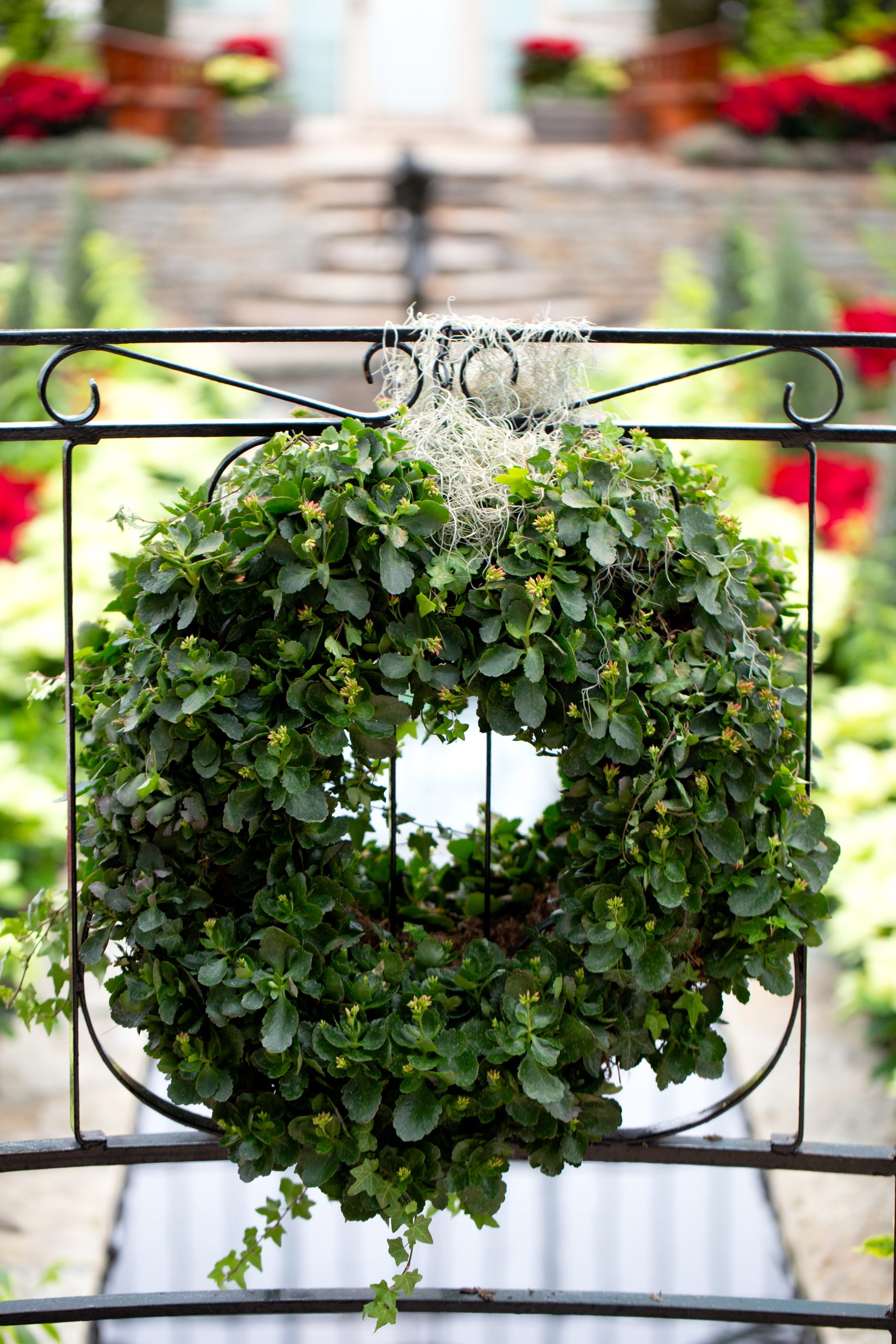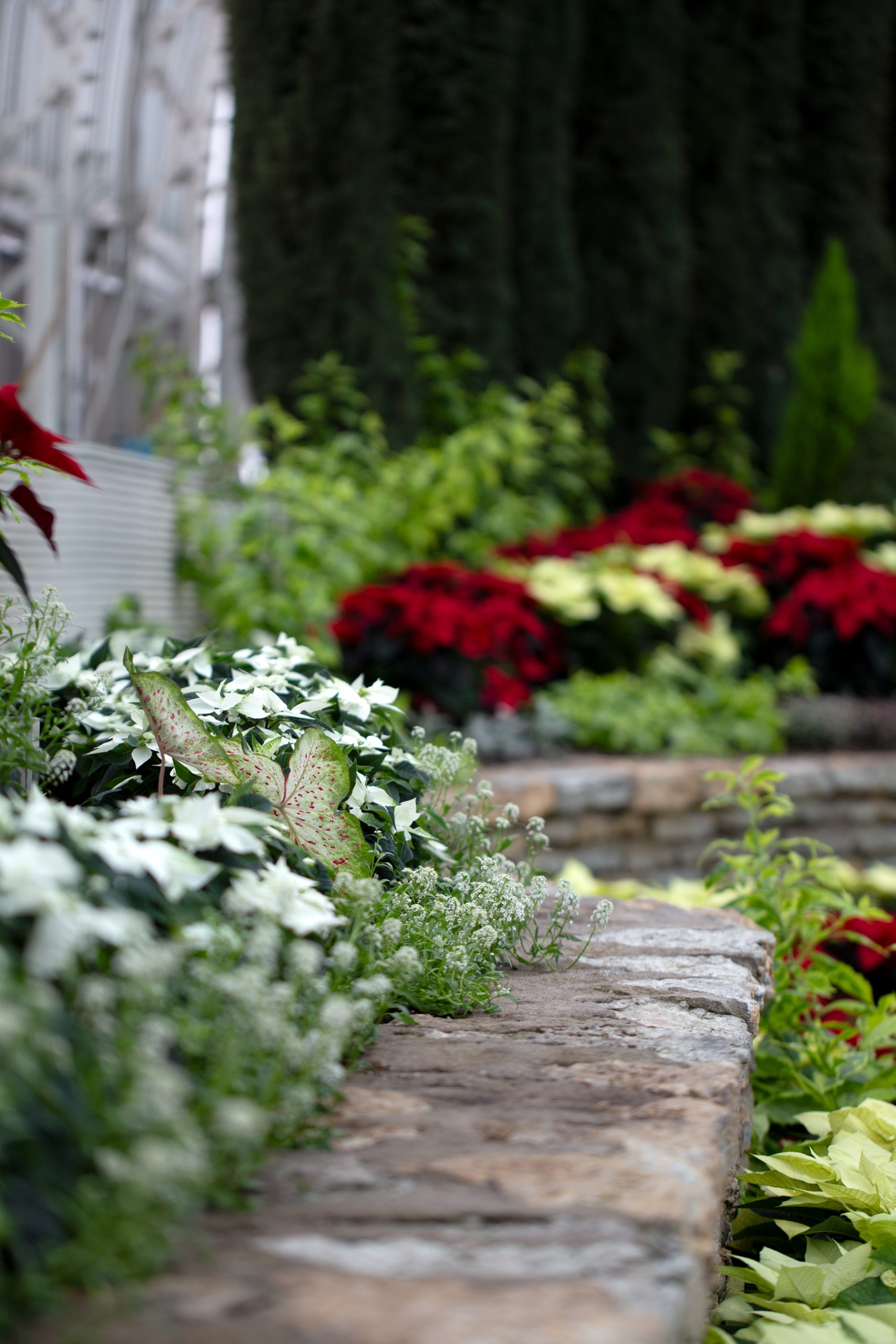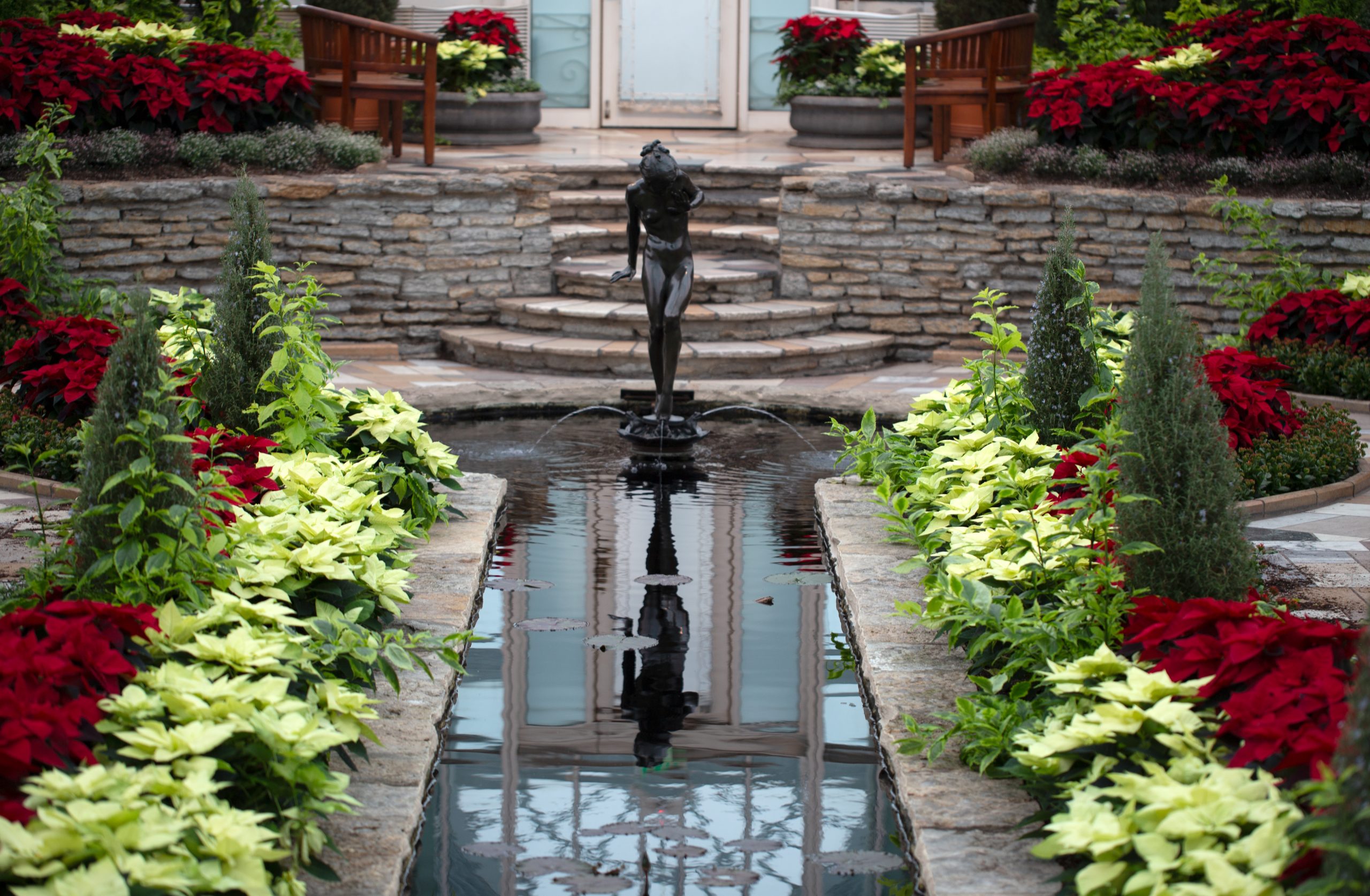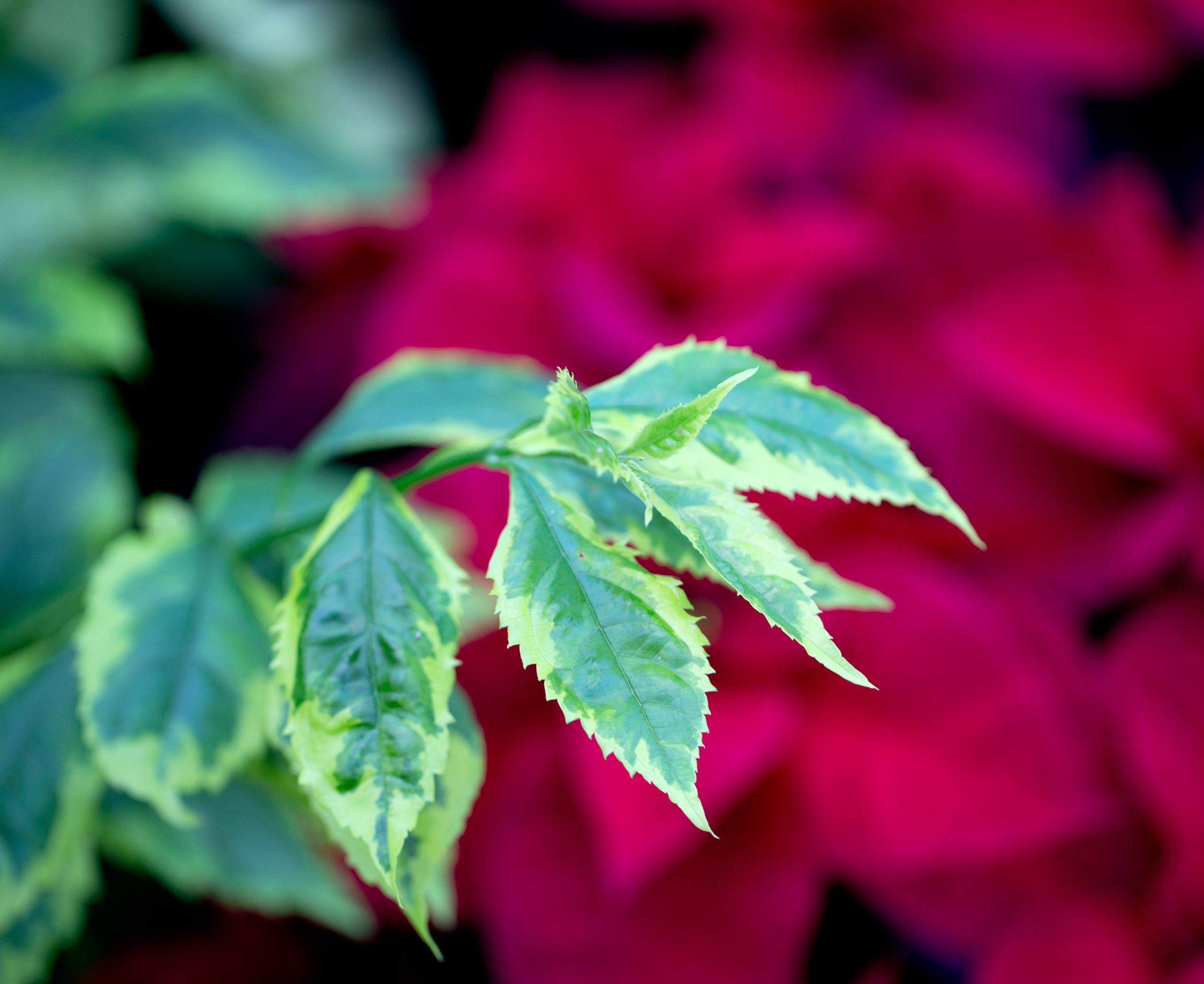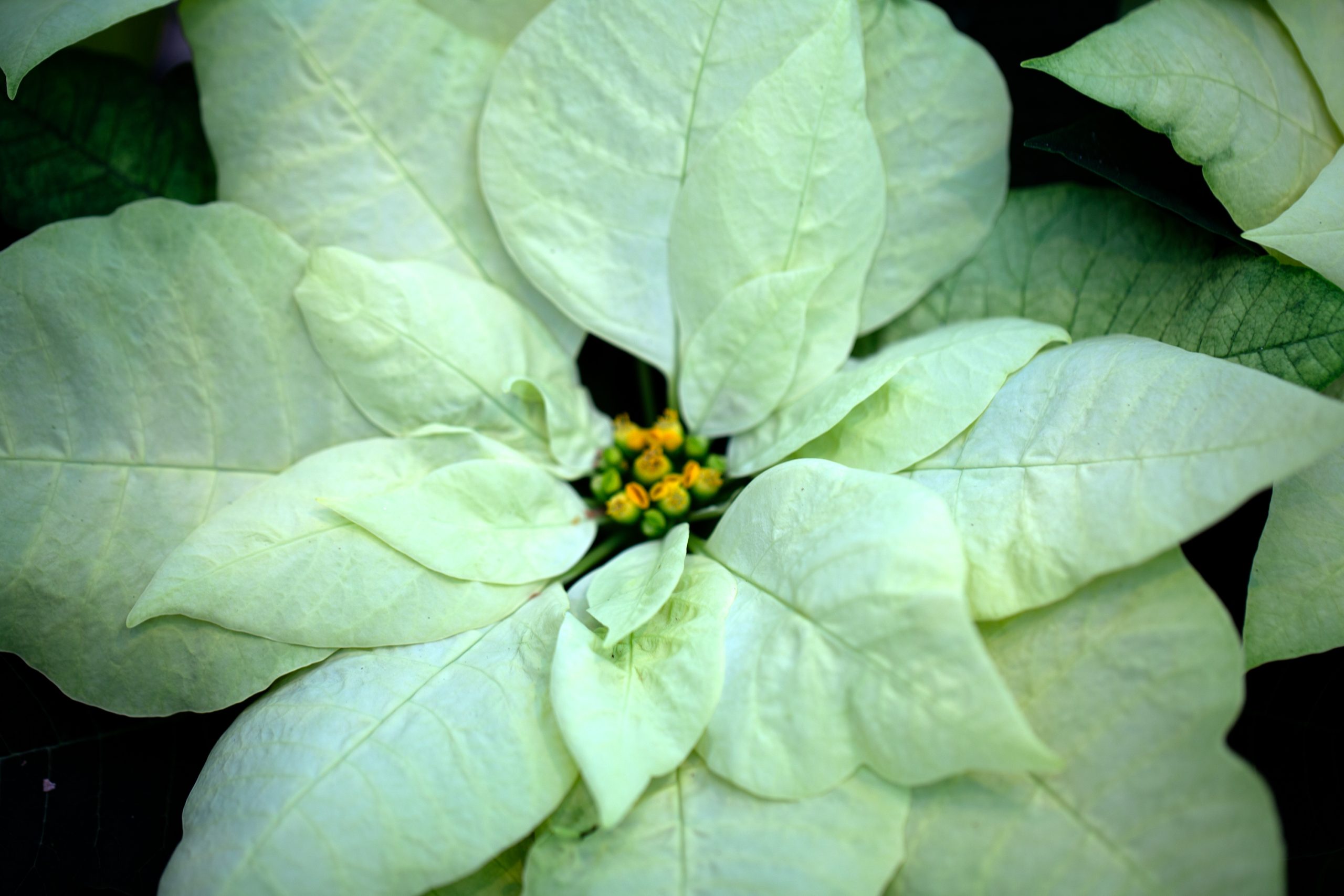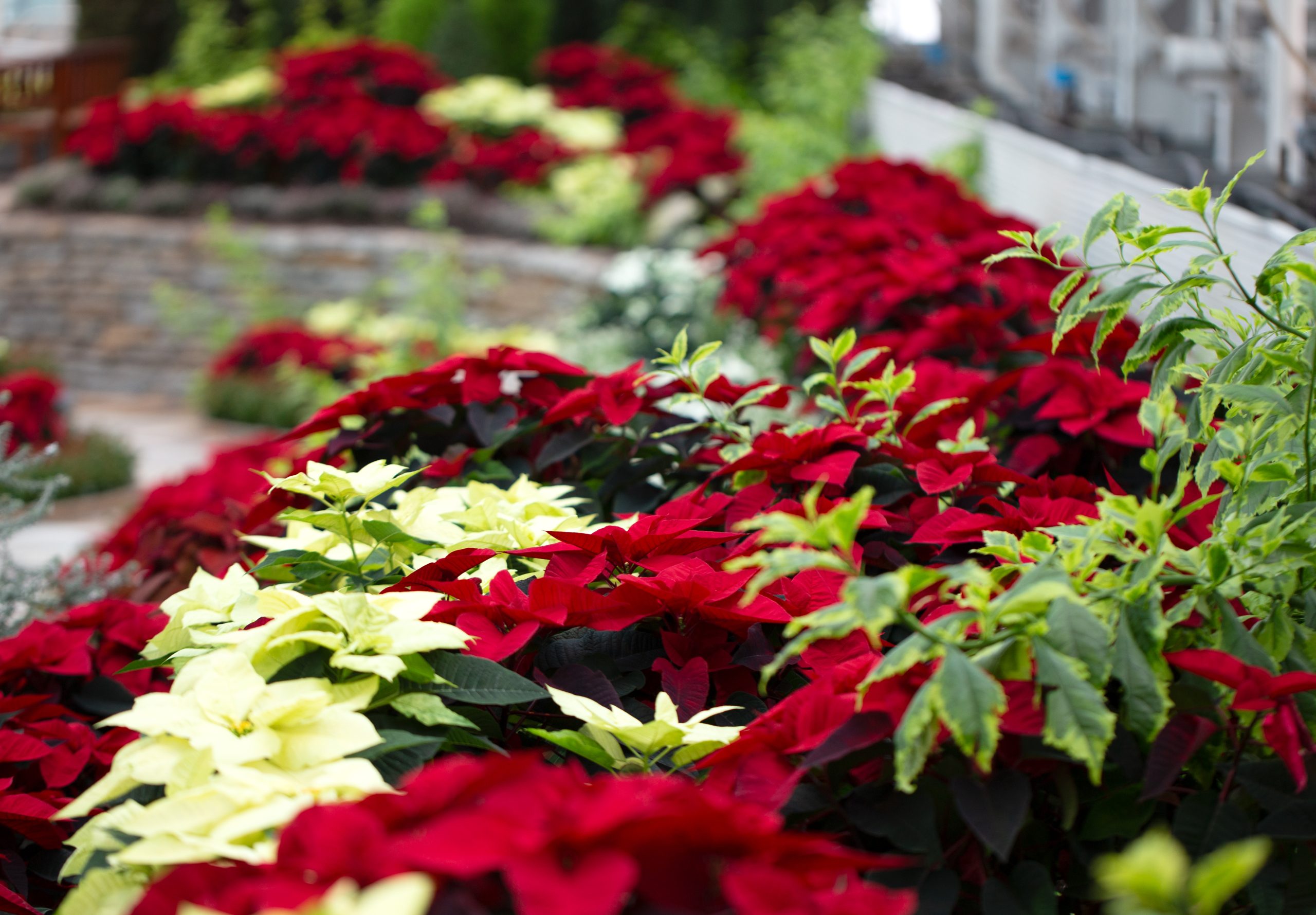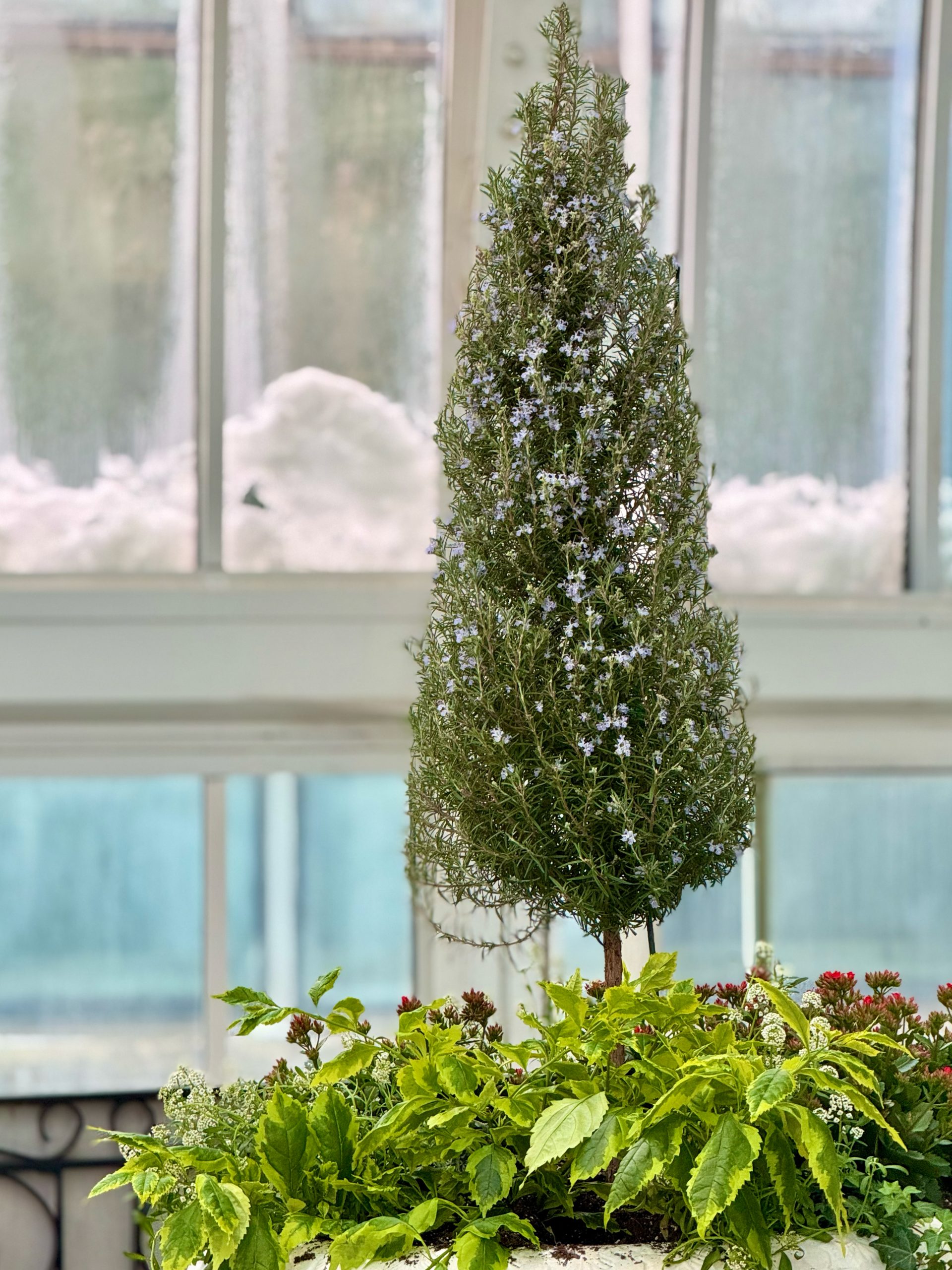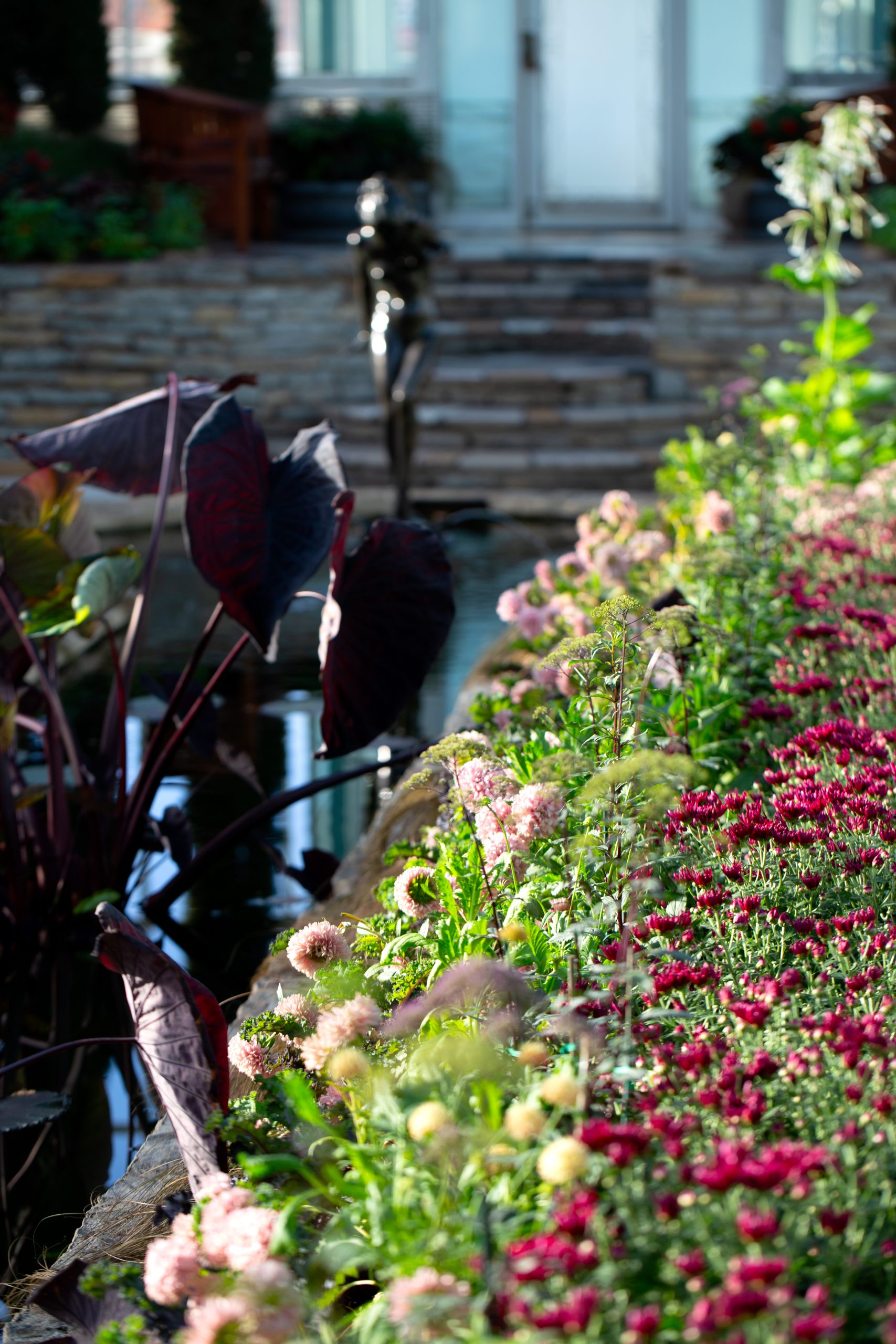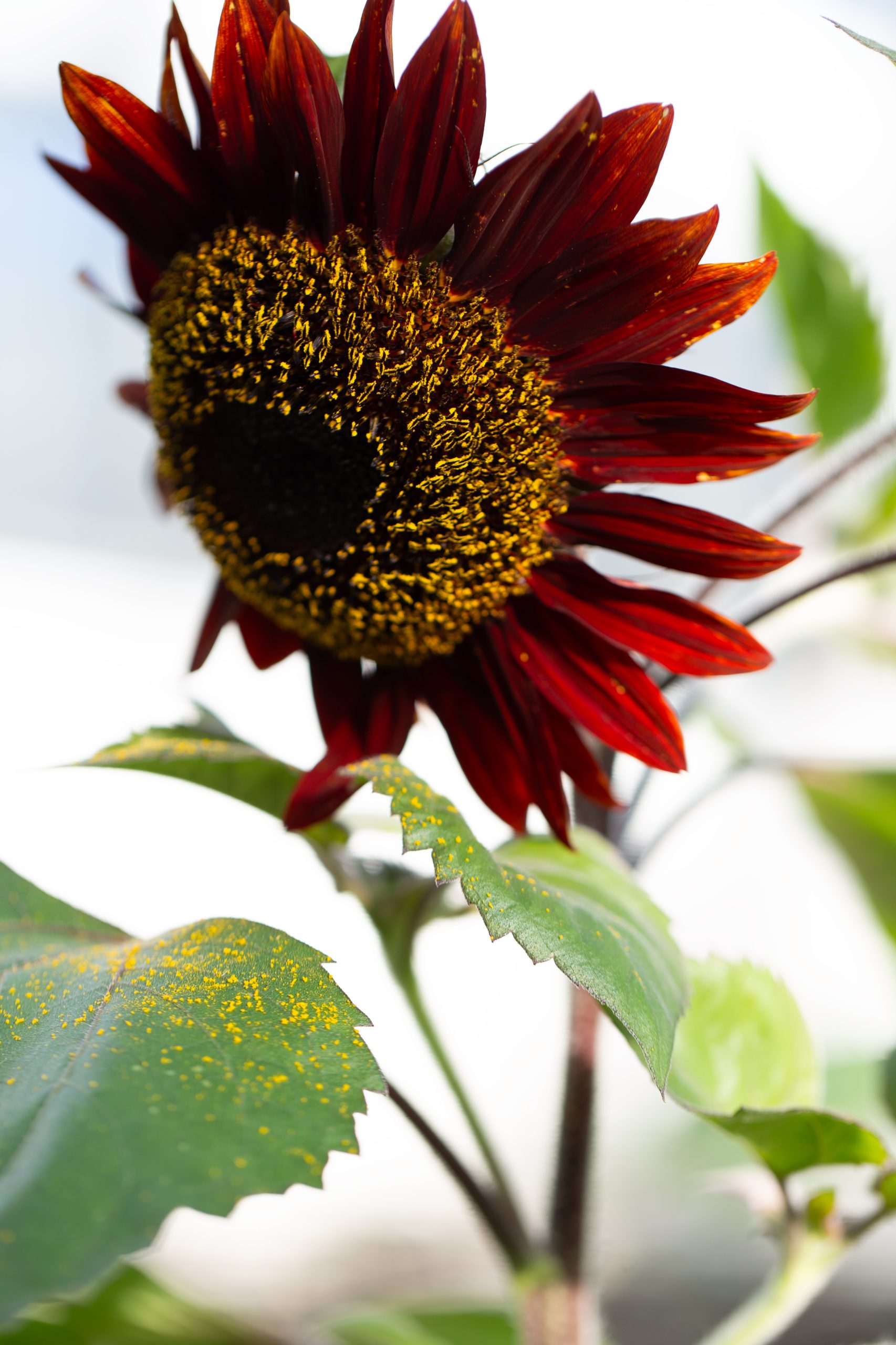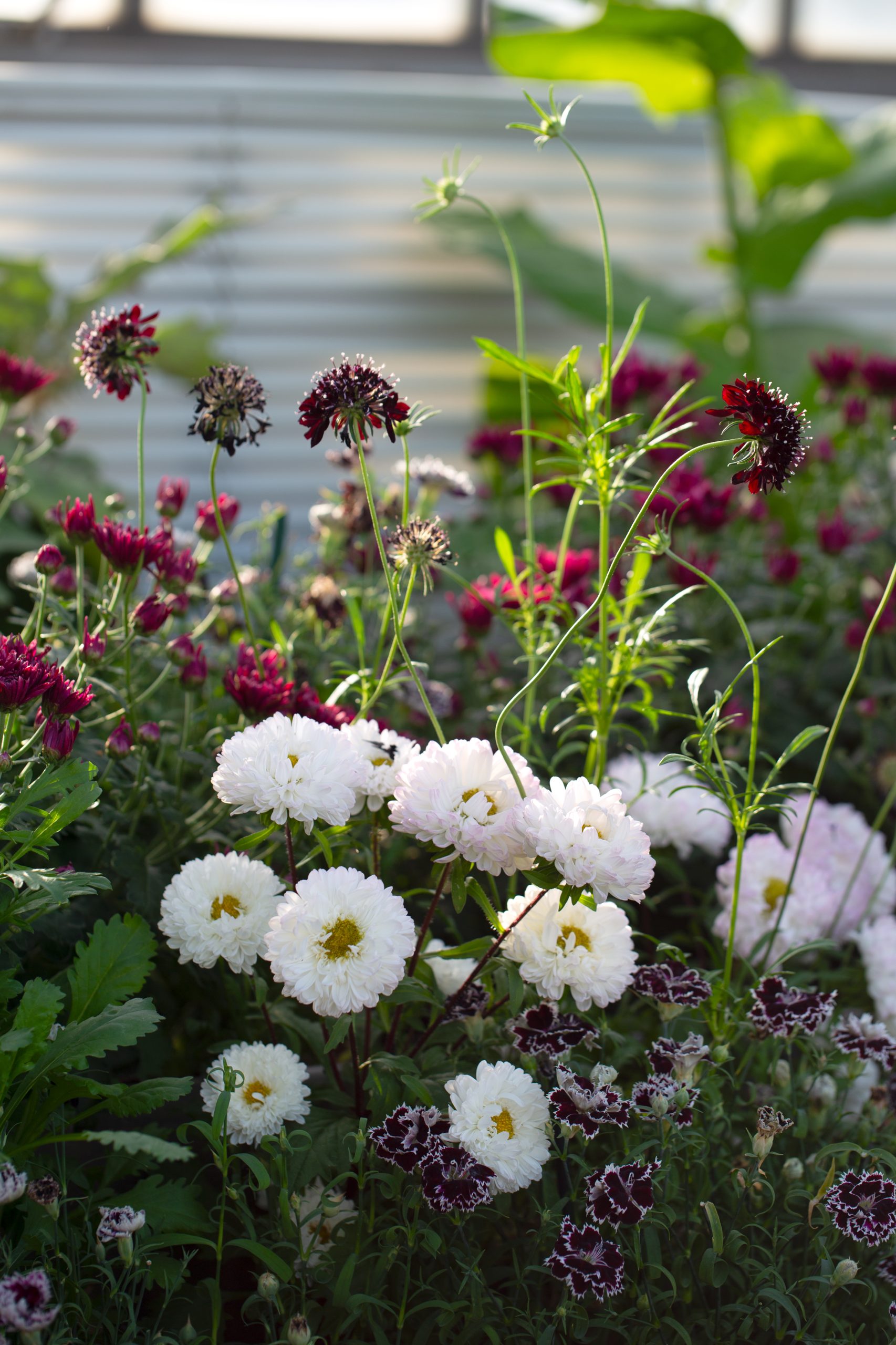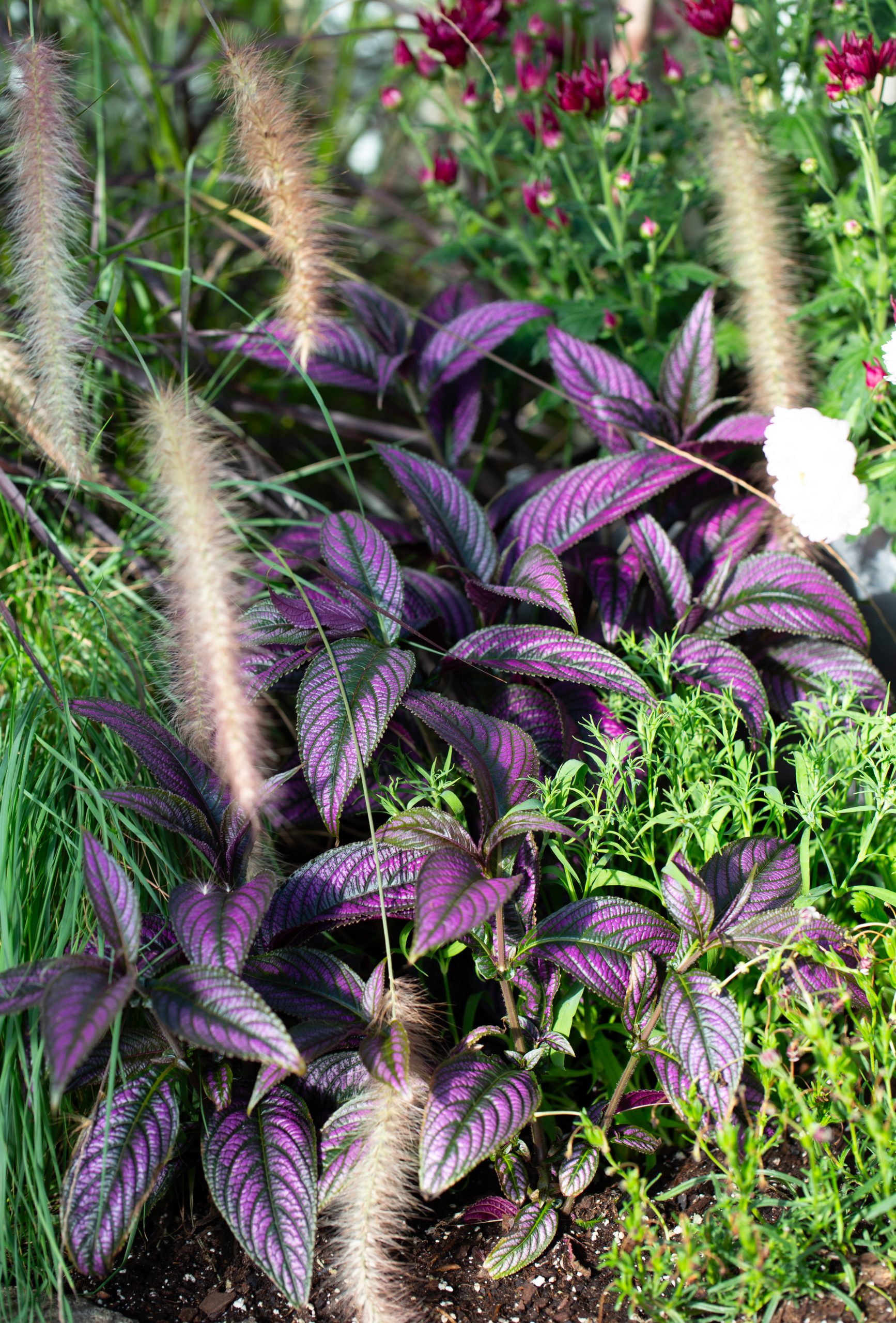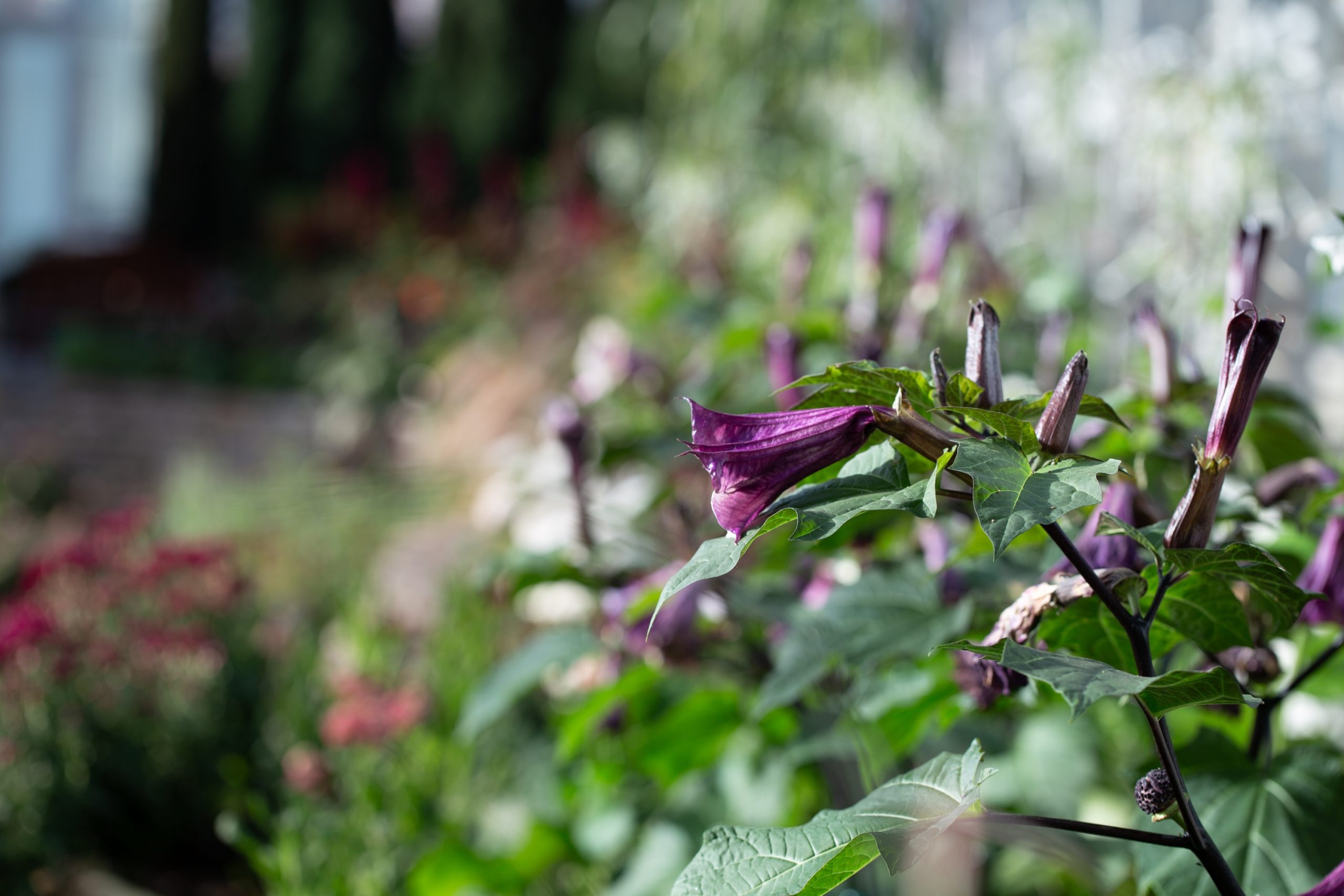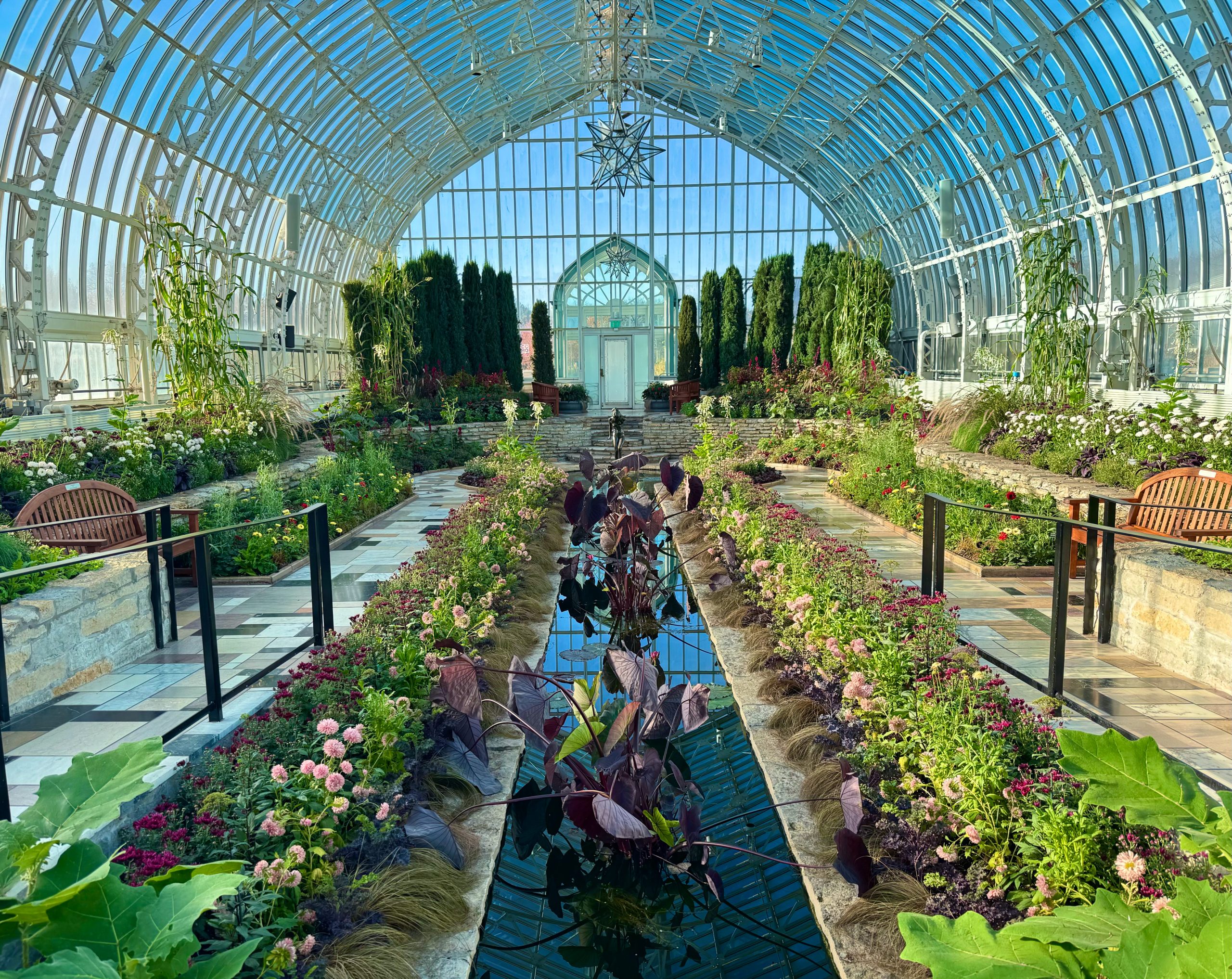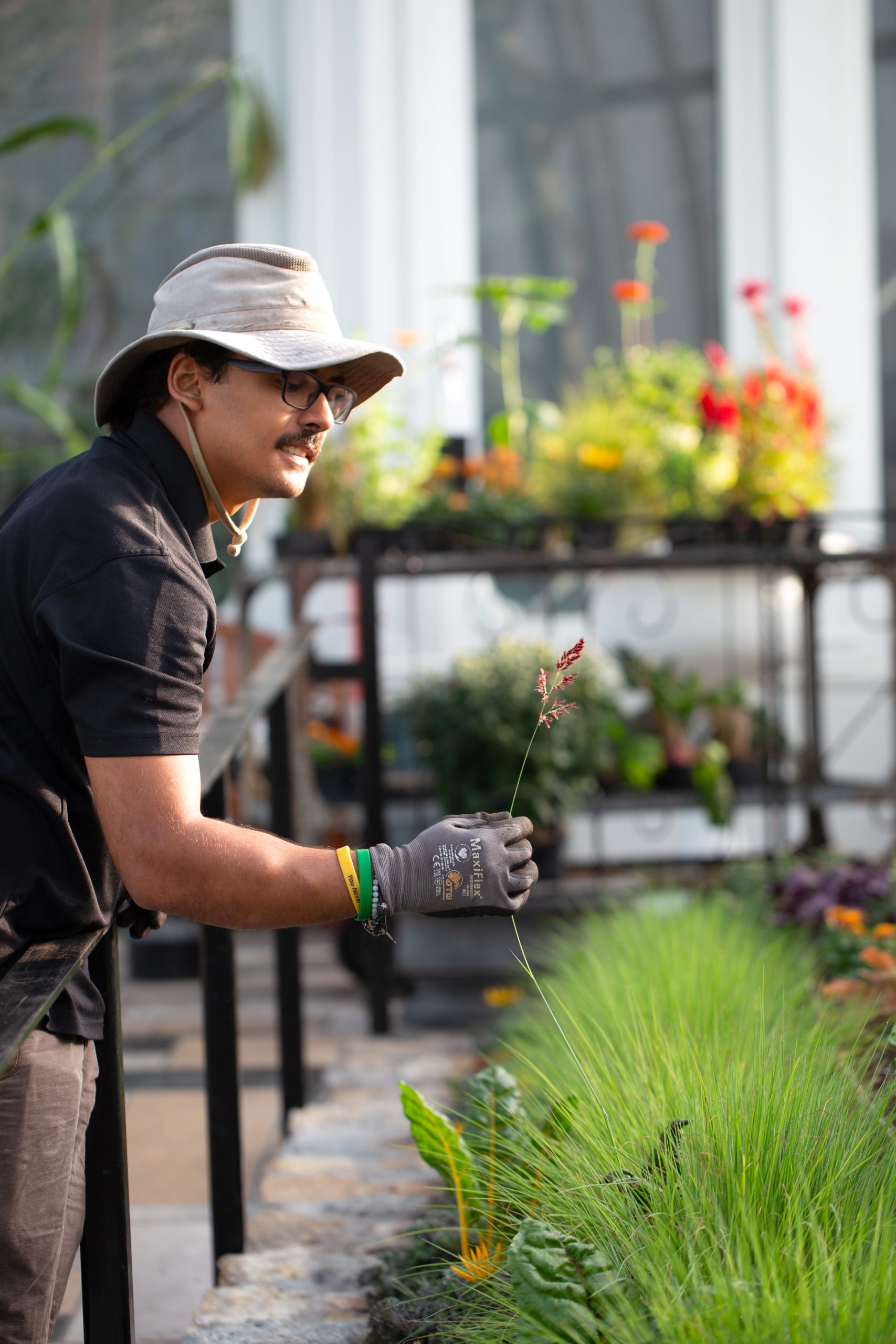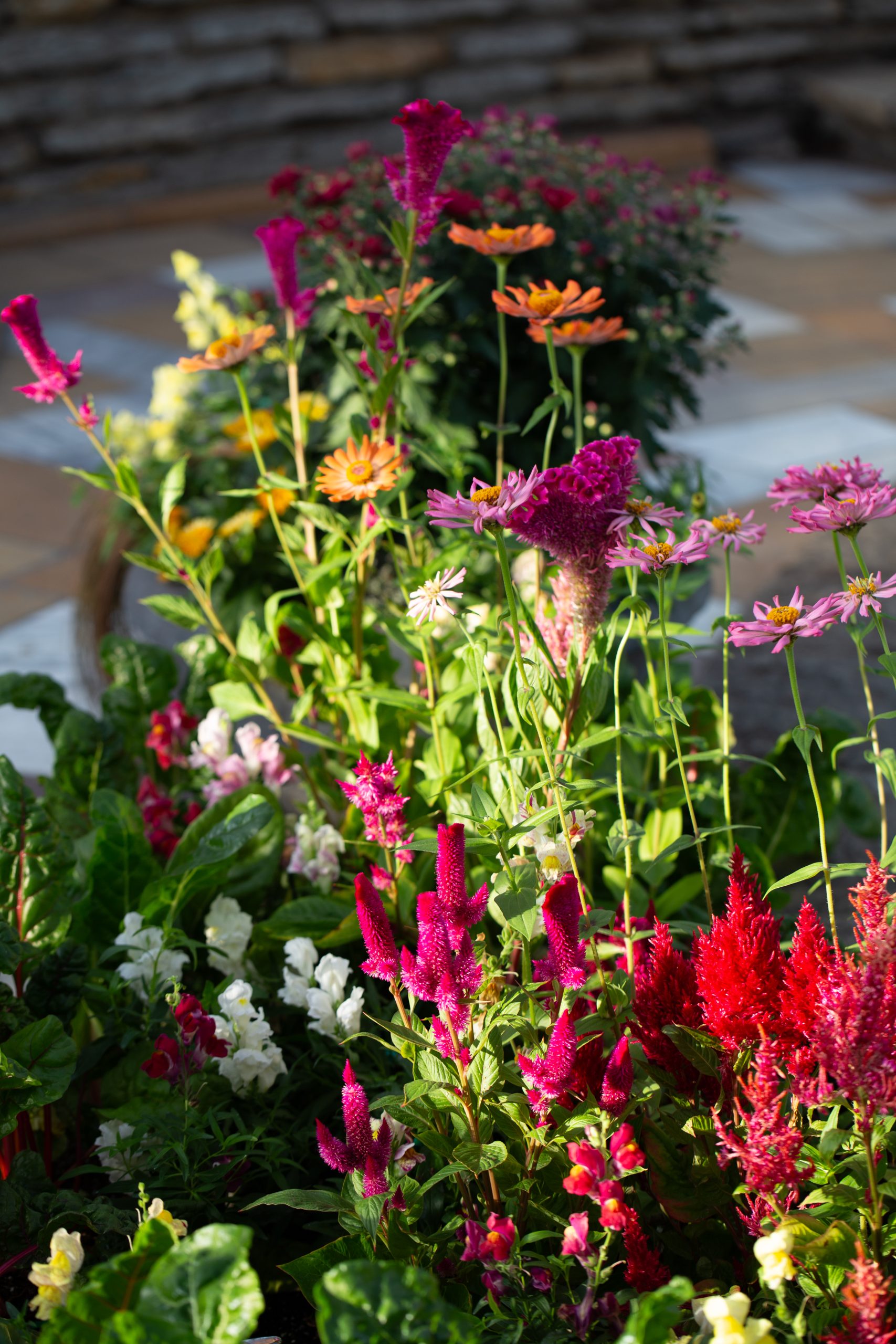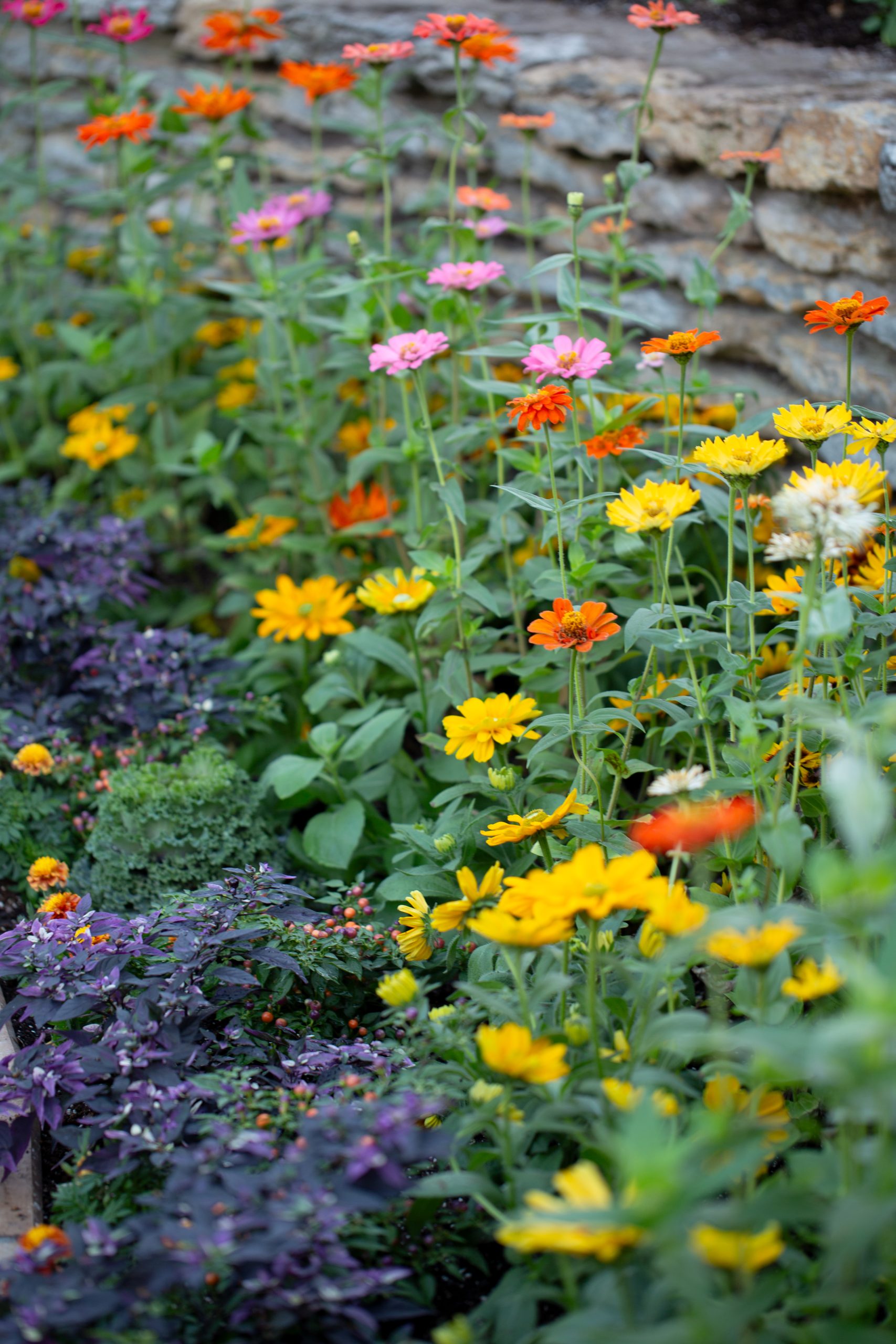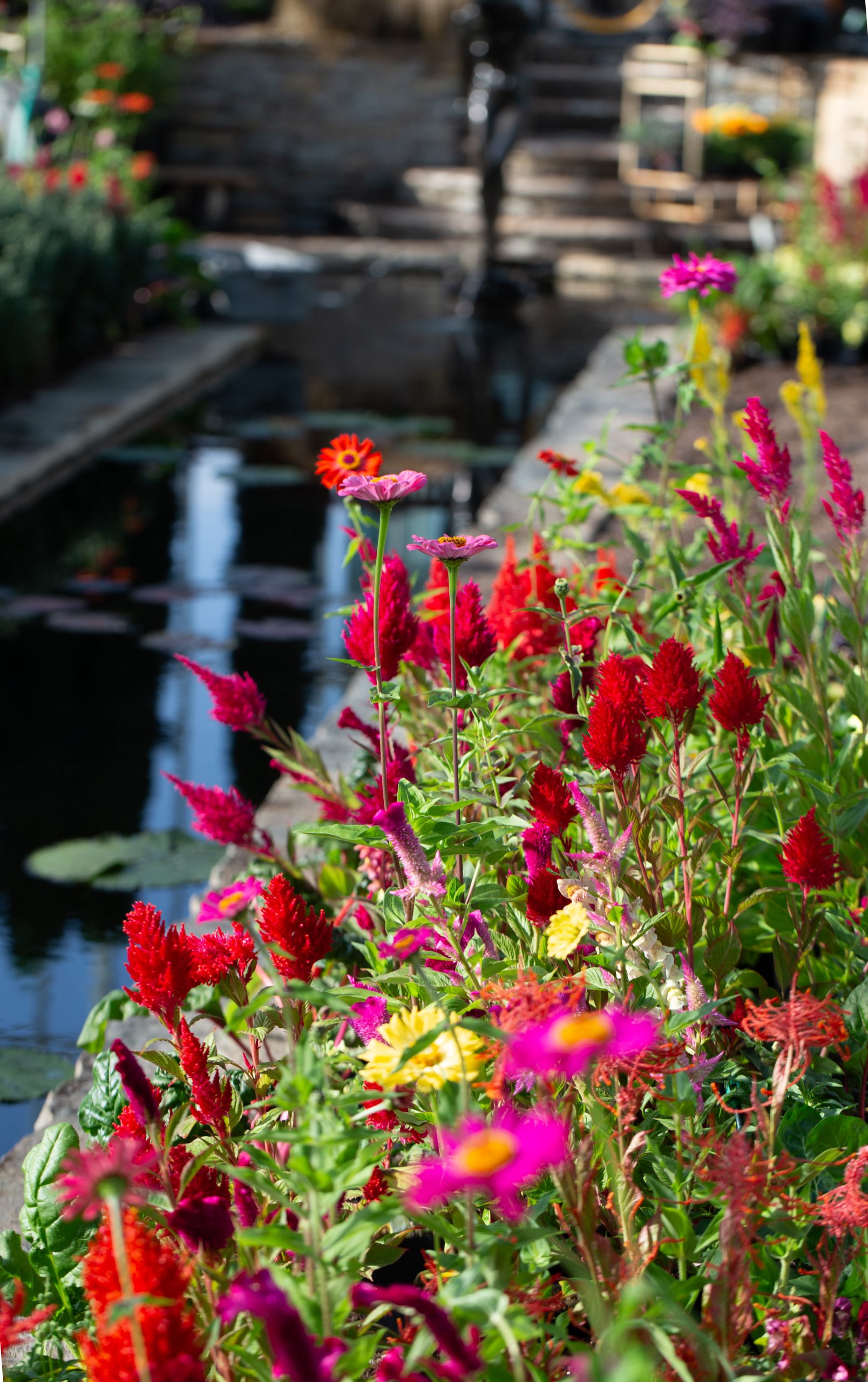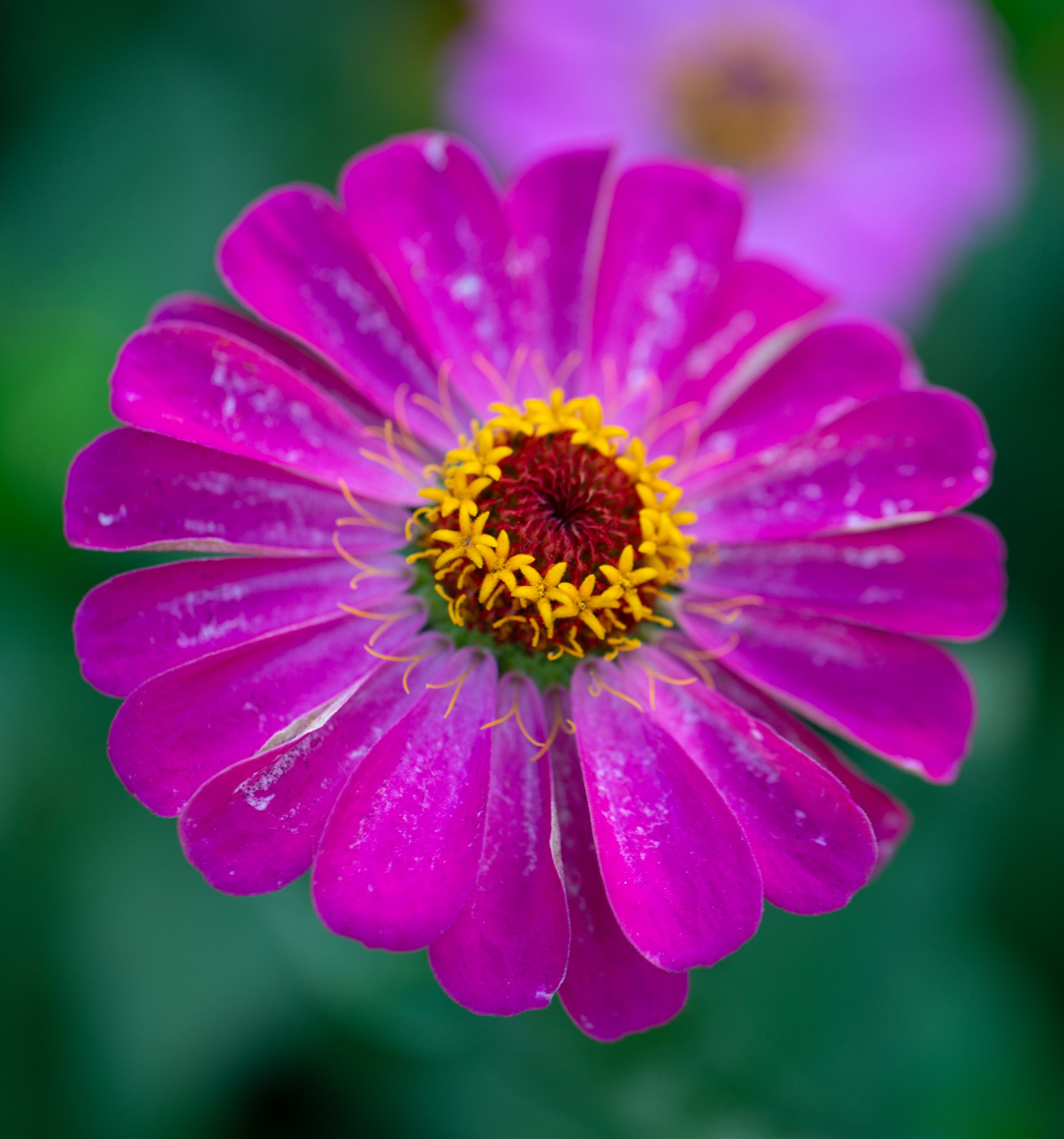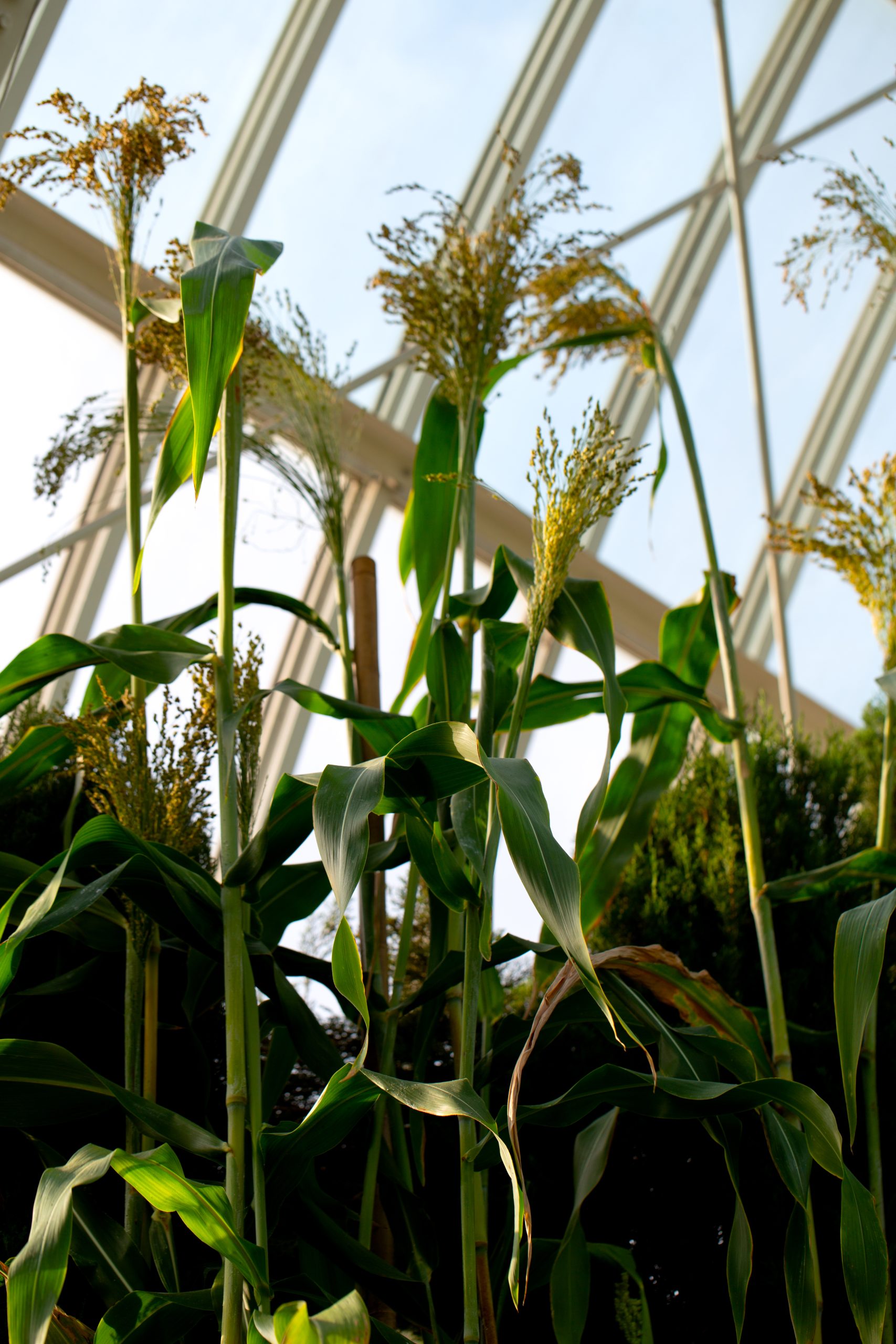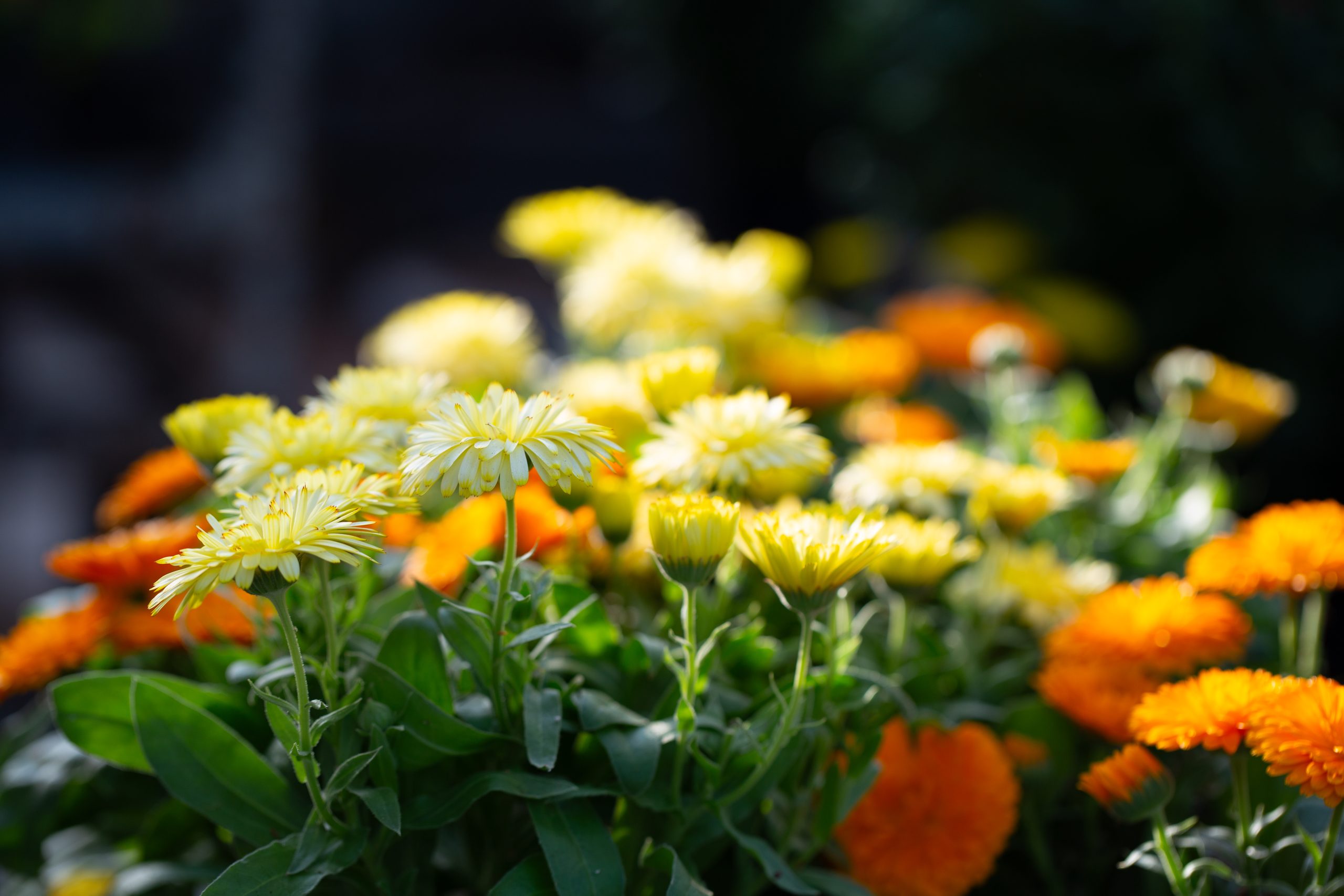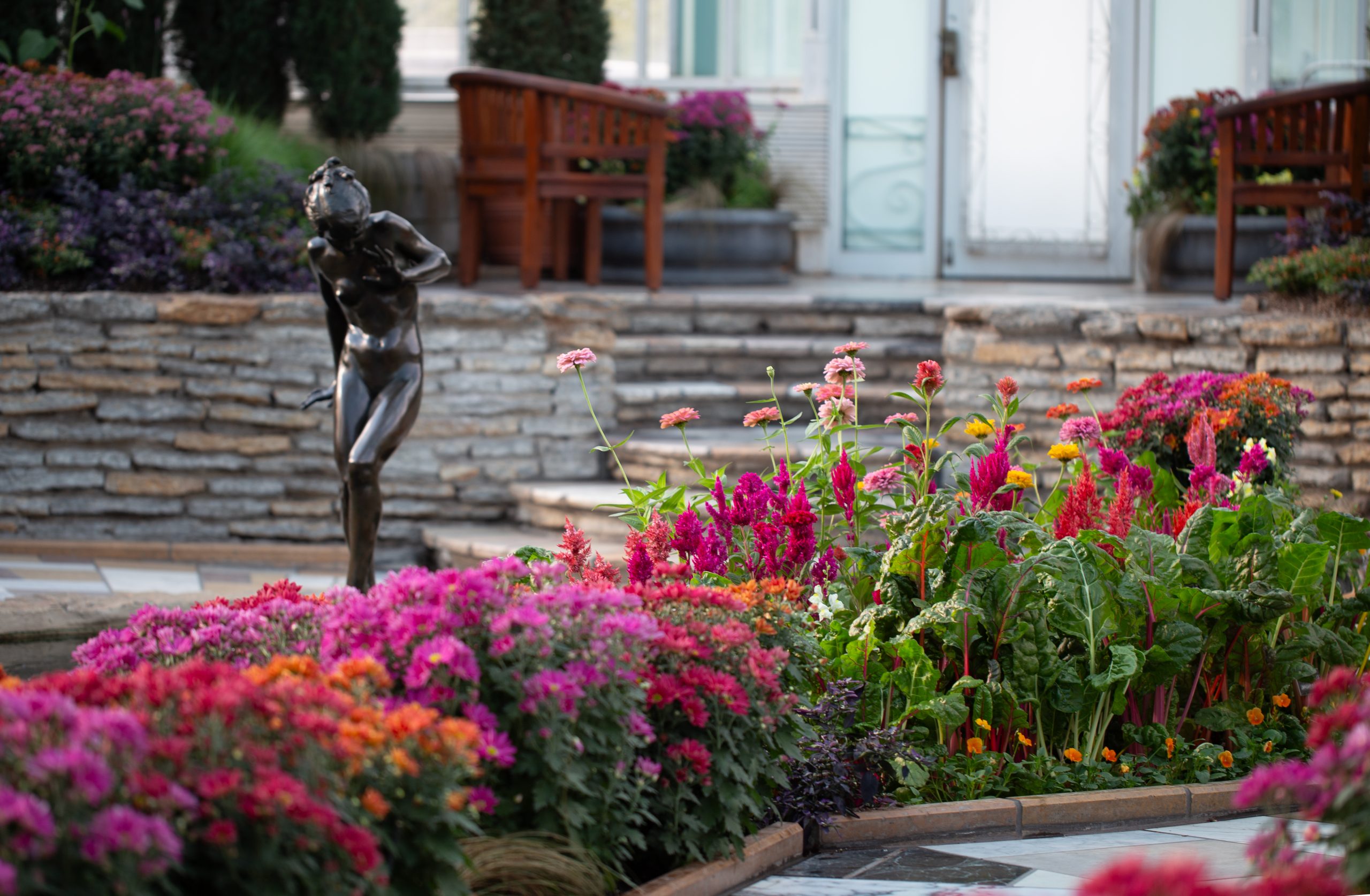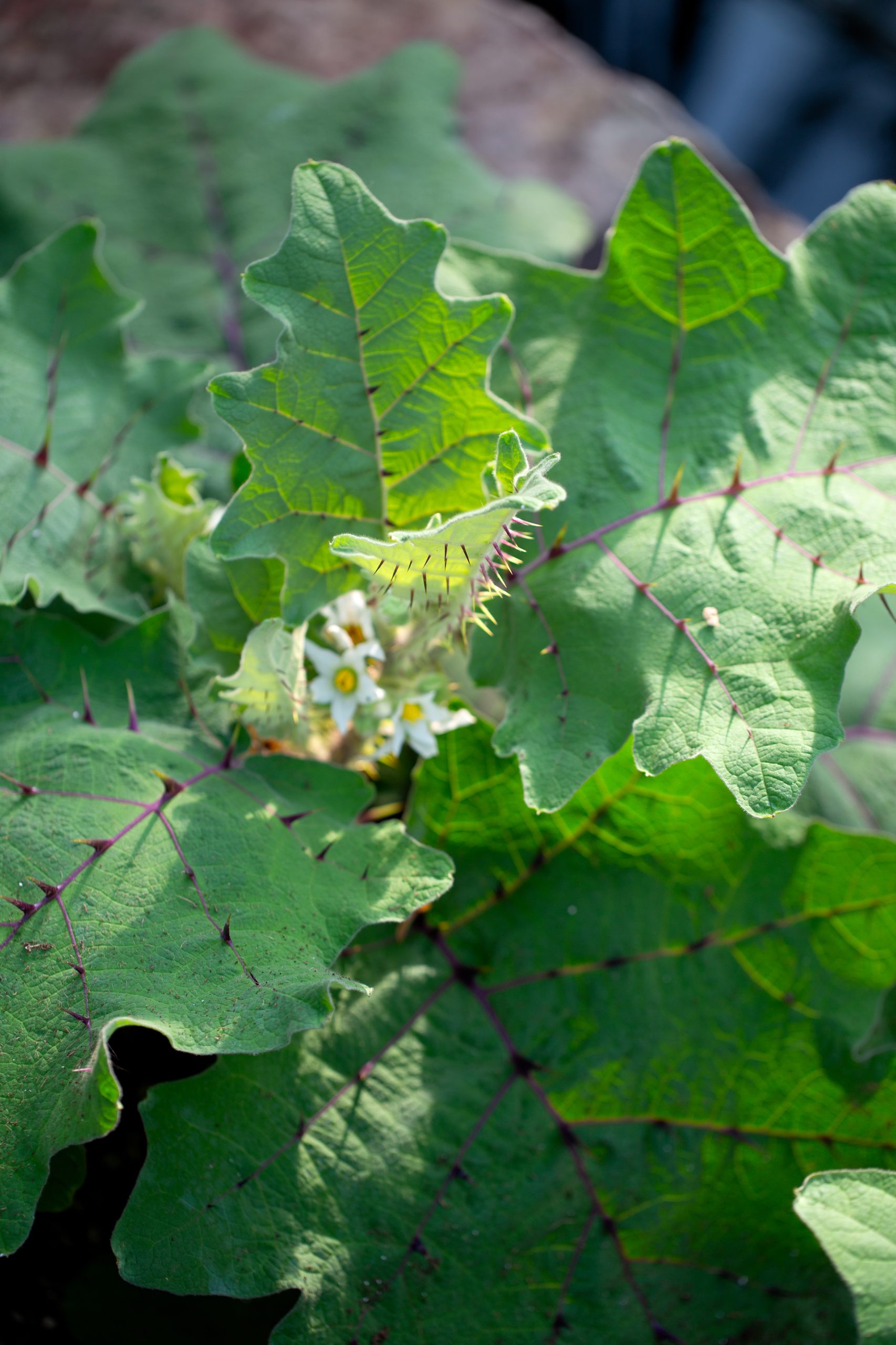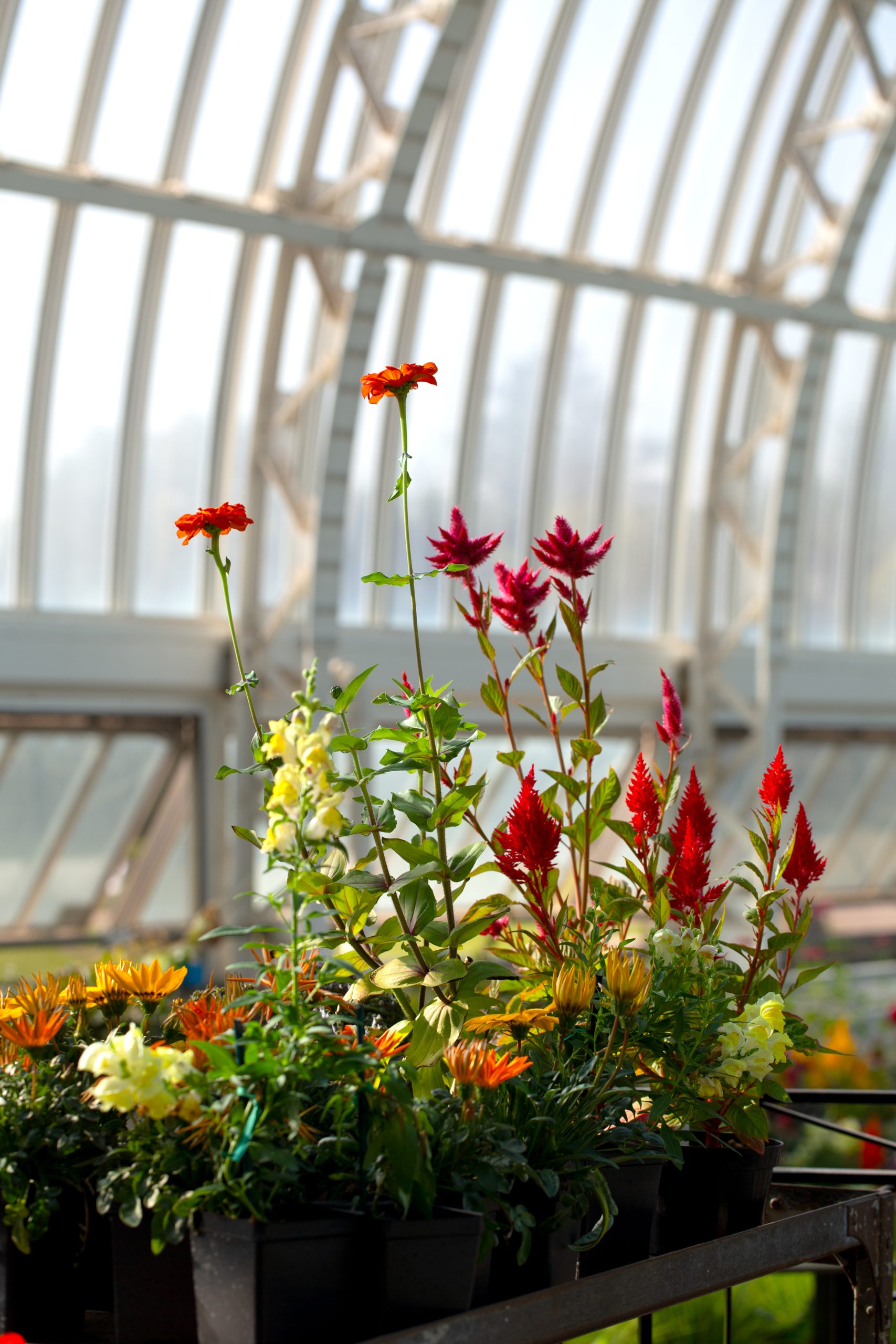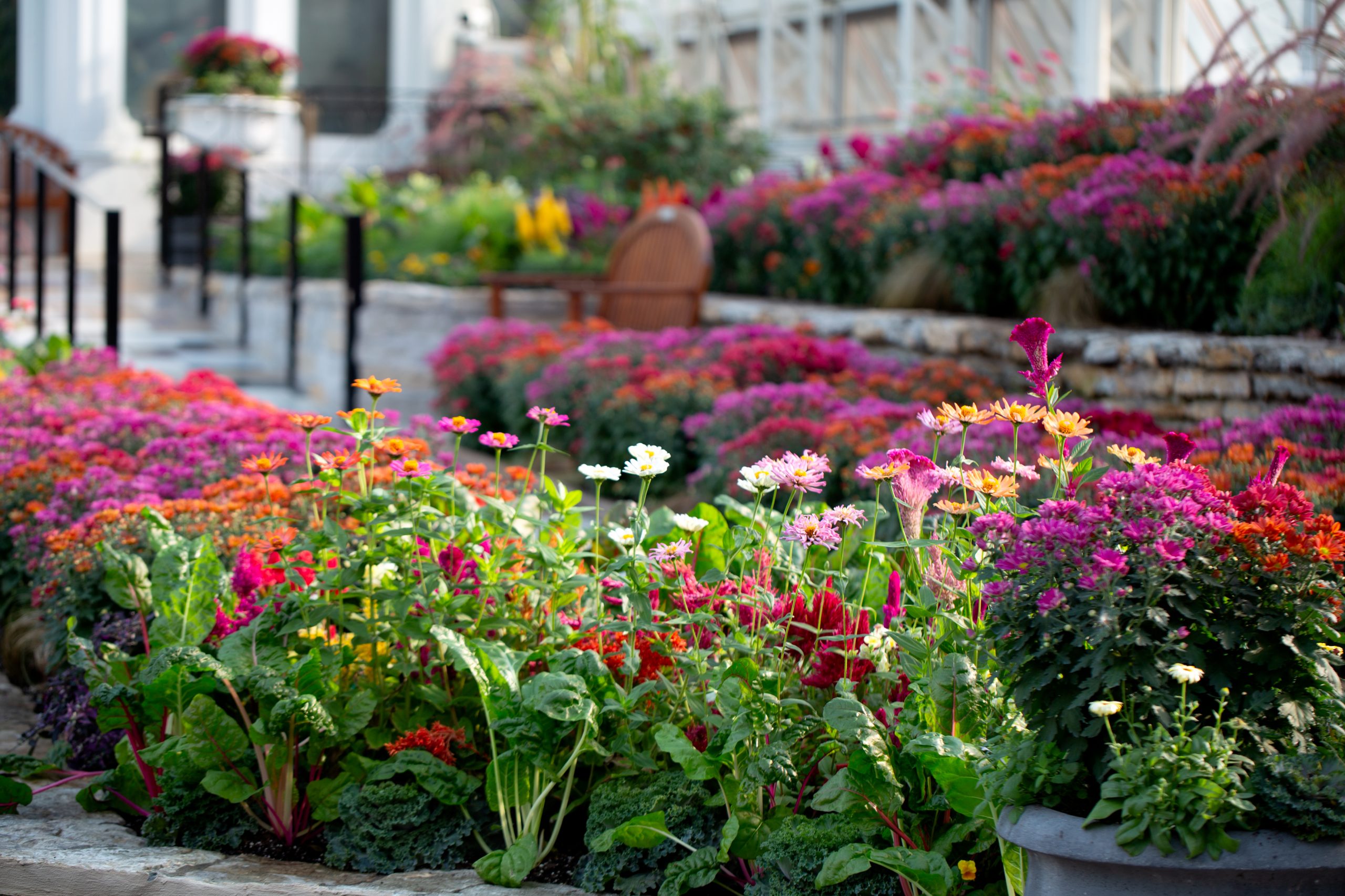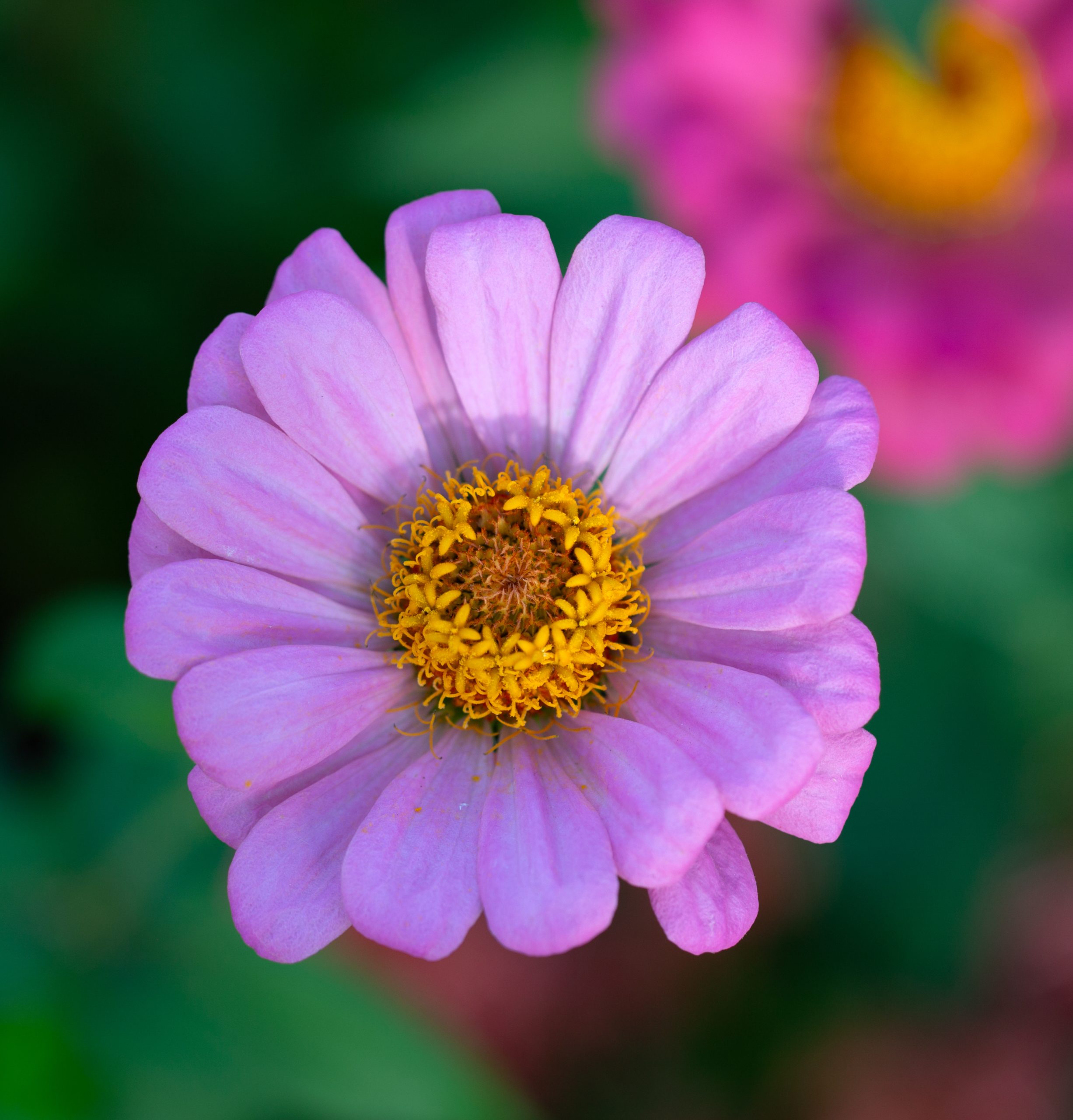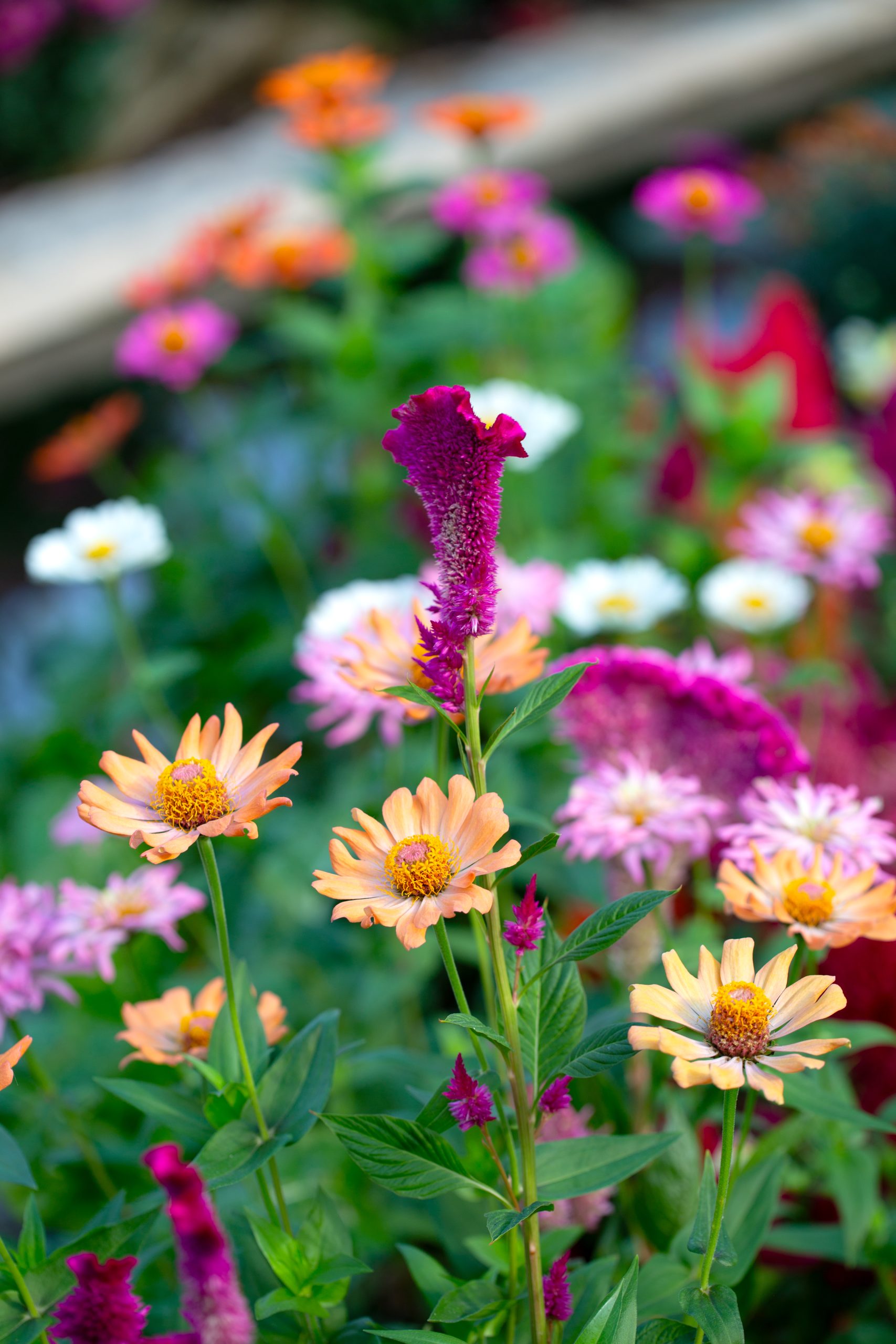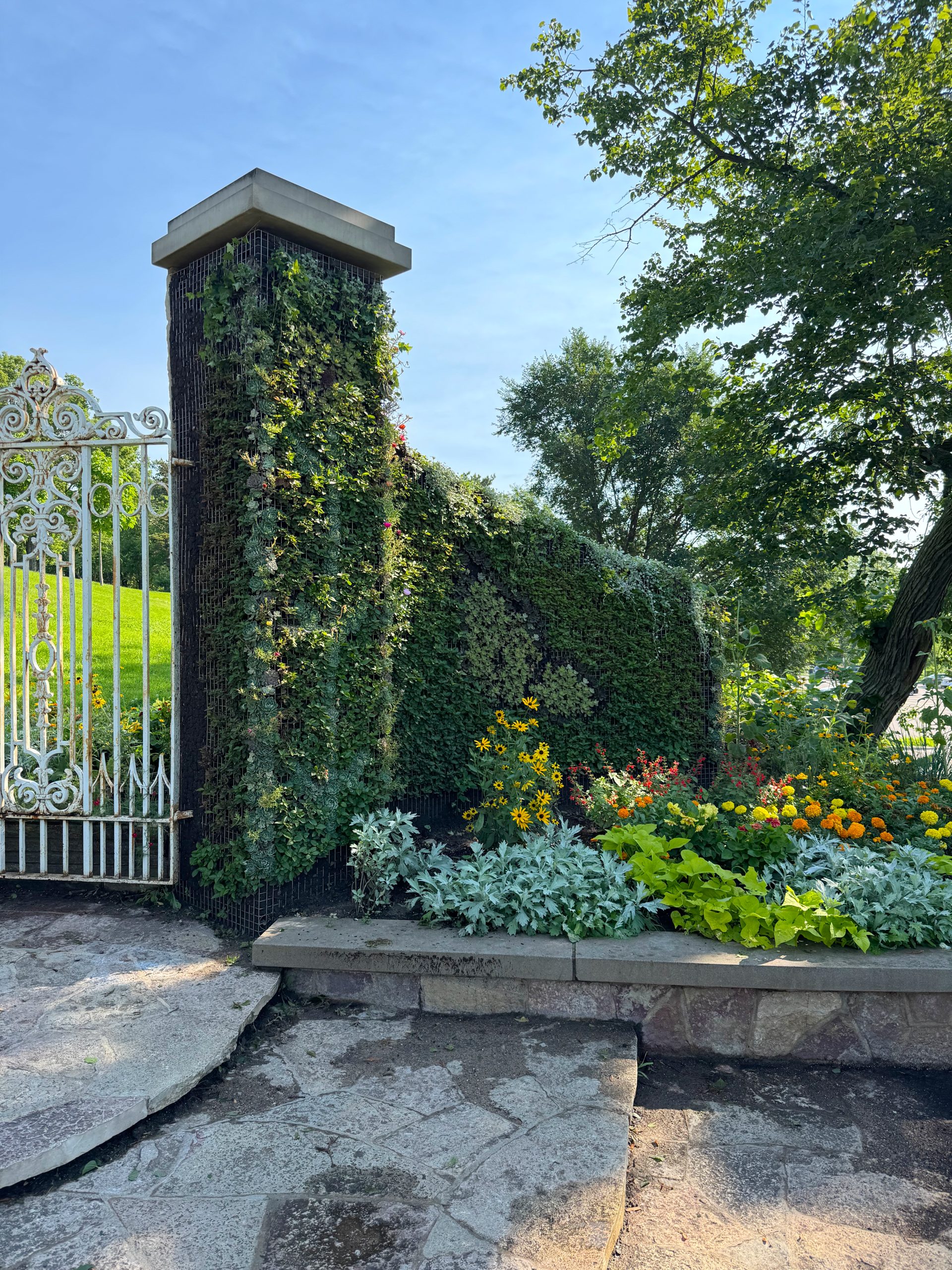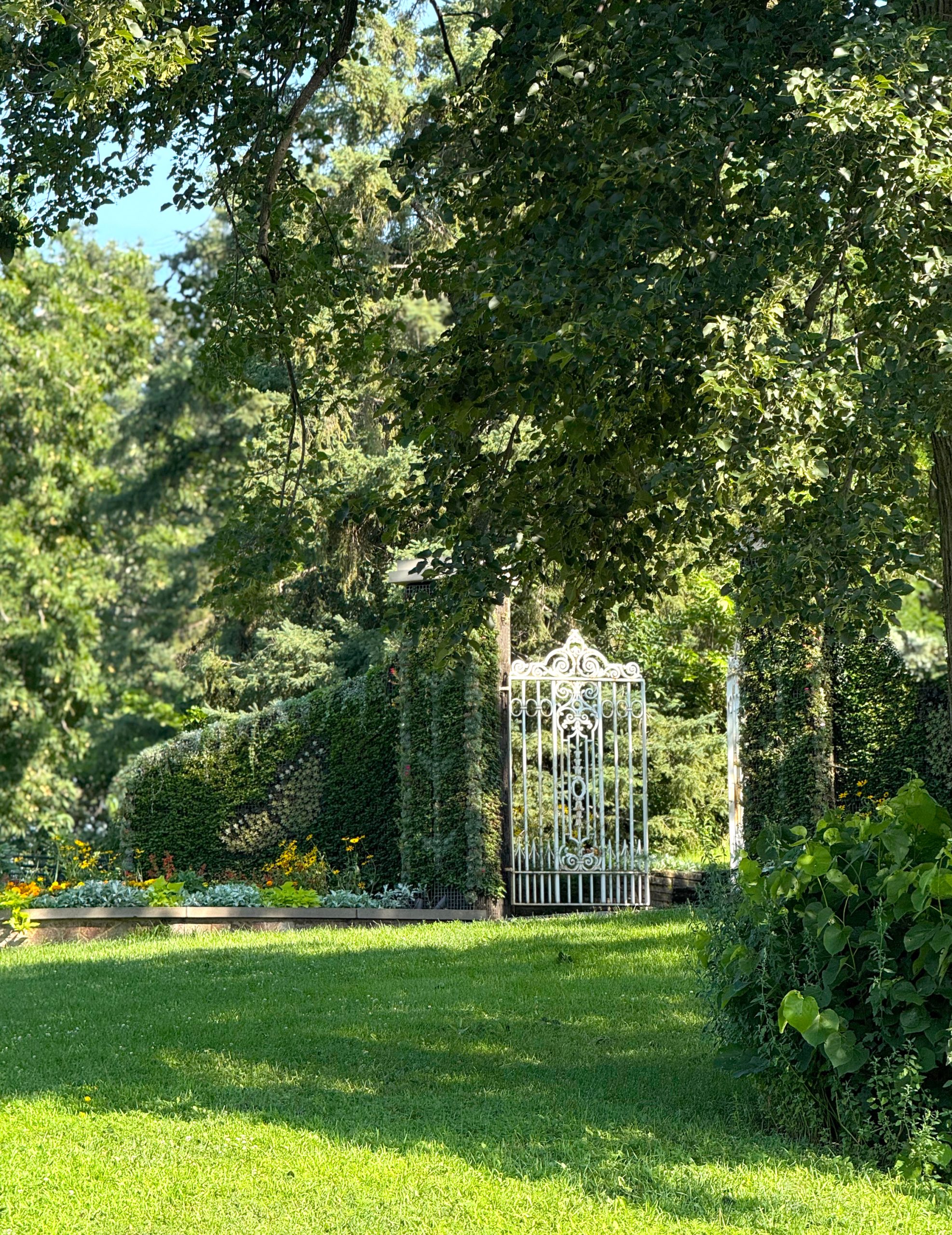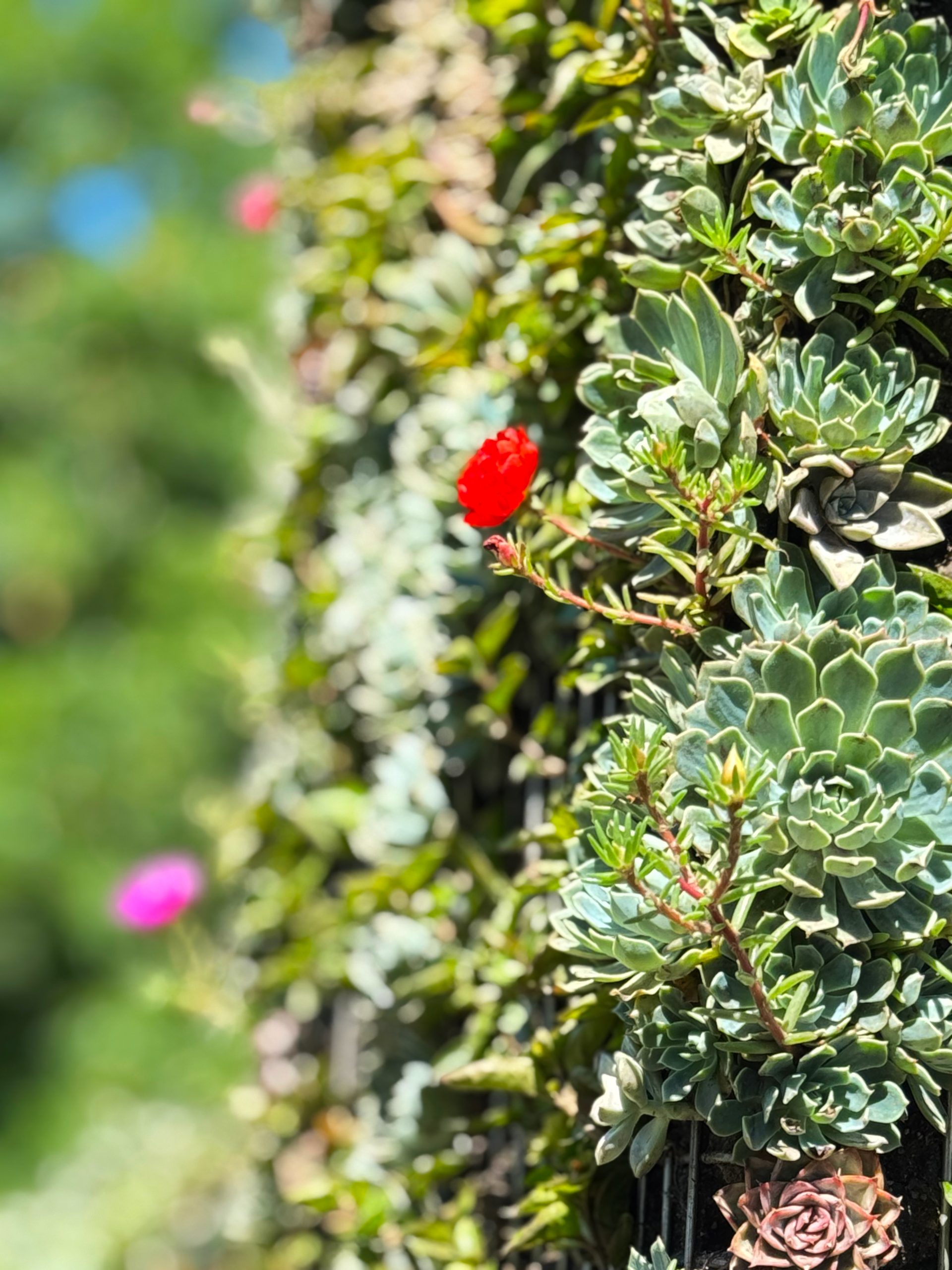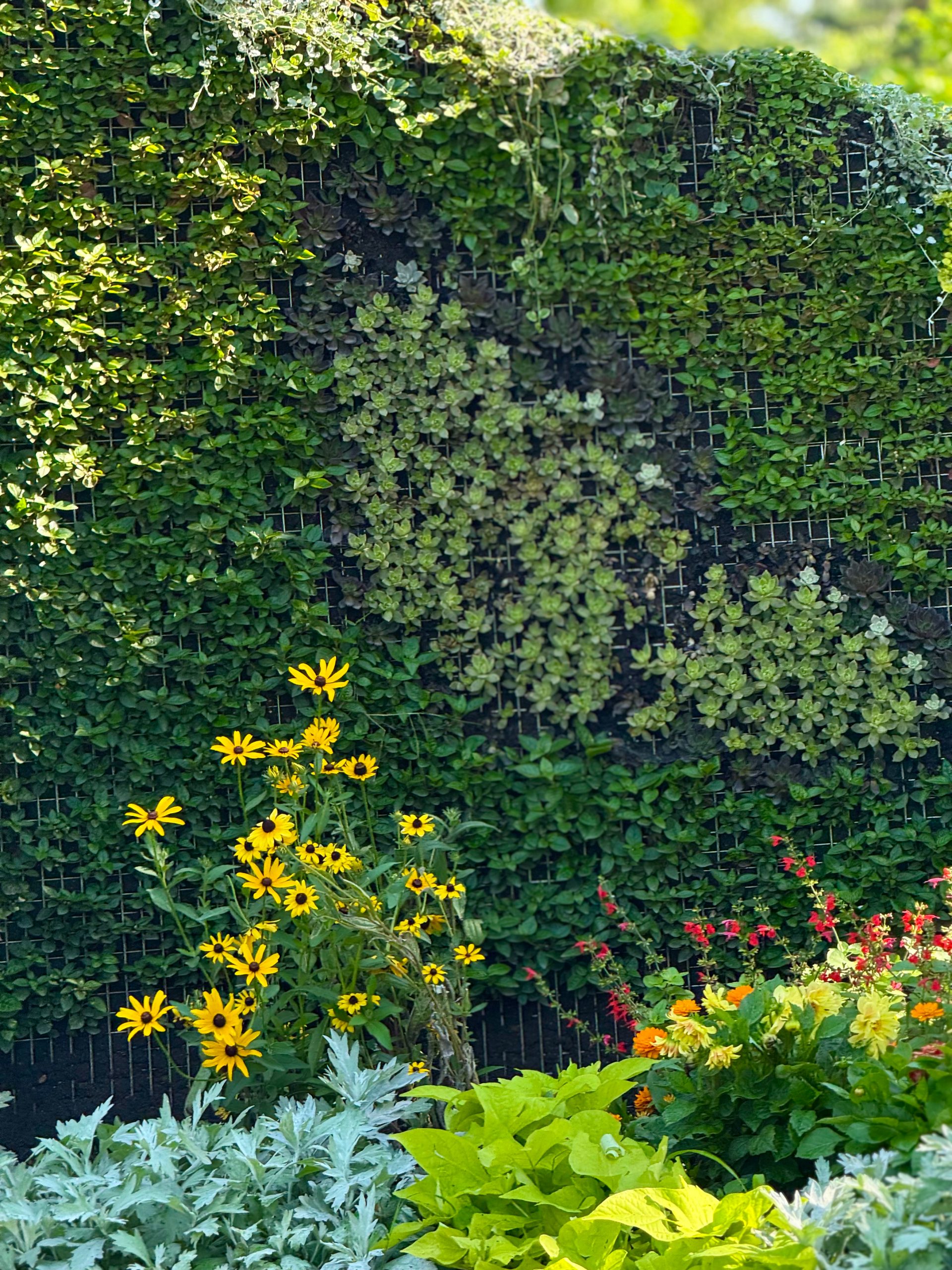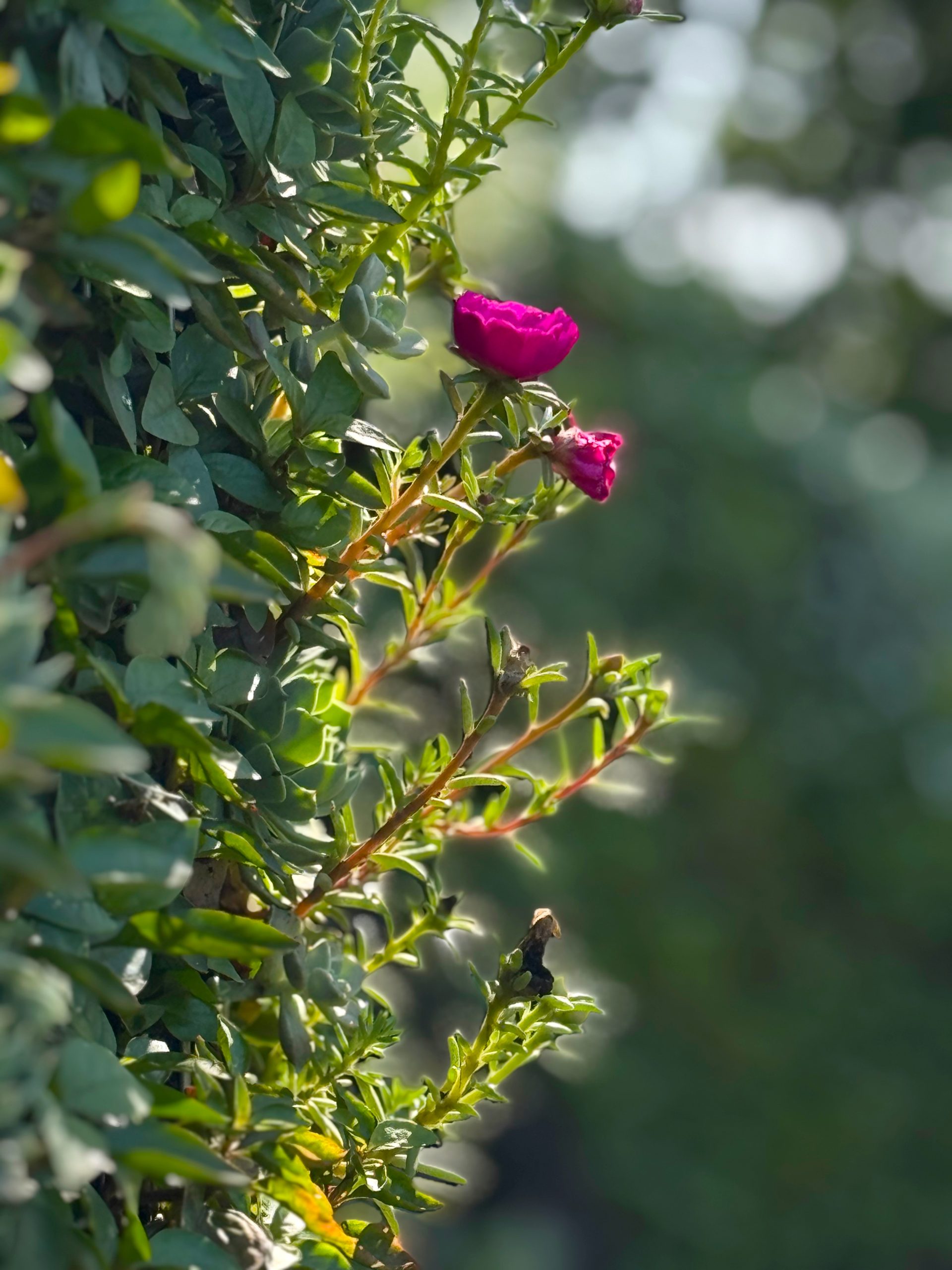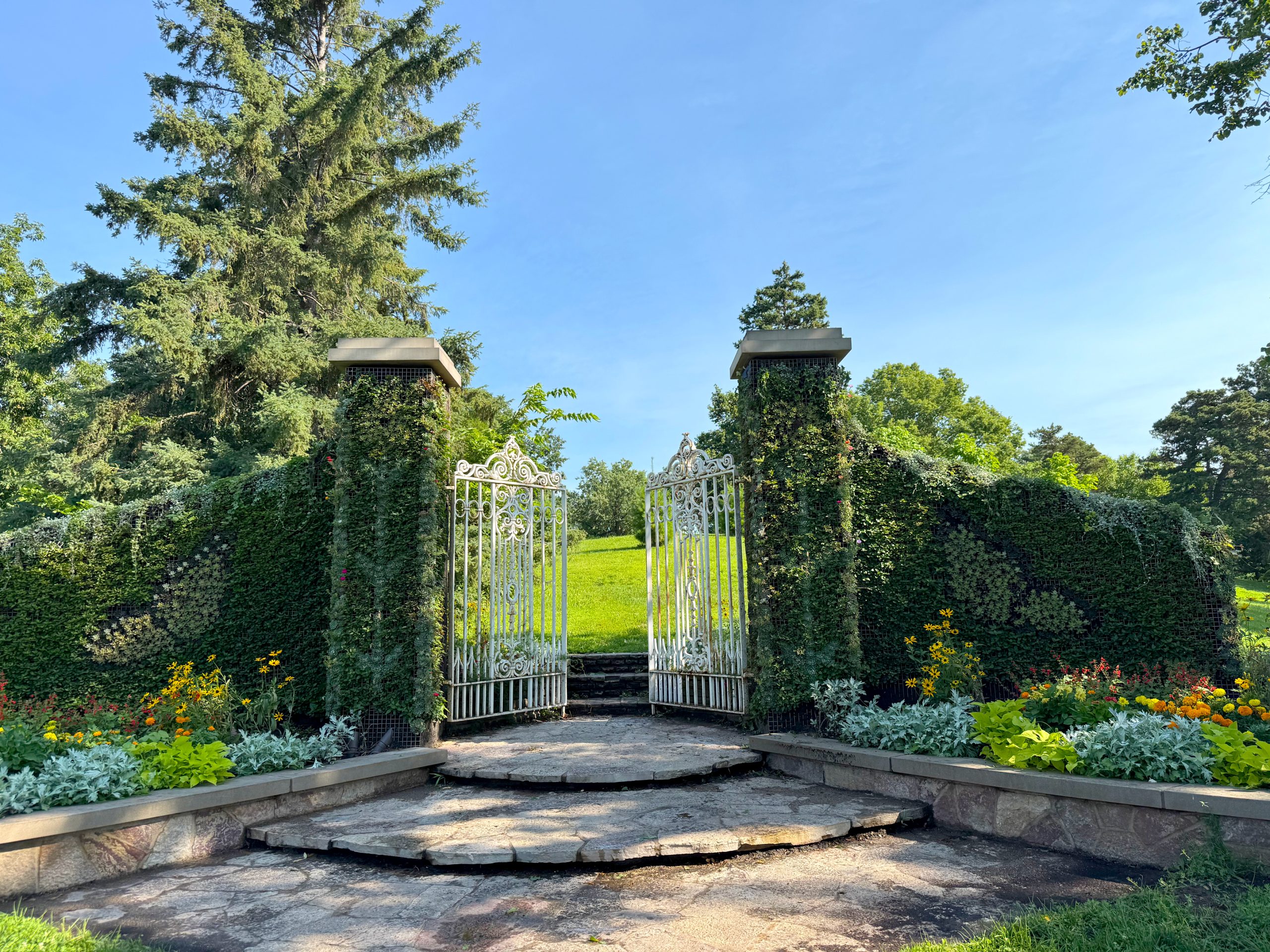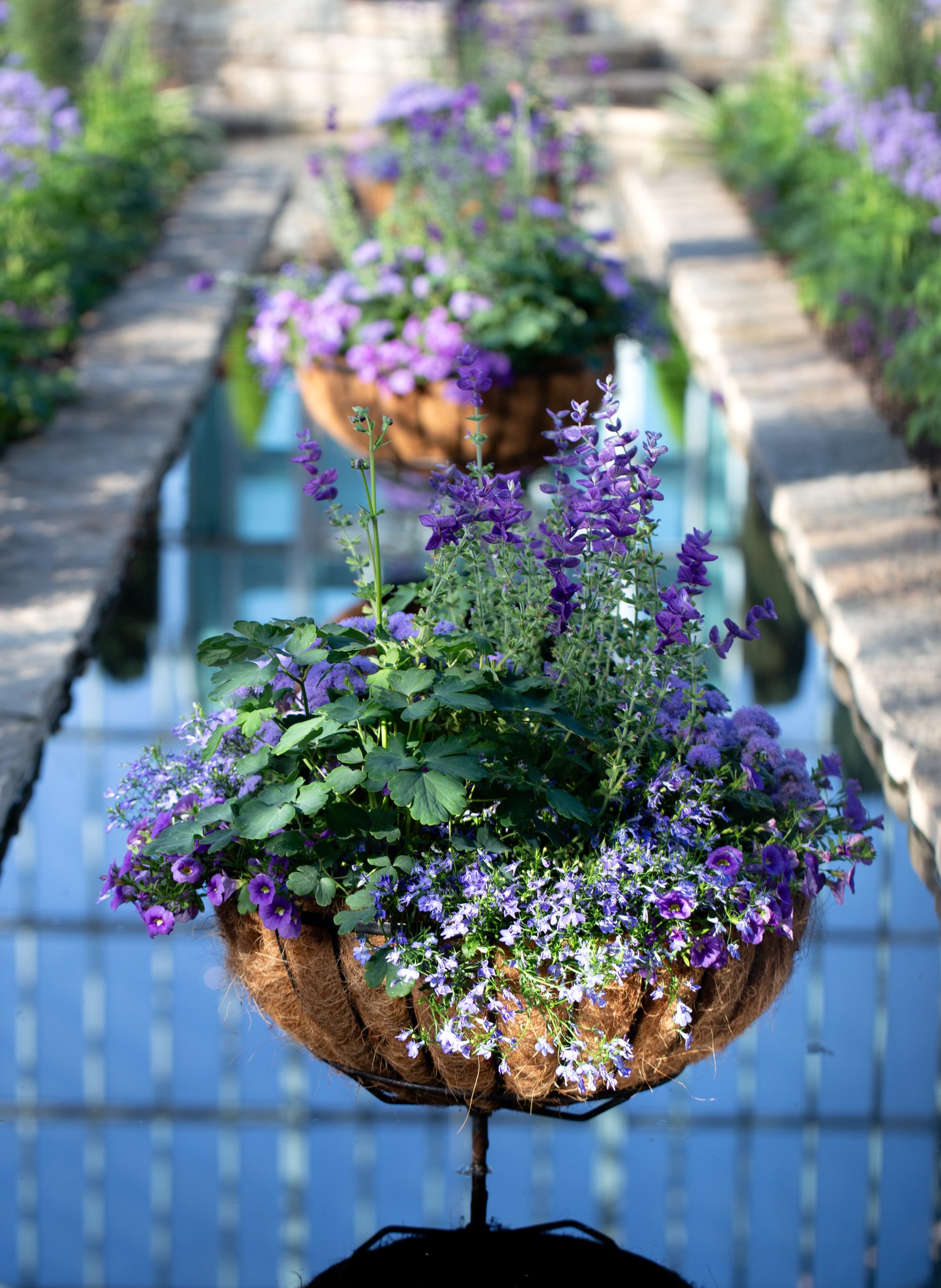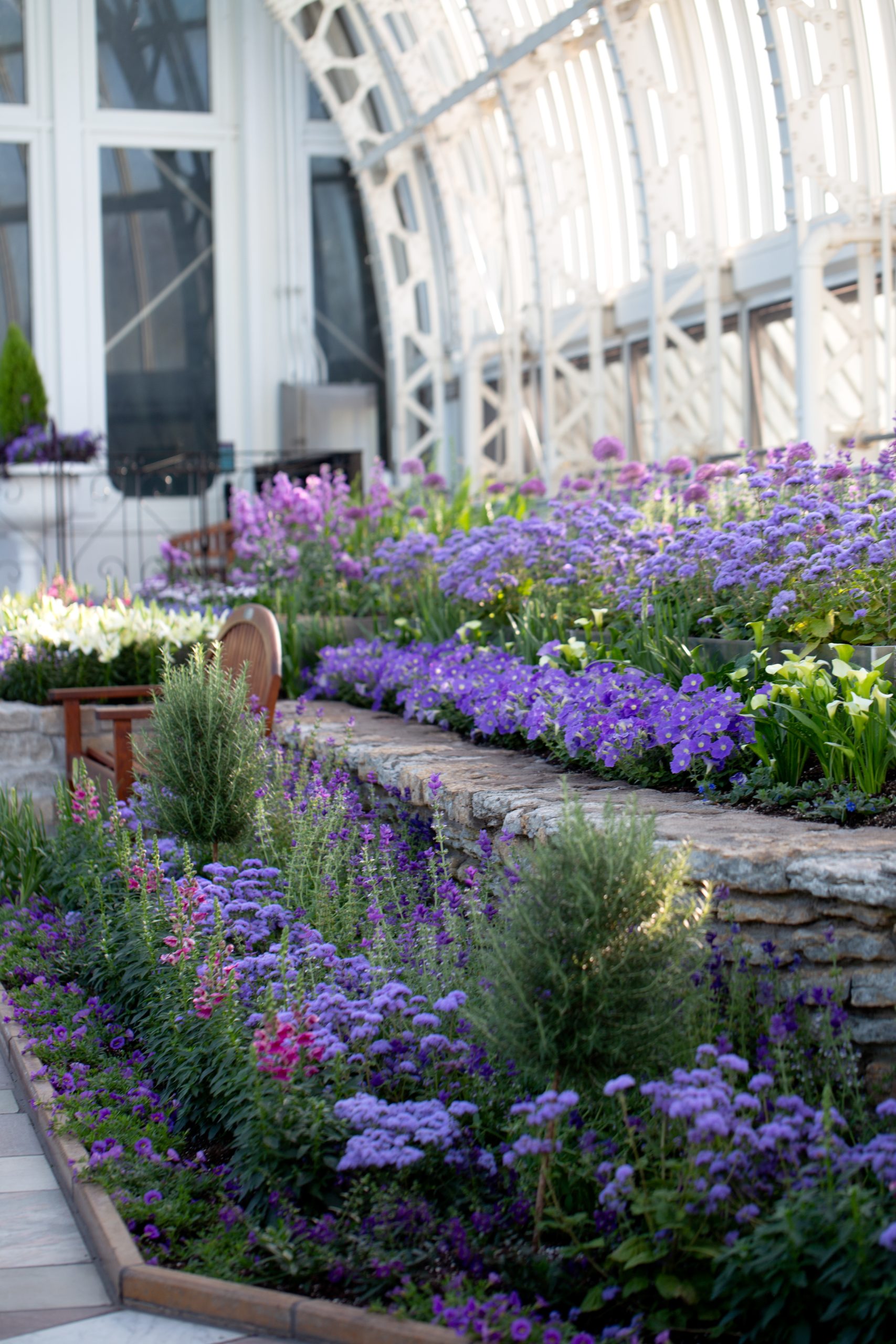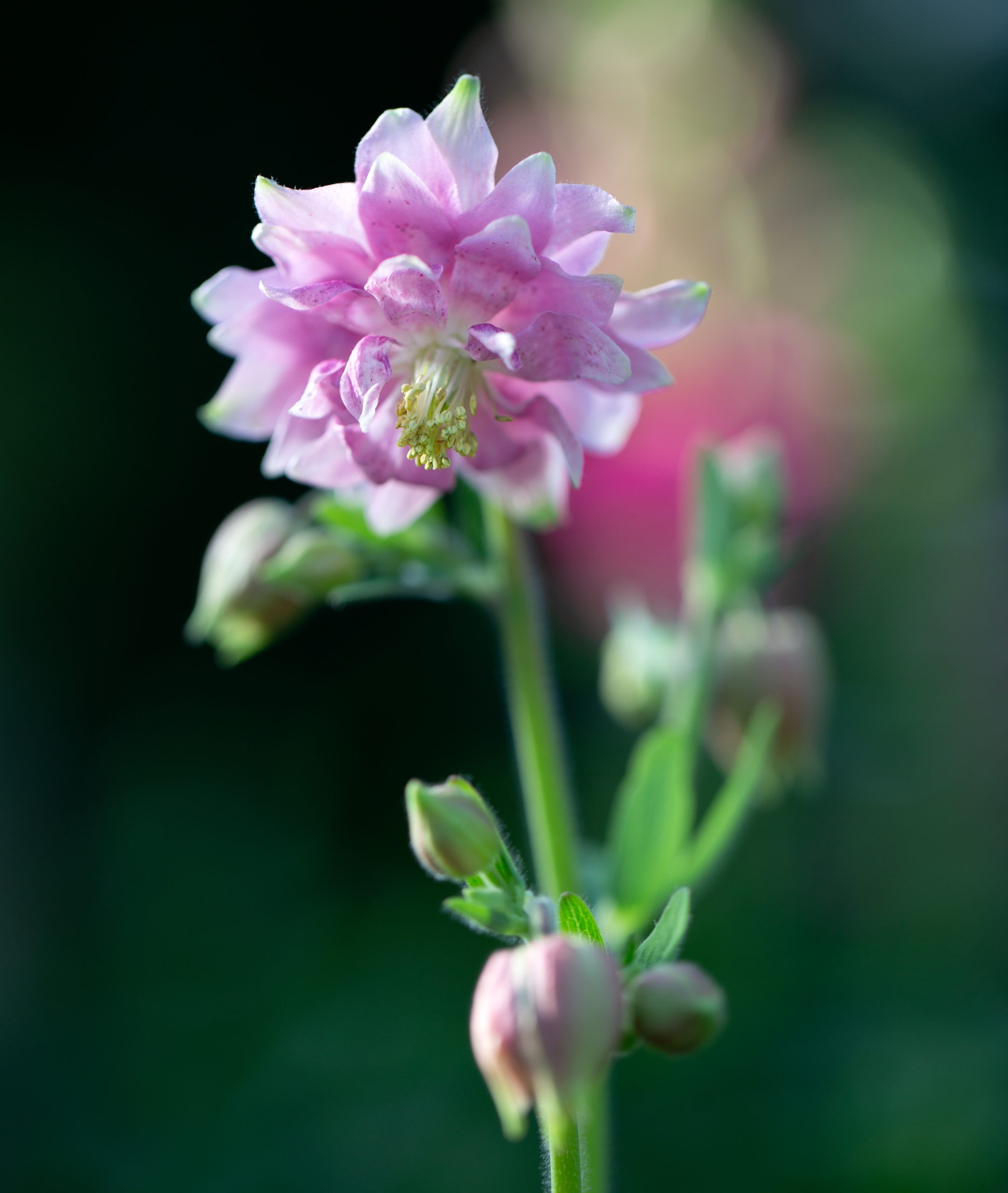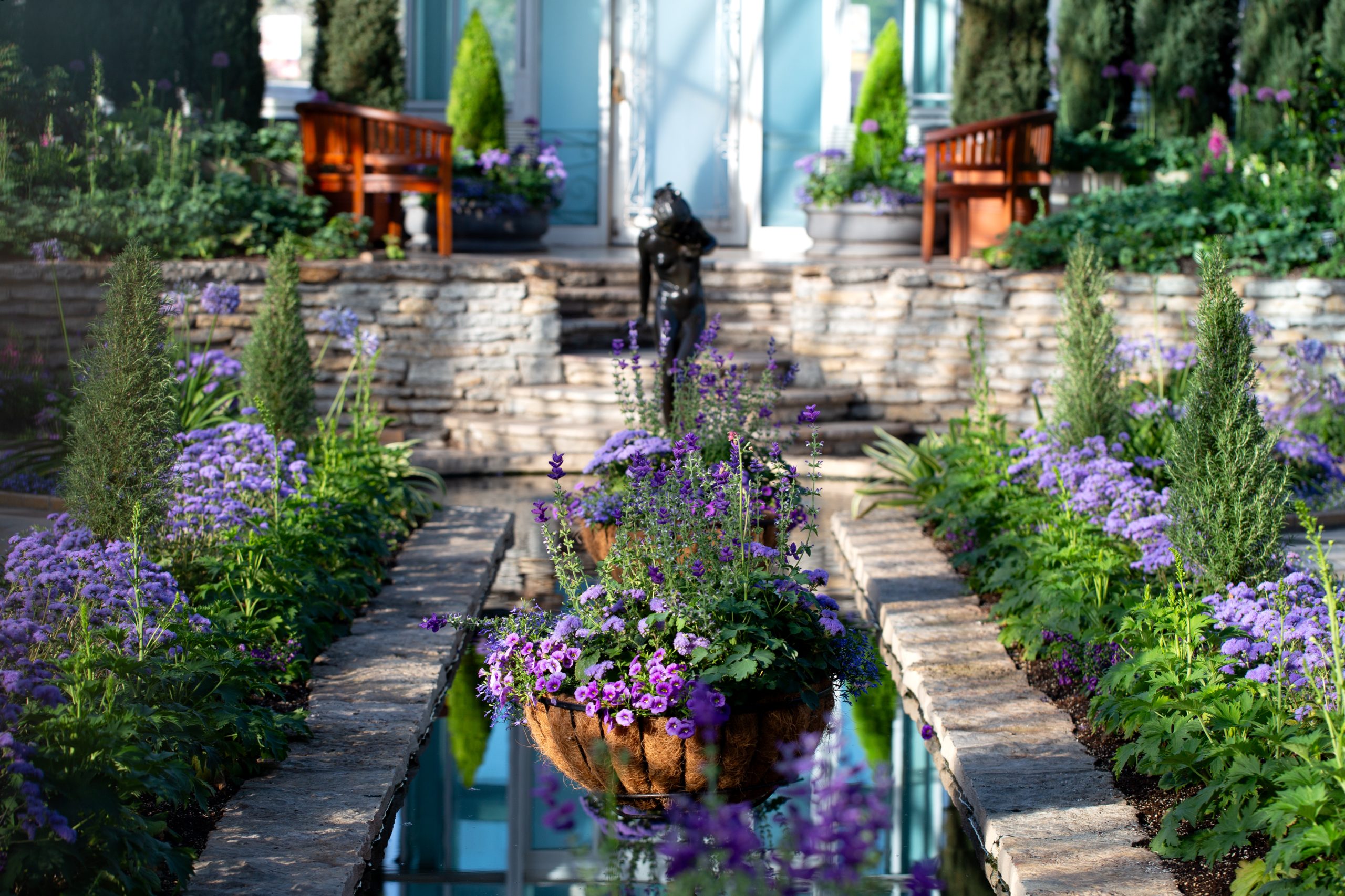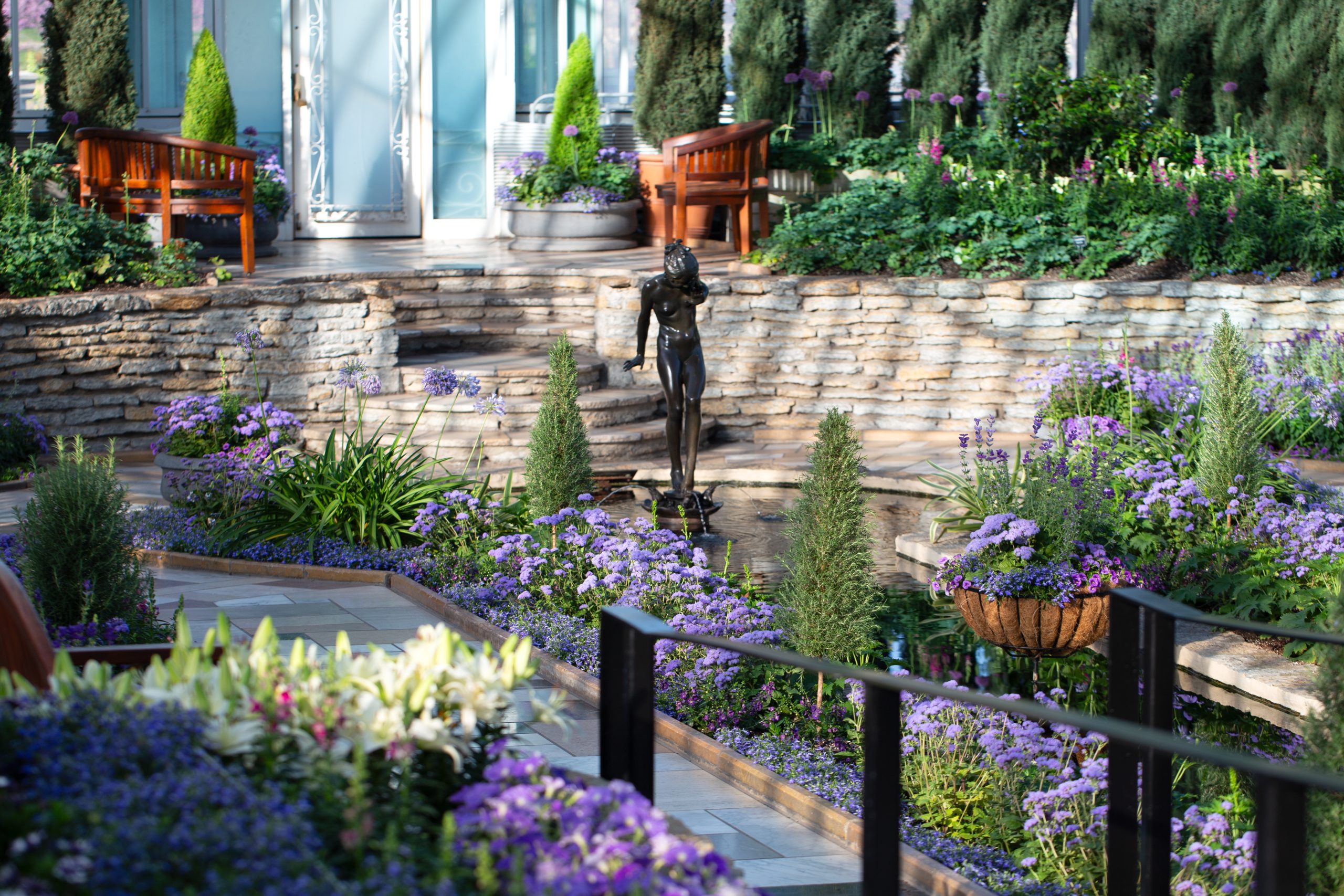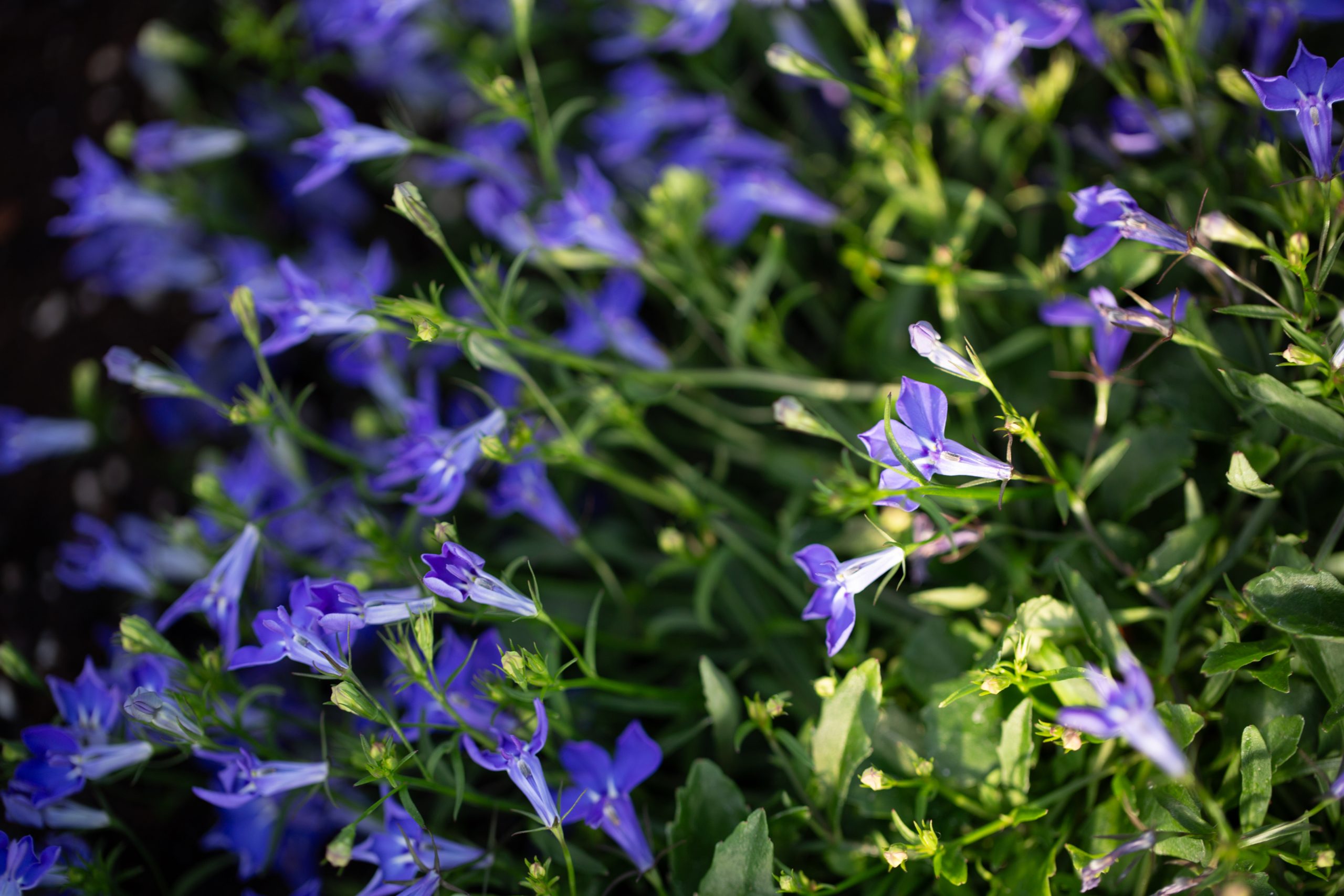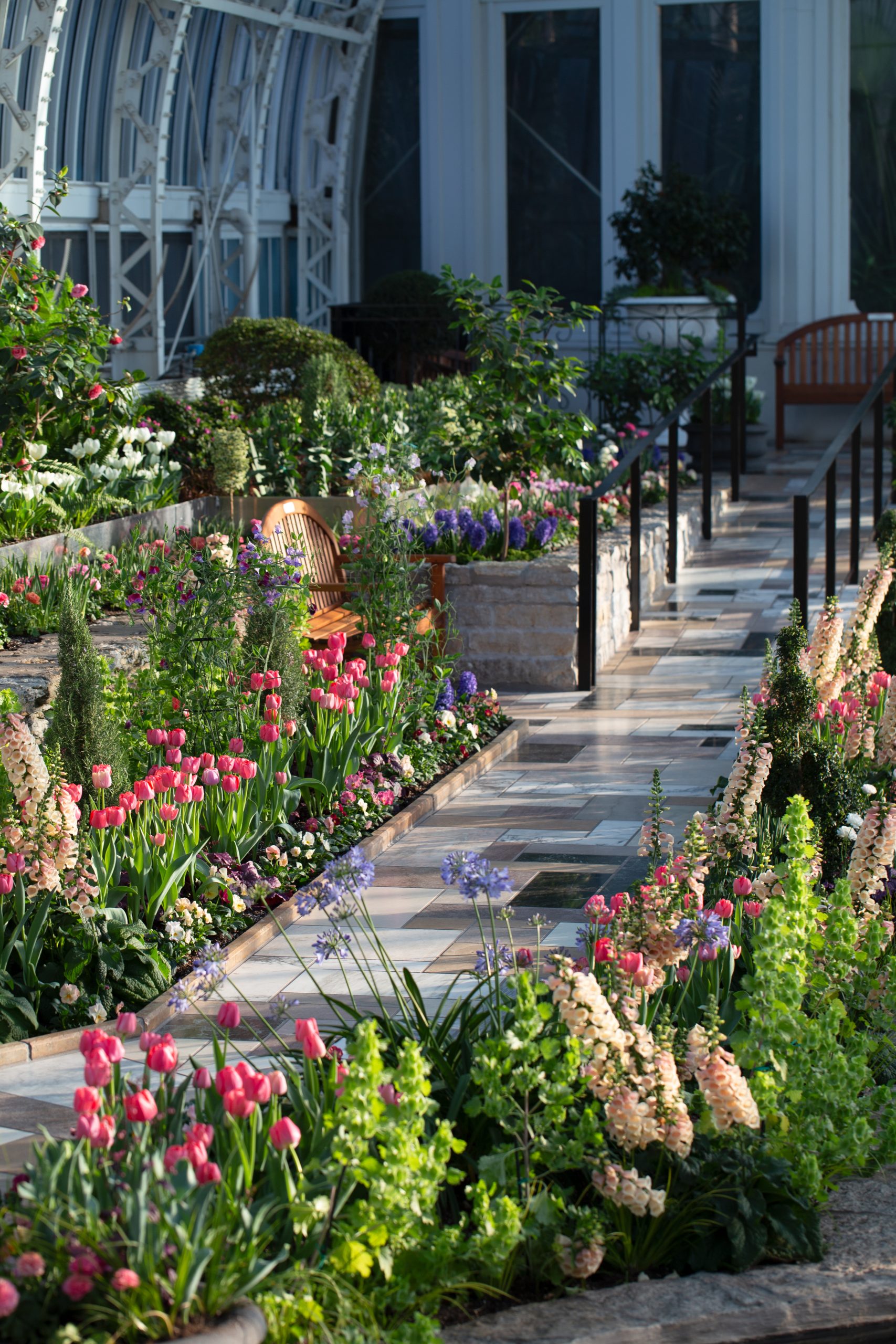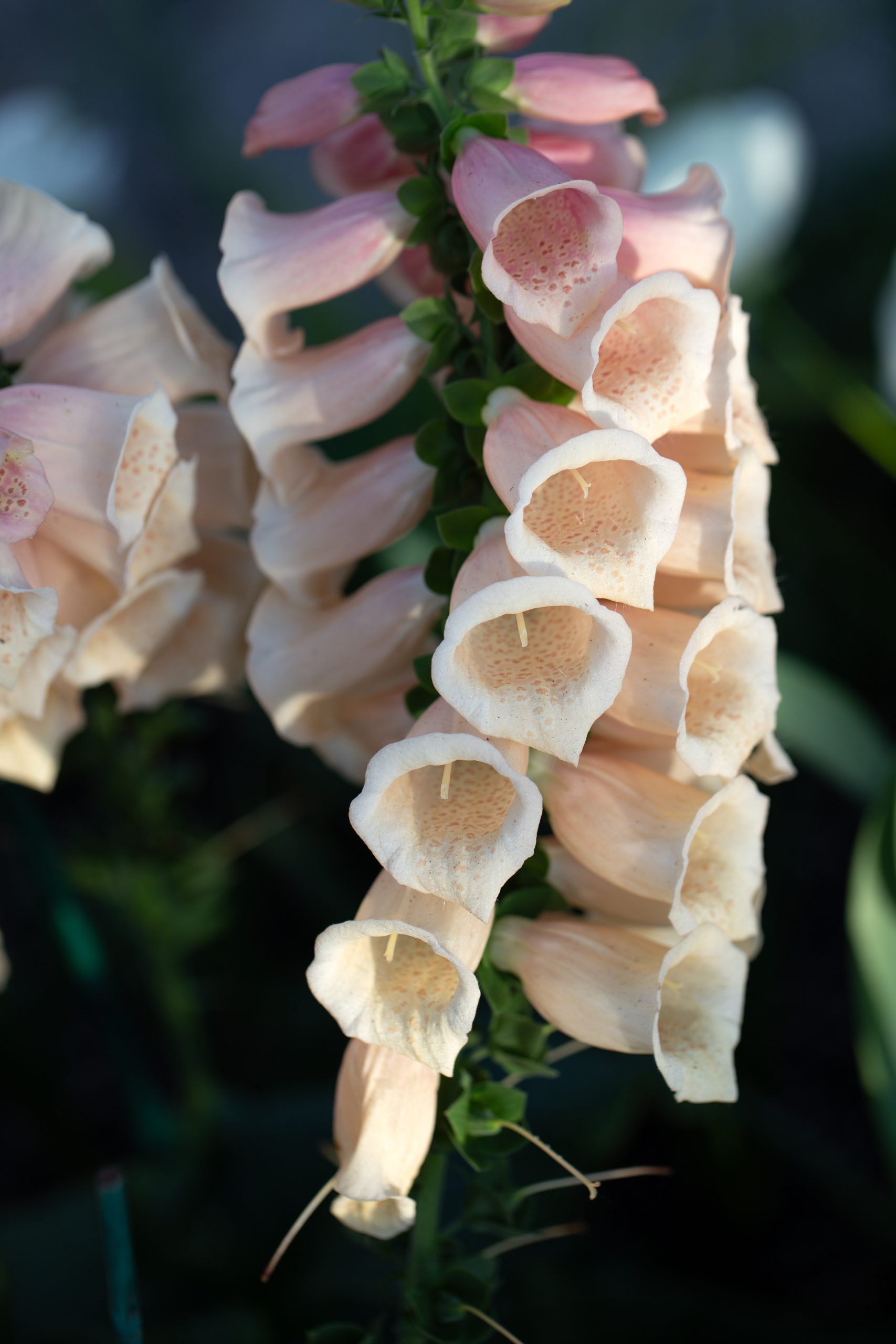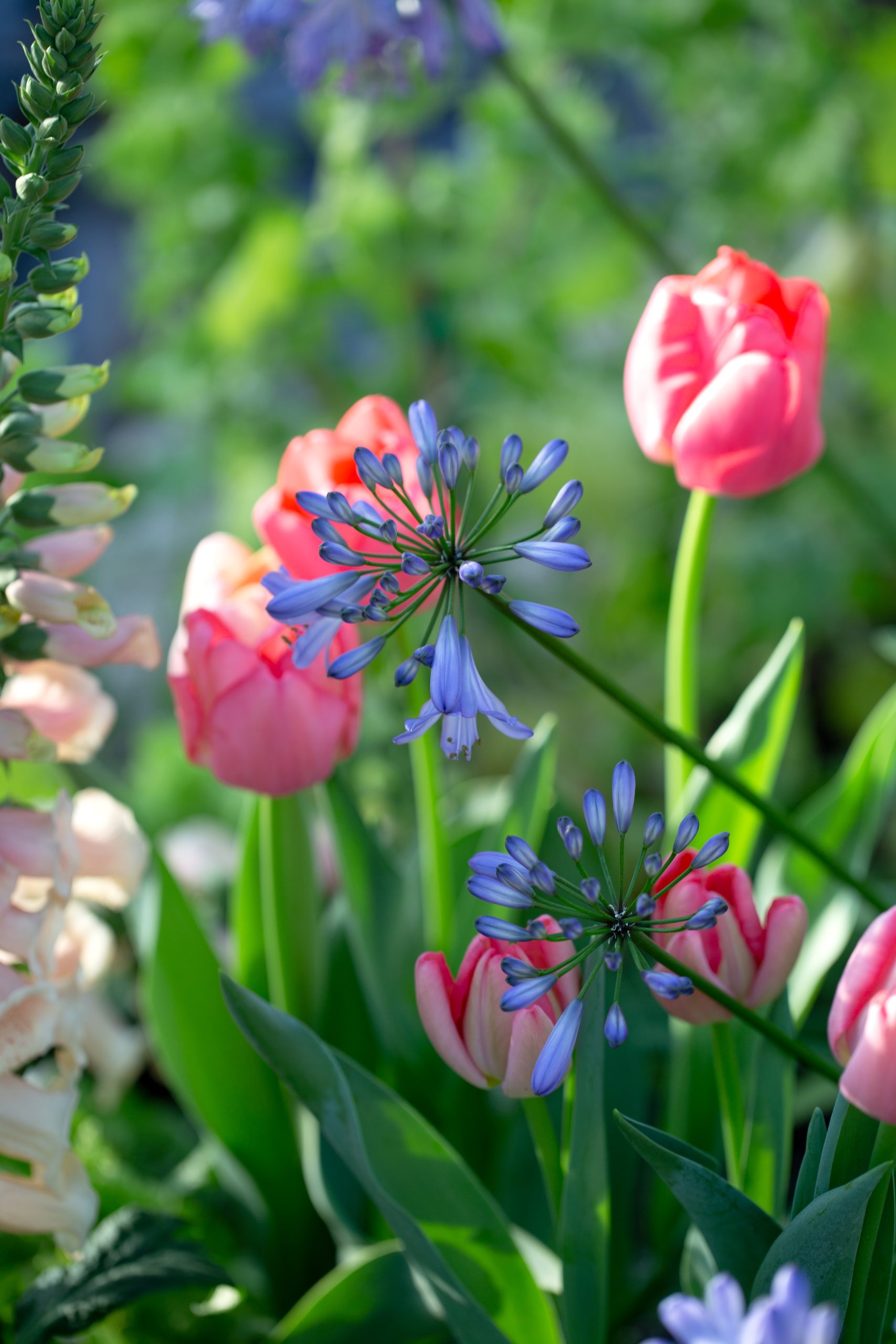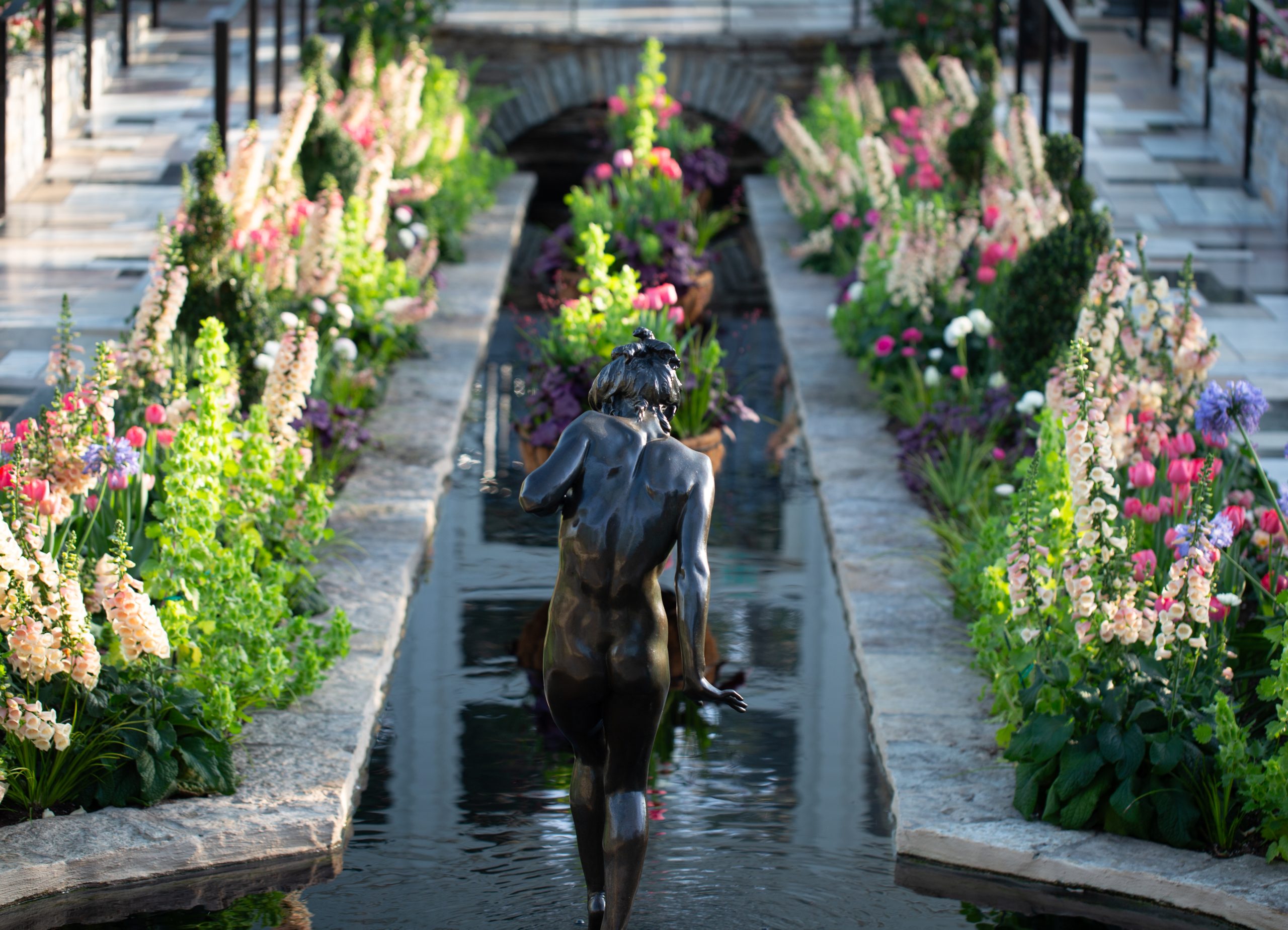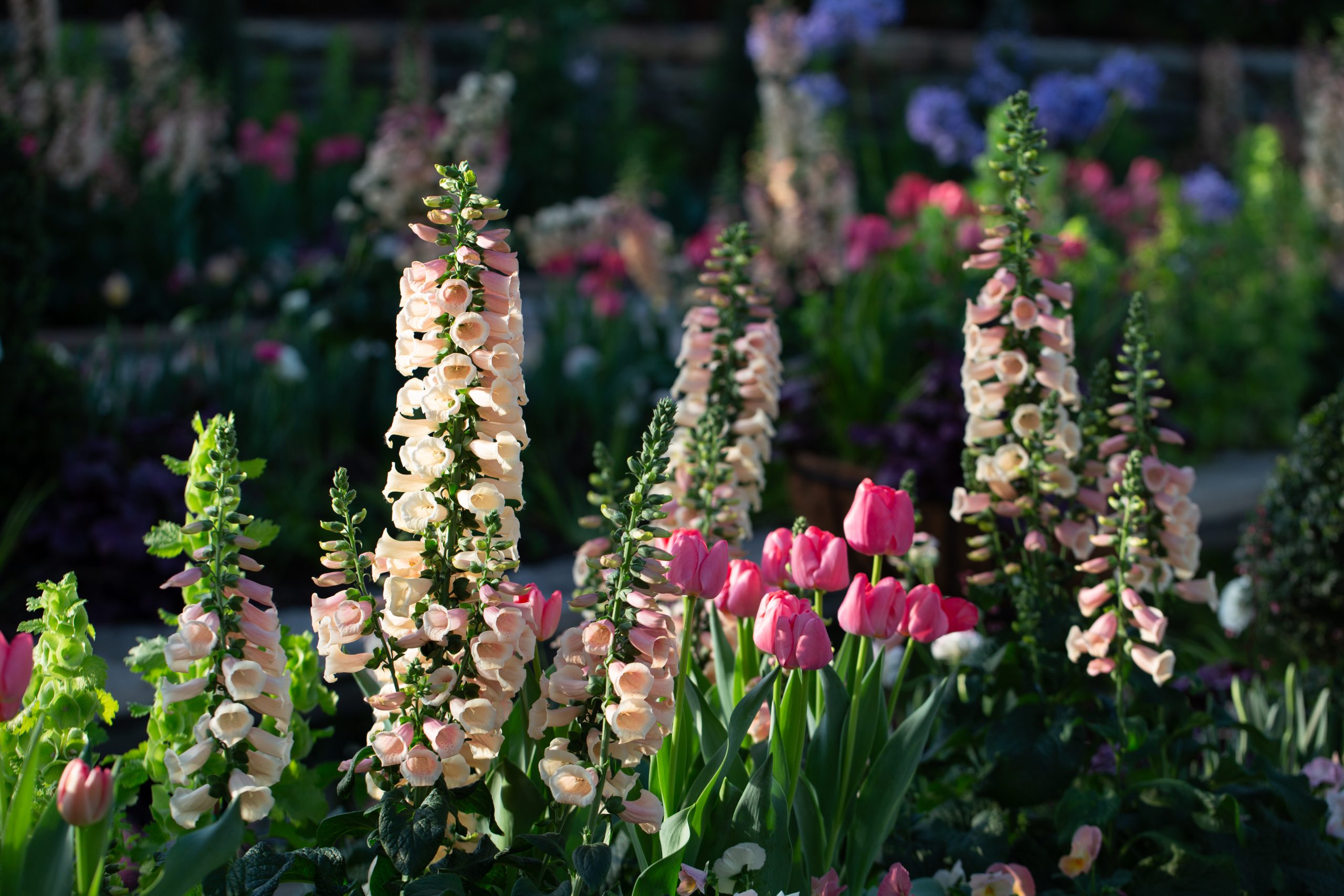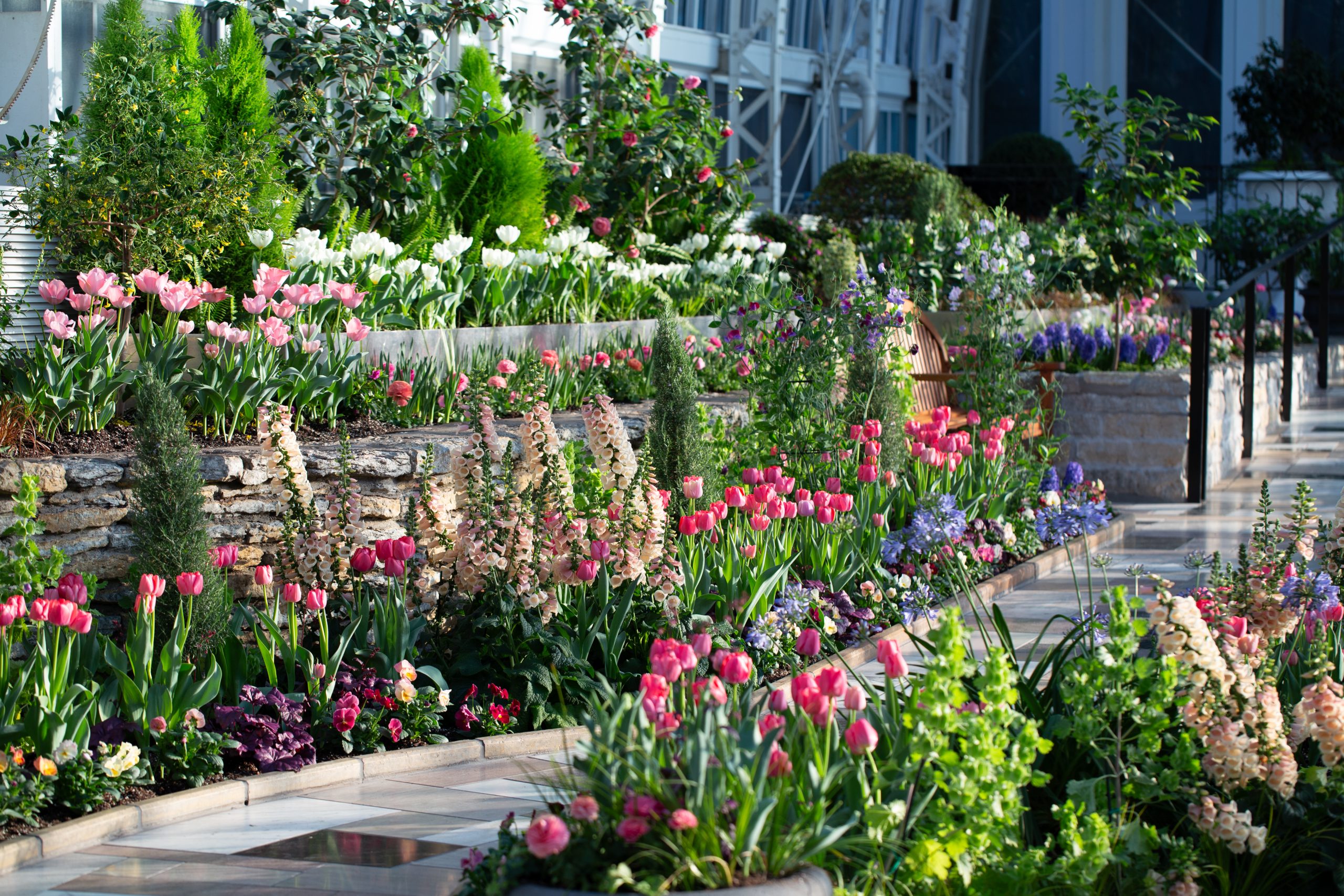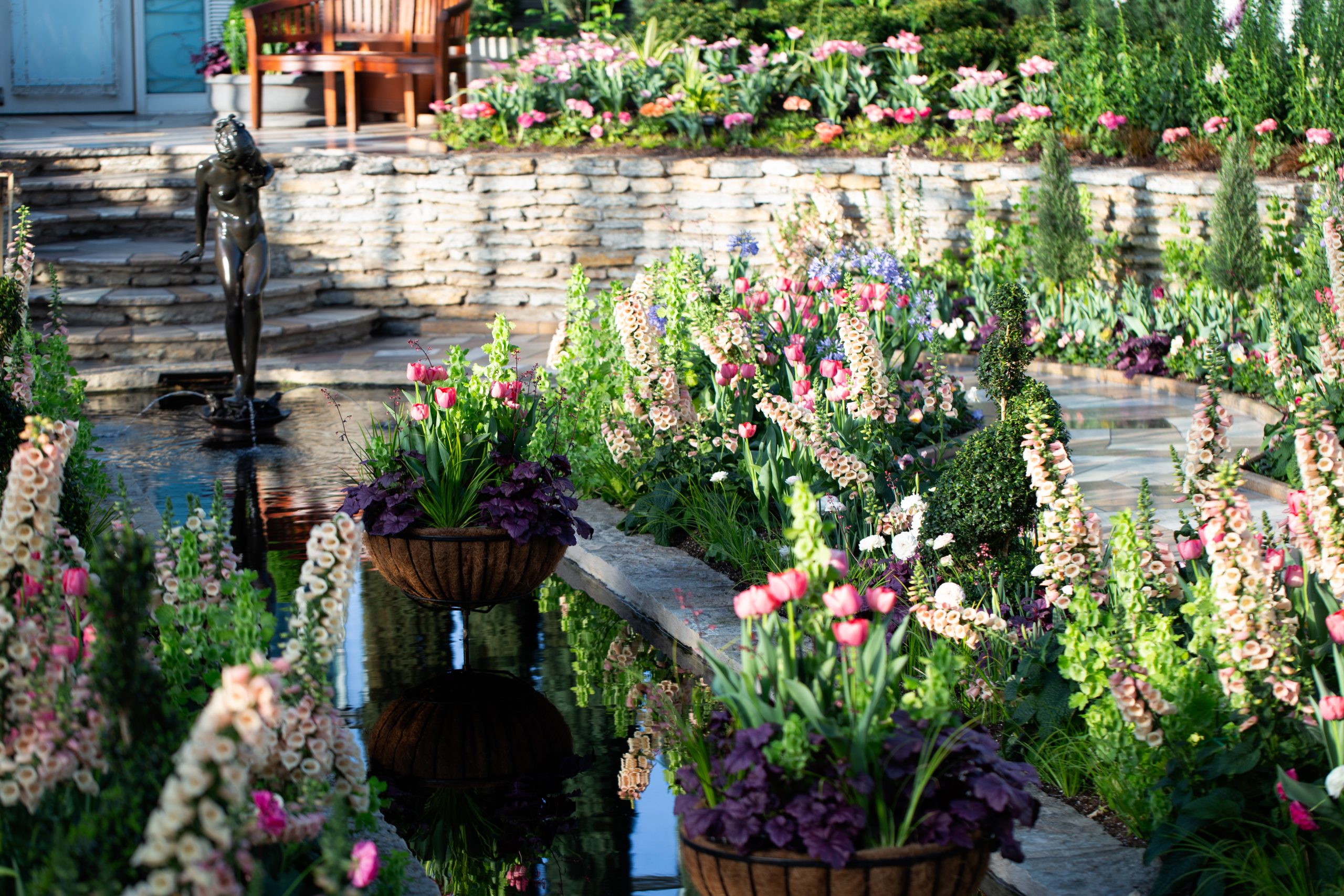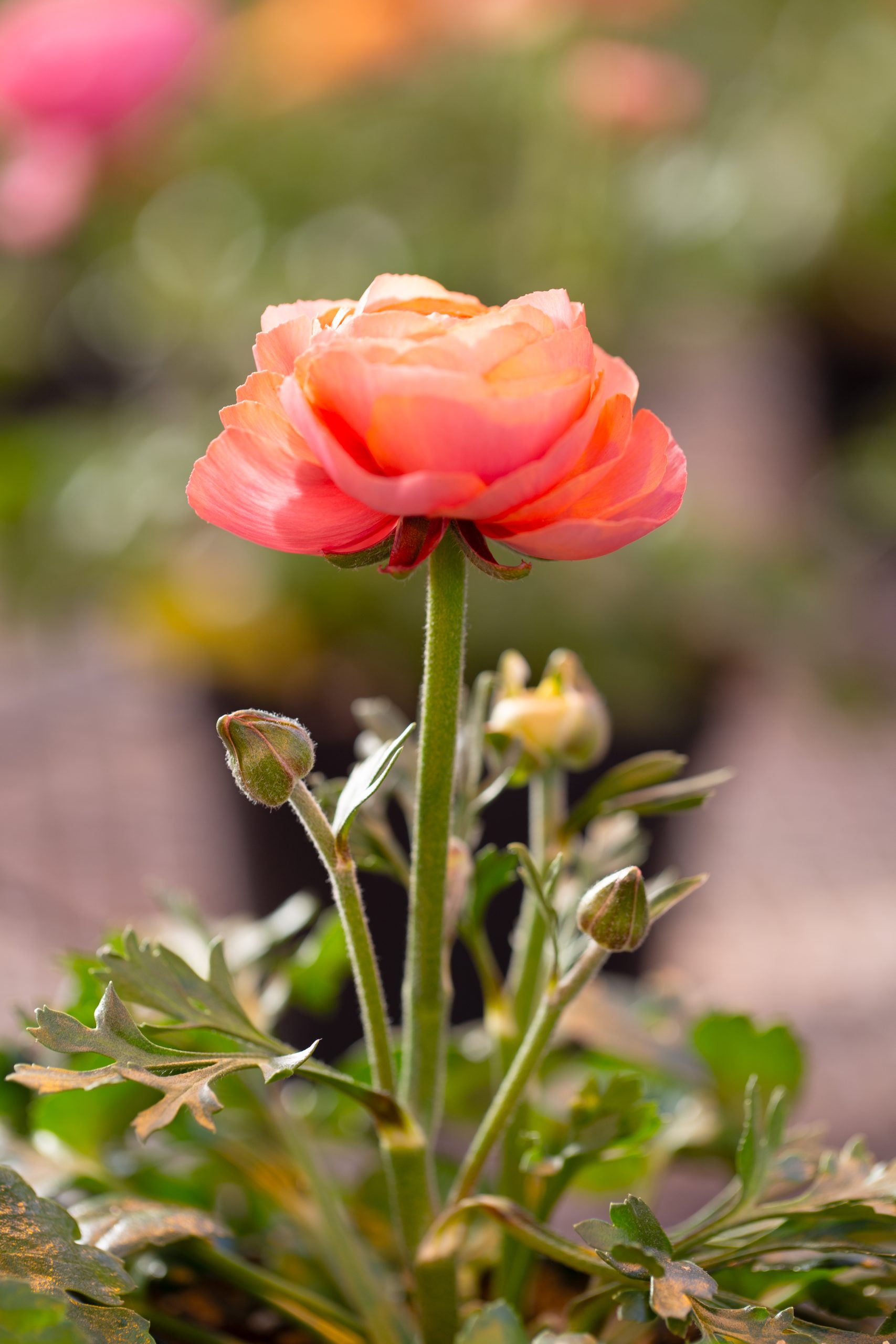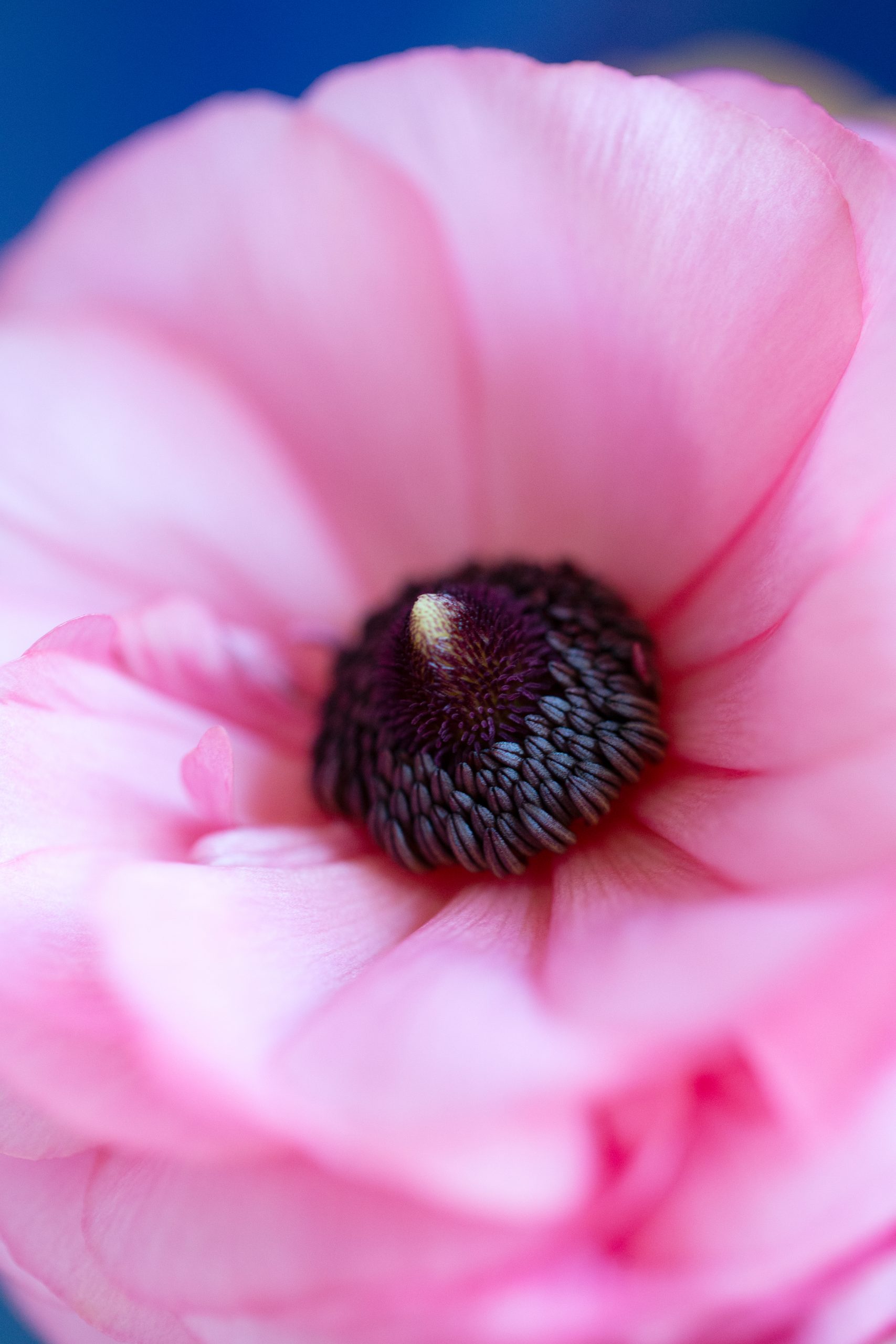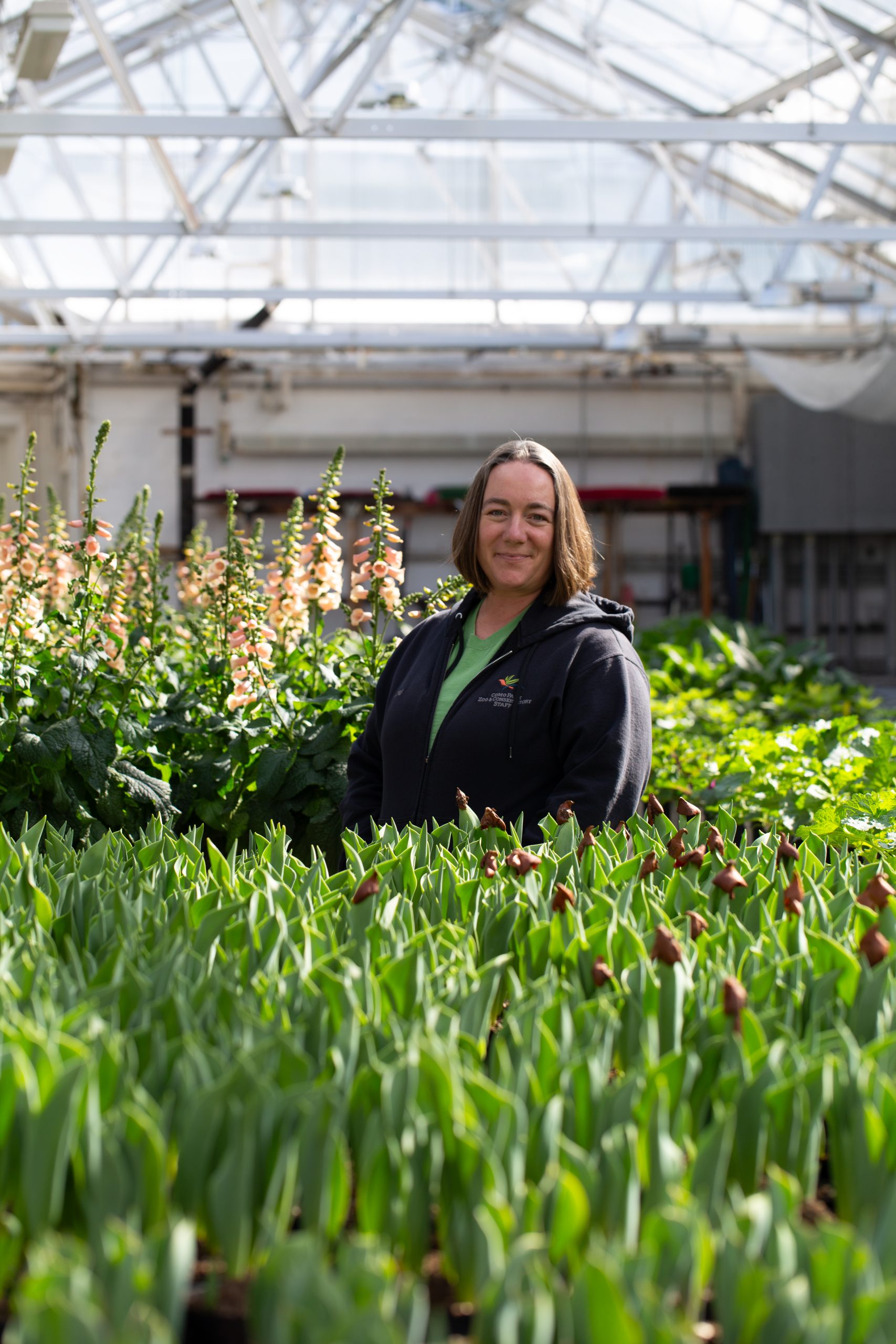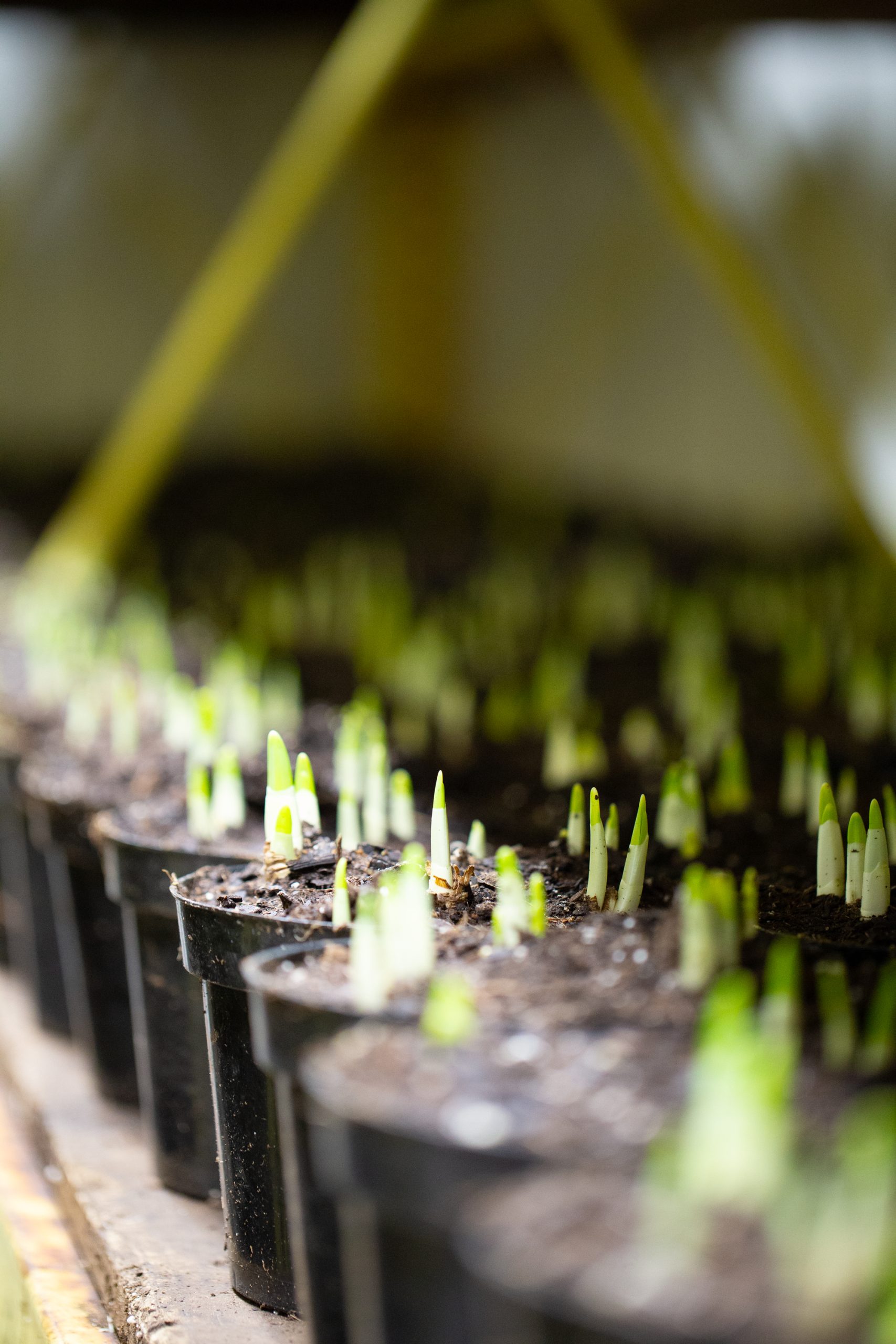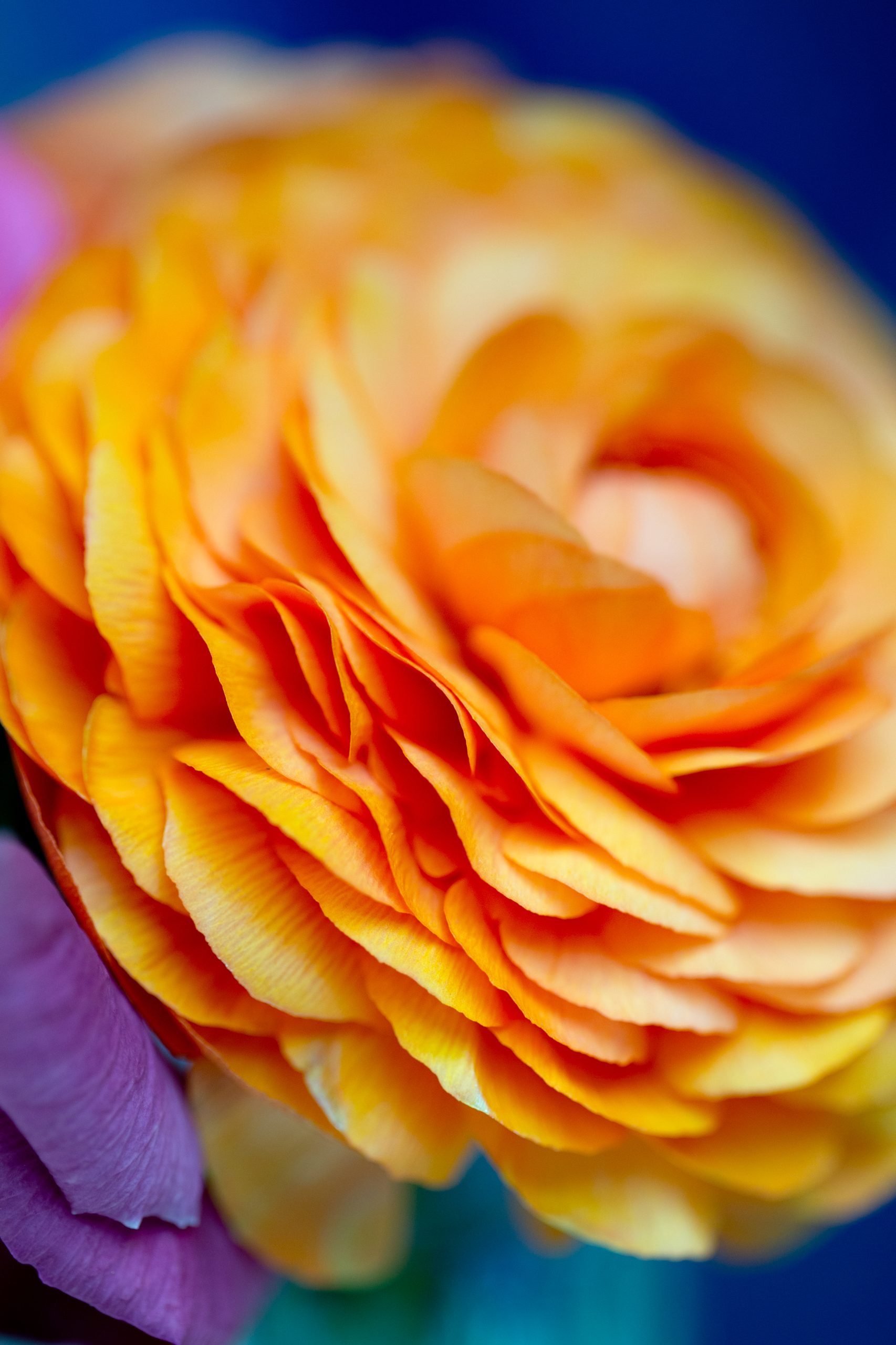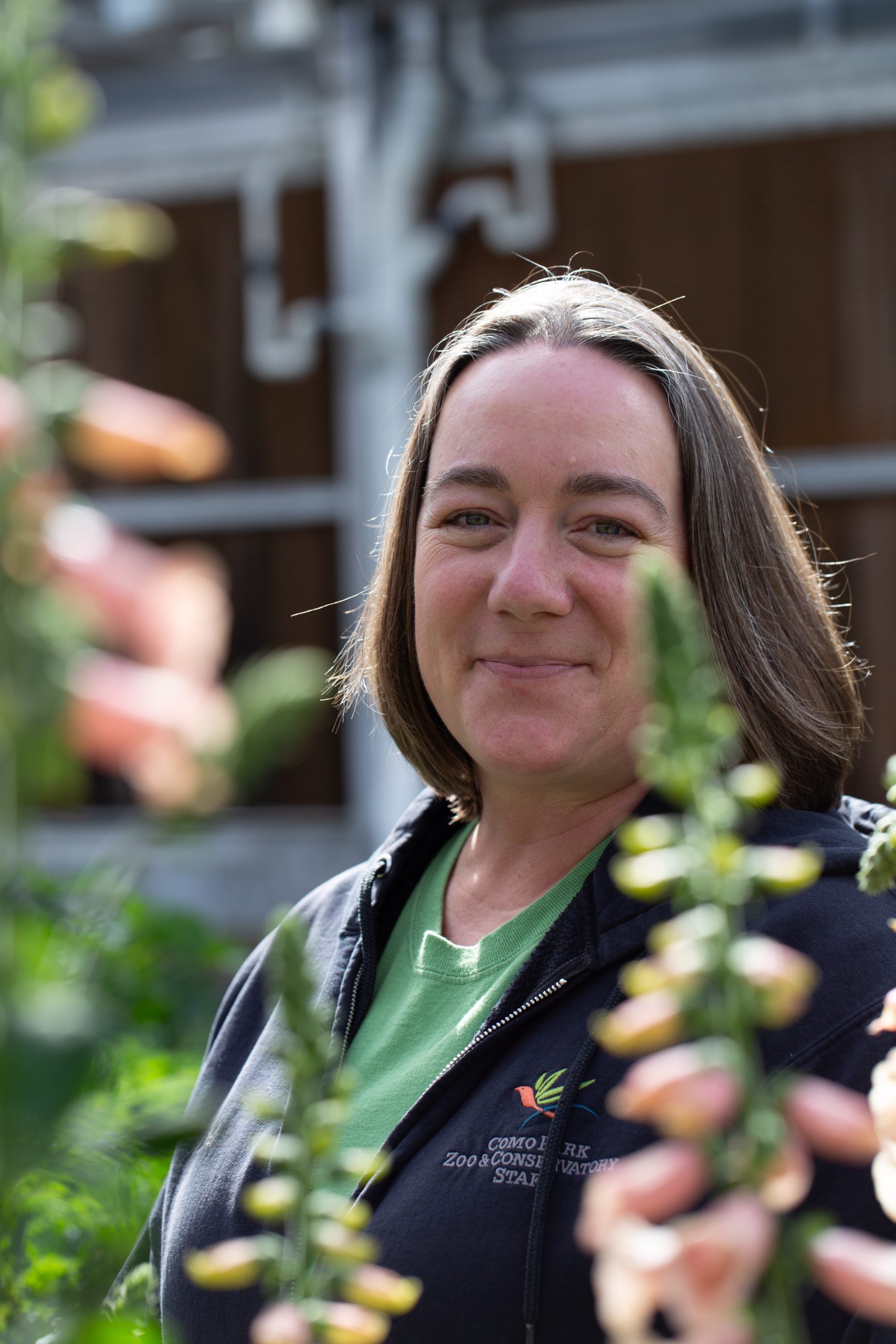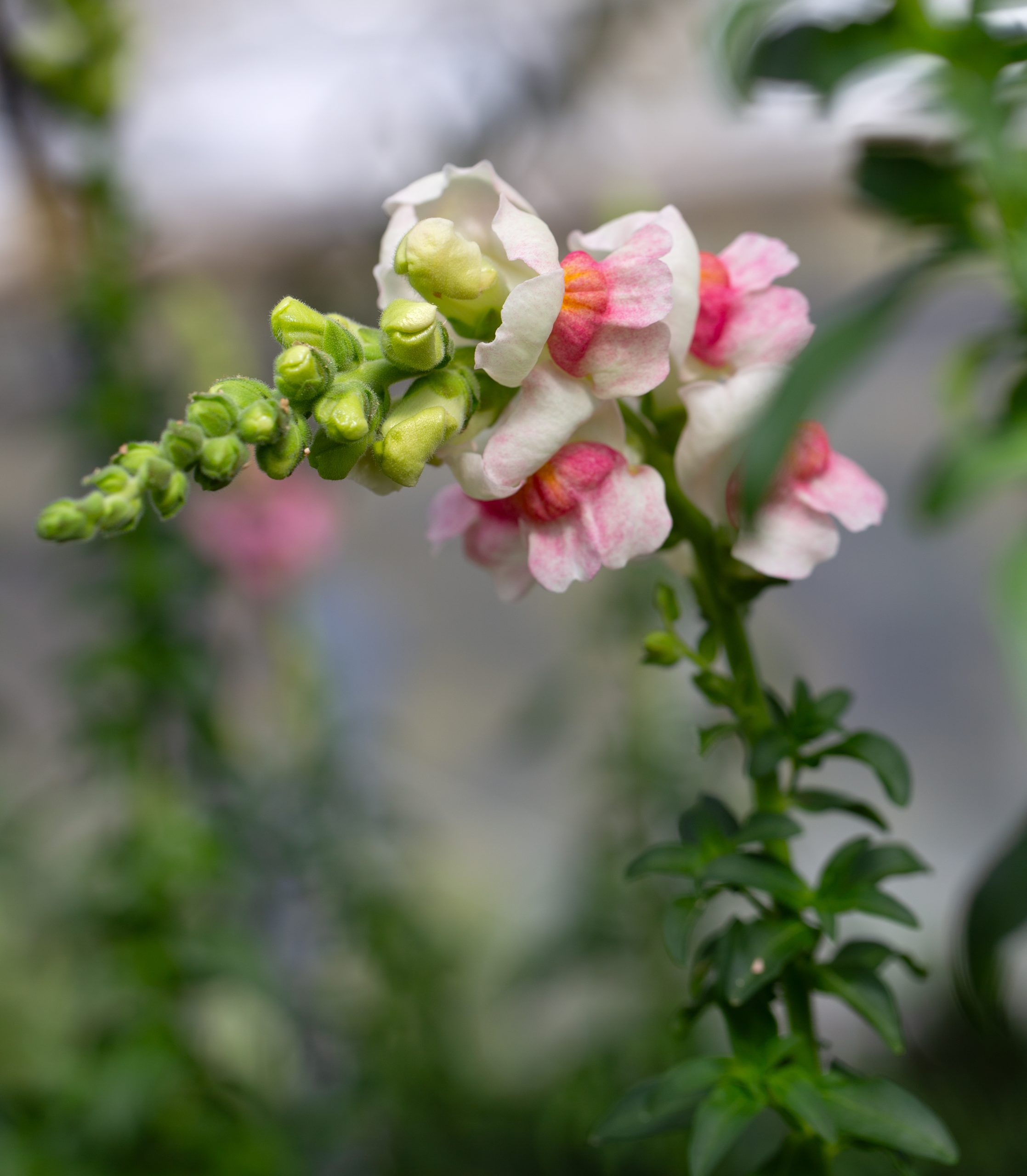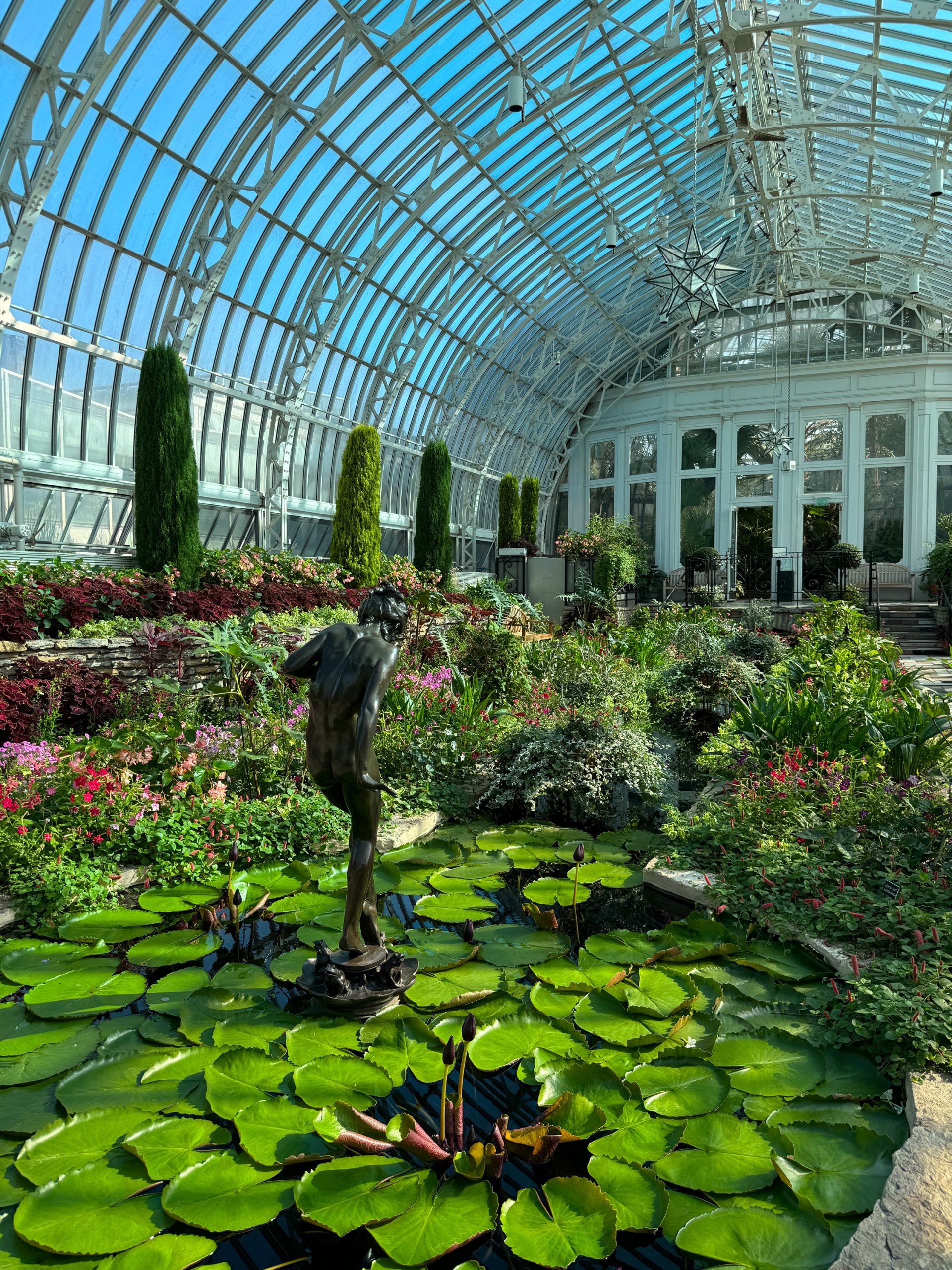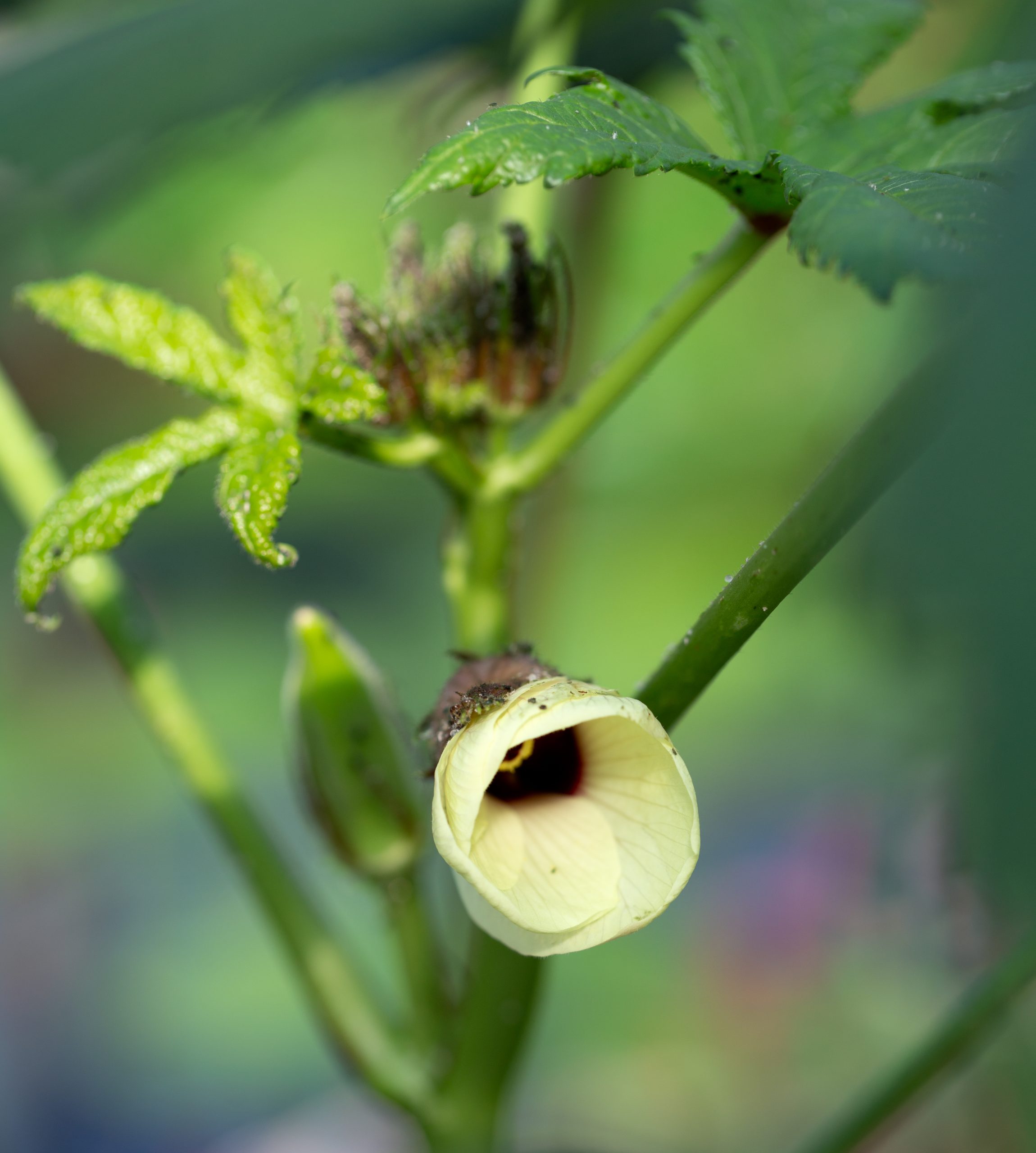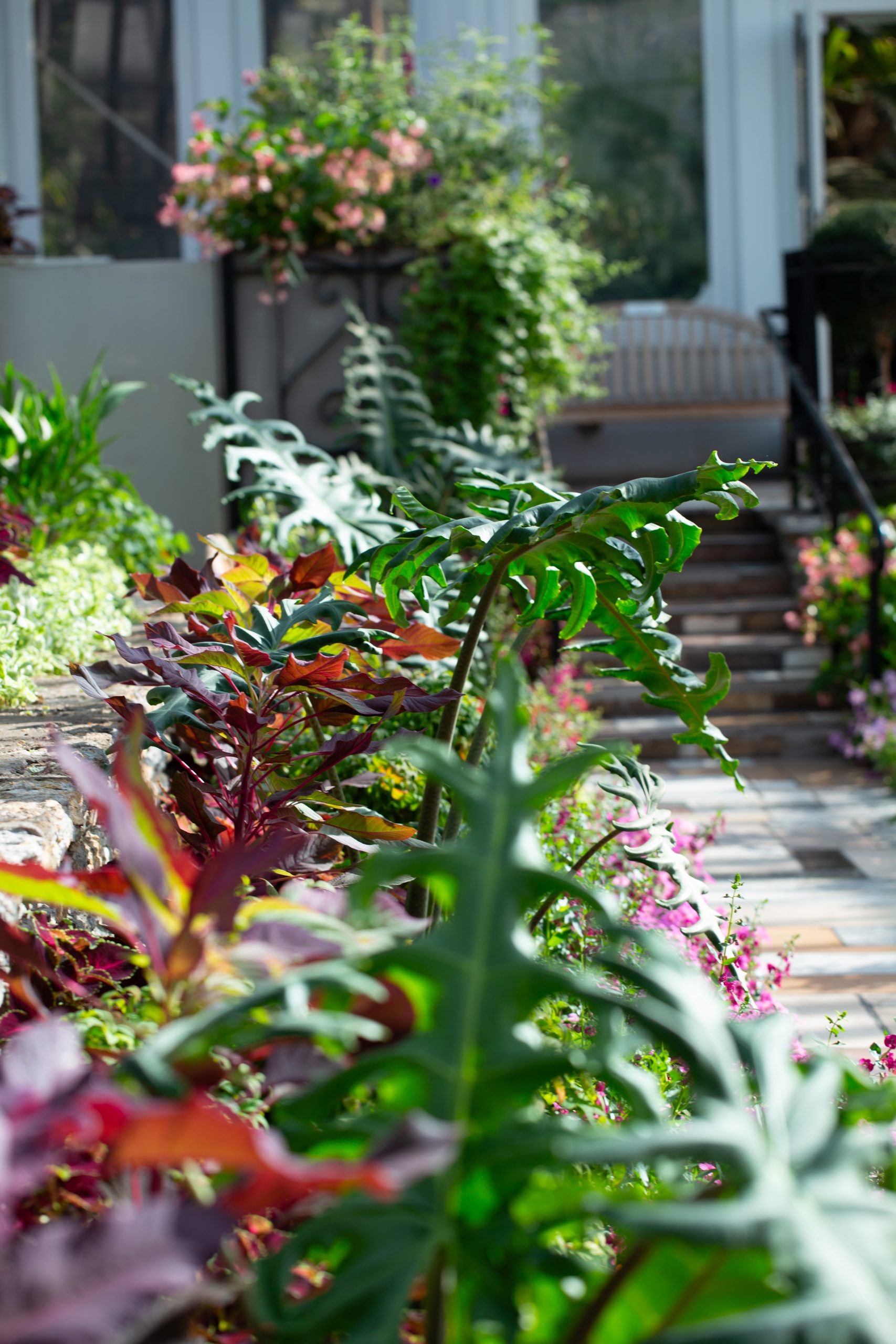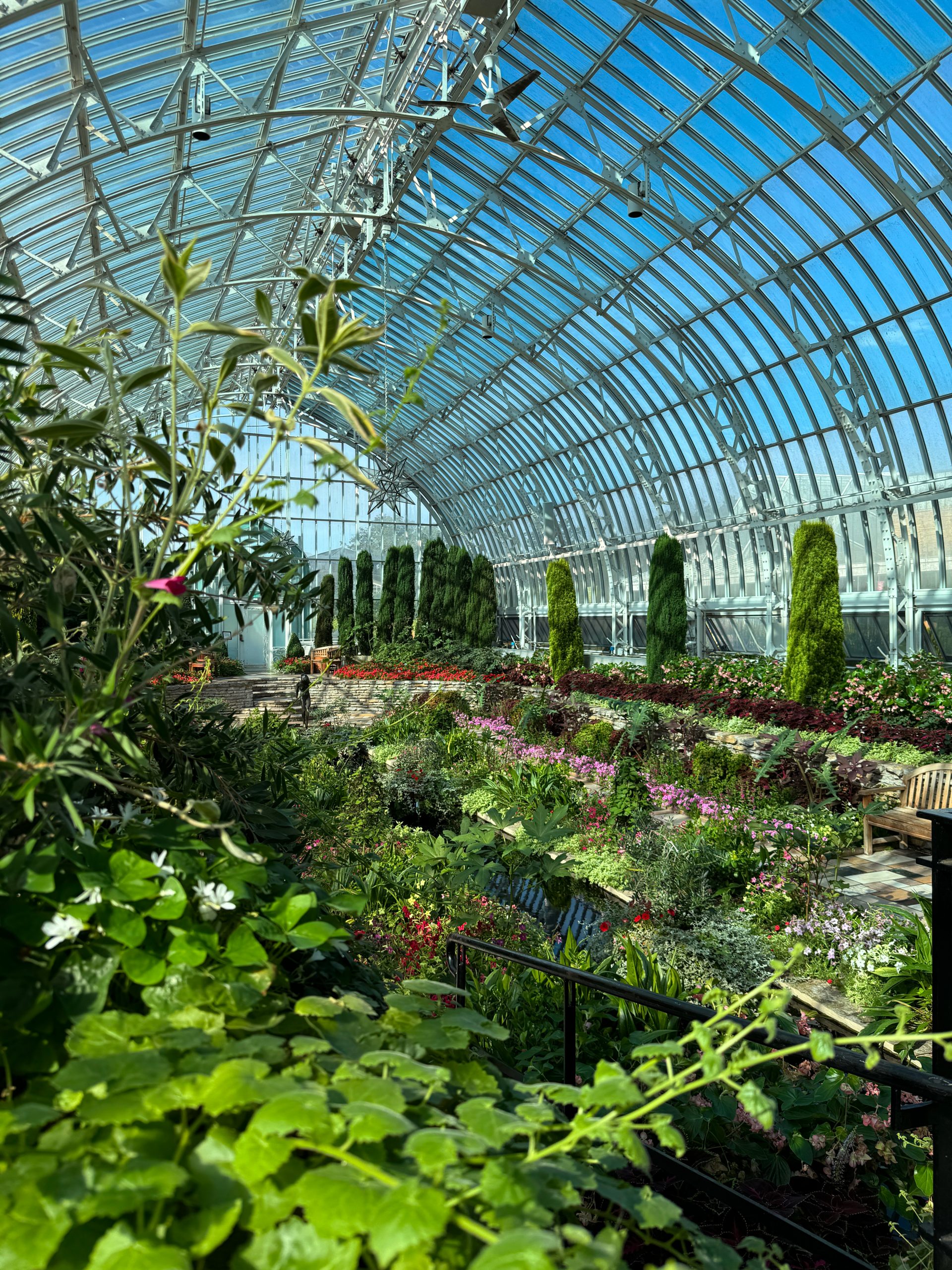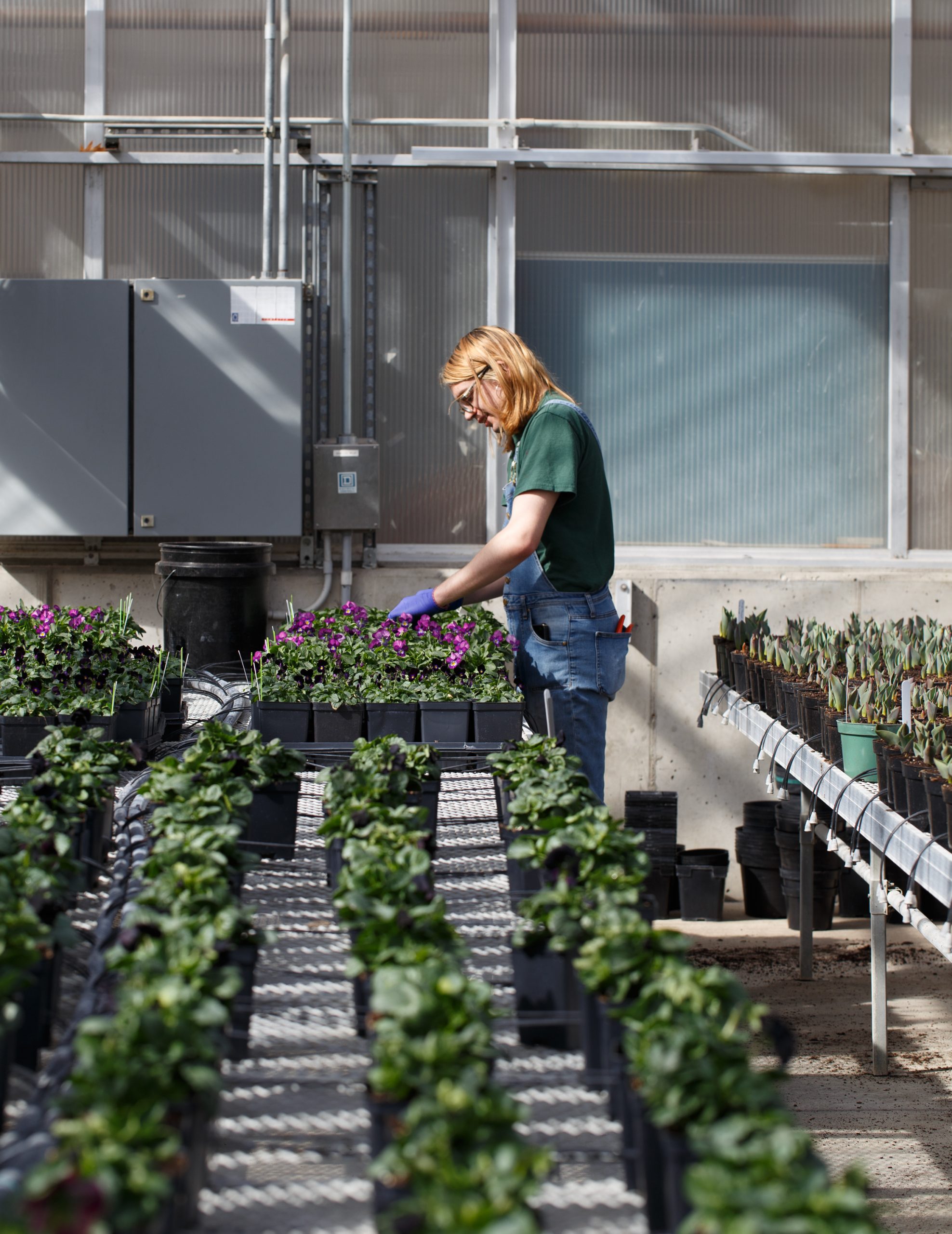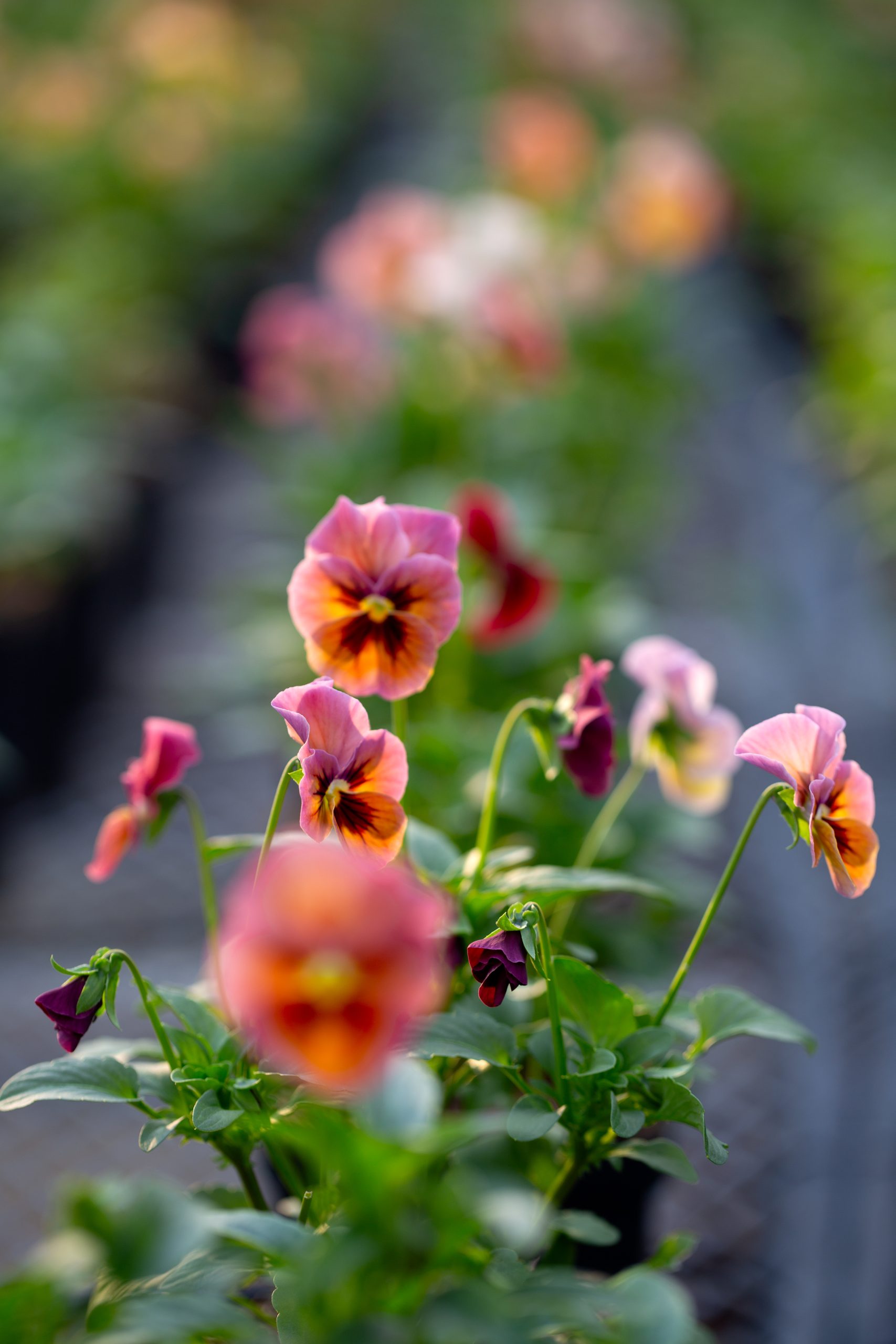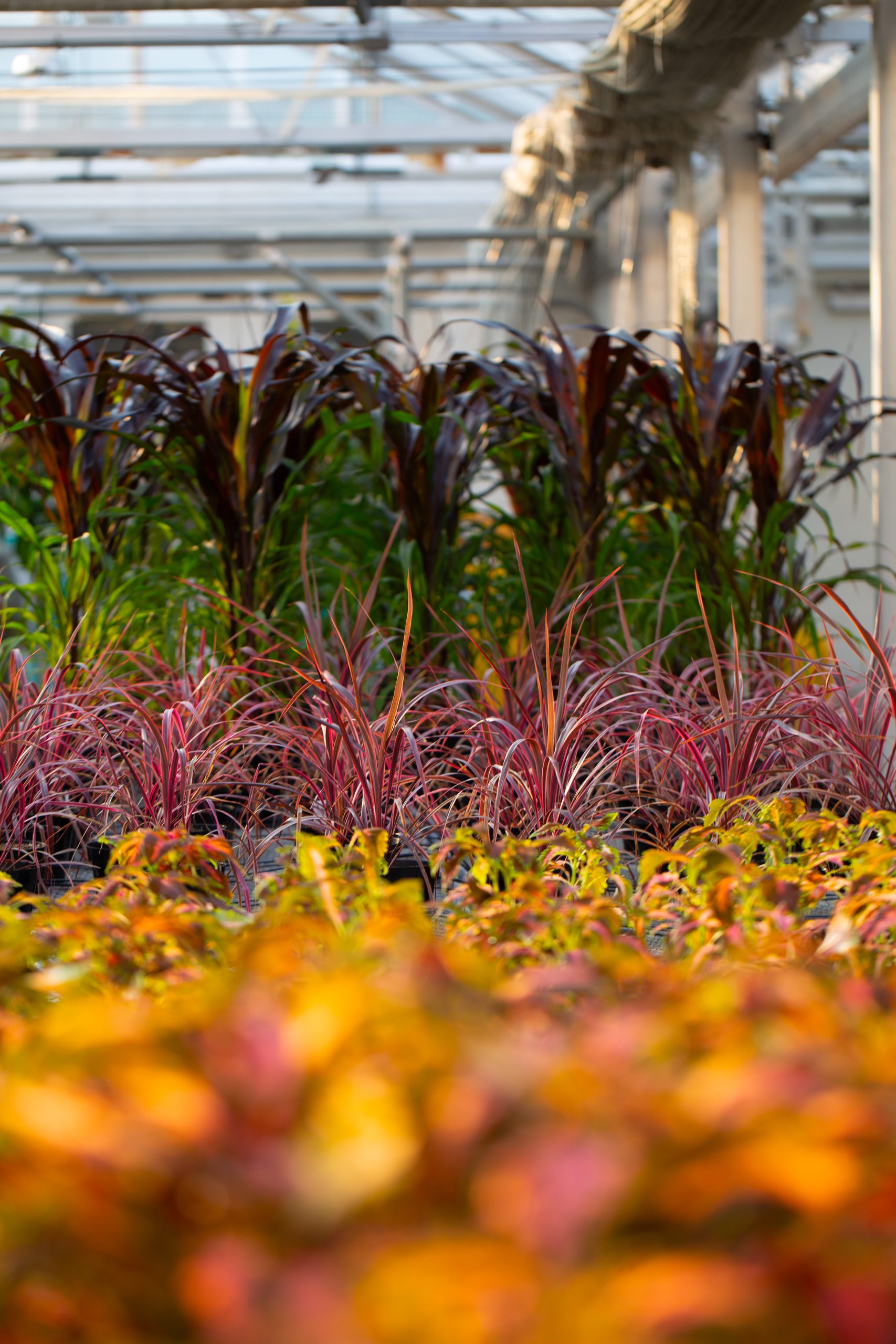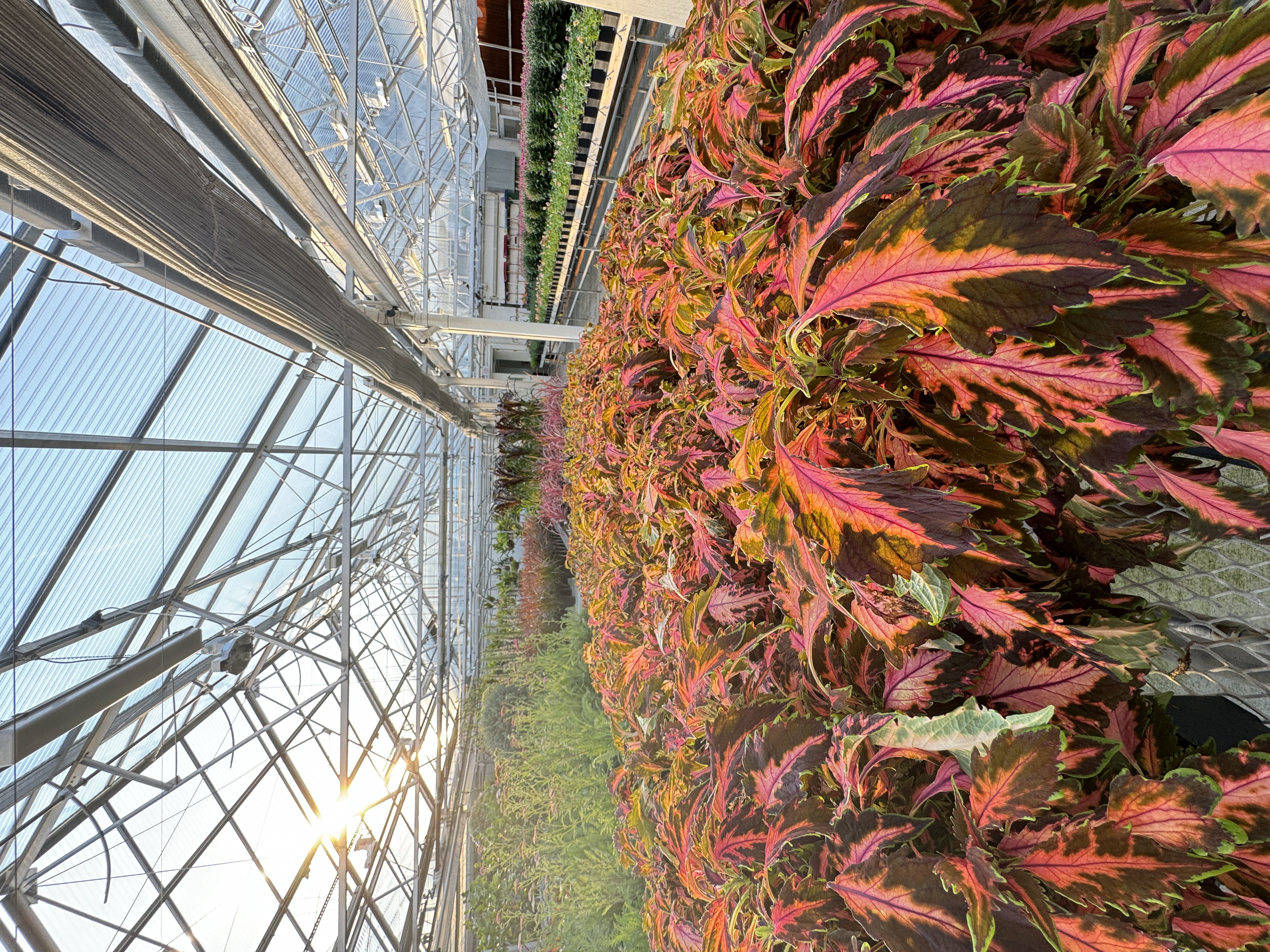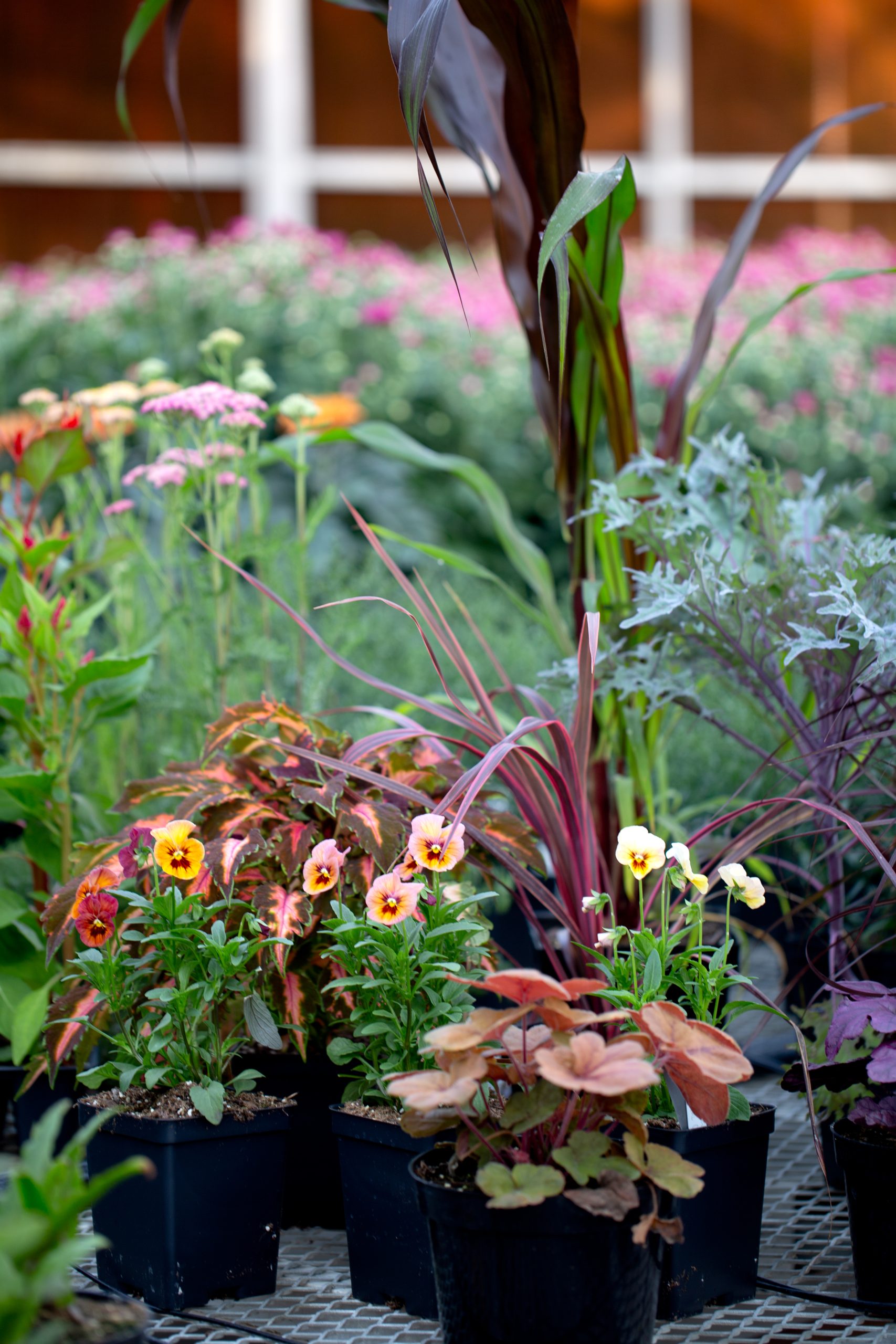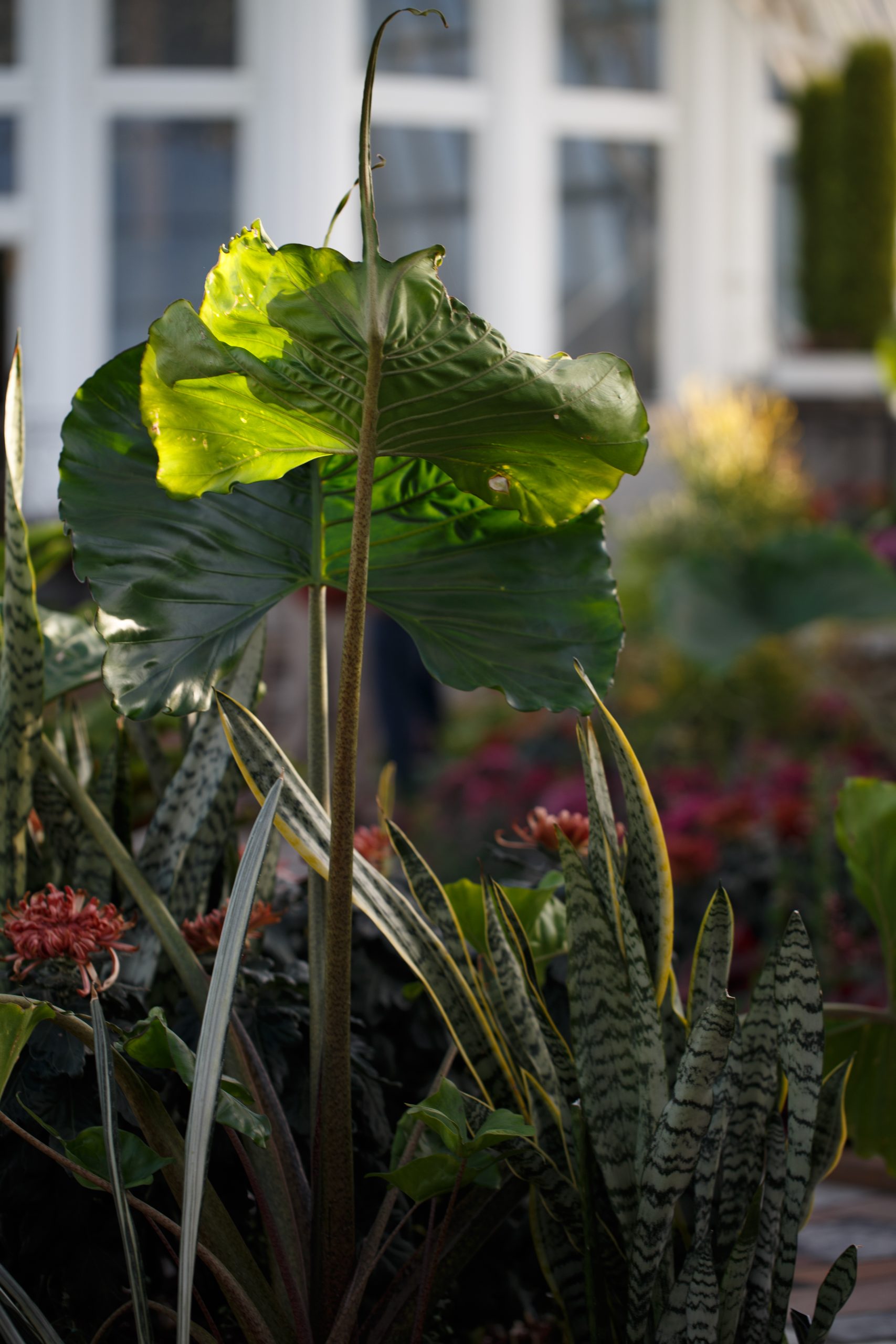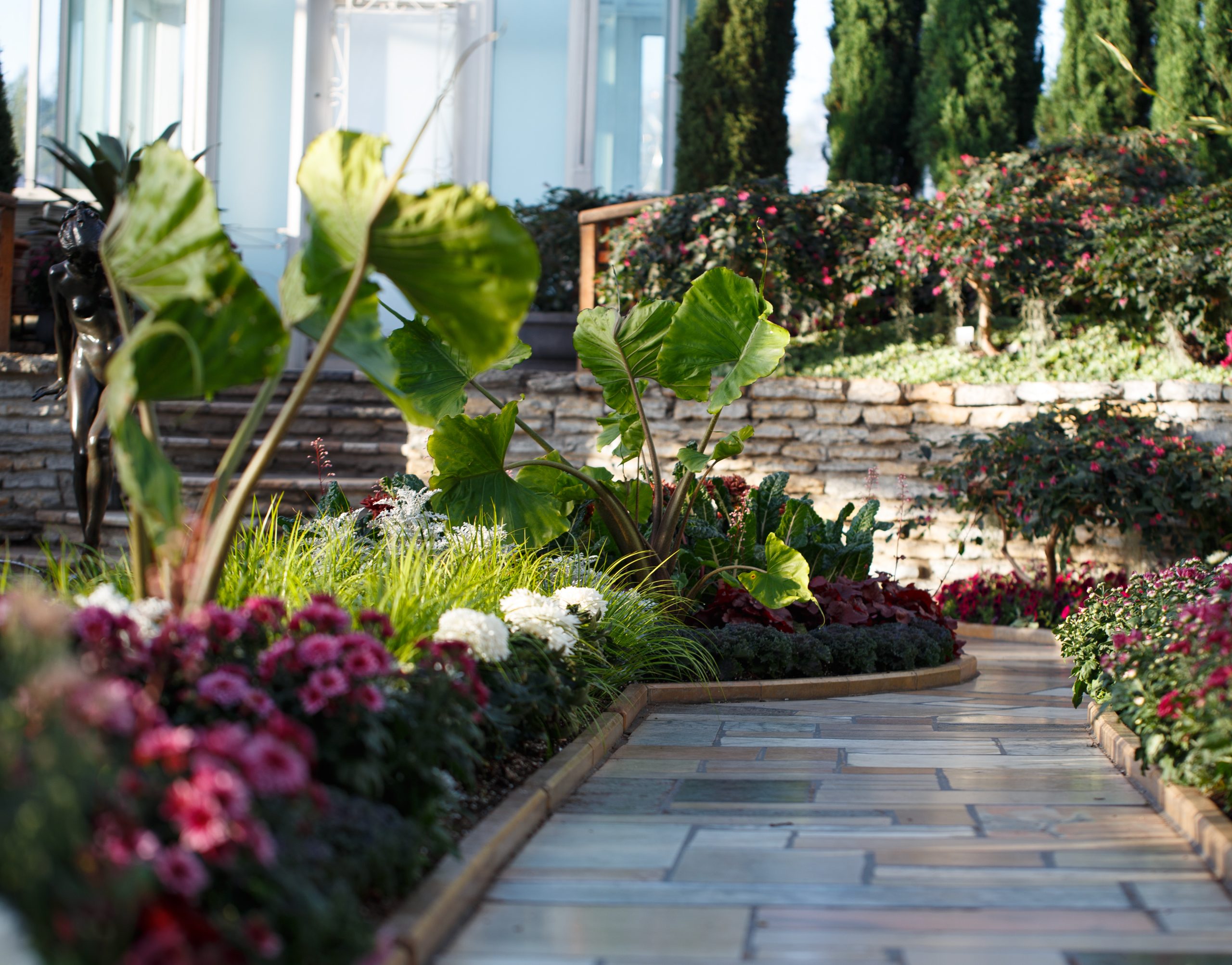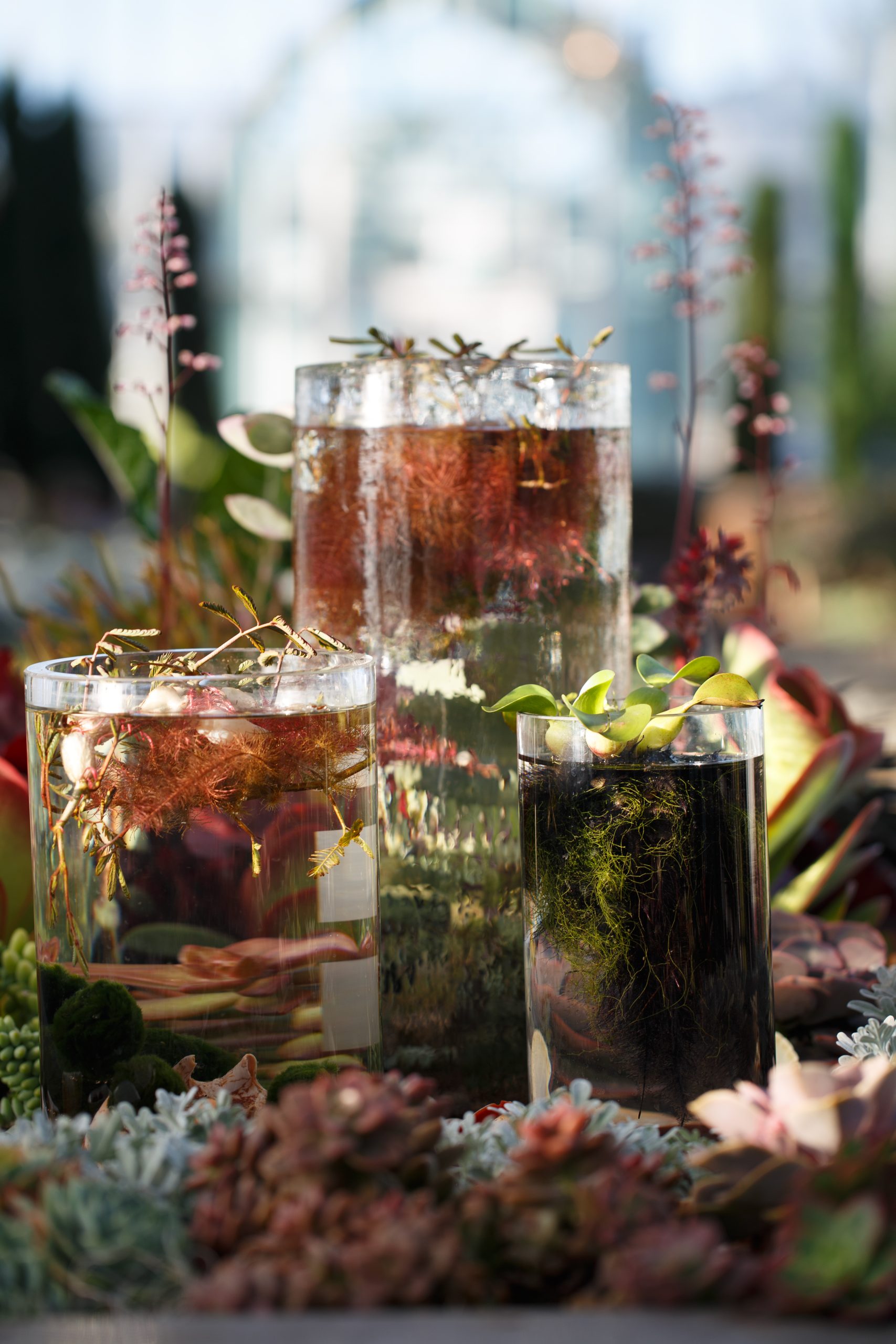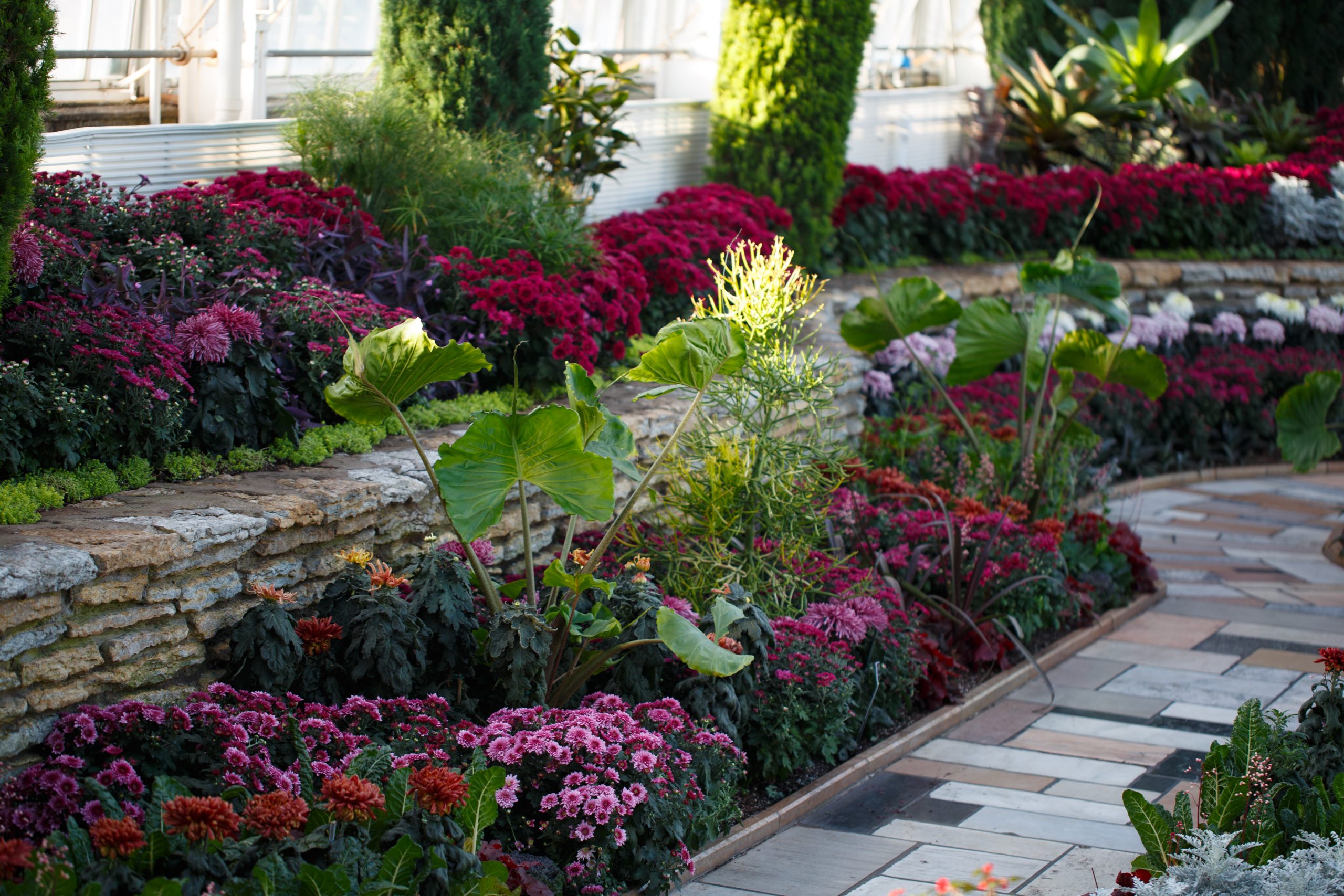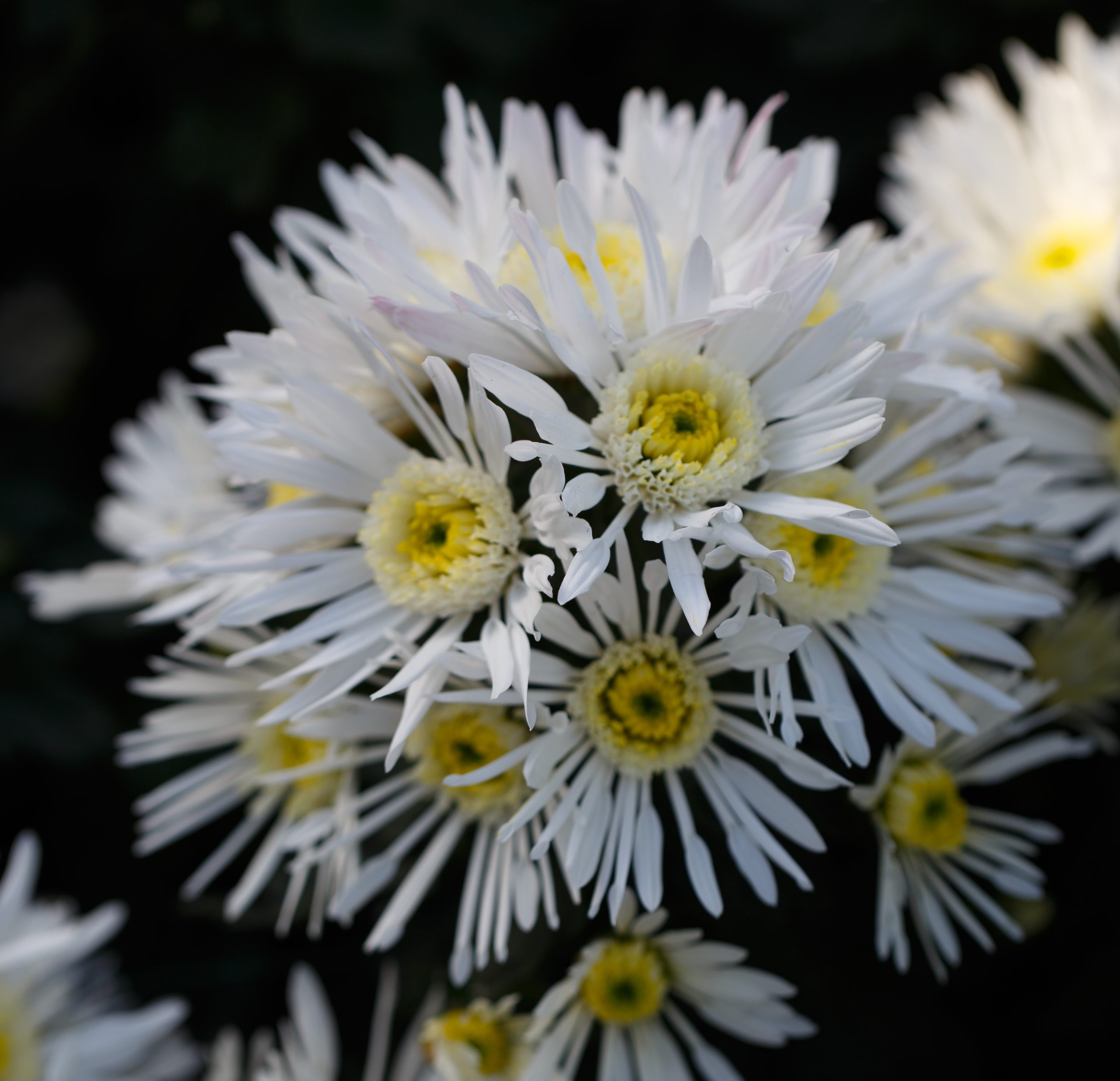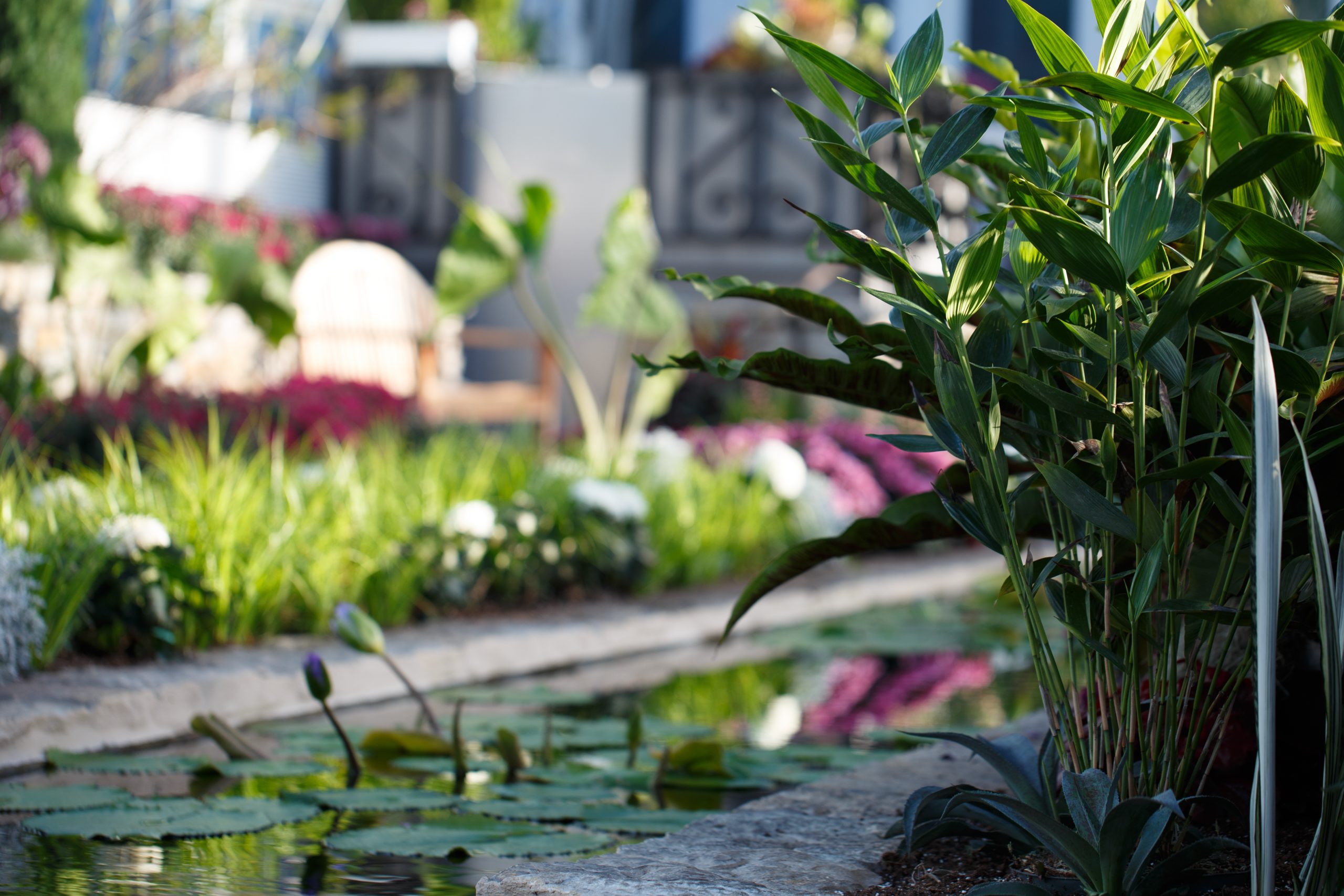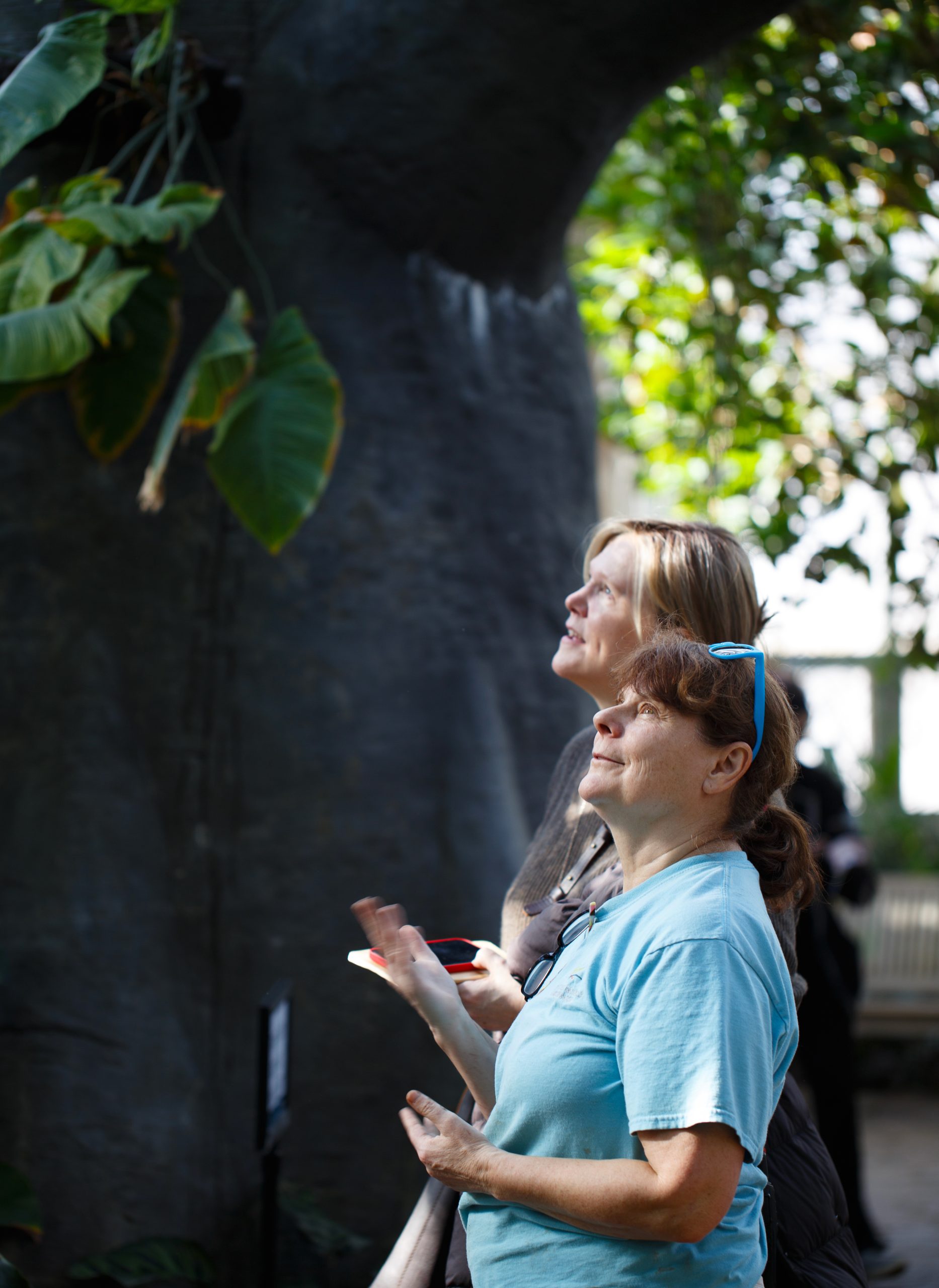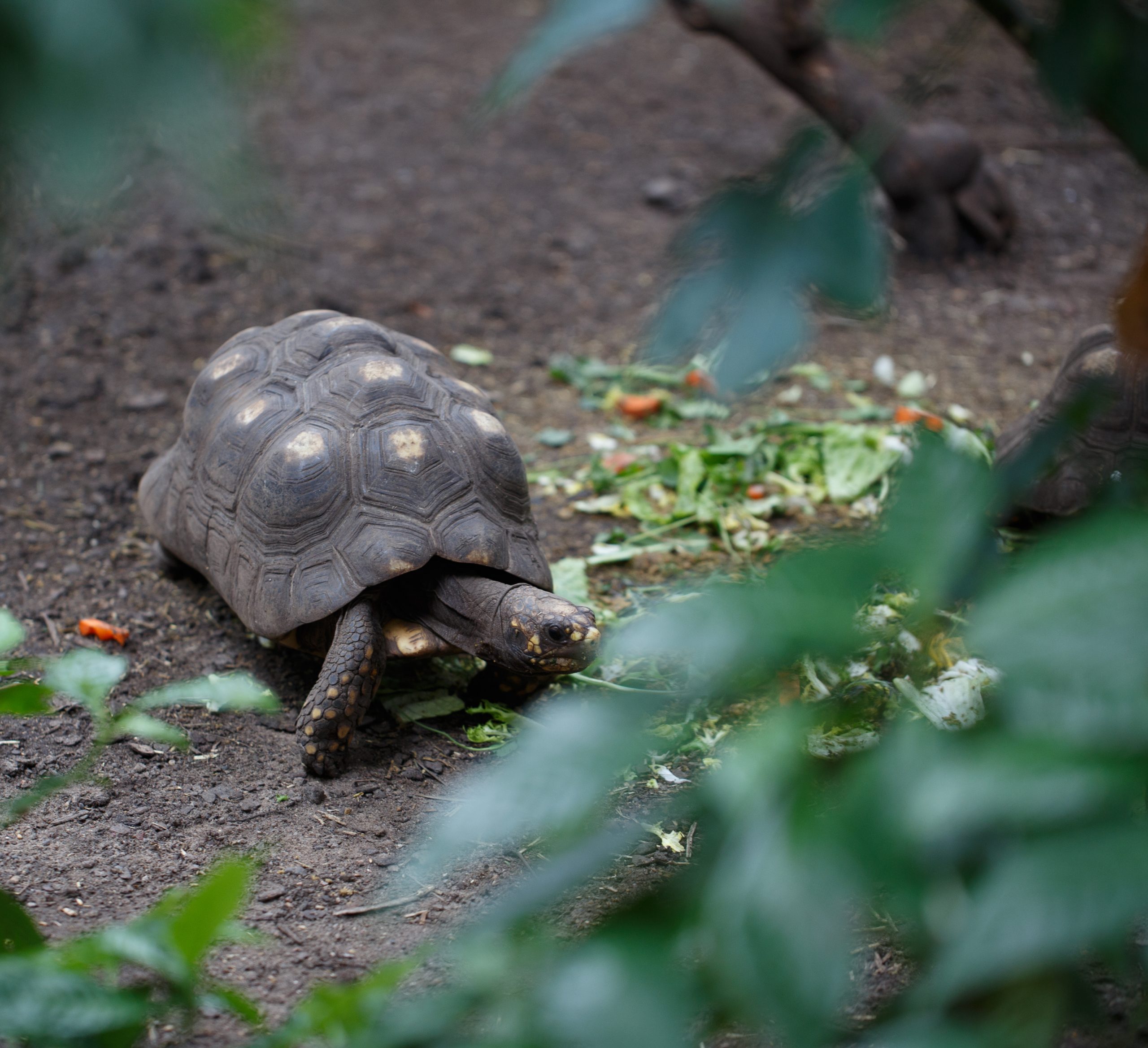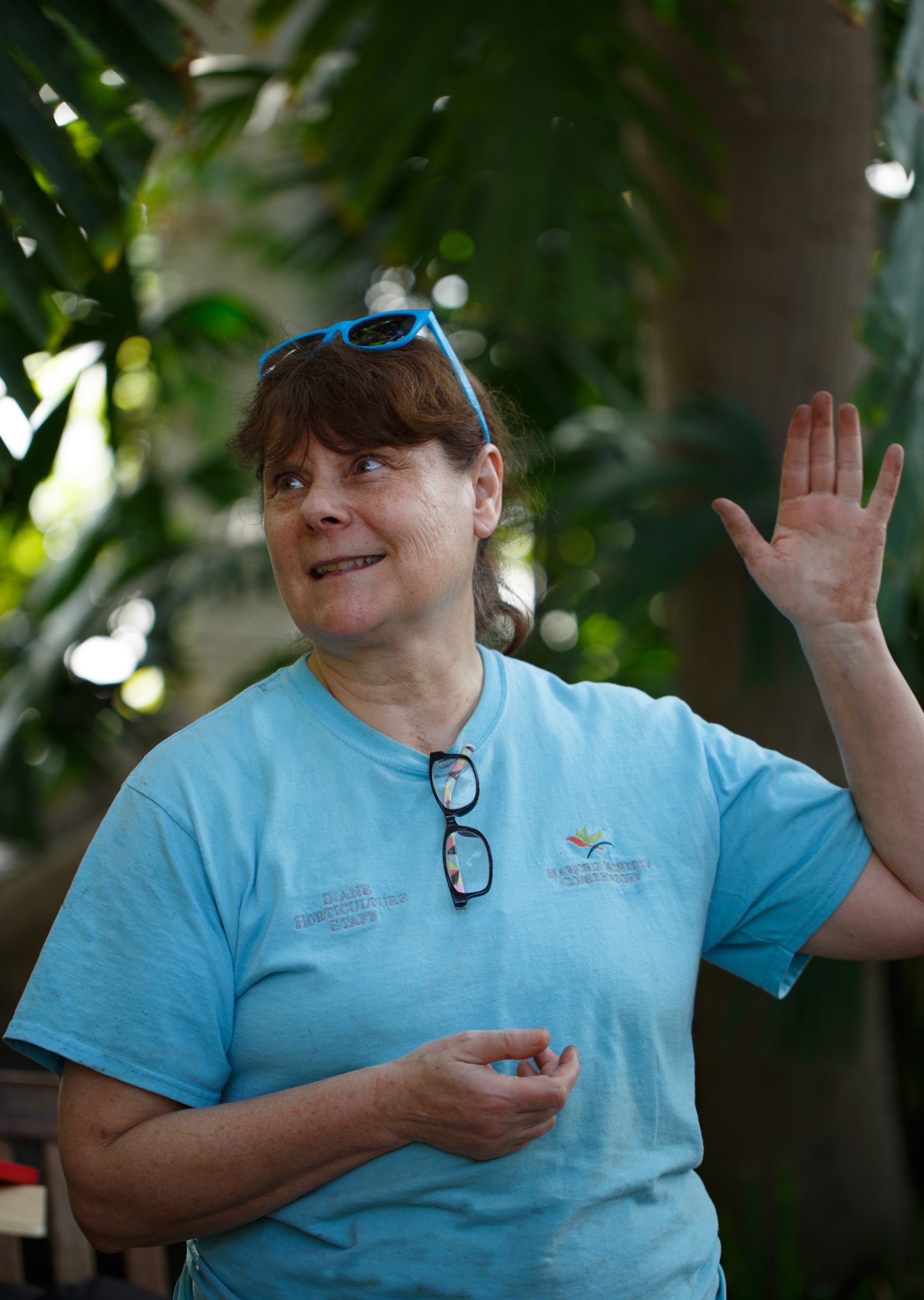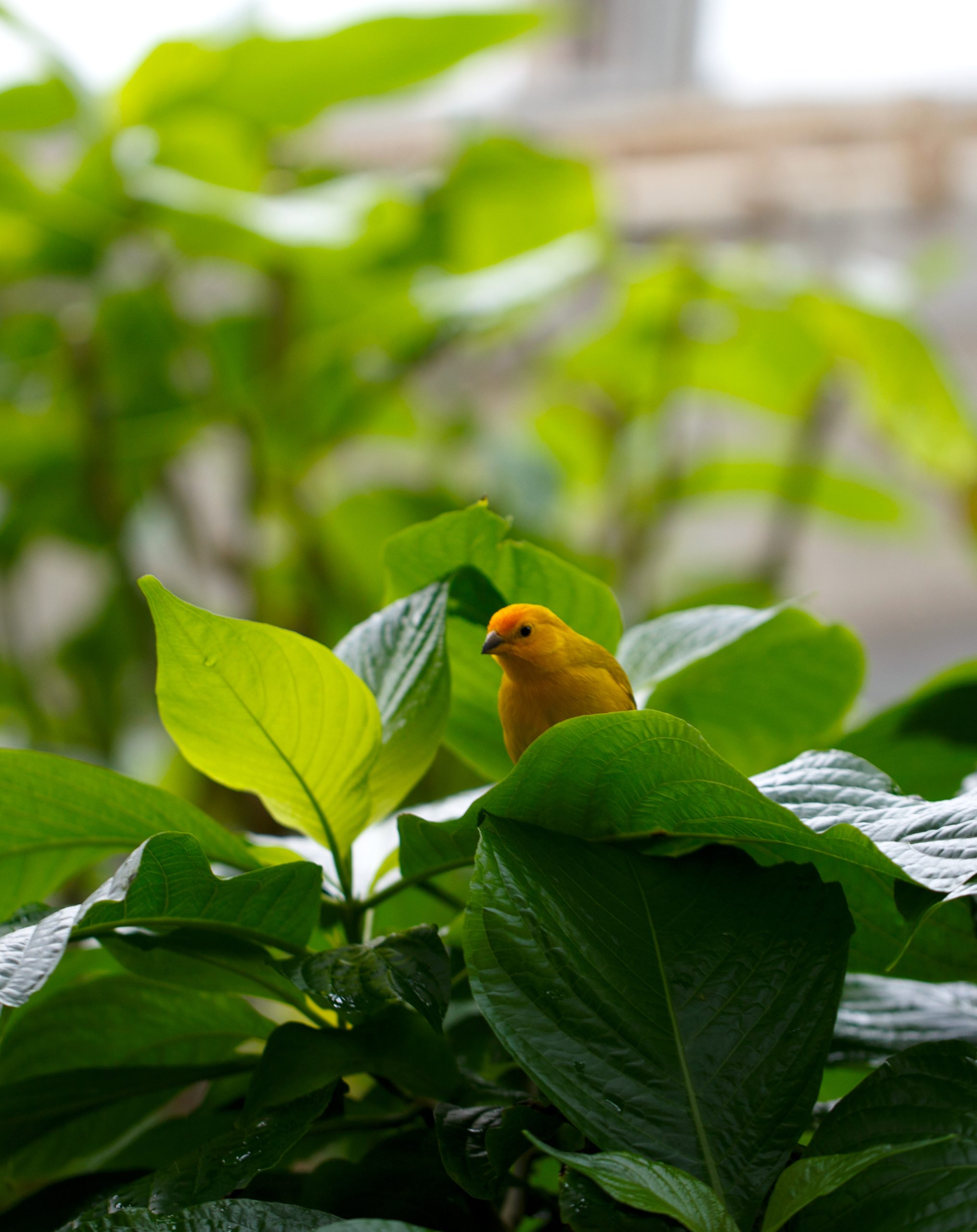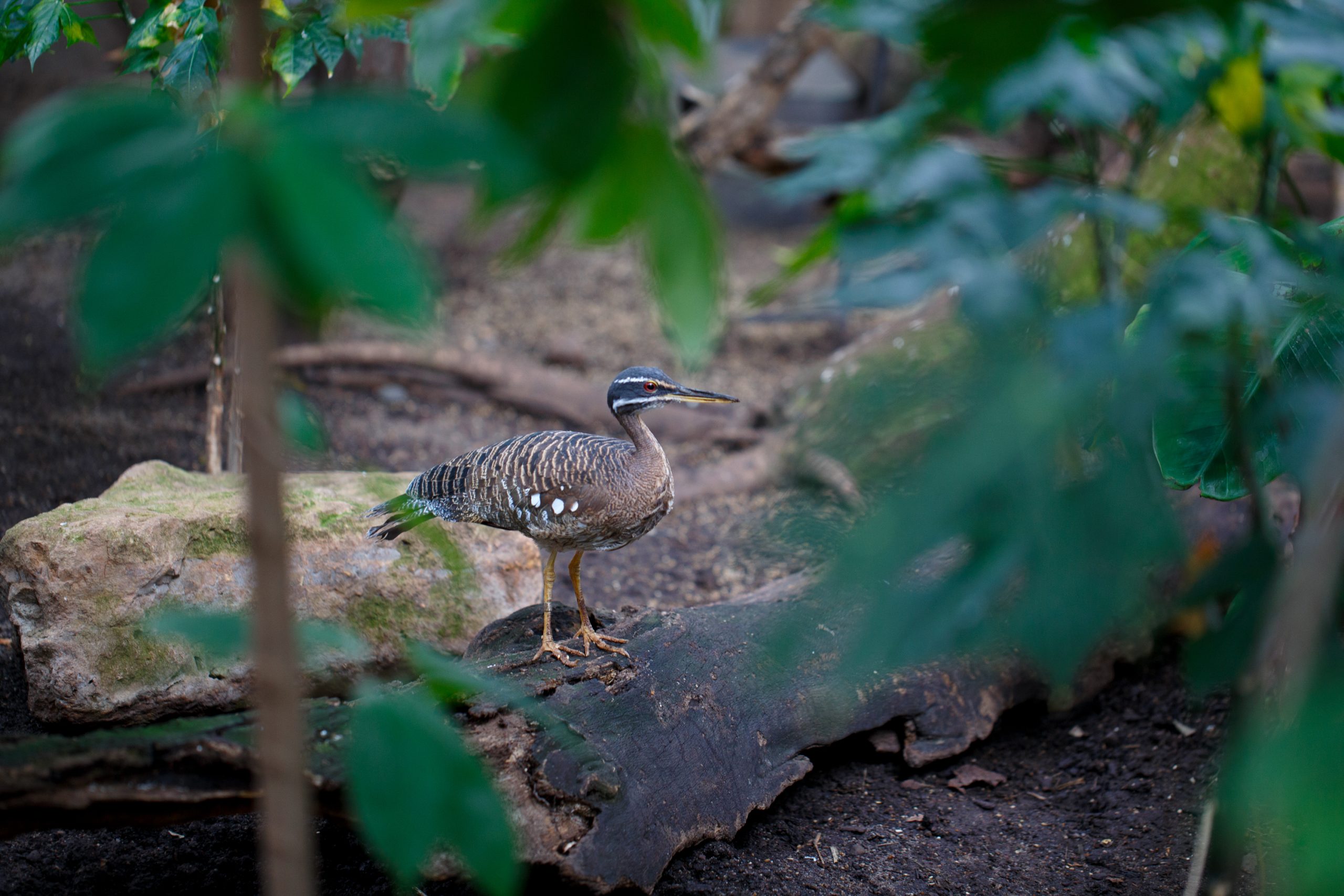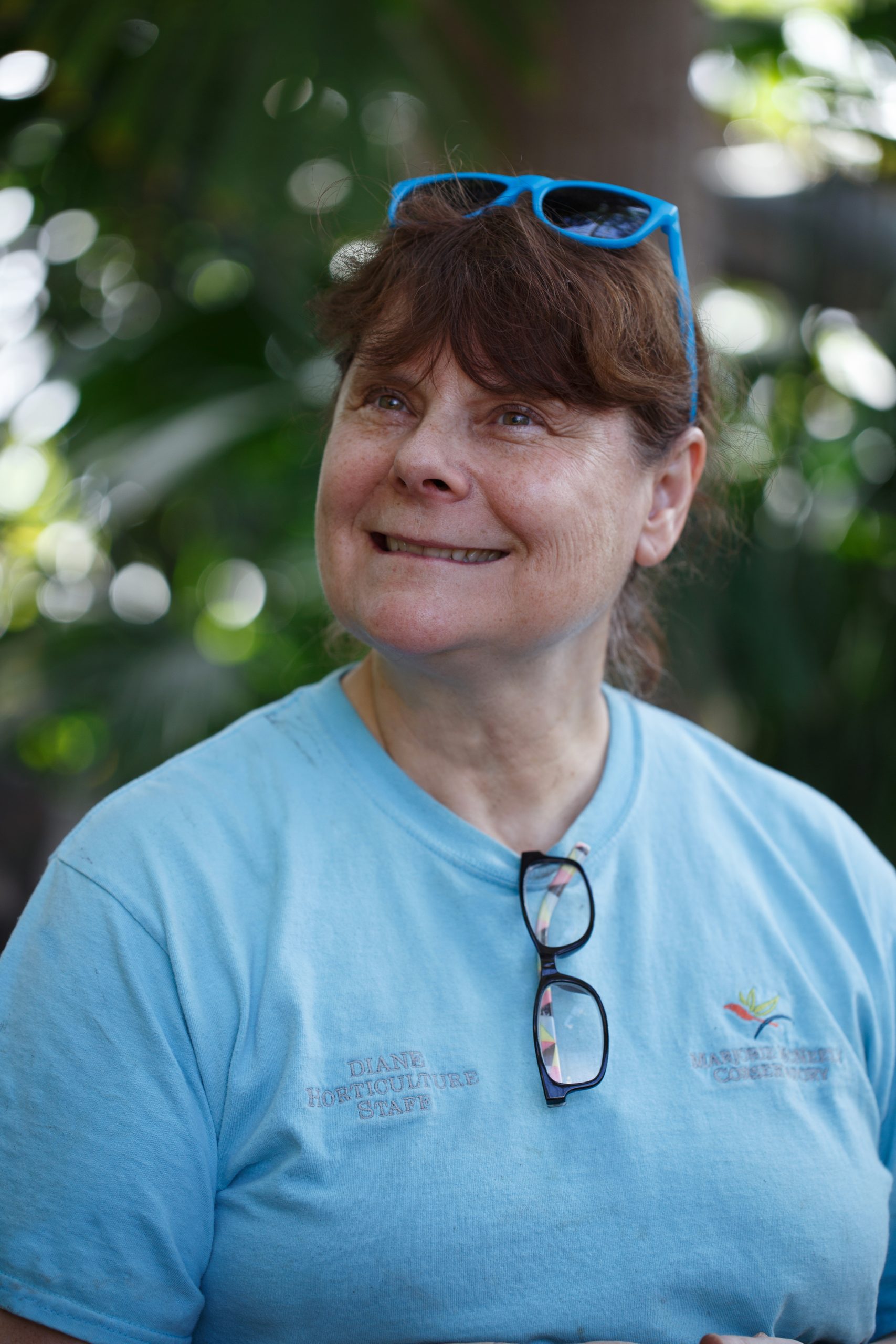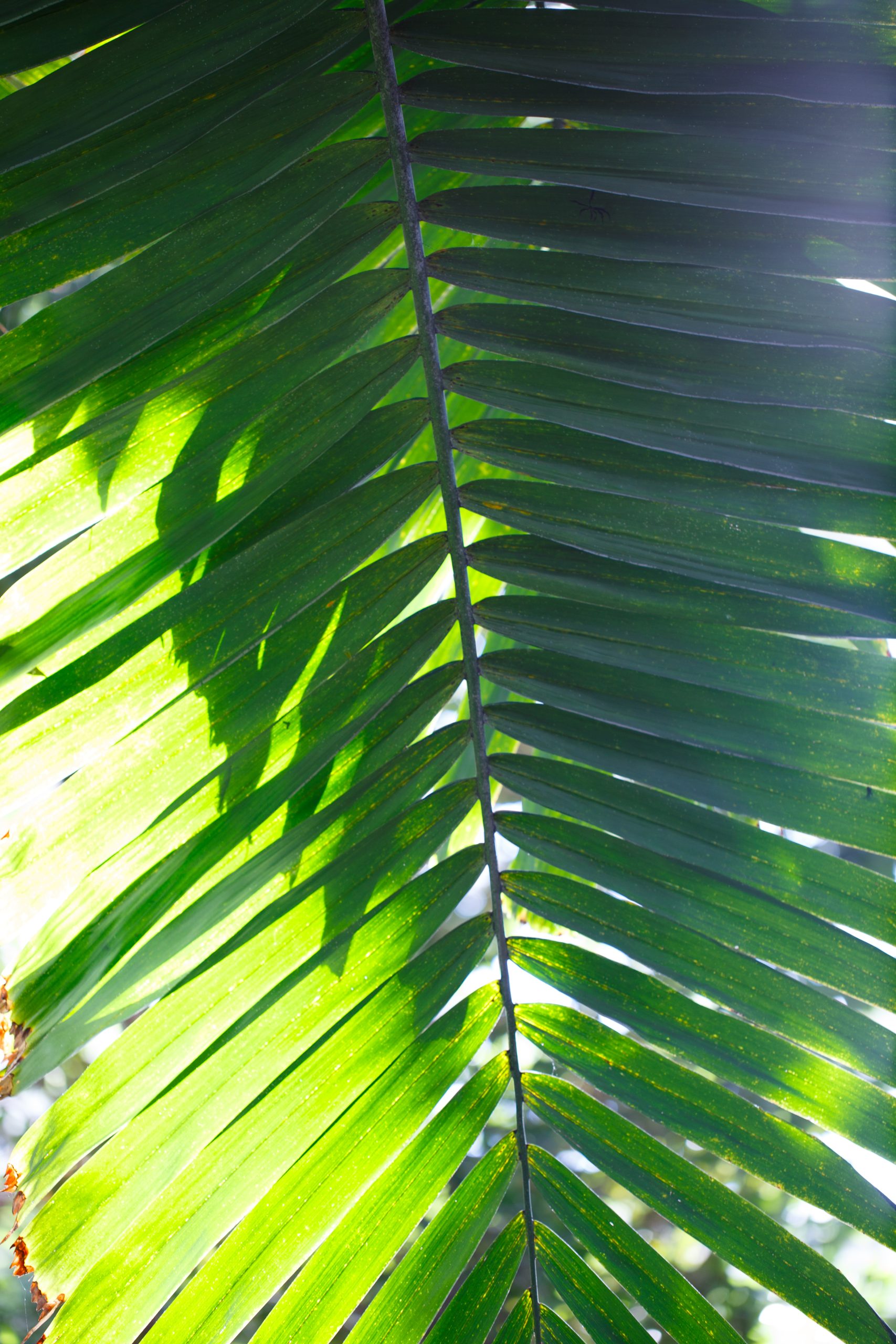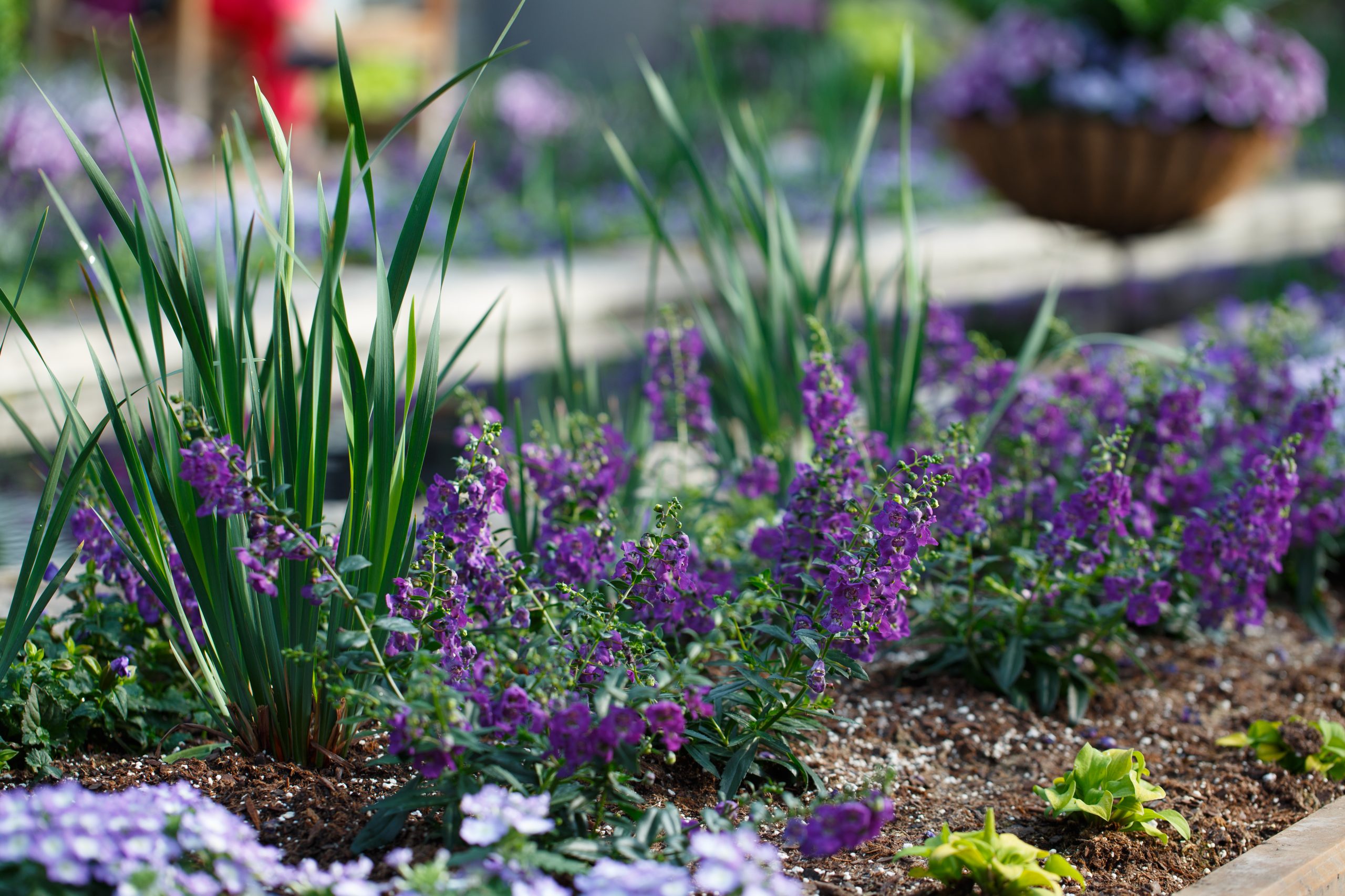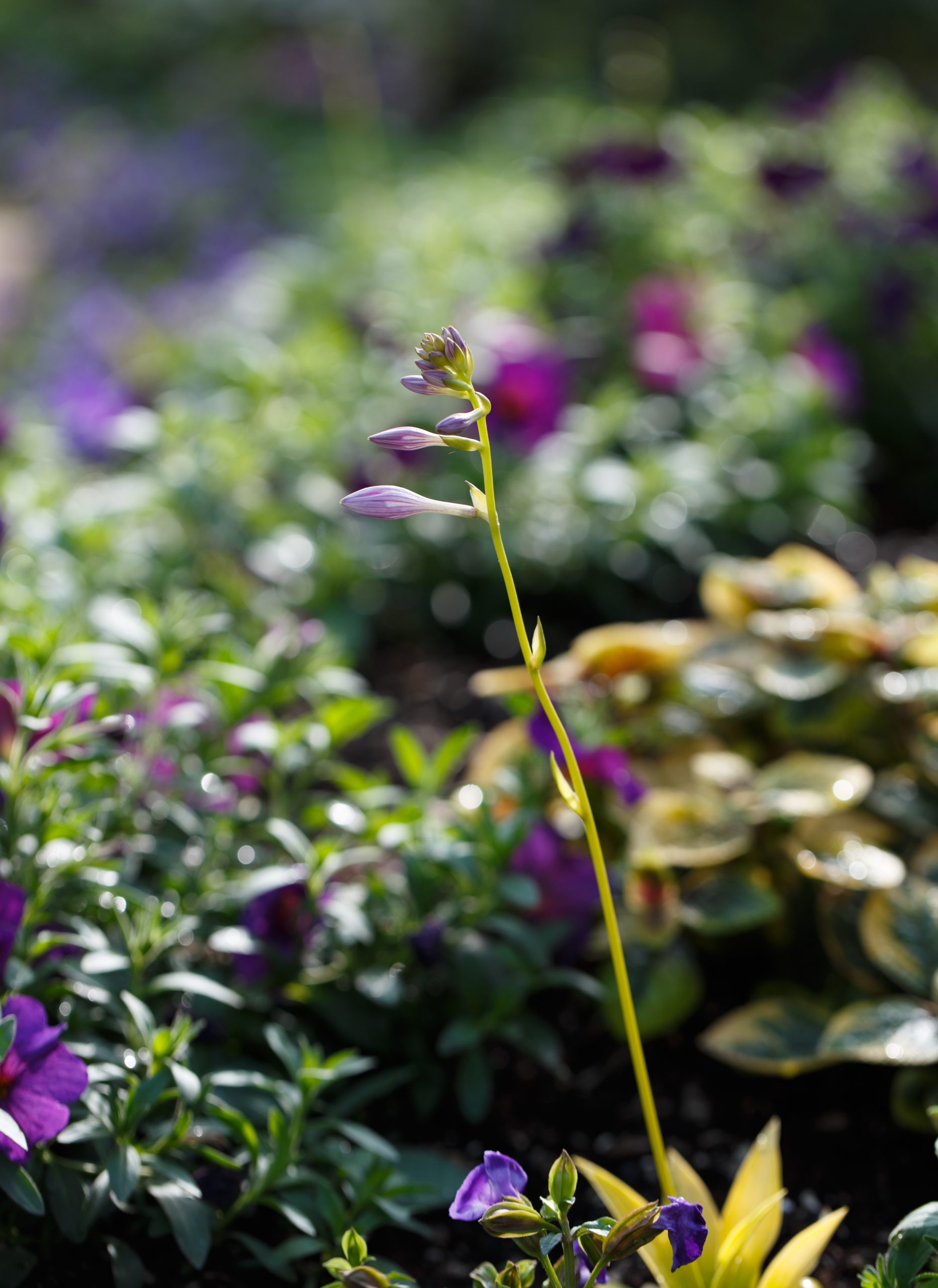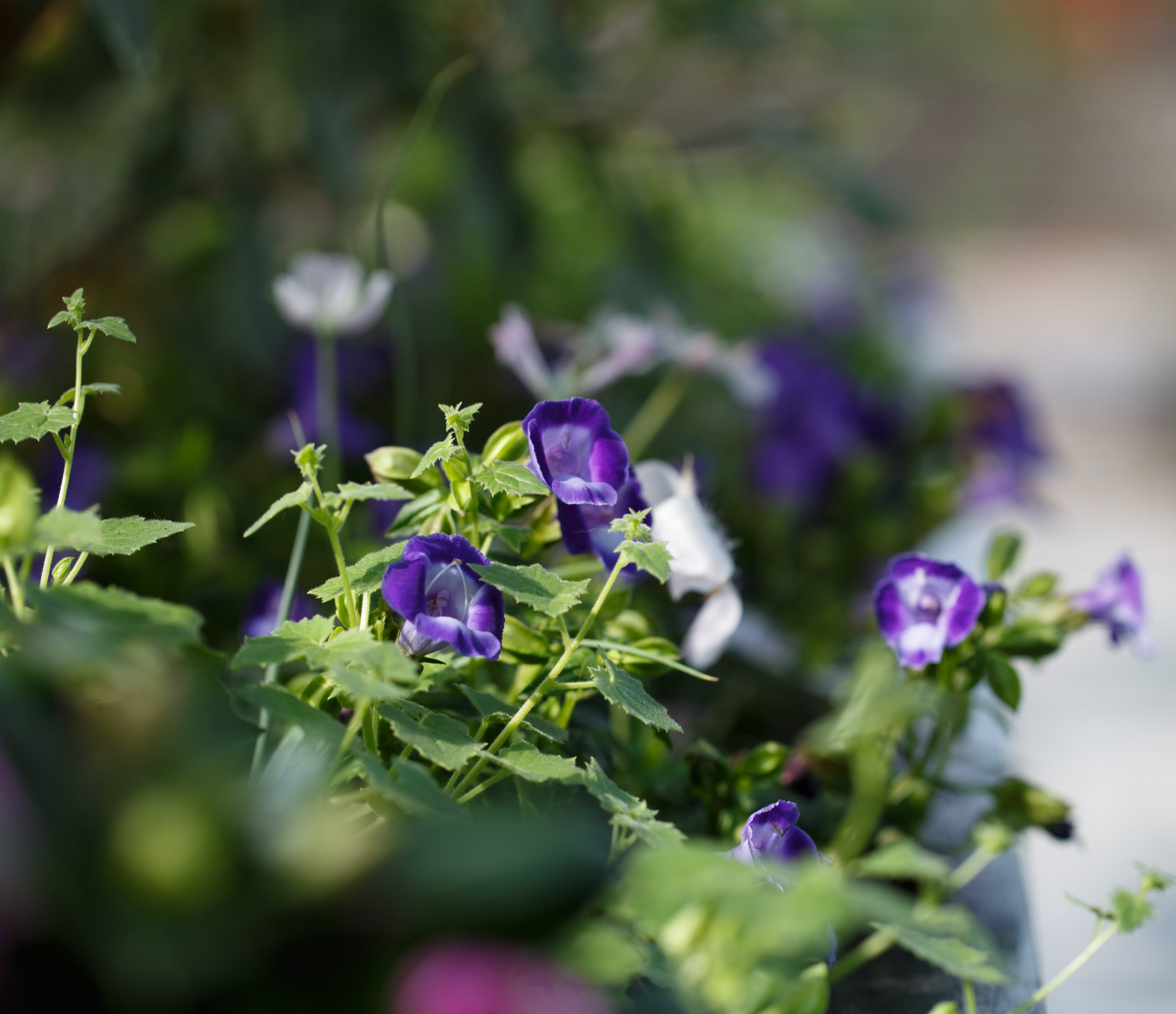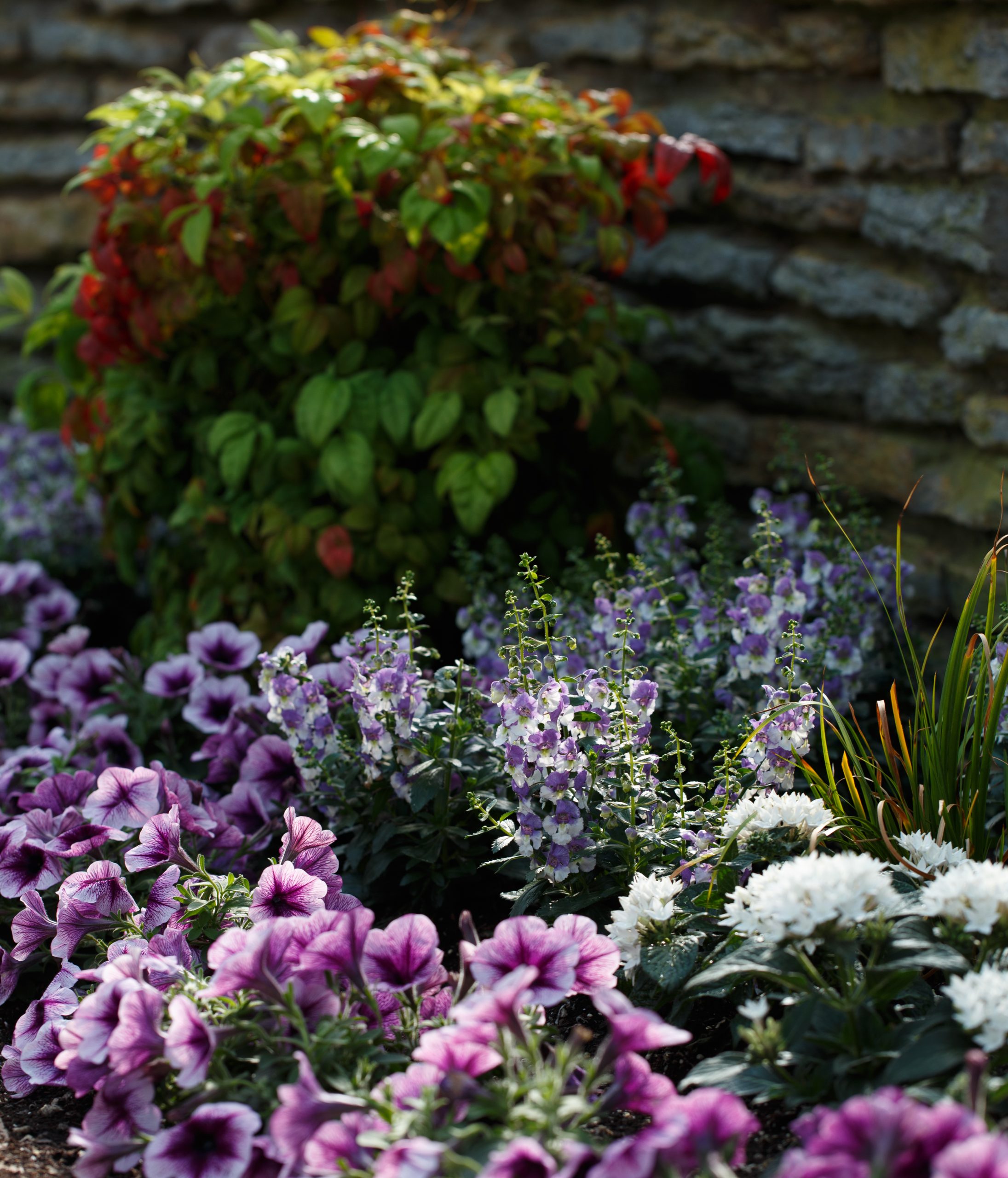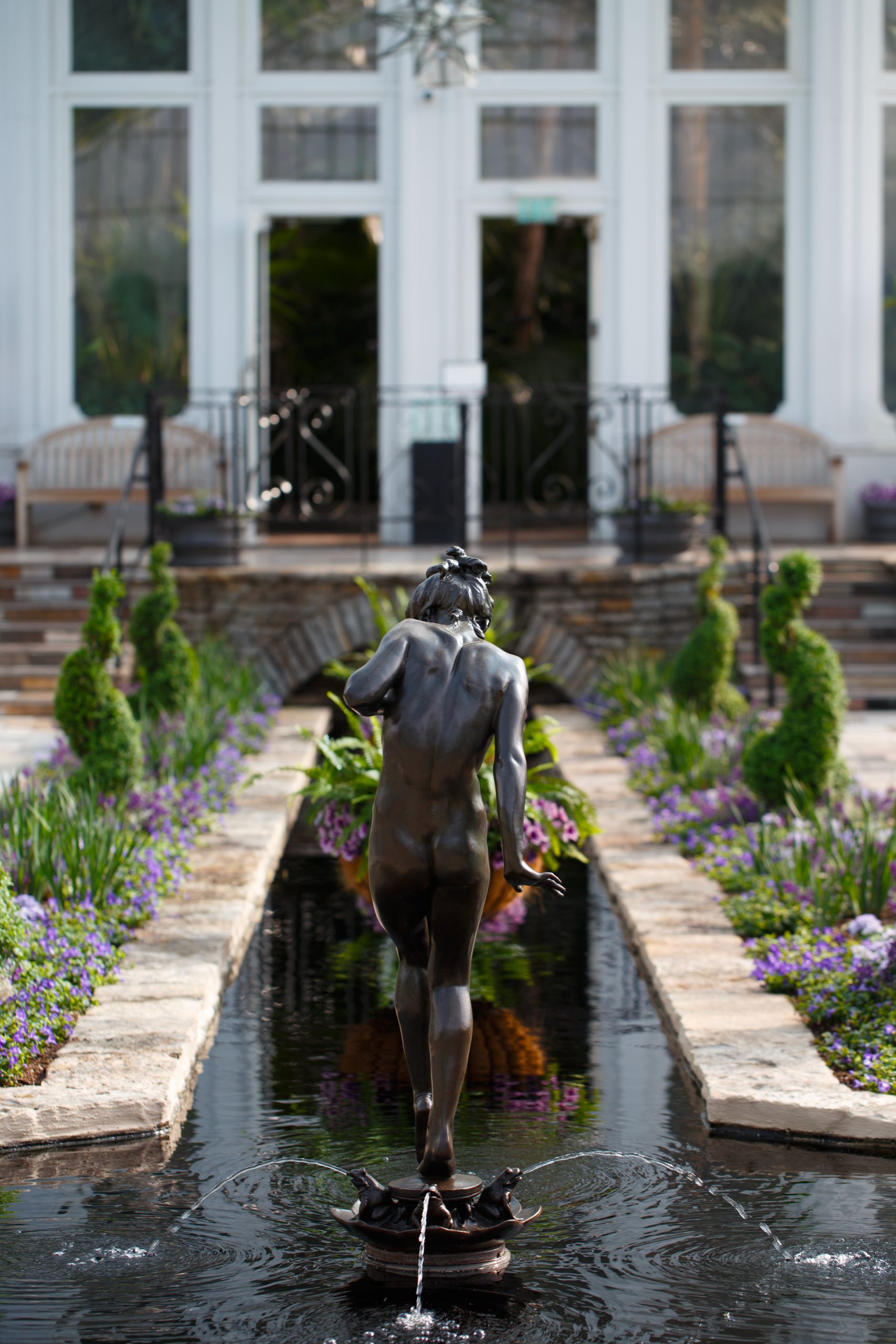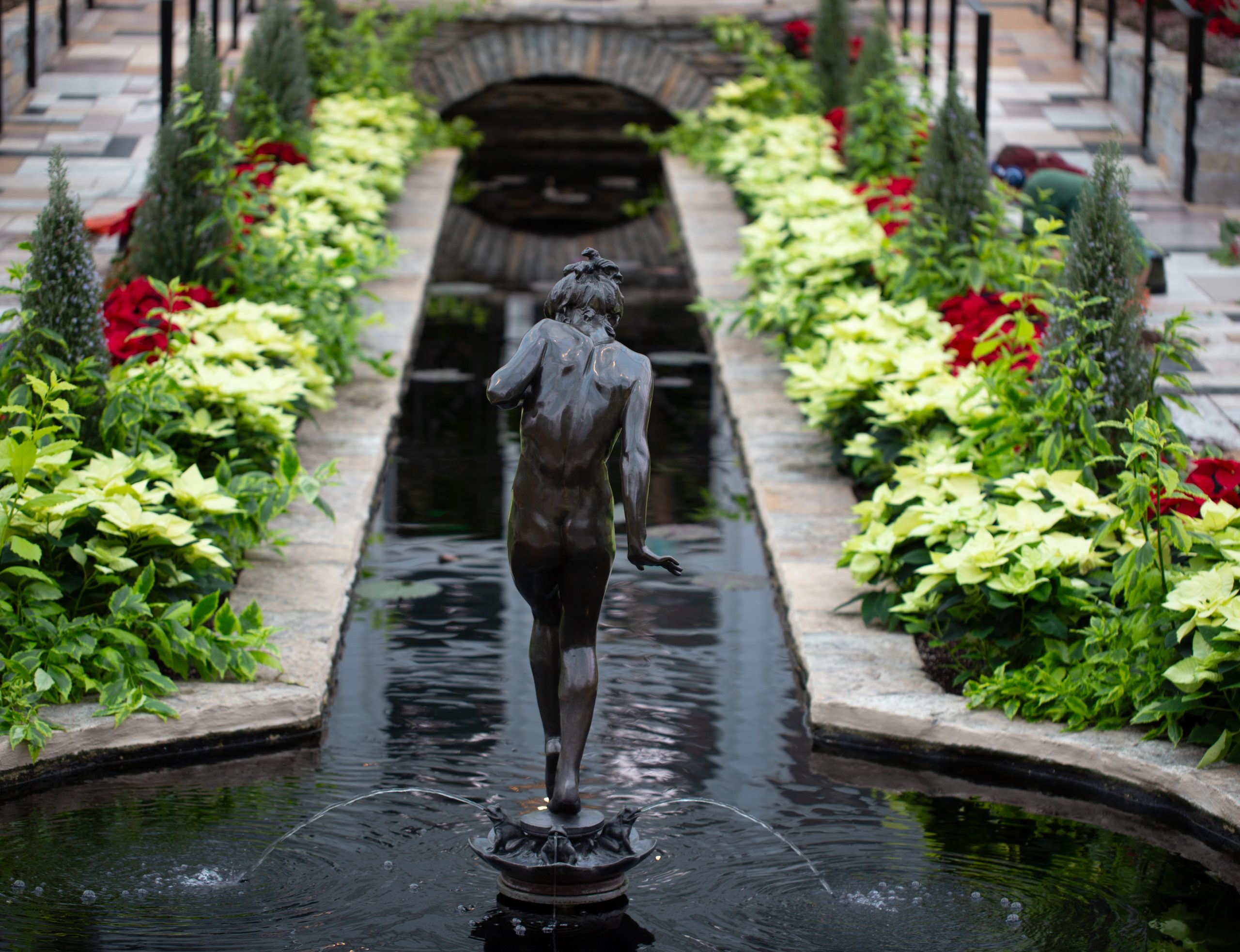
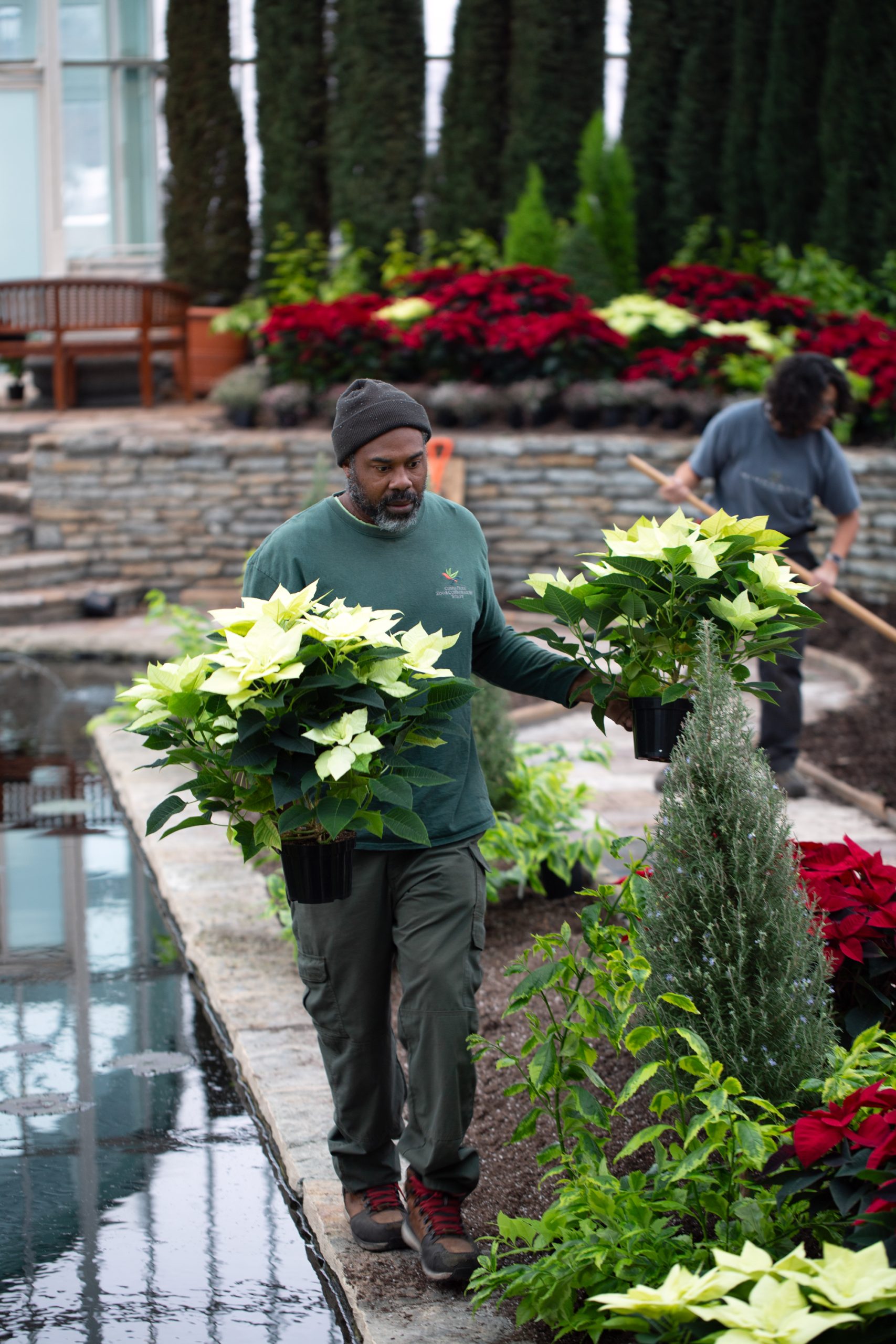
Nearly 700 poinsettias just made their debut as part of the Marjorie McNeely Conservatory’s annual holiday flower show. After being relocated to Como’s Visitor Center last year to accommodate the construction of the Sunken Garden’s new ADA-accessible ramps, the beloved seasonal flower show has returned to its roots this season.
“I would say this year’s show is traditional, but with a twist,” says Como horticulturist Bo Akinkuotu, who designed the show, now on display through January 4.

Fans of TikTok’s viral “Ralph Lauren Christmas” vibe will definitely like the rich red bracts featured in more traditional varieties such as Ruby Red, Pure White, and Jubilee Red. Visitors will also discover outside-the-box accent plants such as Duranta, Kalanchoe, Alyssum, Dusty Miller, and Green Envy poinsettias, an arresting chartreuse varietal.
“There are some camps that really prefer the familiar, traditional reds, and others that want to see something new every time they come to the Sunken Garden,” he says. “With this show, we’re trying to strike a balance by featuring some familiar favorites along with some new elements.”
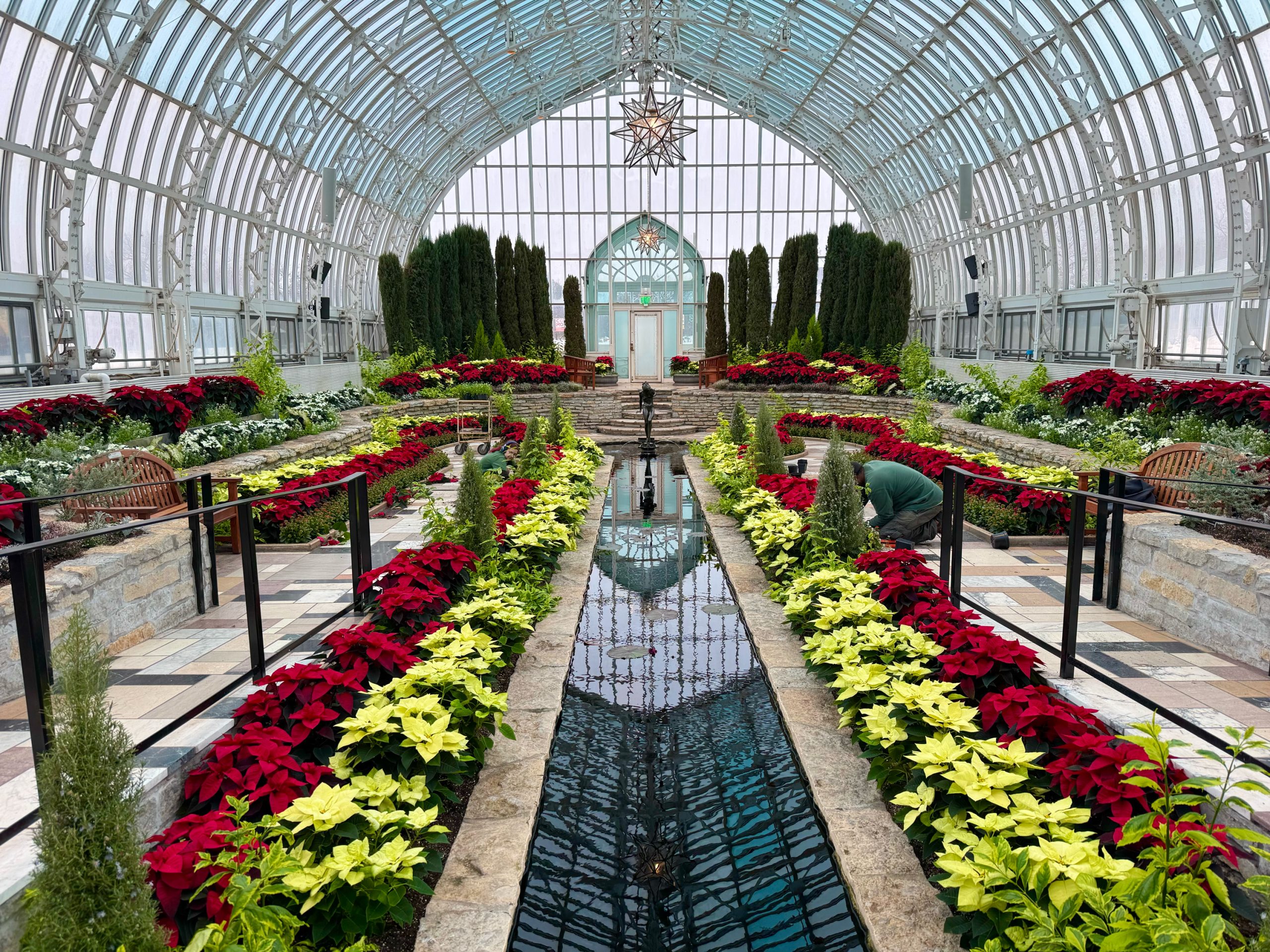

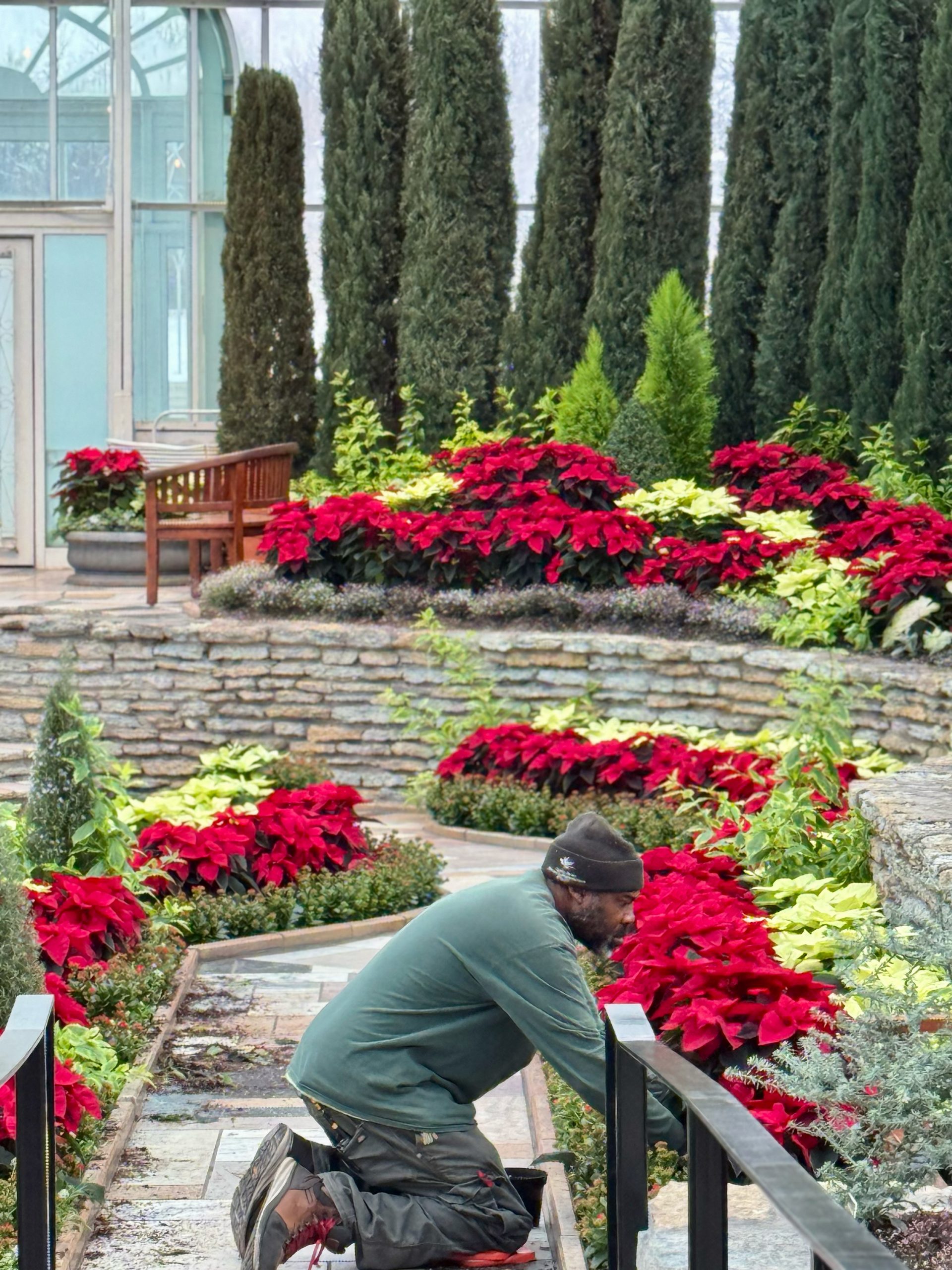
As many home gardeners know, cultivating these temperamental tropical plants in the cold of winter takes careful planning and attention to detail. “They can be a little bit fussy as a houseplant, and most people probably don’t have the patience for it,” he says.
As in years past, poinsettias will be available for purchase in the Como Friends Gift Shop throughout the holiday season, with every sale helping support the plants and animals we all love at Como.
In fact, Akinkuotu started preparing for the show several months ago, planting more than 1,500 poinsettias and accent plants to create adequate replacements for plants that may fade or lose their leaves during the course of the show. During the final eight weeks of the growing cycle, shades were drawn over the poinsettia growing area to help bring them into bloom. Plunging the plants into darkness for at least 13 hours a day is the key to creating the brightly colored bracts that make them a holiday favorite.
Como visitors can enjoy a profusion of poinsettias in the Sunken Garden, daily through January 4. Thanks to your contributions to Como Friends, the Marjorie McNeely Conservatory’s five seasonal flower shows are always free to visitors.
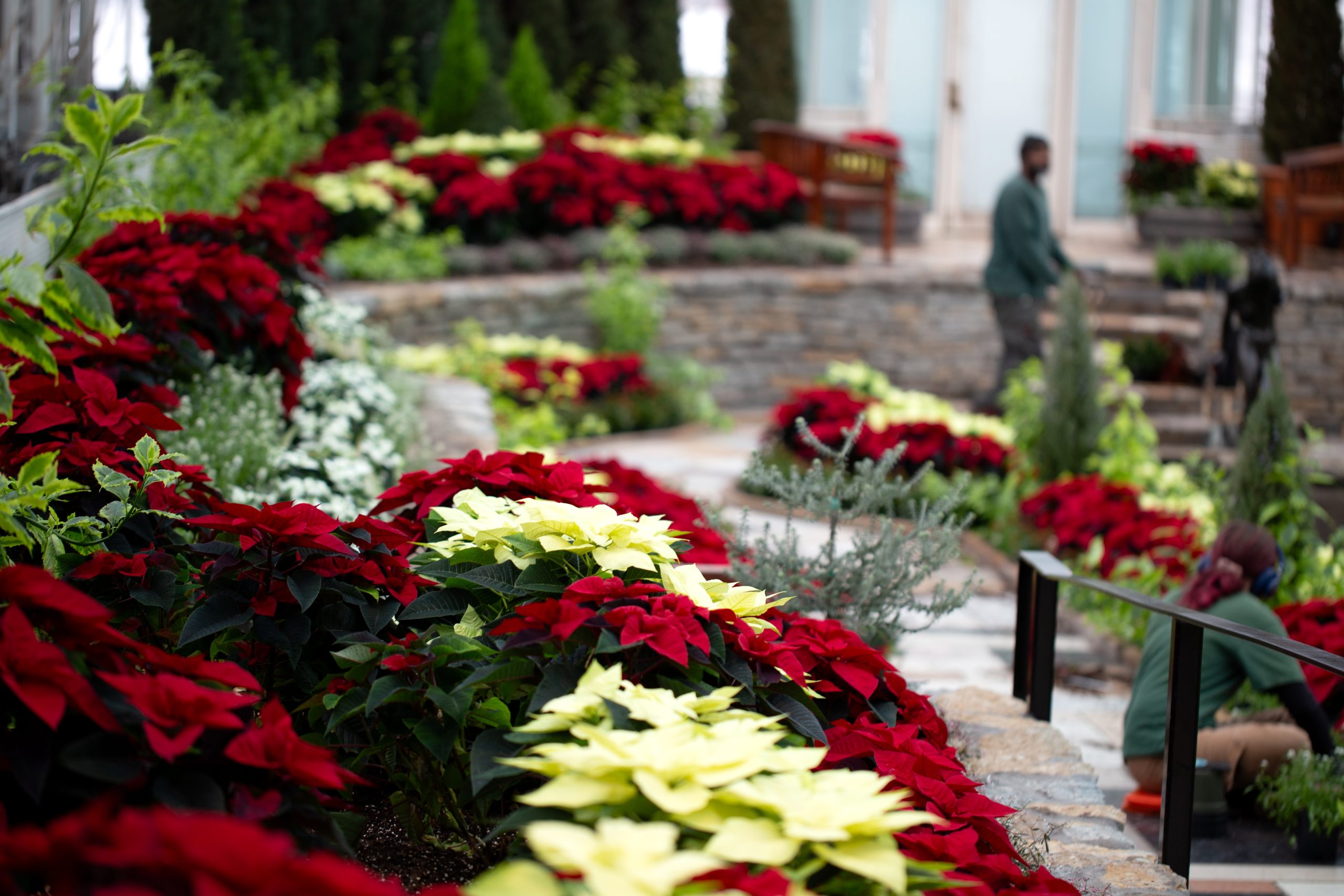
Plant List
Alyssum (Carpet of Snow); Caladium (Gingerland); Chamaecyperus; Coastal rosemary Coleus; Dieffenbachia; Duranta (Lrg Gold Edge); Duranta (Med Gold Edge); Duranta (Sm Gold Edge); Dusty Miller; Silver Dust; Euphorbia (Starblast Pink) Jacoranda; Kalanchoe (Fuego); Lemon cypress; Pittosporum; Poinsettia Ruby Red (Lrg); Poinsettia Ruby Red ; Poinsettia Green Envy; Poinsettia Jubilee Red; Poinsettia Pure White; Rosemary topiaries
Horticulturist Rylee Werden plays with perspective in the first half of the Fall Flower Show with the Parallax View
The second half of the Fall Flower Show features a saturated palette and poisonous plants
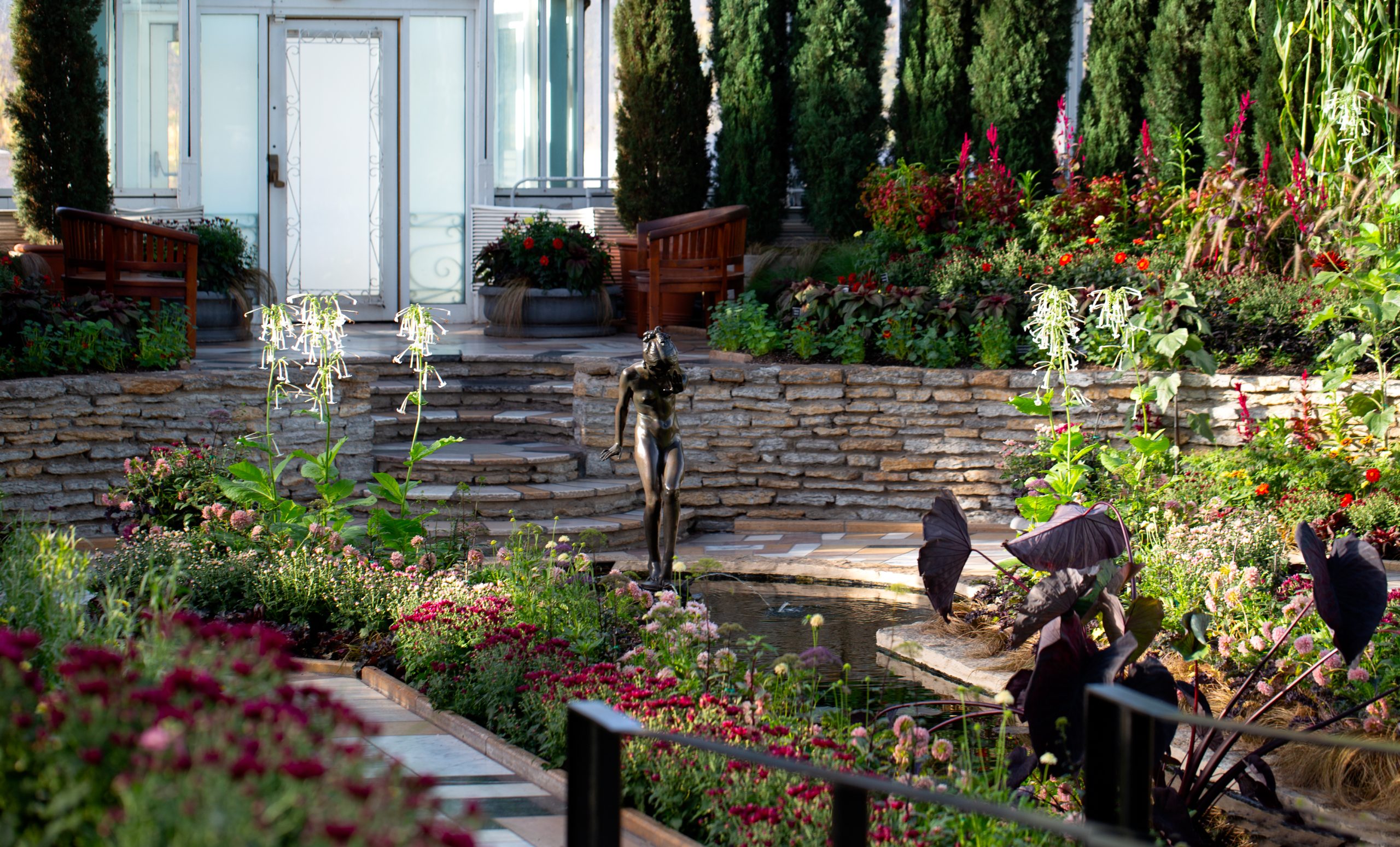
After a sunny start to the Fall Flower Show, the mood in Minnesota’s most beautiful room has gone a little Goth, with the introduction of a new palette of saturated black, red, and purple chrysanthemums, and the third Mum color is a light pink and white bicolor flower, “Spring Pink”, to contrast the dark colors.
“After the brightness of the first half of the show, you’ll notice a very different feel to the room with these deeper, darker colors,” says horticulturist Rylee Werden, who designed both halves of the Fall Flower Show, now on display through November 30.
In keeping with the Halloween feel of the season, visitors have been very interested in a featured tomato-relative—the Naranjilla plant, Solanum quiotense—a variety known as “bed of nails” for the seemingly blood-letting spikes on its leaves. Complementing the dark traditional mums are purple datura, a poisonous plant that Werden grew from seed she collected at home.
“They’re a favorite with visitors because they do smell great, but you shouldn’t eat them!” she says.
Thanks to your contributions to Como Friends, the Marjorie McNeely Conservatory is open every day of the year and is always free to visitors. The Fall Flower Show runs through November 30, and the Holiday Flower Show begins December 5.
If you’d like a sneak peek at Como’s traditional Poinsettia display, Como Friends donors and members are invited to a Special Access Event on December 4.
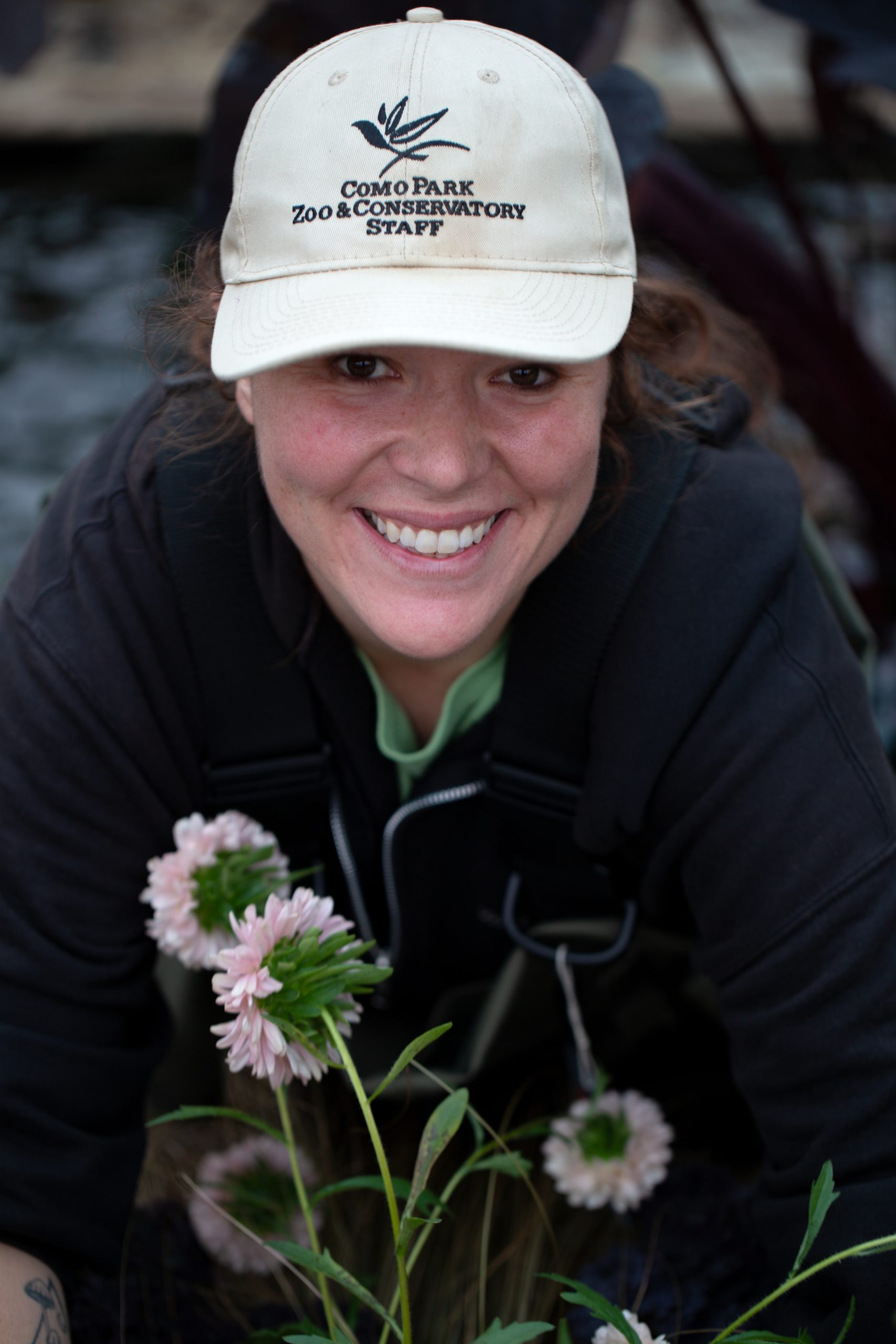
No matter what time of year you visit the Marjorie McNeely Conservatory’s Sunken Garden, the elevated view from the entryway is always stunning. But after designing several seasonal flower shows for Minnesota’s most beautiful room, Como horticulturist Rylee Werden began to wonder what it would be like to play a little more with perspective as visitors move through the room.
Inspired by the geometric patterns and intersecting lines of Art Deco, Werden decided to design the first half of the Fall Flower Show, on display now through October 19, with a sense of movement in mind. The view from the top reveals hundreds of chrysanthemums arranged in a chevron, Werden explains, “a big zig-zag across the center of the room, that features stripes of three different colors of mum—–orange, dark pink, and plum.” As visitors descend to the garden path, they’ll begin to pick up on a parallax view, she says, a perceptual phenomenon where an object’s apparent position shifts when viewed from different angles.
“I always try to think about the different perspectives of someone walking through the garden,” she says. “As you get down to the garden path, the perspective changes and you’ll see some nice grass between the mums to rest your eye, and you’ll see through those angles a bit differently.”
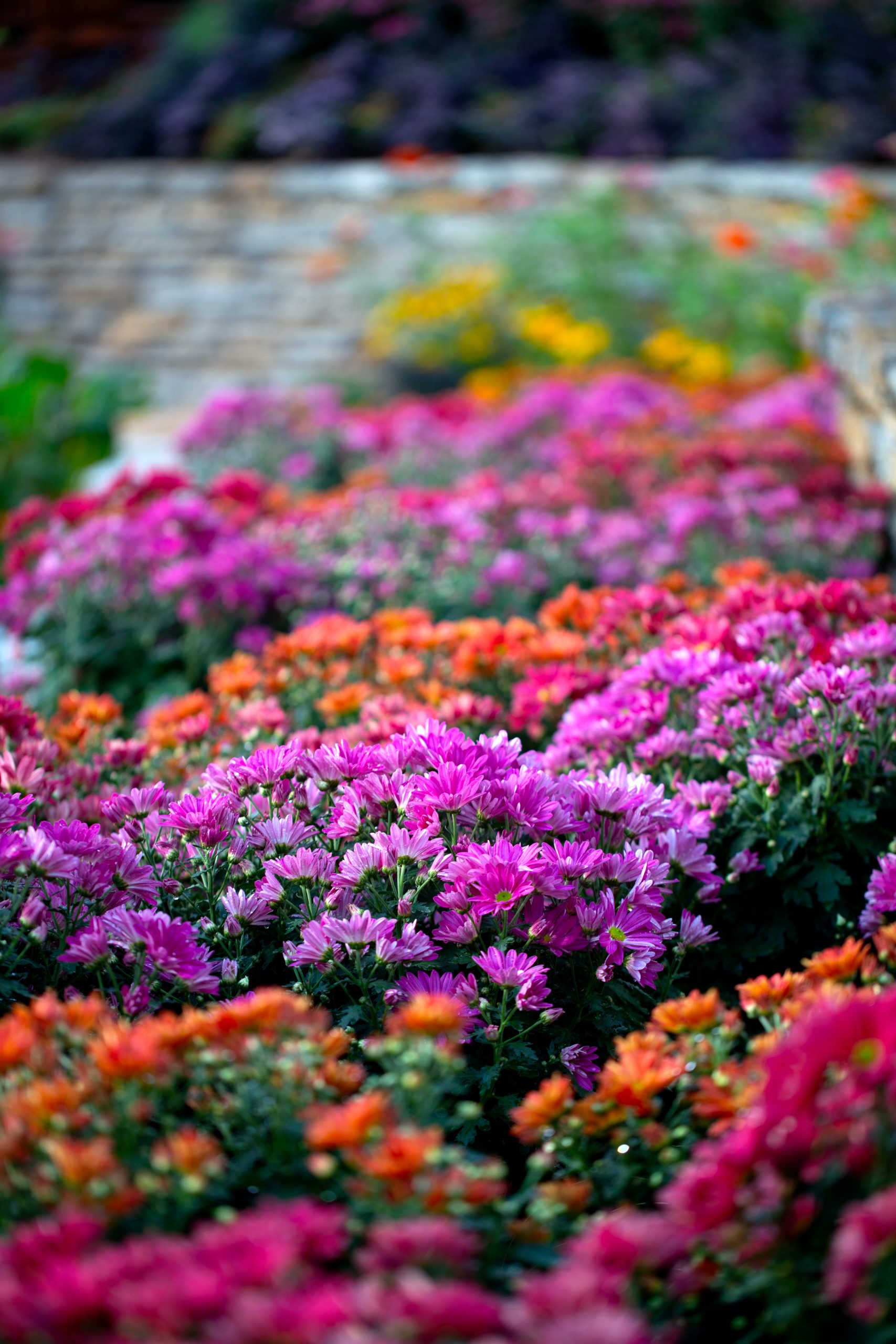
Como’s fall chrysanthemum show has been a tradition since 1915, the same year that Como’s historic Como Conservatory first opened to the public. Around the world, the chrysanthemum is seen as a symbol of longevity and happiness, but in the Midwest, the fall flower’s rich coloring and spicy scent also remind us that winter’s not far away. “That’s why it’s a great time to slow down, and enjoy the changing colors, which I think visitors will see reflected in the room,” Werden says.
Mums also signal the important role that fall’s flowering plants play in fostering healthy ecosystems. “In outdoor gardens, especially those with native plants, fall flowers are so important to feeding those pollinators before their big migrations,” she says. “Flowers like aster and goldenrod give our insects and our wildlife that last bit of juice or food they need to get them through the winter.” To see those connections, Werden suggests that visitors also stop by the Minnesota Garden, a collection of native and adaptive plants in front of Como’s Visitor Center, where horticulturists over-winter native plants to benefit birds and other wildlife. “It’s a more natural lens on what we do in the display garden to signal fall, with seed heads and plants that look ready for harvesting, like chard, broom corn, and celosia flowers.”
Cultivars of some of these native plants will be featured in the second half of the Fall Flower Show, which will be on display from October 24 through November 30. Thanks to your support for Como Friends, the Marjorie McNeely Conservatory’s five seasonal flower shows are always free to visitors.

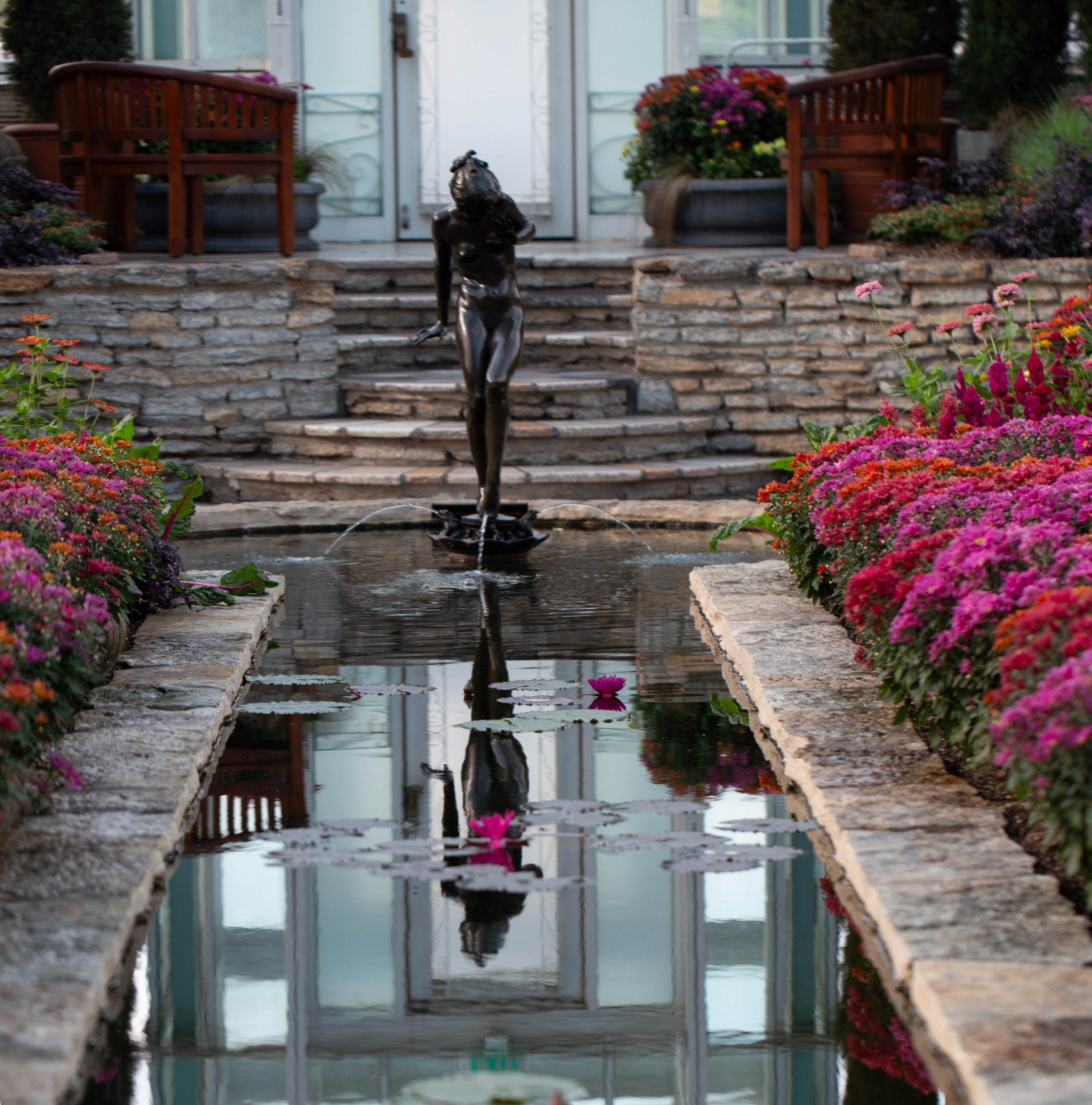
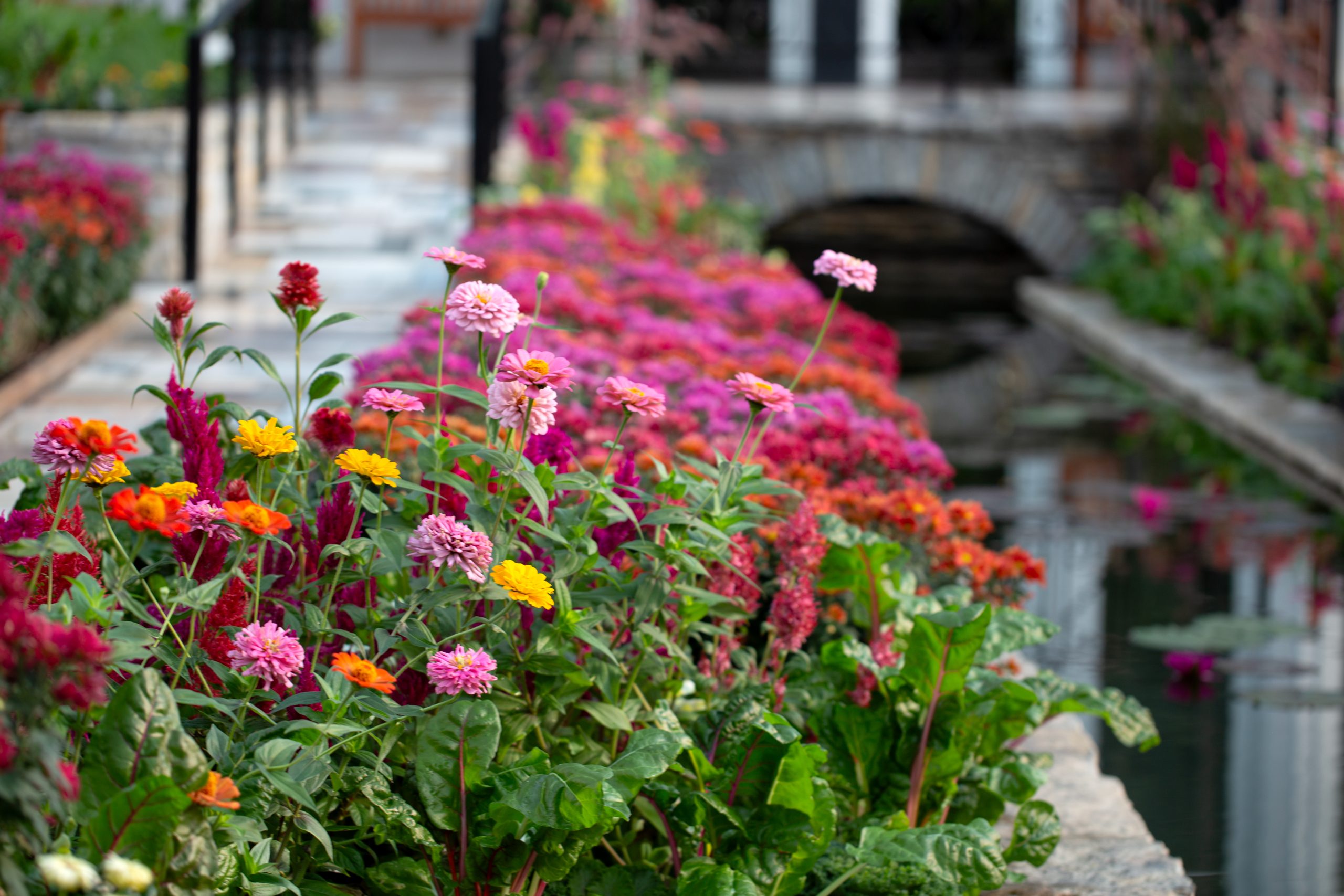
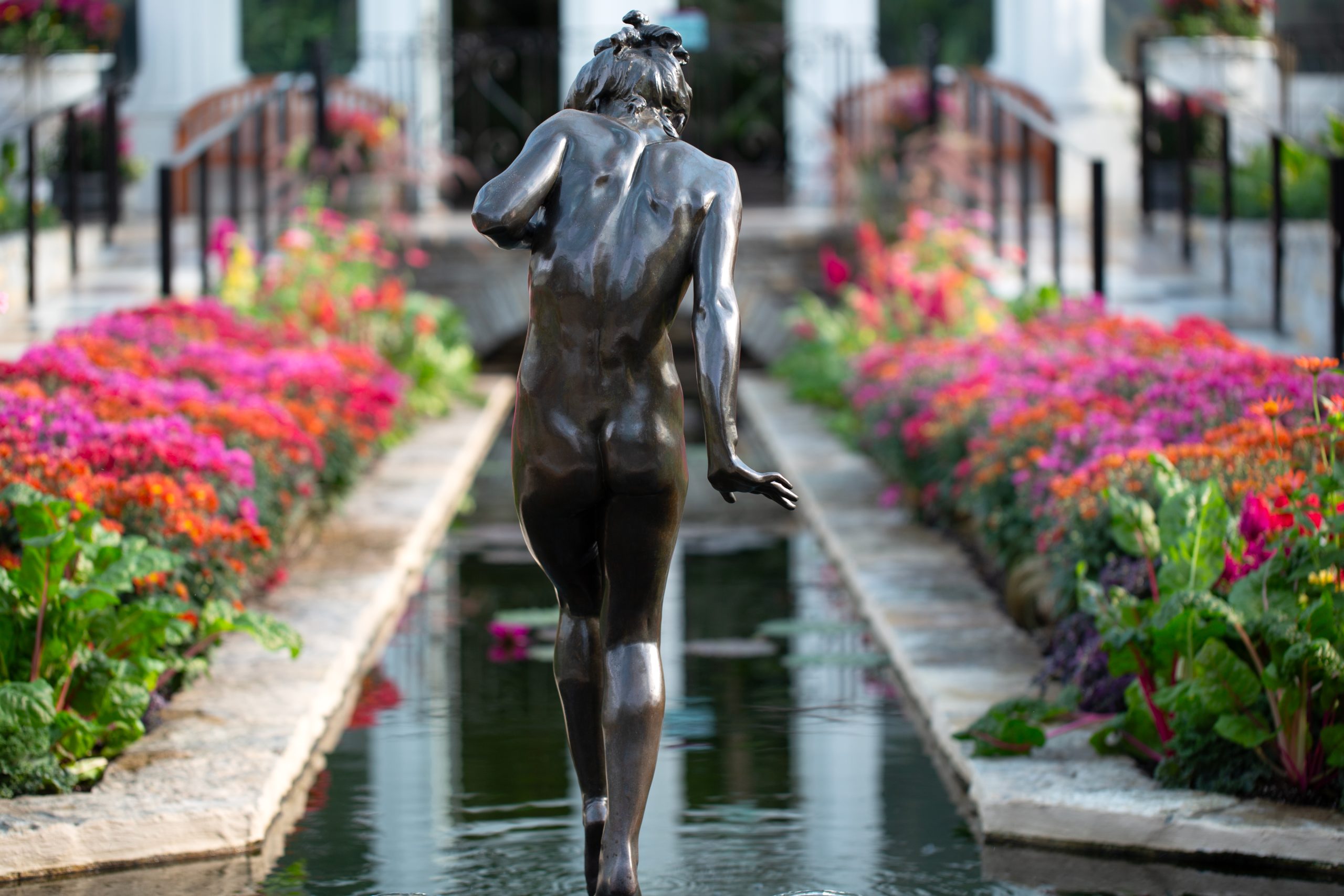
Your support for Como Friends helps ensure the Marjorie McNeely Conservatory’s seasonal flower shows are always free to every visitor. Thank you!
Bursting with black-eyed susans, butterfly weed, and dahlia, the national plant of Mexico, the new pollinator garden surrounding Como Park Zoo & Conservatory’s seasonal Gates Ajar sends a strong signal: Monarchs Welcome Here!
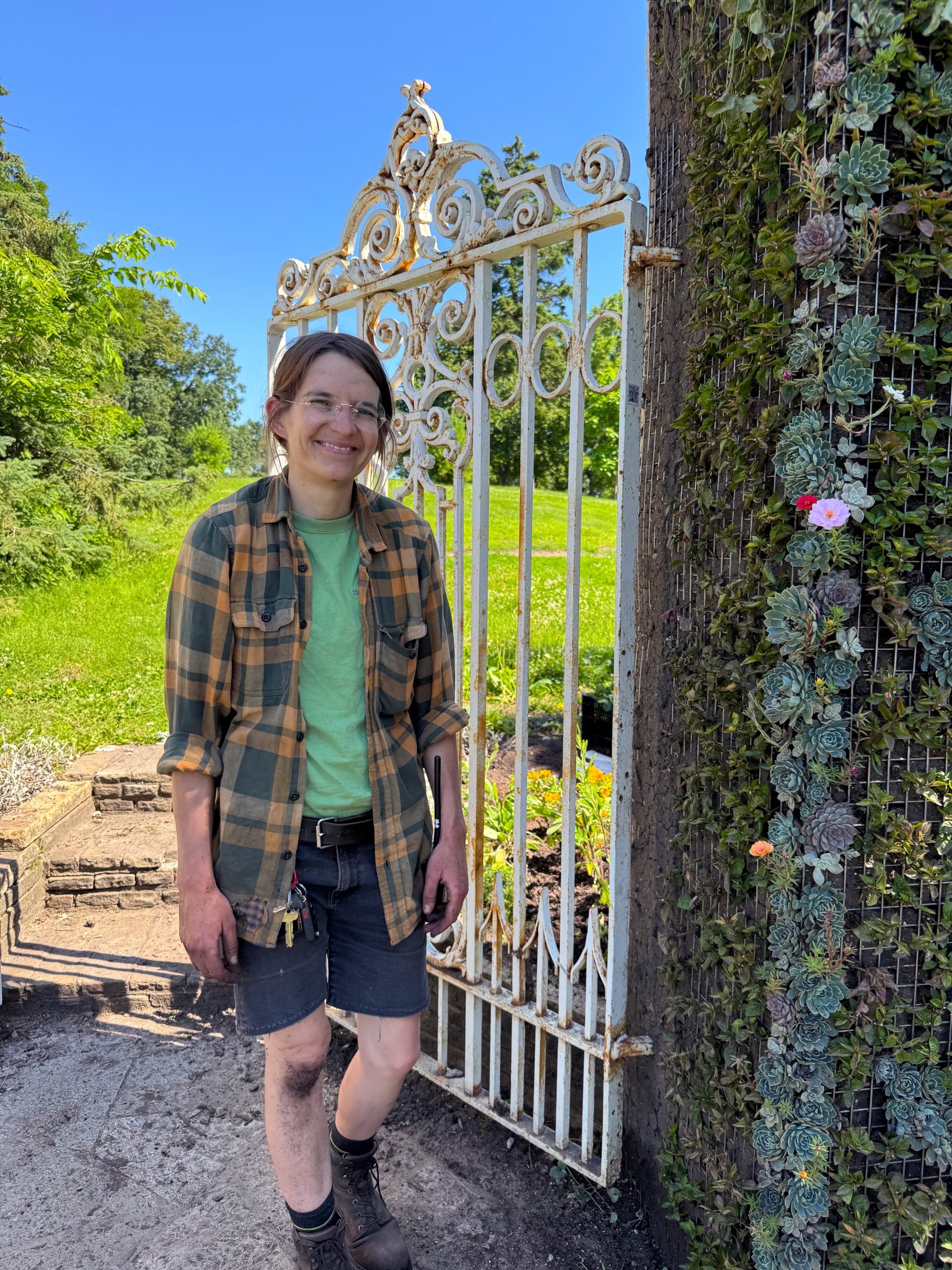
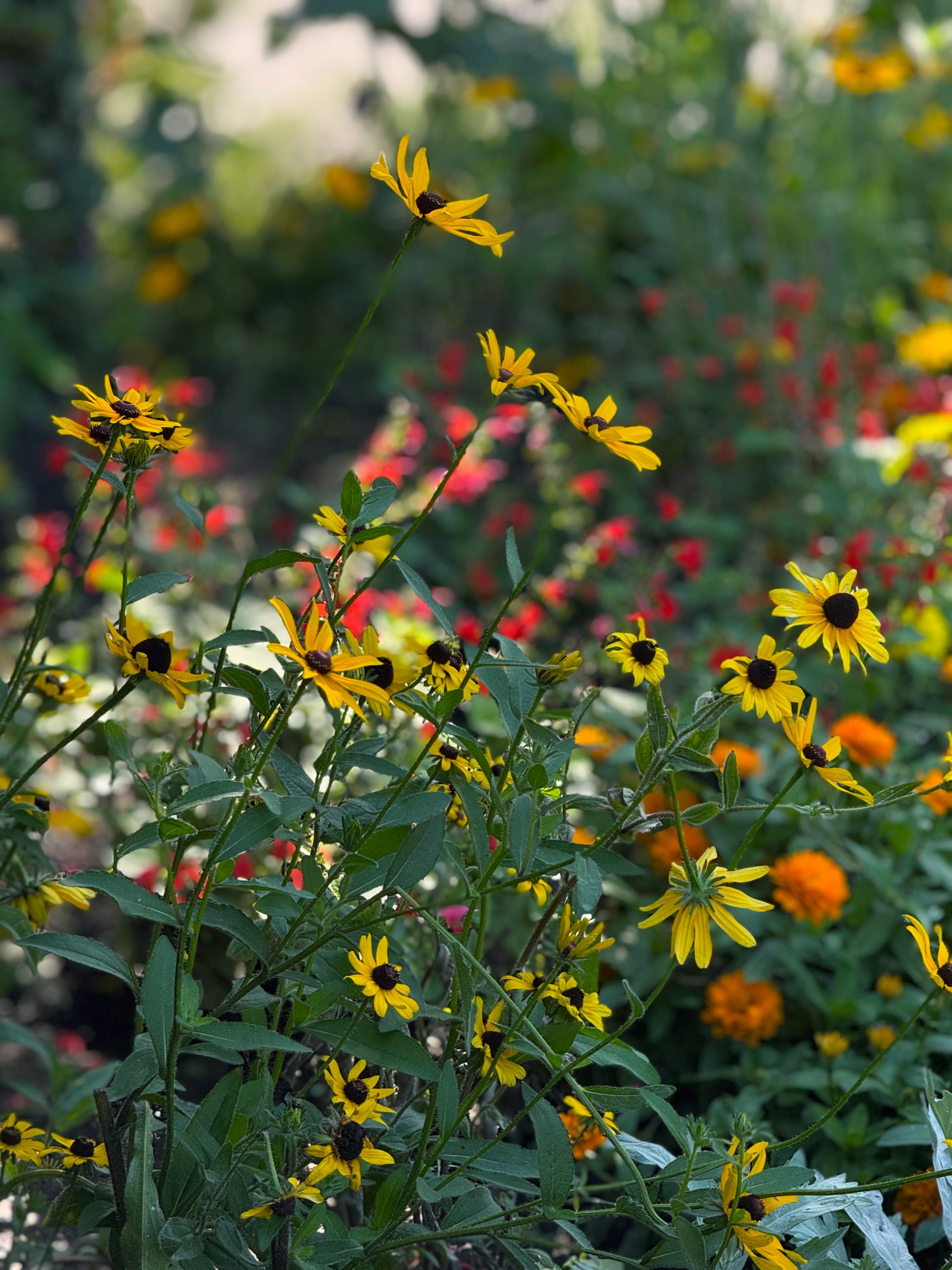
Designed by Como horticulturist Marie Day, the historic mosaiculture features a high-contrast mix of more than 10,000 alternanthera and echeveria plants arranged into the shape of a butterfly’s wings. The surrounding bed is a pollinator garden full of monarch-friendly plants that keep these beneficial bugs going on their extraordinary 2,500-mile migration from Minnesota to central Mexico each year.
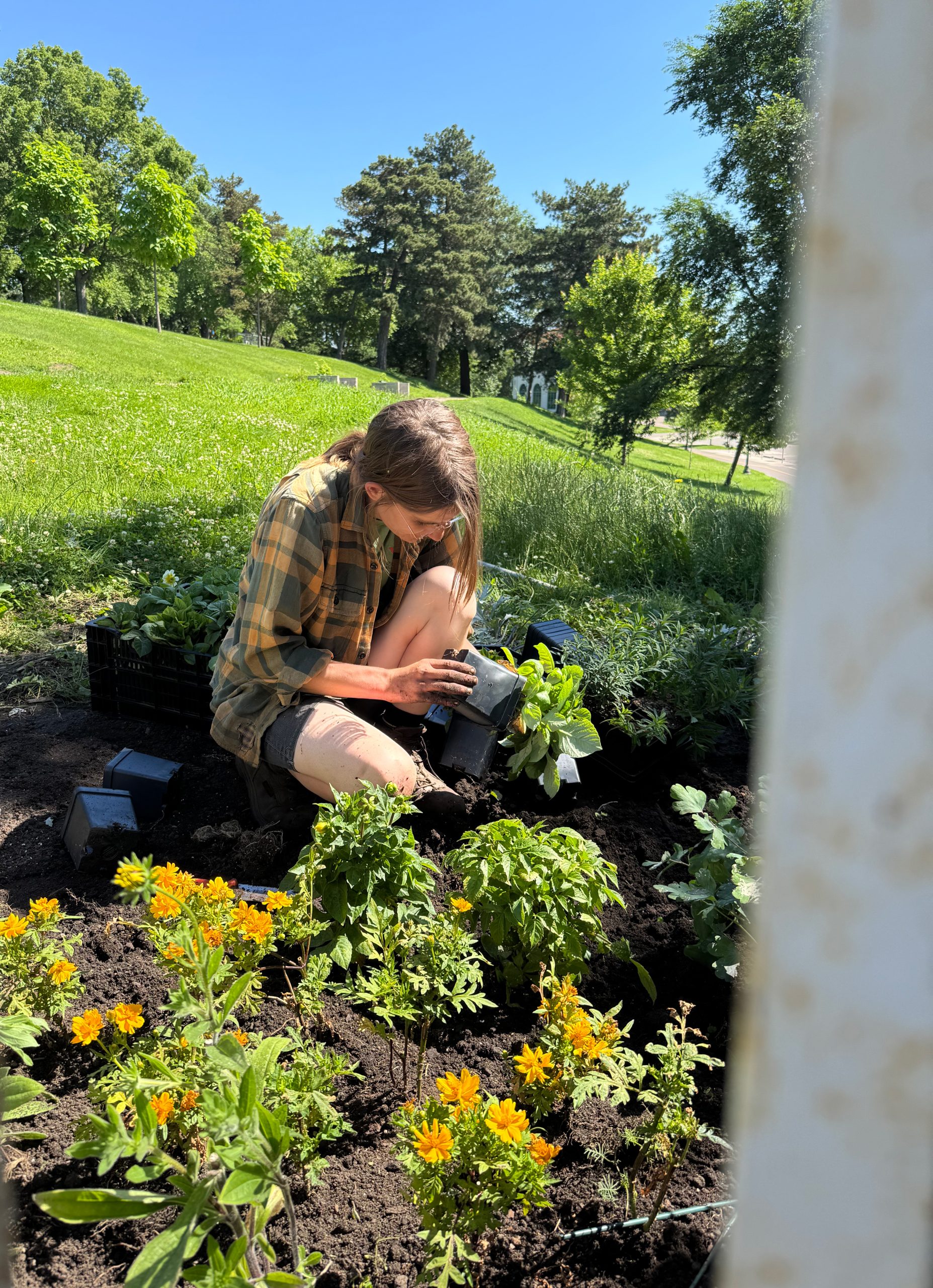
A Como tradition with roots that date back to 1894, Gates Ajar was a favorite turn-of-the-century attraction that reflected the strong influence of European floriculture fashion of the time. Each year, the display requires more than 100 gardener hours to fully install, and more than 45 minutes a day of dedicated watering. With your support for Como Friends, this Minnesota mosaiculture tradition is still growing strong more than 125 years since its start. Thank you!
Located near the Como Park Pavilion, we hope you can take a stroll to mingle with the monarchs soon. Thank you!
PLANT LIST
Walls and pillars of Gates Ajar | Succulents: Echeveria (hens and chicks); Graptopetalum (ghost plant); Graptosedum; Moss (rose portulaca)
Flower beds and base of Gates Ajar | Cardinal flower; Marigold; Butterfly weed; Rudbeckia (black-eyed Susan); Salvia (North American native cultivar); Dahlia (Native plant of Mexico); Cosmos (Mexican native cultivar); Zinnia (Mexican native cultivar); Sweet potato vine; Sunflower
Background and Draping | Alternanthera (Joseph’s coat); Lysimachia (Creeping Jenny); Vinca vine; Dichondra; Ivy
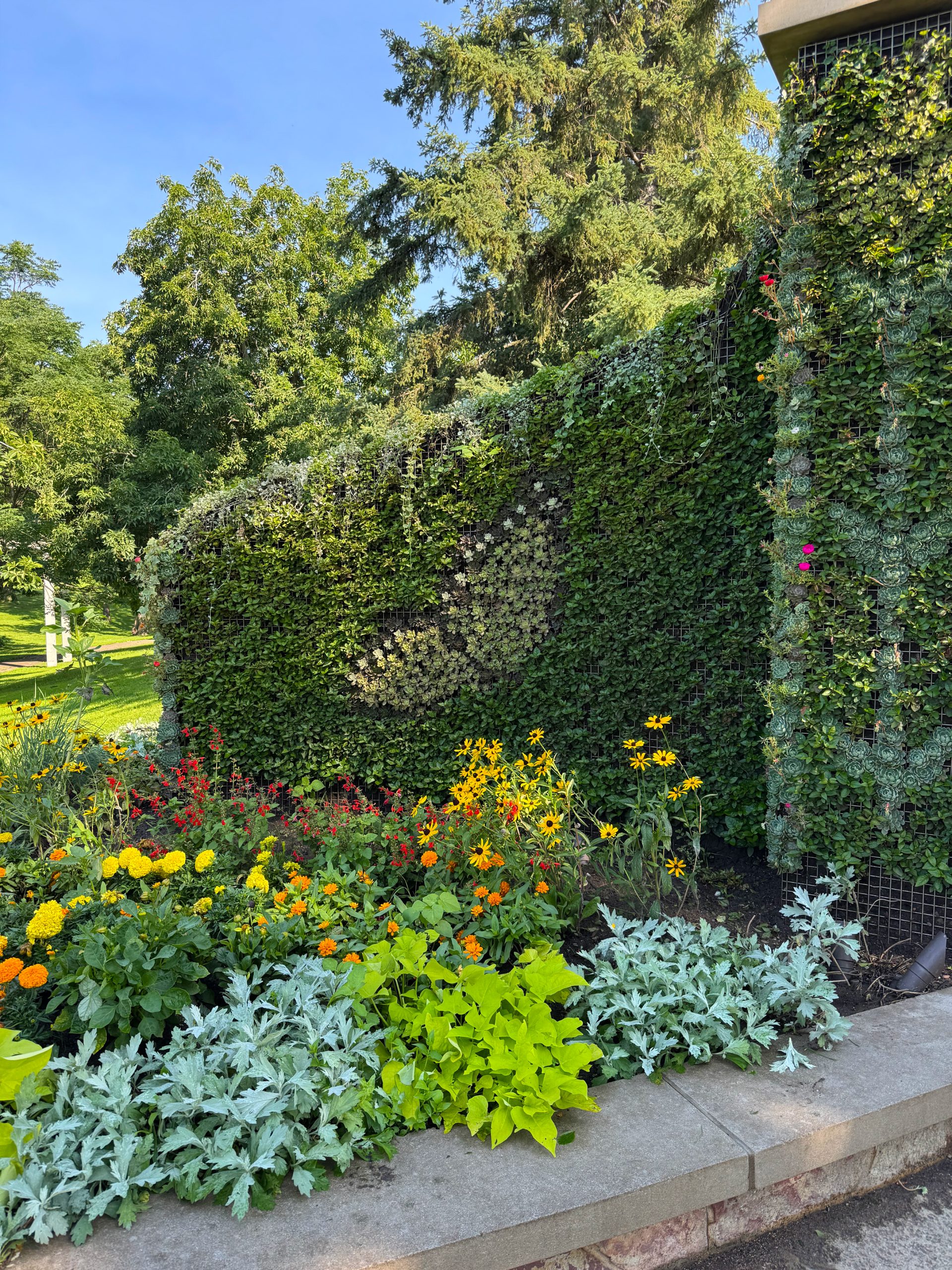
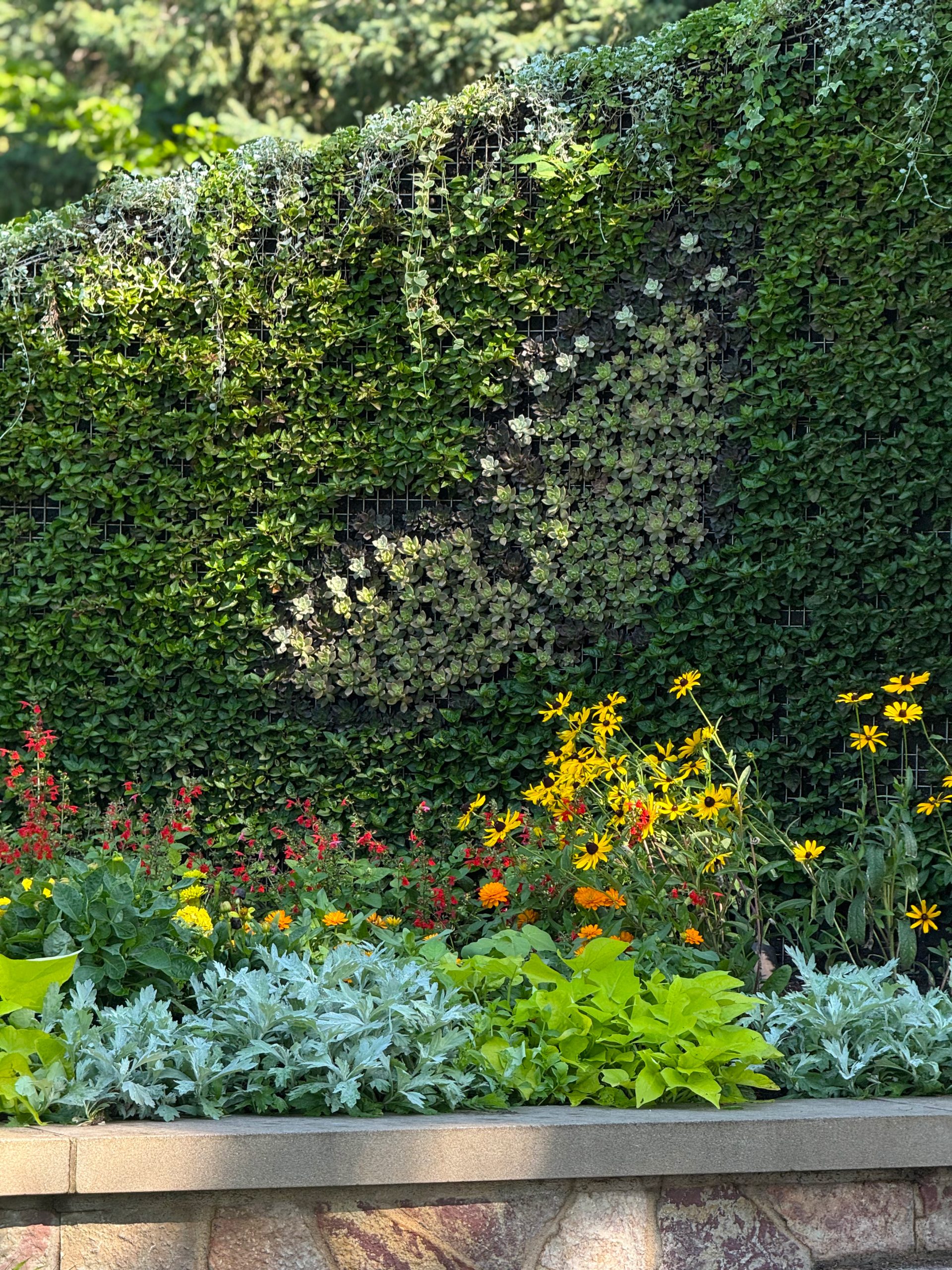
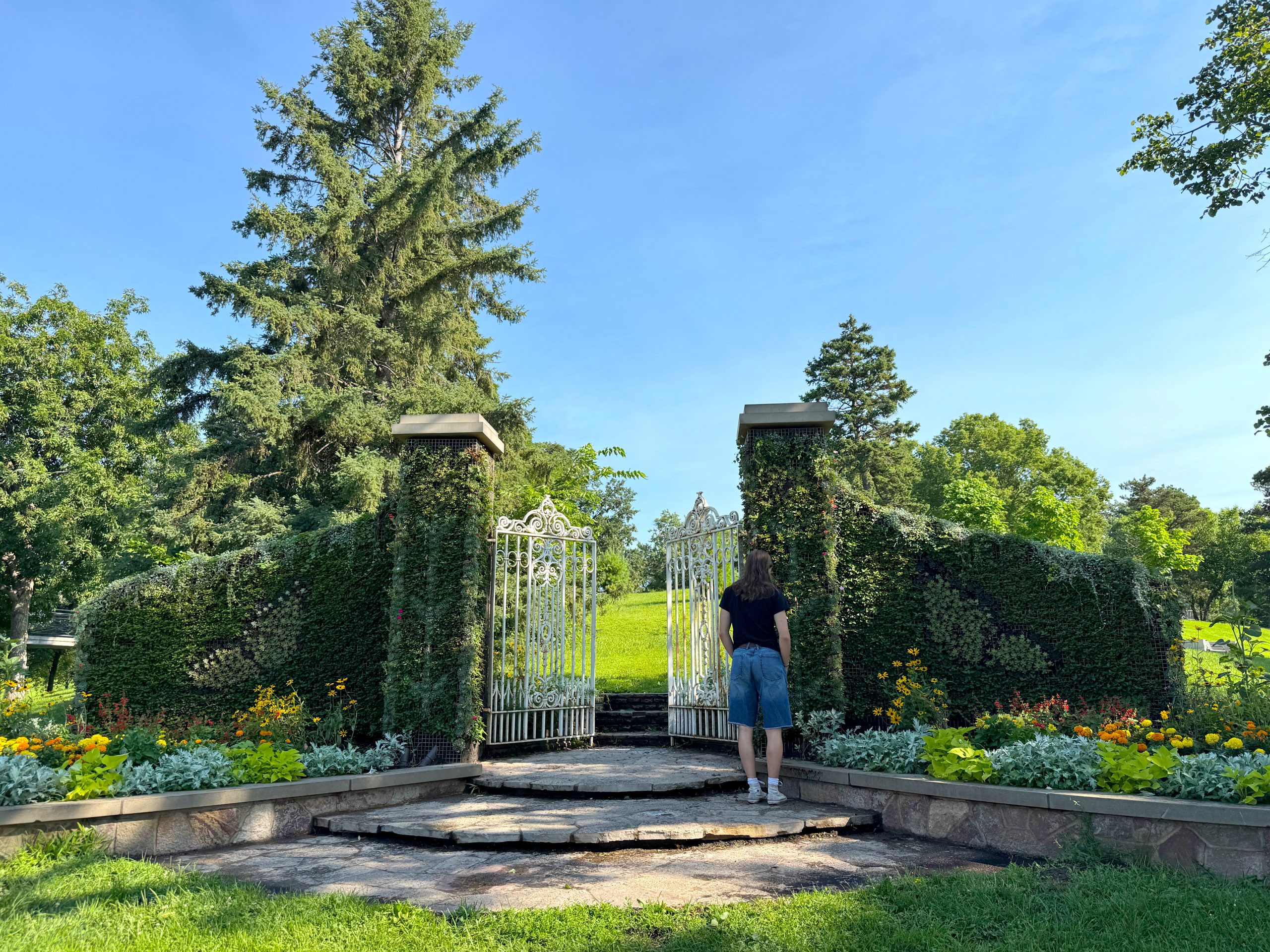
Claude Monet’s gardens at Giverny inspired this season’s Part 1 Spring Flower Show, and Part 2 is dedicated to cool lavender blues
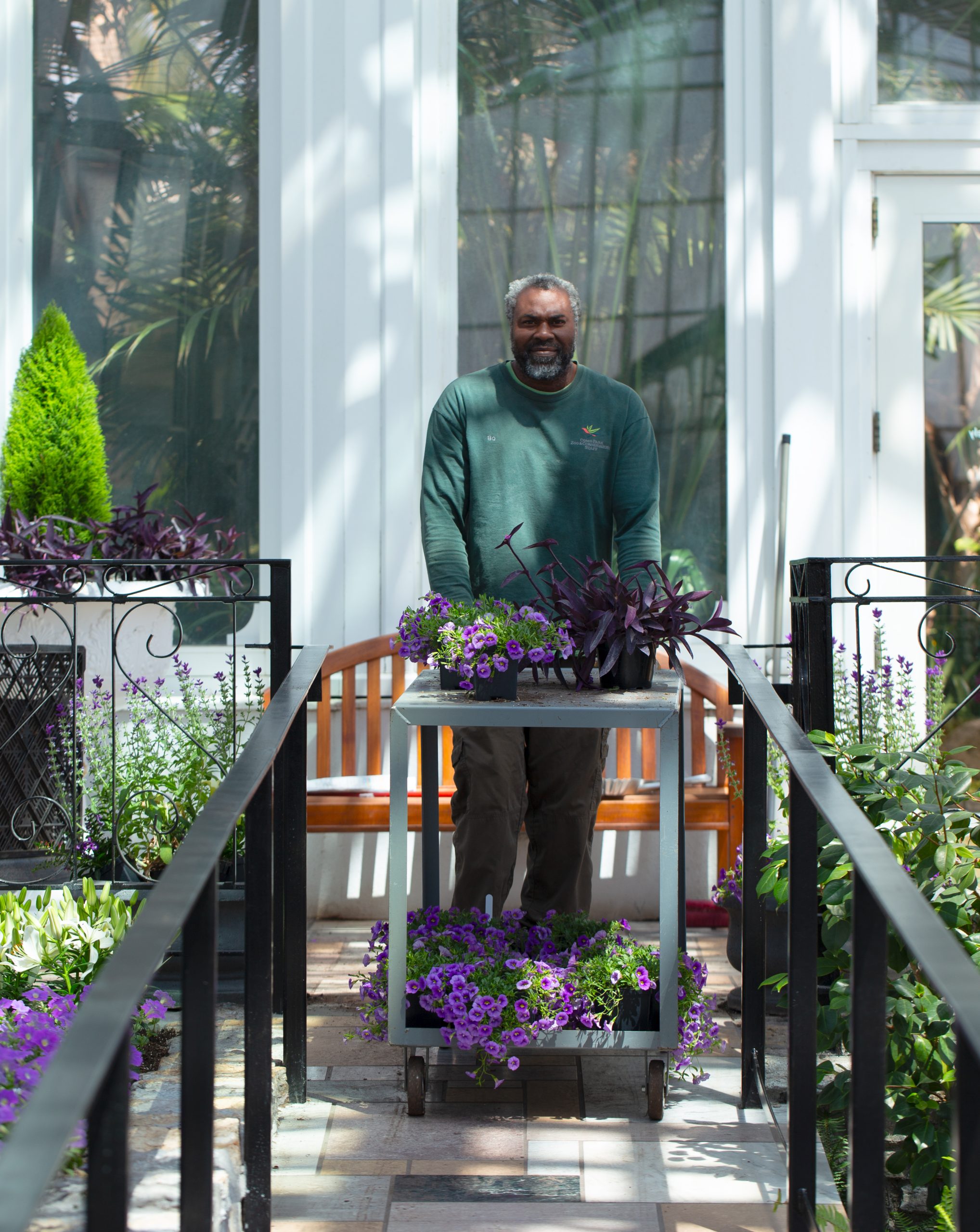
Designed by Horticulturist Bo Akinkuotu, the second part of the Spring Flower Show, open now through June 8, has washed Minnesota’s most beautiful room in the coolest of lavender blues. Enjoy this cottage garden filled with tall spires of blue delphinium and white lilies, calendula, stock, ageratum, and more!
The Marjorie McNeely Conservatory highlights five stunning flower shows each year. Your support for Como Friends helps make it possible. Thank you!
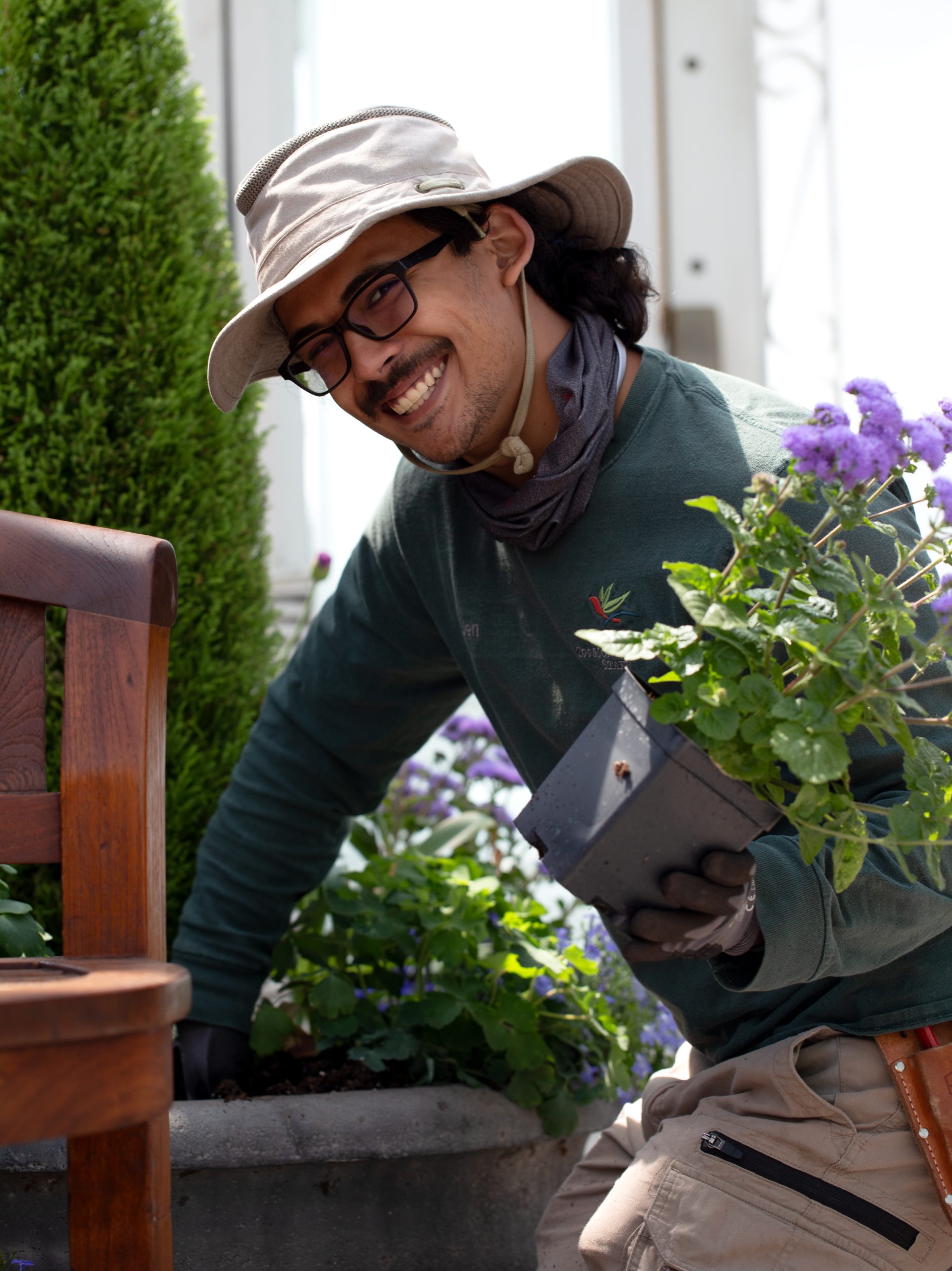
“My garden is my most beautiful masterpiece.” —Claude Monet
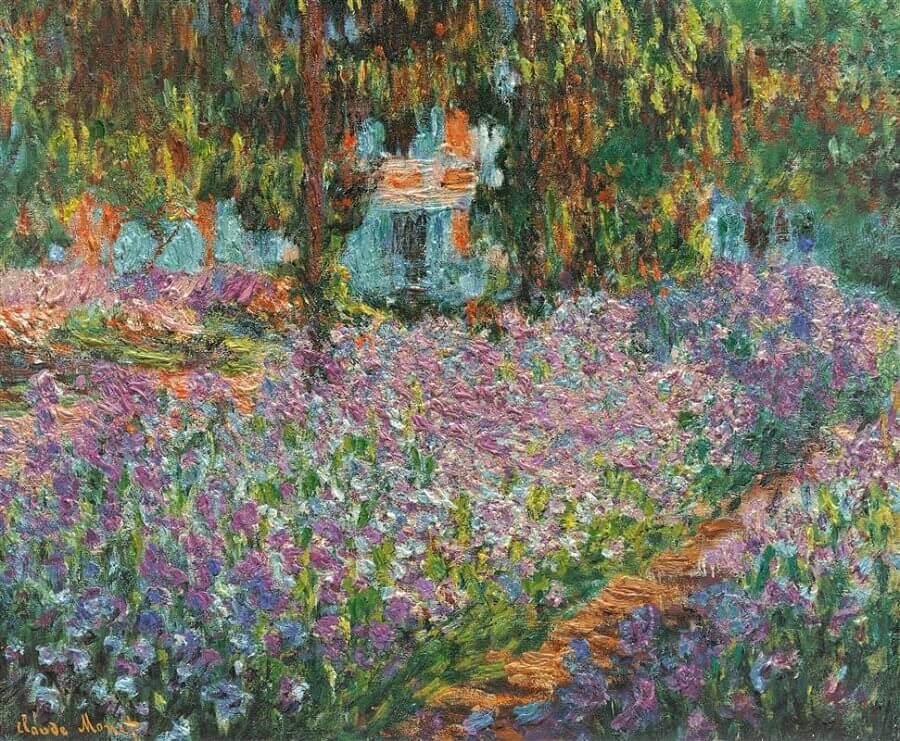
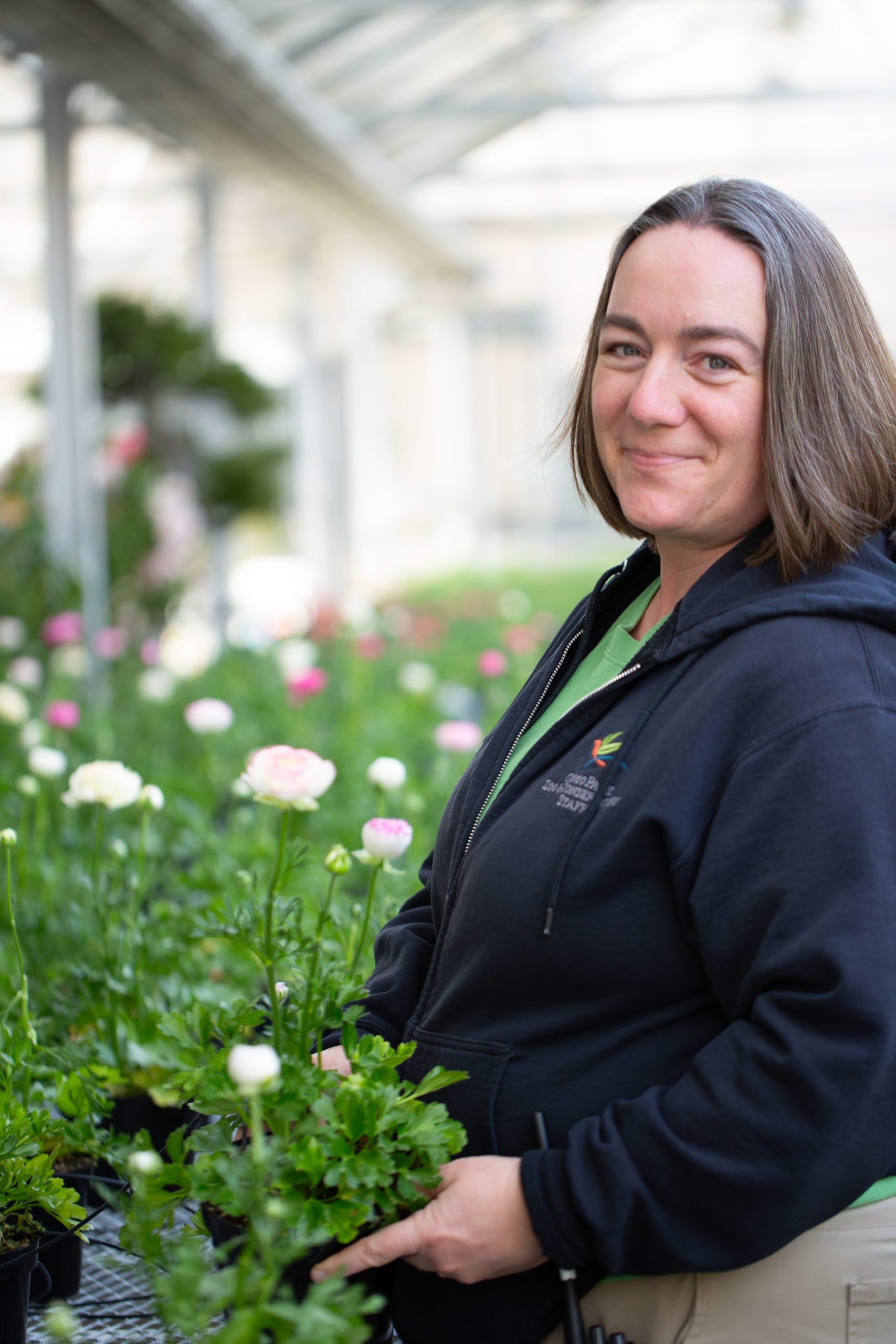
The Marjorie McNeely Conservatory’s Spring Flower Show will open March 21. Inspired by artist Claude Monet’s paintings of his beloved gardens at Giverny in France’s Normandy region, the first half of the show, running through April 27, highlights the Impressionist’s color palette of lavender, light blue, pink, and peach.
While horticulturist Ariel Dressler puts the finishing touches on Minnesota’s most beautiful room, Como Friends’ creative director Susannah Baudhuin went behind the scenes for this photographic sneak peek of the more than 7,000 bulbs, plugs, plants, and flowers about to make their debut.
“It’s on the strength of observation and reflection that one finds a way. So we must dig and delve unceasingly.” —Claude Monet
Numerous shades of ranunculus, peach foxglove, and pink snapdragons will complement show-stopping bulb selections that include blue hyacinth, pink daffodils, purple crocus, with a blend of lavender, white, and pink tulips.
Following a mid-show change from April 28 to May 2, tall spires of blue delphinium and purple foxglove will be the backdrop for a cottage garden collection of flowers including calendula, stock, ageratum, and more.
Remember to save the date for Garden Safari Gifts’ annual bulb sale on Monday, April 28, 2025. Stay tuned for details in our next Como Promo and Social Media posts.
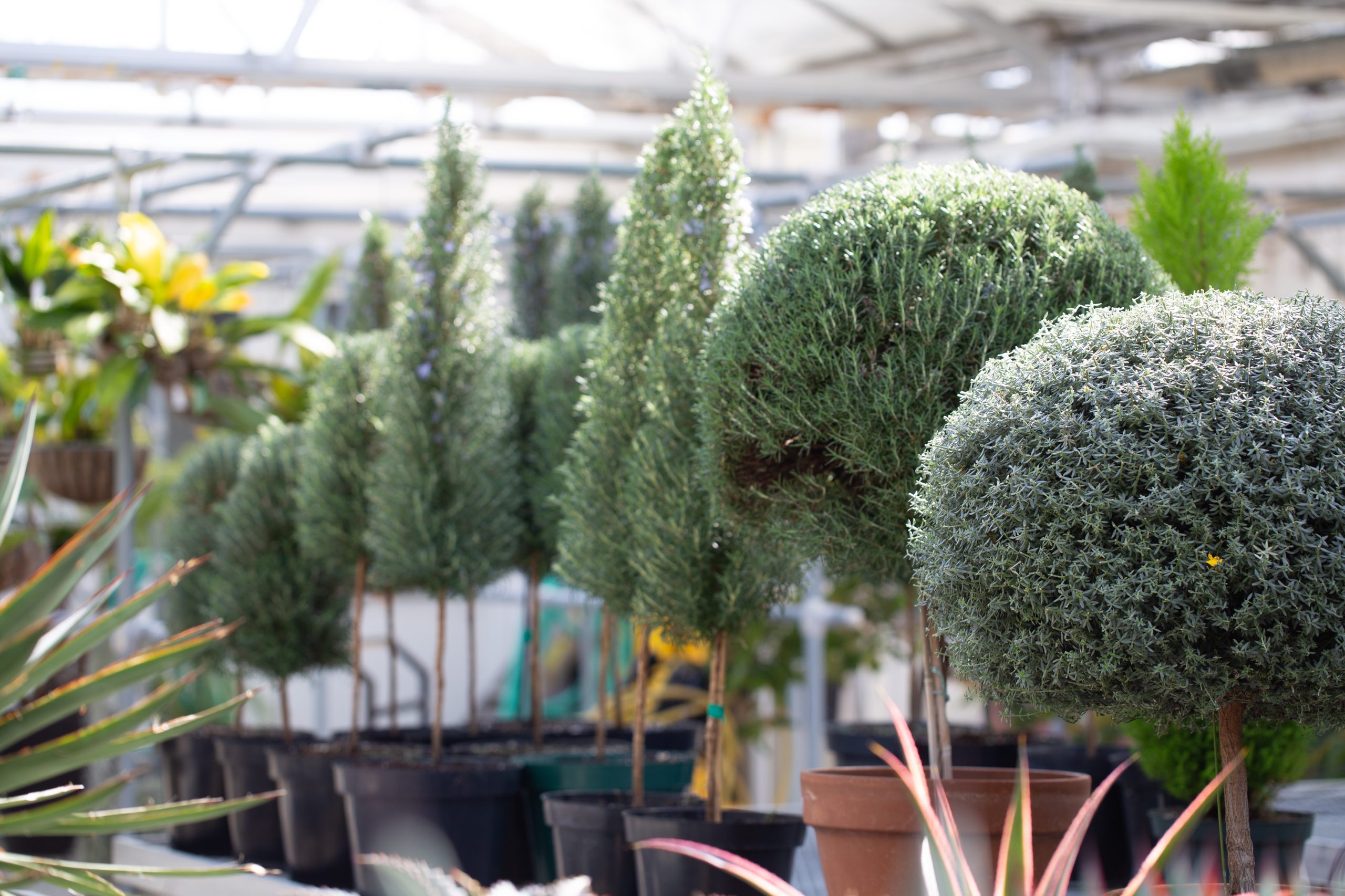
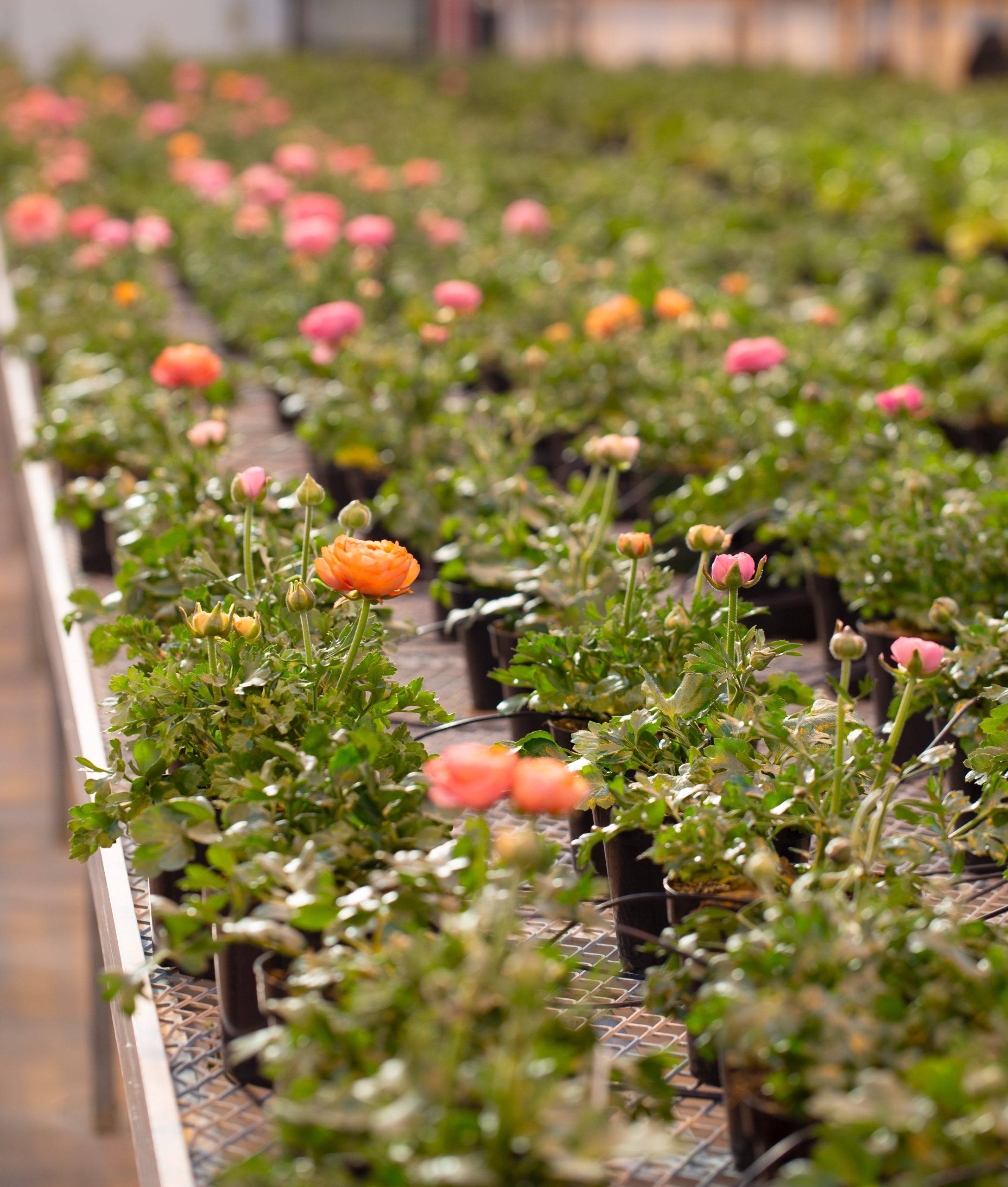
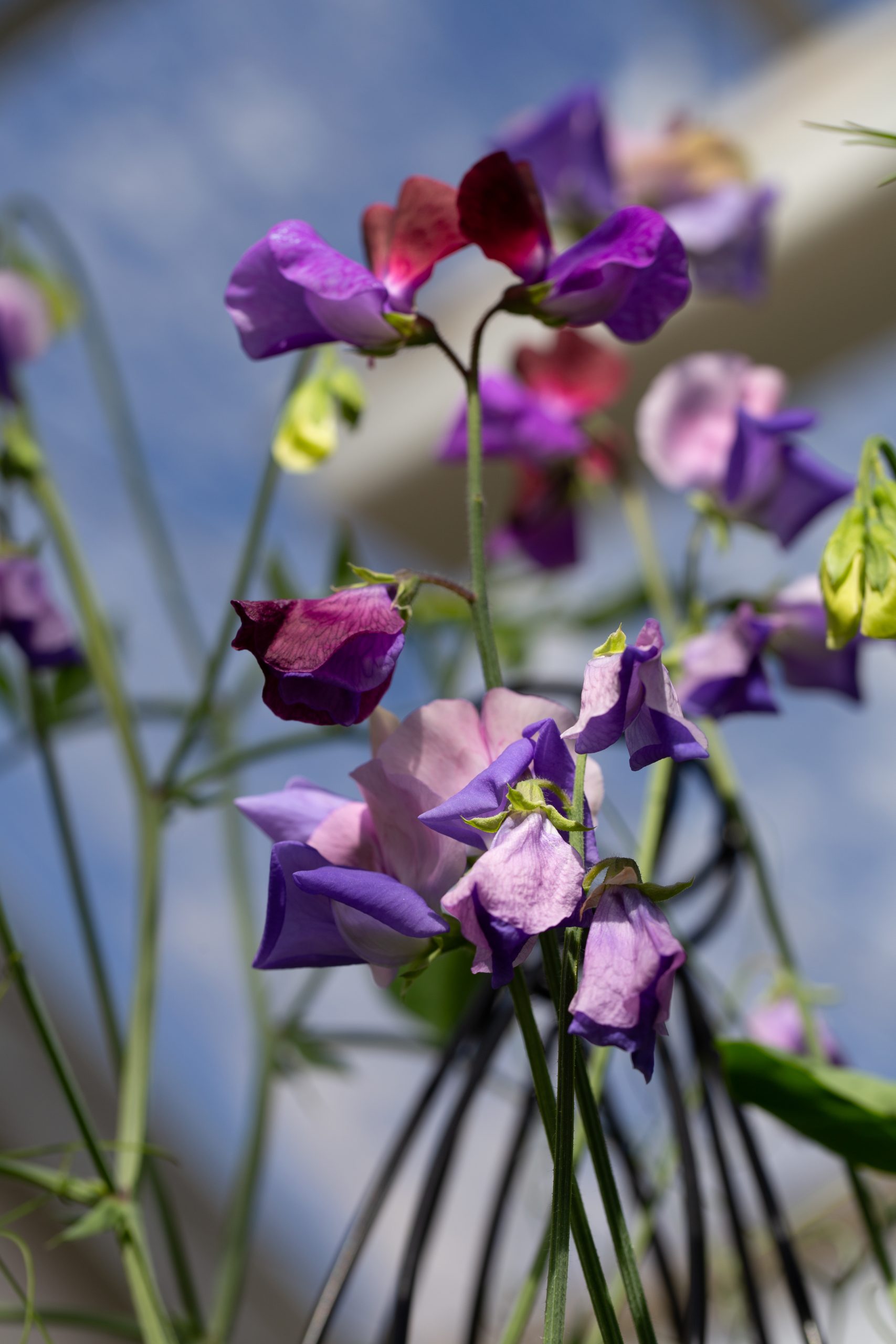
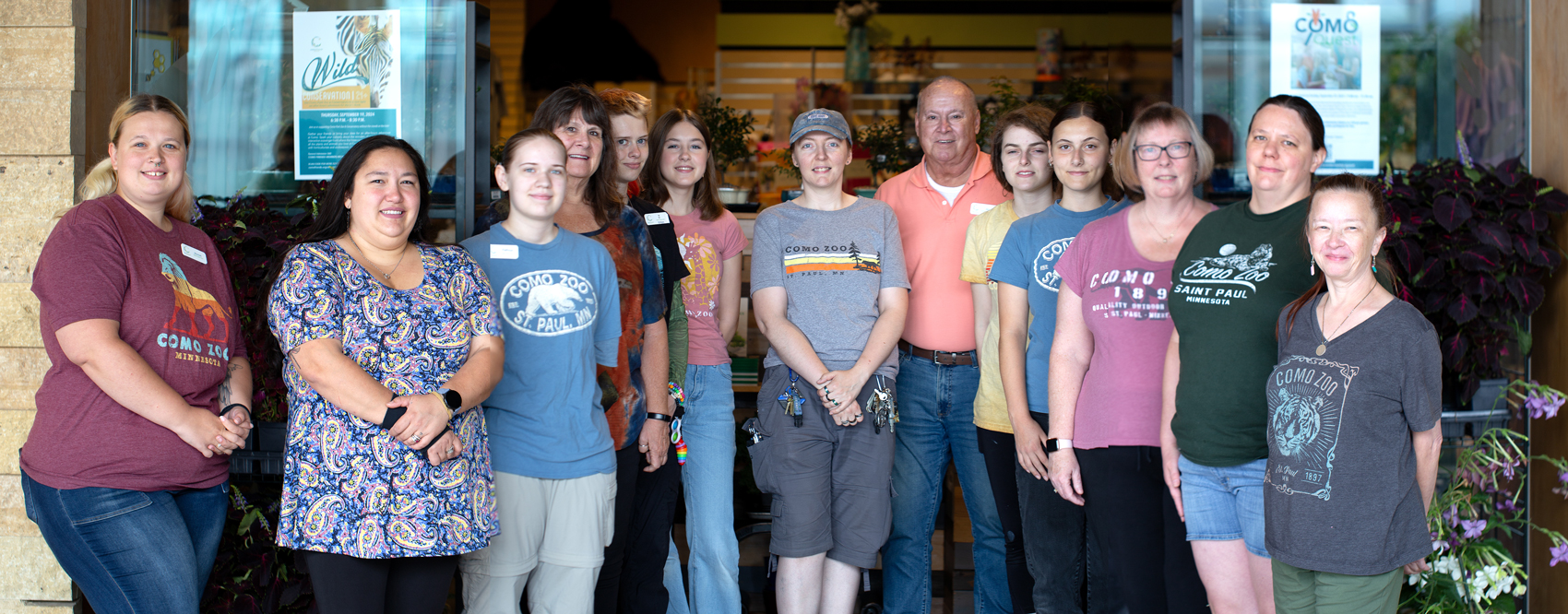
Como insiders know that Garden Safari Gifts is the place to go if you’re looking for that perfect Sparky t-shirt, puzzles and games for kids, and plush animals in the shape of nearly every species on the planet.
What you might not know is that every year, proceeds from Como Friends’ gift shop support the plants, animals, and people that converge at Como Park Zoo & Conservatory.

“The retail operation at Garden Safari Gifts has always been a big part of our business model at Como Friends, and its success is one of the reasons that Como Park Zoo & Conservatory continues to be free to visitors,” says Como Friends President Jackie Sticha. “Not only is it fun to shop there, but when you do, you’re helping to support the things that make Como so special.”
While small retail shops have been part of Como’s campus for years, Garden Safari Gifts was originally opened in 2005 as part of the Visitor Center expansion, with satellite shops later launched at Como Town, Gorilla Forest, and Polar Bear Odyssey during the busy summer months. “Consistent profits, especially in the early years, were important to establishing Como Friends as a strong nonprofit,” says Terri Scheunemann, Como Friends’ director of retail operations.
From the start, Como souvenirs and animal-themed gifts have been big sellers with visitors. But more recently, Garden Safari Gifts has curated a collection of more sustainably sourced and conservation-minded gifts, from beeswax food wrappers, to bags and bedspreads made from recycled cloth, and reusable straws and water bottles to help cut down on single-use plastics. “Supporting Como’s conservation mission has definitely been a growing part of our marketing plan, and our visitors seem to really like it,” says Sheila Wewers, Como Friends’ associate director of retail operations.
While most items at Garden Safari Gifts sell for less than $20, every purchase you make there has had a powerful impact at Como, investing in everything from cutting-edge animal care, to accessible education programs, to gorgeous public gardens. “Simply making the decision to shop at Garden Safari Gifts can help make great things happen at Como,” says Sticha. “Whether you make direct donations or shop with us, it’s all part of the community support that Como depends on.”
Remember, during the holiday season Como Friends members enjoy 20 percent off every purchase at Garden Safari Gifts through December 31.
In the Marjorie McNeely Conservatory we bid a fond farewell to the Summer Flower Show ending on September 22, and a warm welcome to the Fall Flower Show opening on September 27
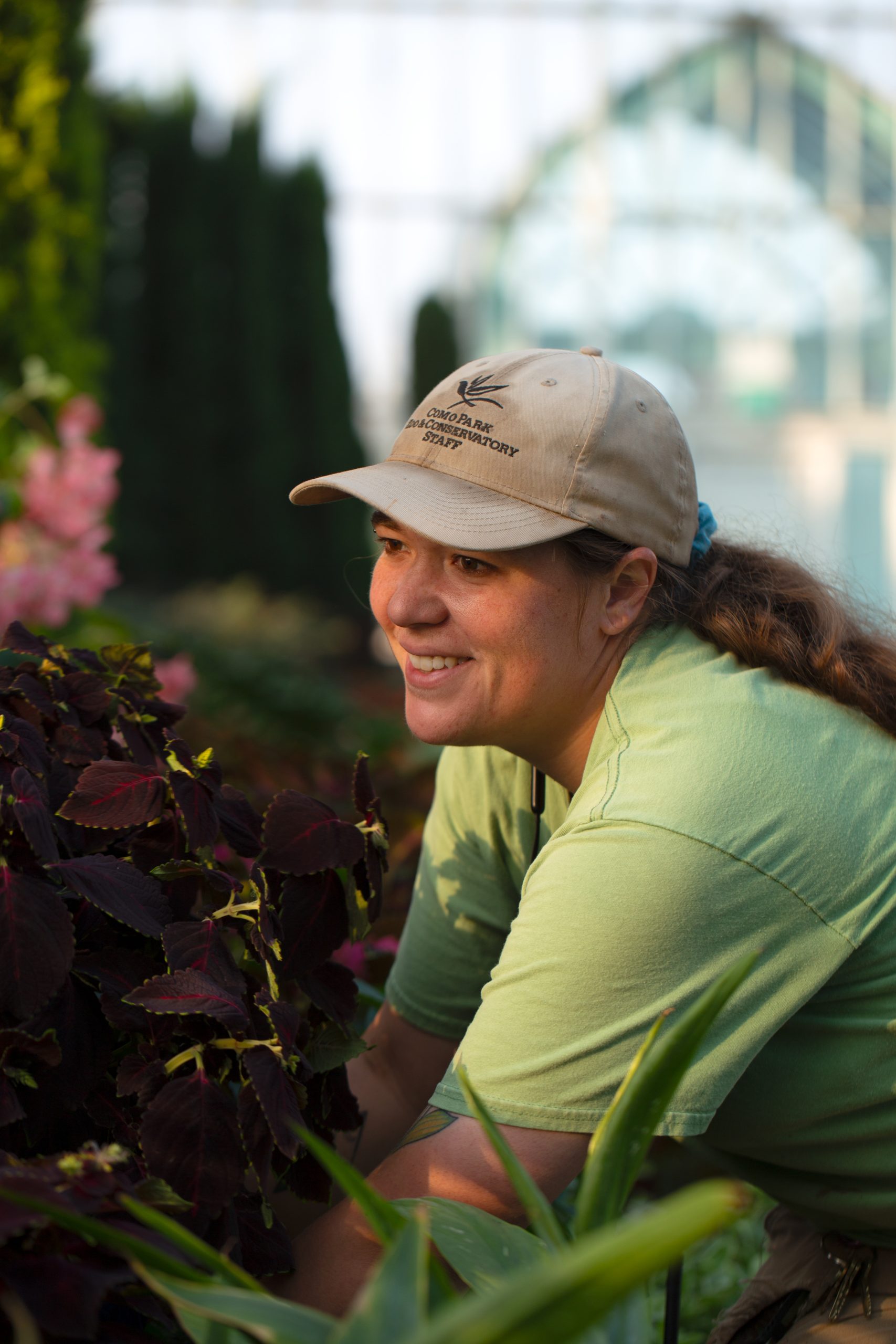
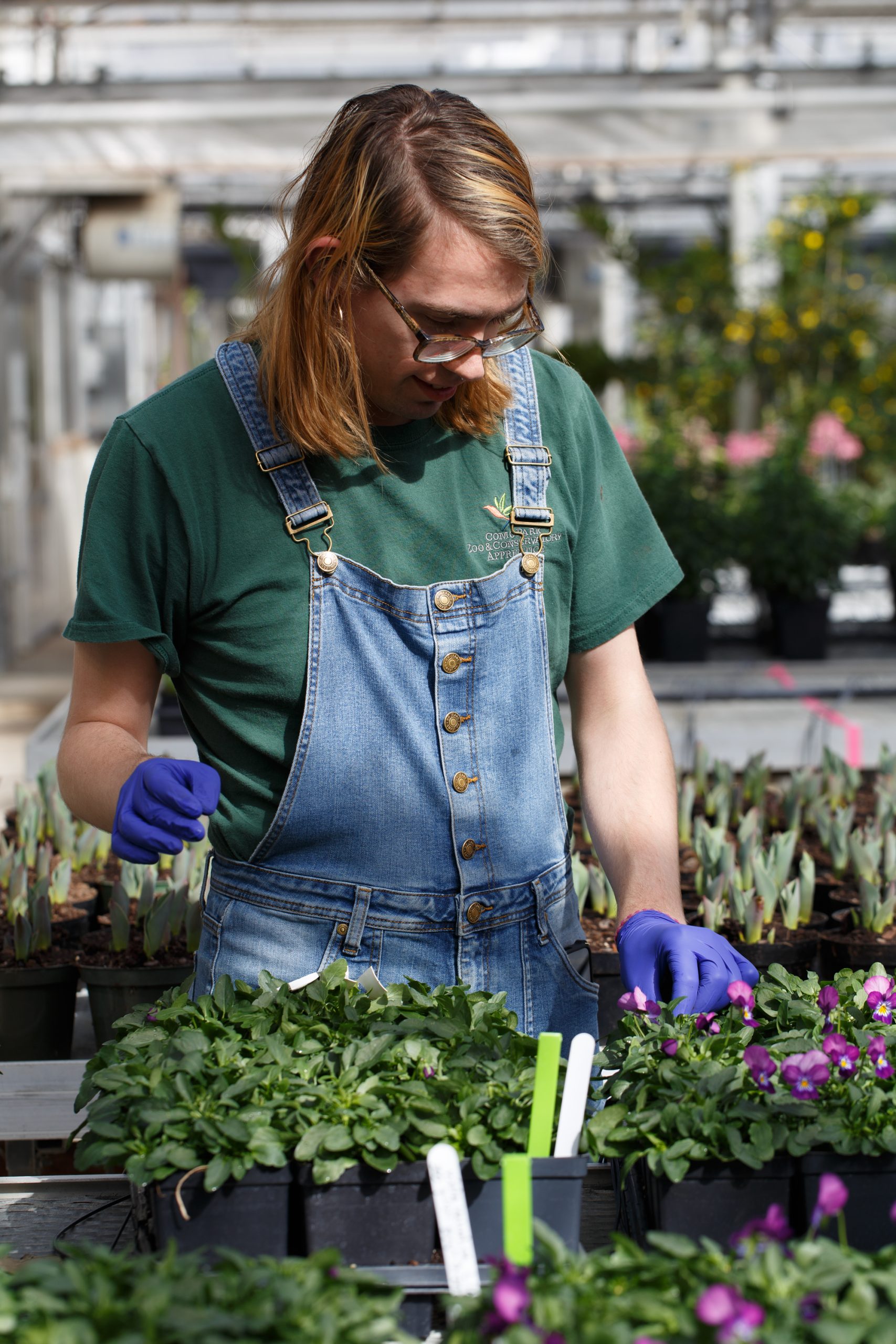
The annual shift from warm summer sunshine to crisp autumn glow seems to happen overnight, but at the Marjorie McNeely Conservatory, this seasonal change takes months of careful planning. As Como’s Summer Flower Show fades on September 22, and the Fall Flower Show comes into bloom on September 27, check out this pictorial preview of the behind-the-scenes prep work that helps Minnesota’s most beautiful room make a change of season.
Horticulturist Rylee Werden and RightTrack Apprentice Willow are collaborating to bring their vision of an autumn sunset to life in Minnesota’s most beautiful room. “Other than the mums of course, we are planning to feature a variety of fall plants in sunset colors including yarrow, celosia, ornamental peppers, chard, violas, heuchera, kales, sunflowers, marigolds, millet and grass,” says Werden.
A first-time show for Willow, who has been working closely with the entire horticulture team for more than a year now. “It’s been great to hear Willow’s ideas and incorporate my vision and hers together,” says Werden. “We are really excited to see everyone’s reaction to our ombre color scheme from around the pool to try to mimic our inspiration of a sunset on the water.” Here’s a sneak peek.
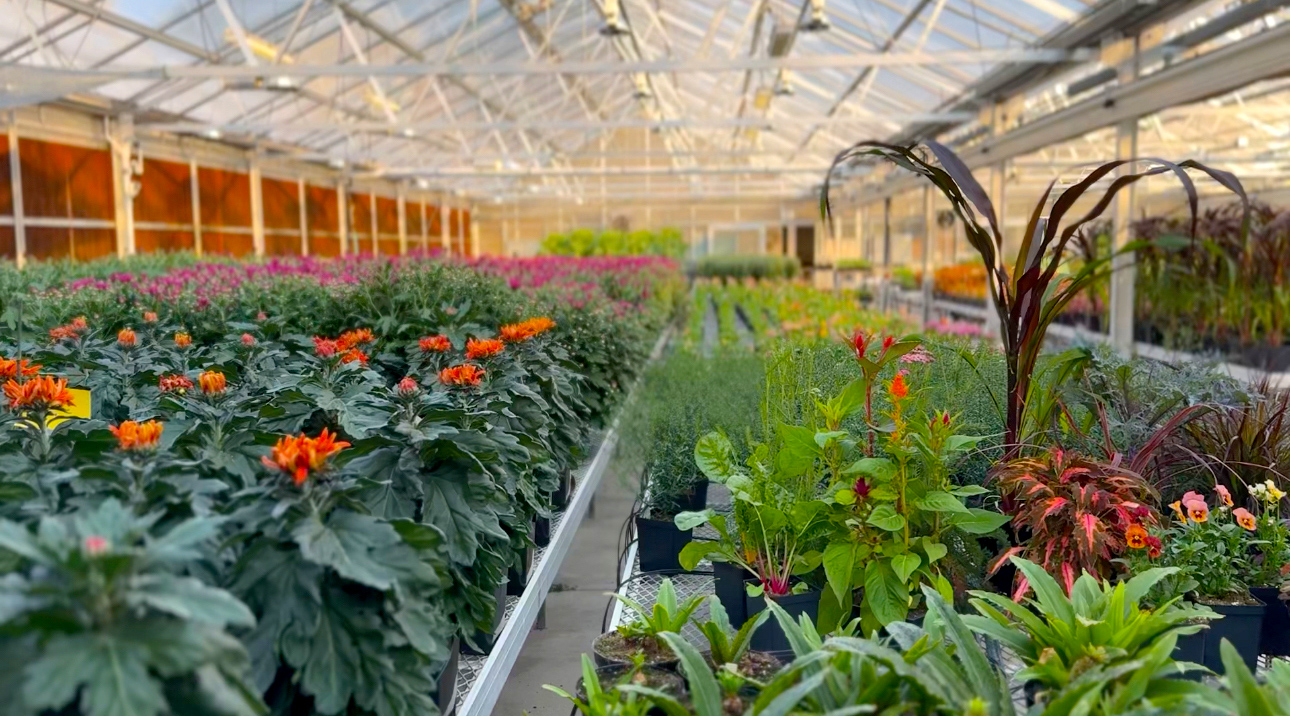
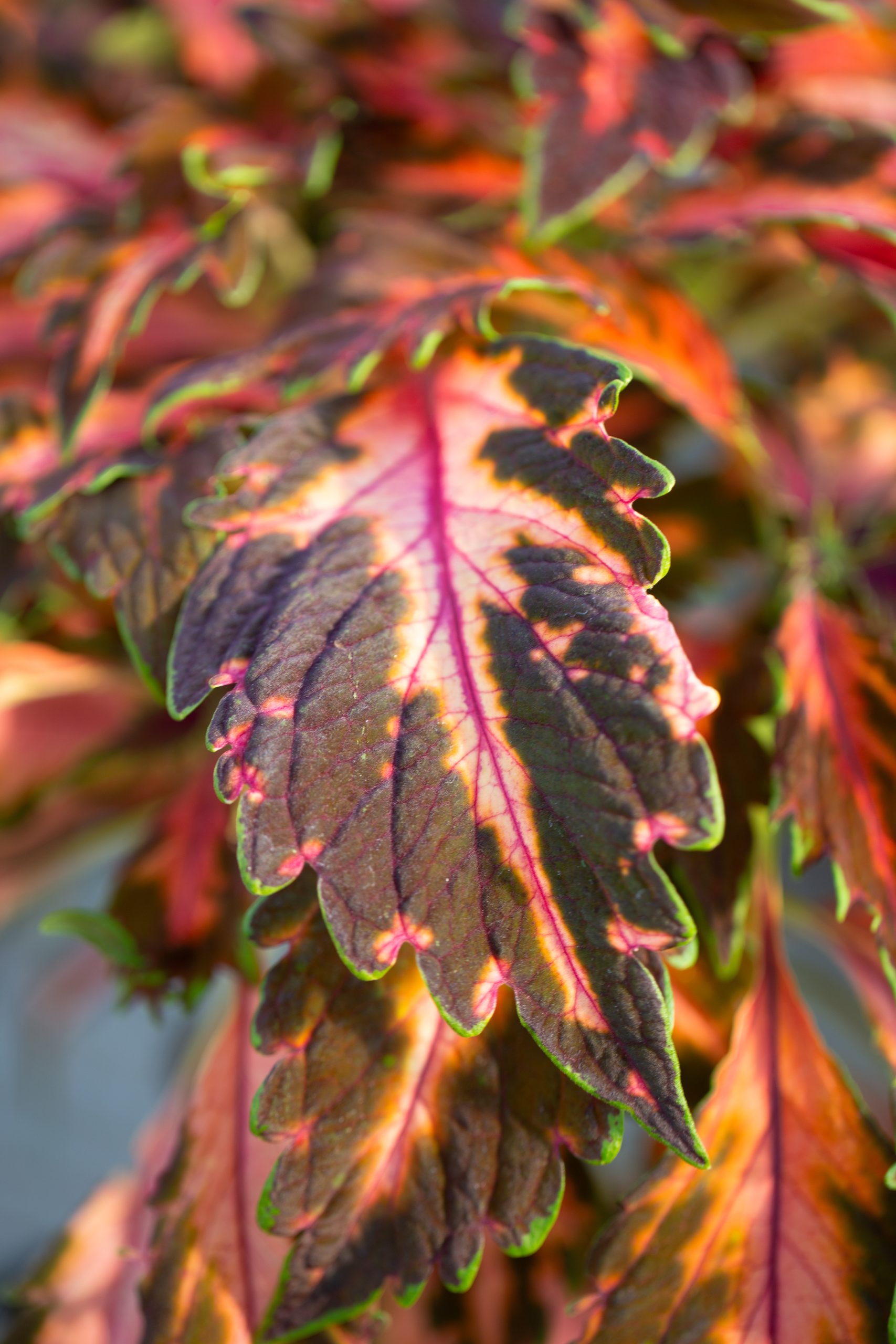
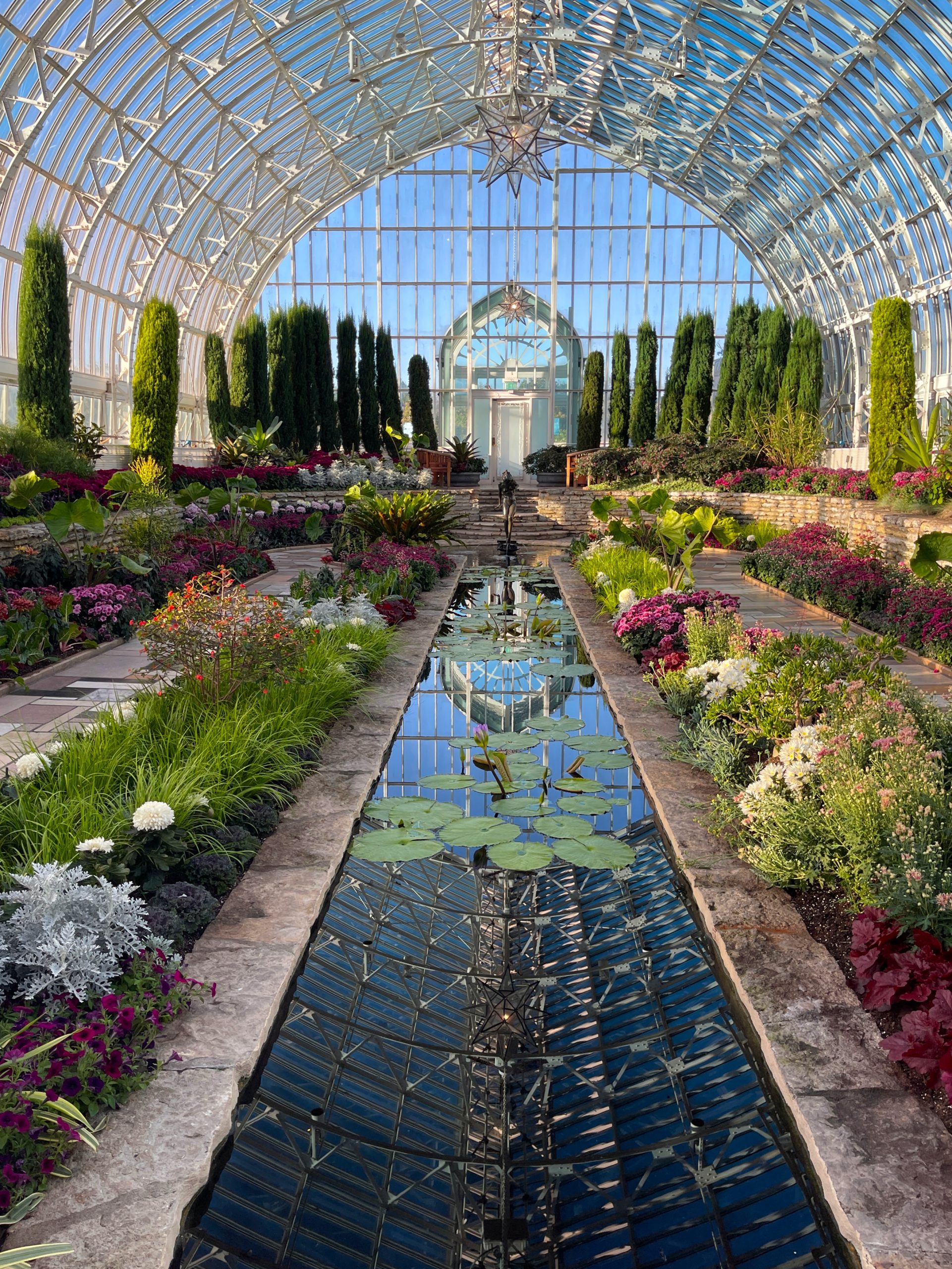
Como’s chrysanthemum show has been a tradition since 1915, but you’ve never seen a fall flower show quite like this one! With an “Under the Sea” theme, the display includes anemone mums, green stingray colcassia, spider mums, and succulents that combine to create a cool octopus’s garden vibe in Minnesota’s most beautiful room. Check out this photo preview, and make plans to see it before October 30, when the fall flower show’s second half transforms into a celebration of Dia de los Muertos.
Did you know that the succulents used in the Fall Flower Show are the very same succulents used in the Gates Ajar display this summer!
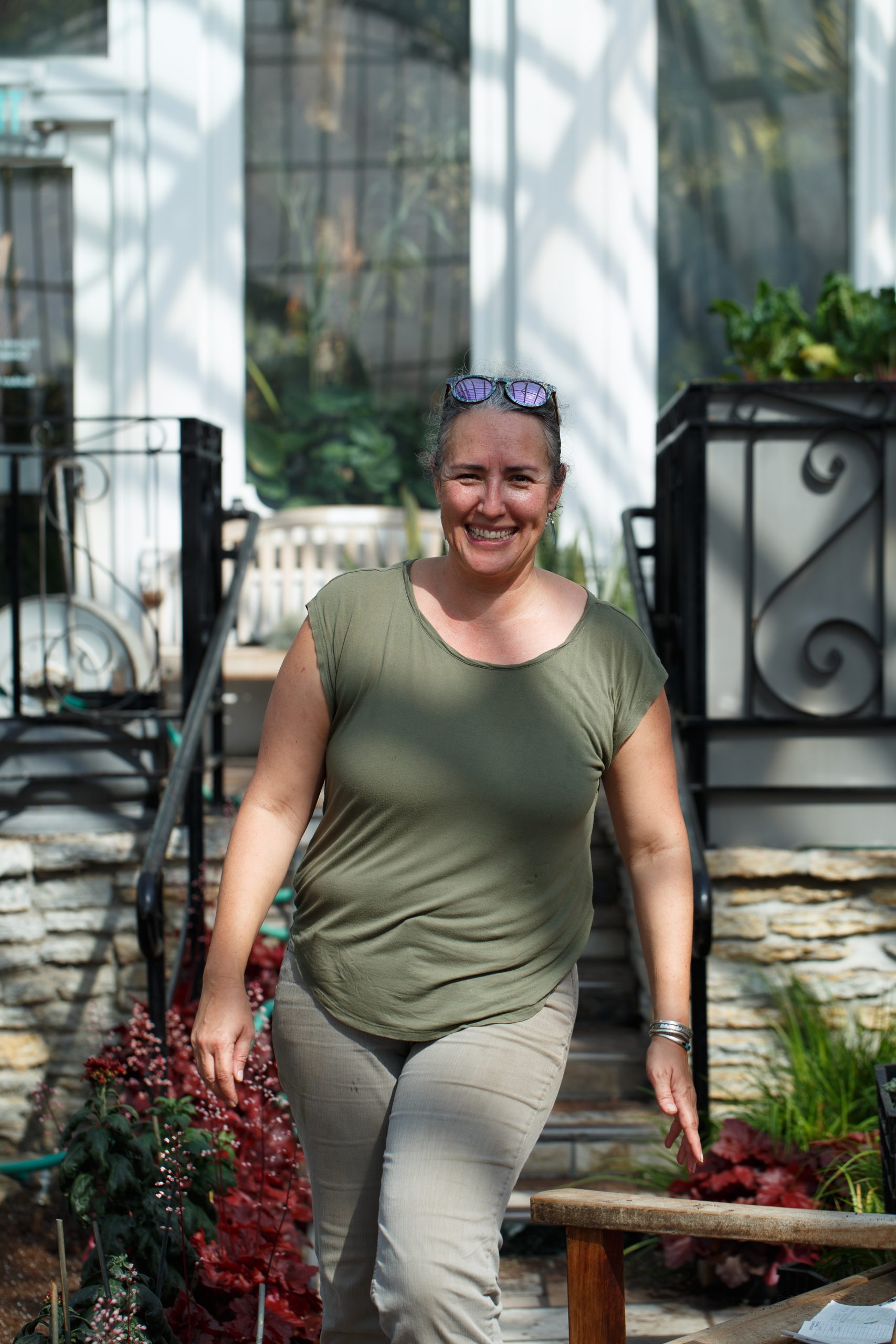
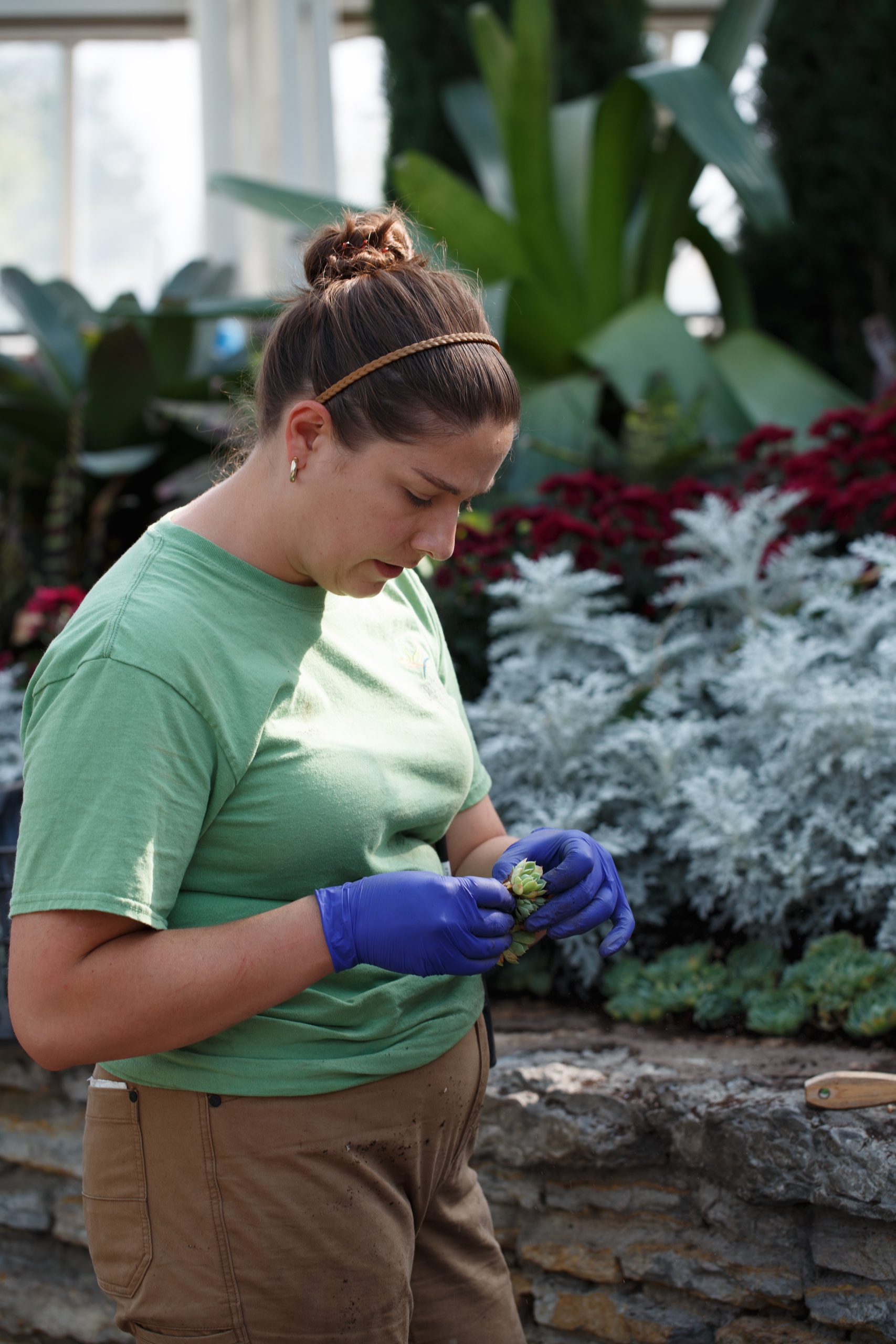
Open from 10 a.m. to 4 p.m. every day, the Fall Flower Show is always free to visitors, thanks to your contributions to Como Friends.
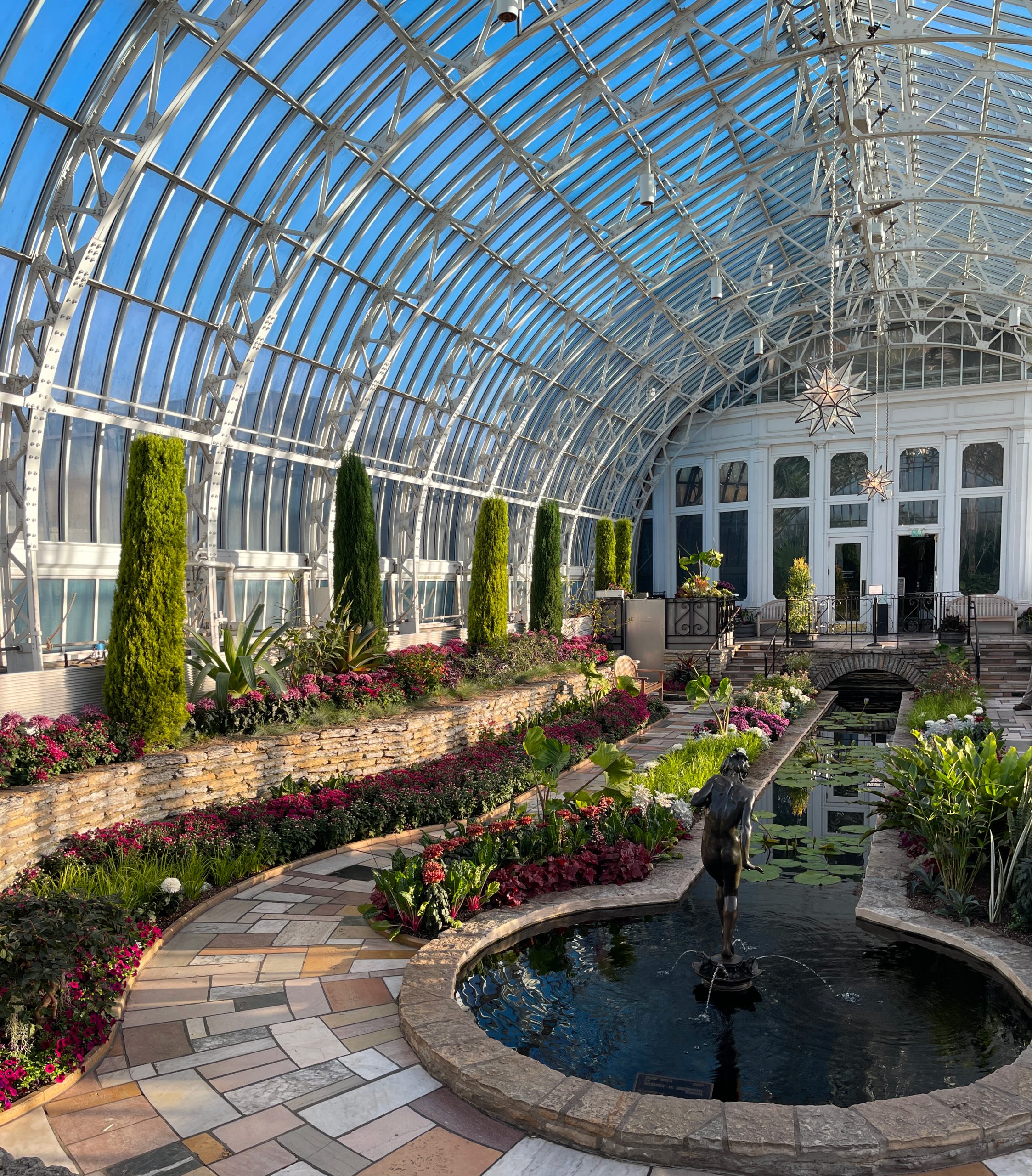
The biodiversity of Como’s rainforest habitat requires complex care

“When we try to pick out anything by itself,” the famous naturalist John Muir once wrote, “we find it hitched to everything else in the Universe.”
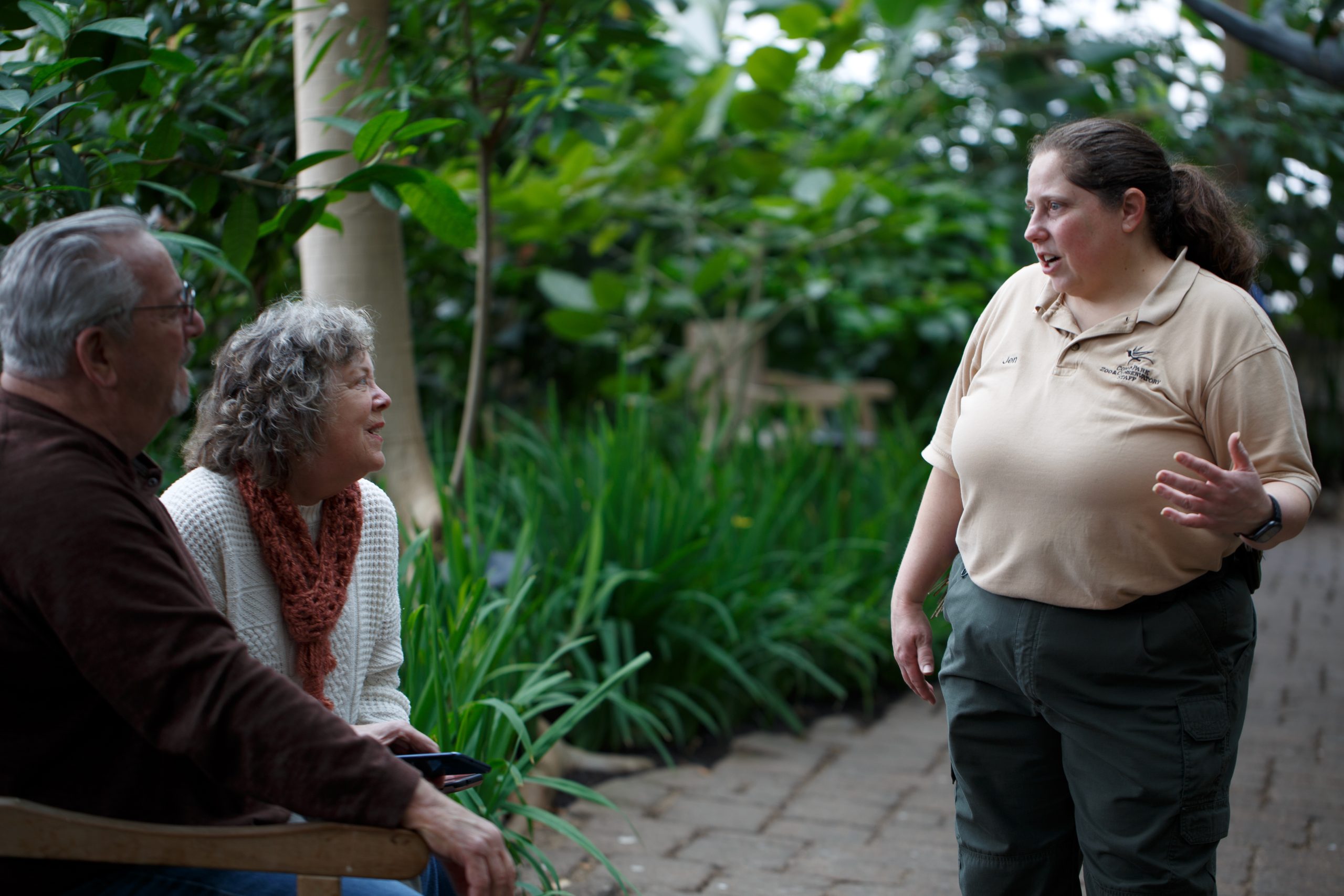
The profound interdependence of plants, animals and people is one of the lessons Como Park Zoo & Conservatory strives to convey to more than a million visitors every year, and nowhere is that lesson more evident than in Tropical Encounters. Opened in 2006, the immersive rainforest habitat features an extensive array of tropical plants and trees, and an equally diverse range of animals, from high-flying tanagers, to a slithering anaconda, to Chloe, Como’s beloved free-ranging sloth.
With so many living things under one roof, Como Zoo keepers and Marjorie McNeely Conservatory horticulturists collaborate closely within Tropical Encounters to ensure that making a change in one corner of the habitat doesn’t have negative impacts for other residents of the rainforest. That’s why the Tropical Encounters team is taking its time on a major soil replacement project this season paid for by your contributions to Como Friends.
Visitors this summer may notice that horticulturists are taking a staged approach to the process, removing spent soil from one location at a time, to make sure that the root systems of rainforest trees and the animals that live in the vicinity are all thriving. The effort is a little bit like repotting a giant terrarium, says horticulturist Diane Rafats: “We do take special care in this habitat. Everything we do here can affect everything that lives here.”
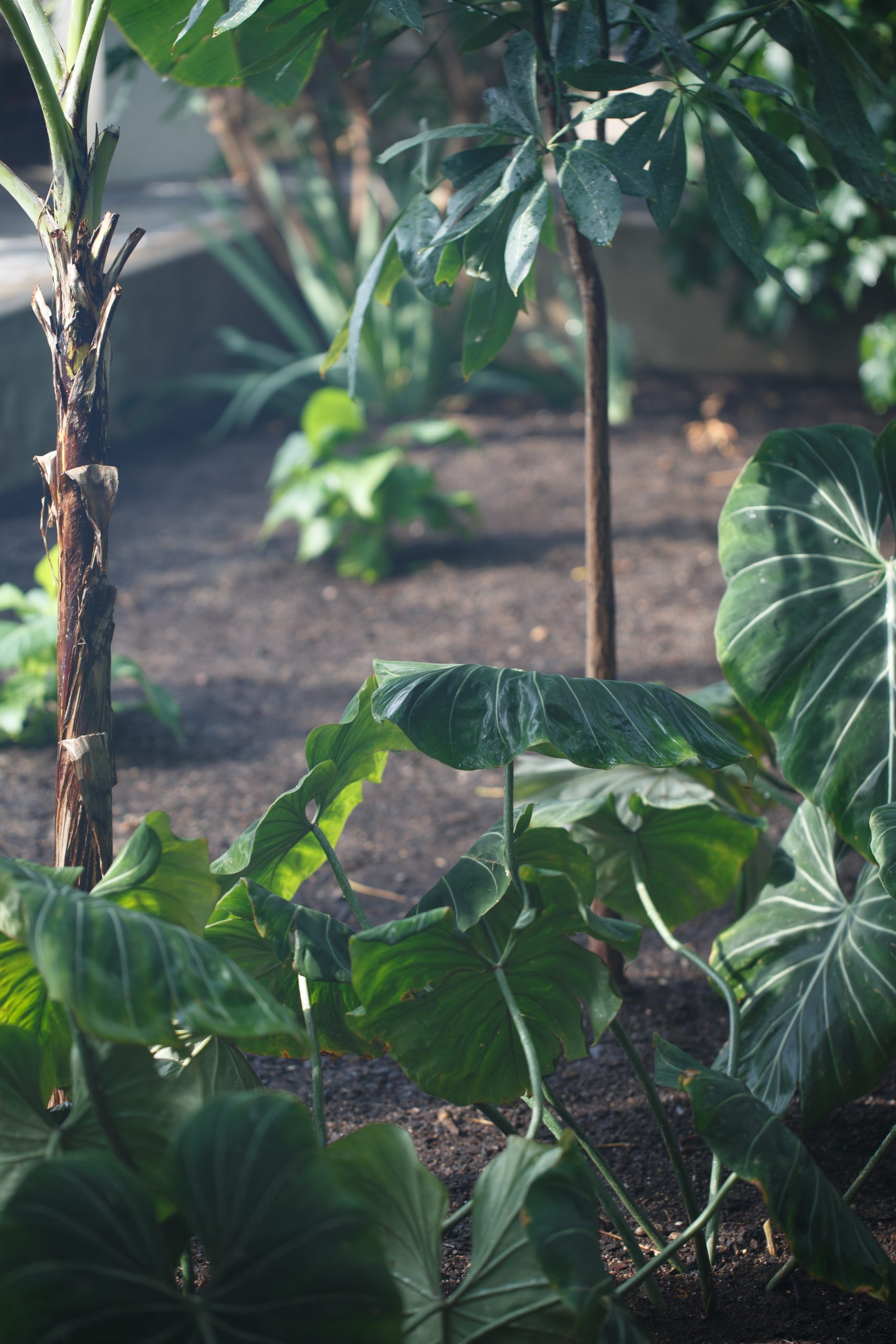
Private support secured by Como Friends is critical to making behind-the-scenes improvements that keep every corner of the Marjorie McNeely Conservatory healthy and thriving. This year, Como Friends’ funding will also support a new lighting system for the North Garden’s gorgeous collection of economic plants, a new sound system to improve the experience for visitors, and a new design plan to renovate and repair Como’s popular Victorian Water Garden pool. Thank you!
It’s been a busy season of new arrivals at Como Zoo
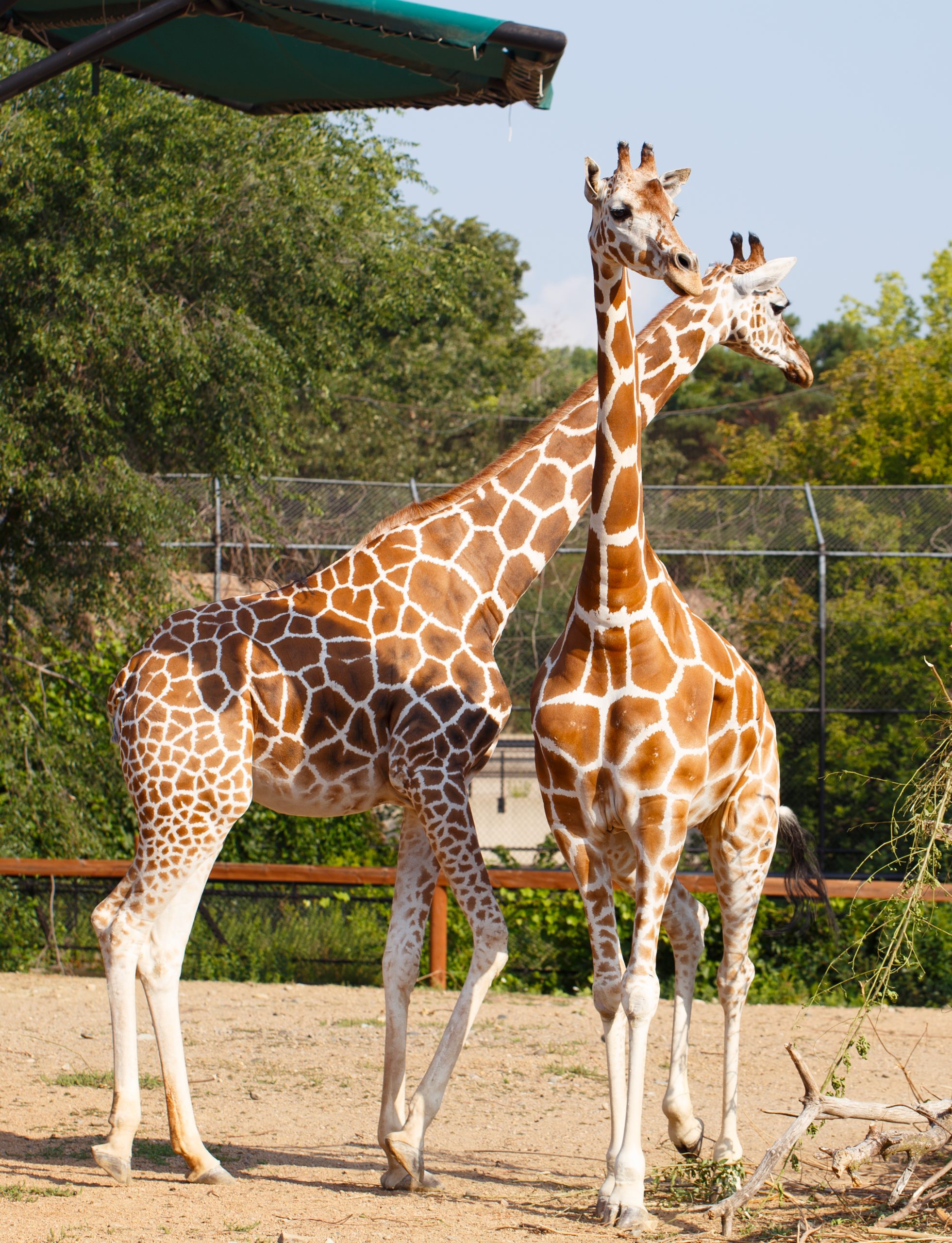
Stanley, Houdini, Mutambi, Stevie….there are a lot of new names to match to new faces at Como Zoo. Here’s a sneak peek of the new animals you should be sure to meet on your next visit.
-
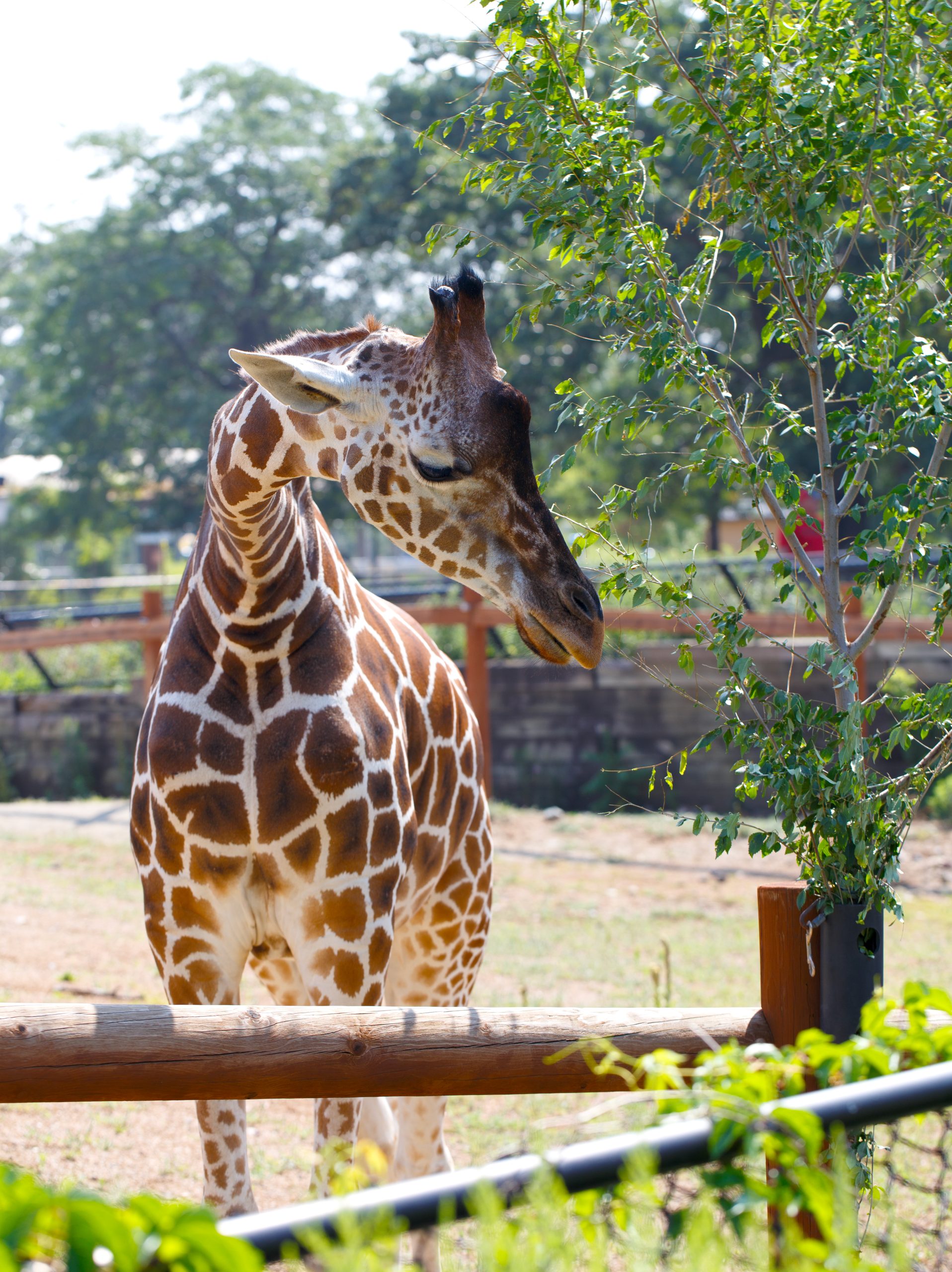
Zinnia
Species: Reticulated GiraffeSeven-year-old Zinnia arrived at Como Zoo this spring to be a companion to Clover, who lost her long-time friend, 23-year-old Daisy, earlier this year. Zinnia is easy to recognize, says senior keeper Jill Erzar, because of her “beautiful dark face and the cute freckles on her bum.” Though she’s got a laid-back vibe, keepers say she’s very food-oriented and is increasingly curious about the giraffe feeding station. So far, Zinnia and Skeeter, the habitat’s resident male giraffe, are giving each other lots of space. “Skeeter seems to be terrified of her,” Erzar says. “We have no idea what that’s about.”
-
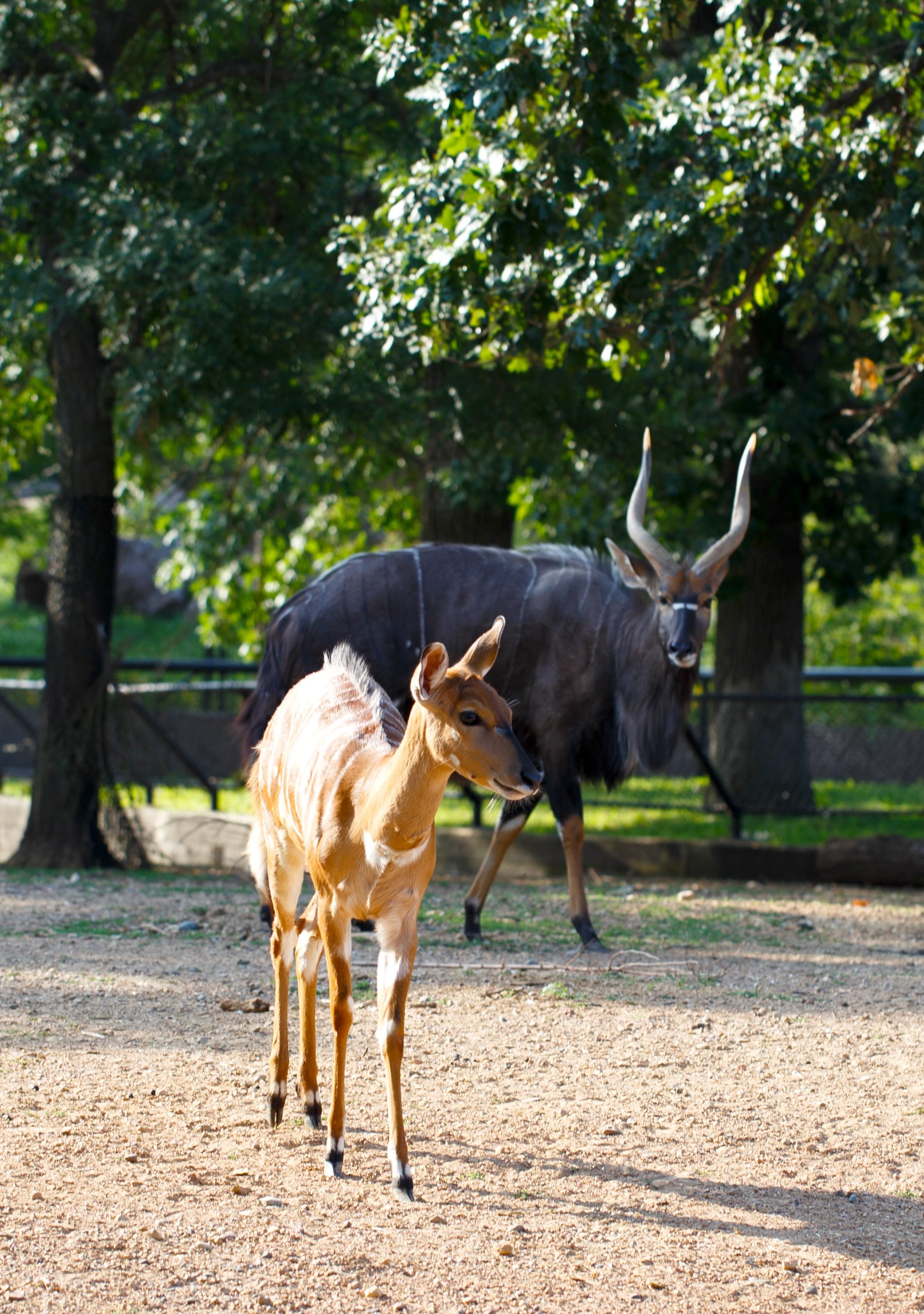
Stanley and Stevie
Species: NyalaThese spiral-horned antelopes native to southern Africa are known for their eye-catching coats and their gregarious nature. “The nyala are very calm, interactive and engaging,” says Erzar. “They don’t mind crowds either—they’re incredibly chill.” Brought to Como Zoo this spring as part of a species survival plan, the two young nyala may become a breeding pair if the chemistry is right. “We haven’t seen any behavior like that so far, but nyala males have a unique breeding display. The mane along their spine stands completely upright when they’re trying to attract a mate, so that’s something we’ll be looking out for in Stanley.”
-
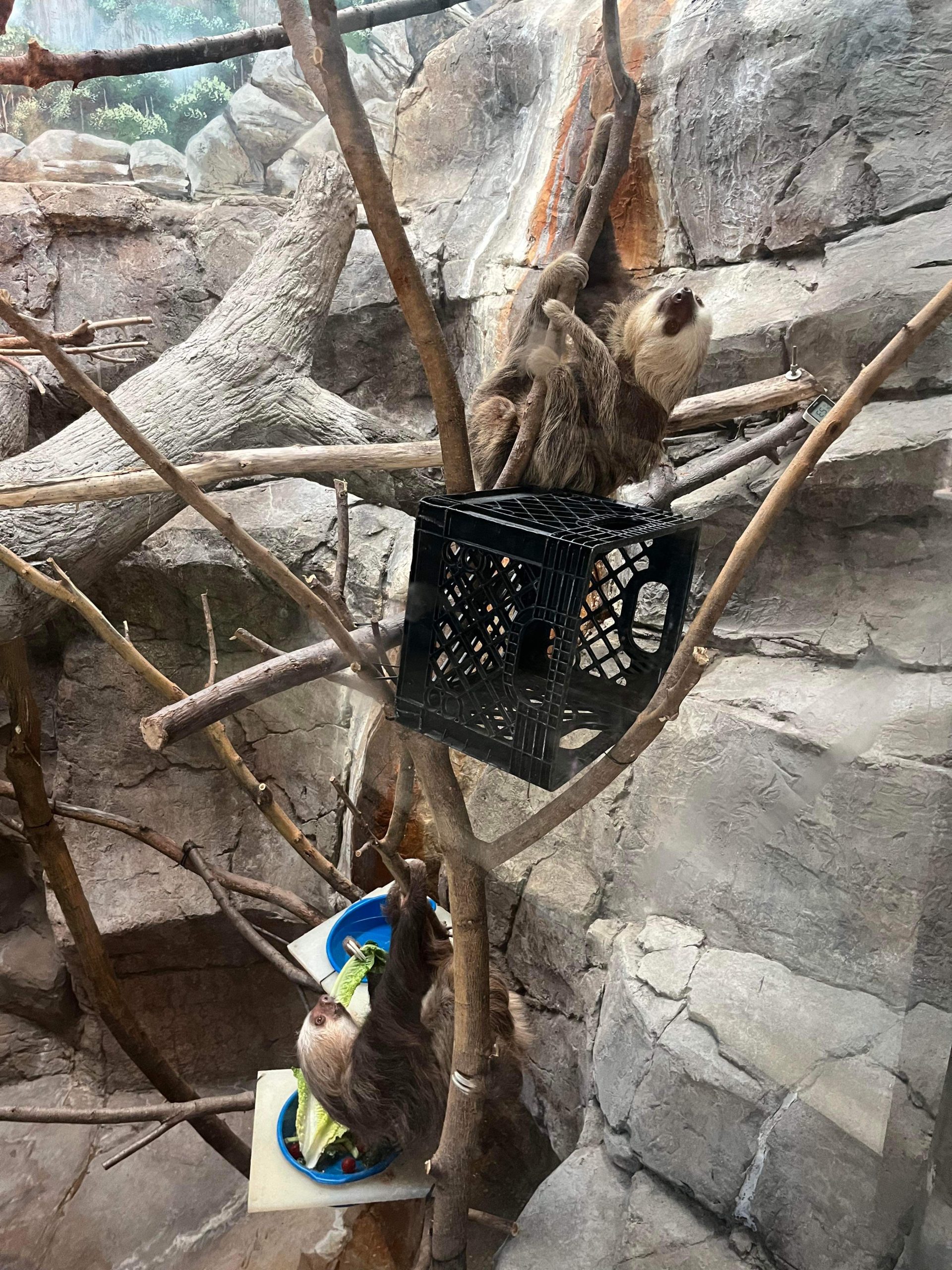
Ziggy and Sago
Species: Hoffmann’s Two-Toed SlothsThe milk crates you see strung up in the former lemur habitat have become a favorite hang-out spot for Ziggy, a 2-year-old male sloth who’s just moved in with his partner Sago, a 5-year-old female. The couple could become a breeding pair in the future, though, as zookeeper Mike Marazzi explains, the courtship process can be very slow. “Sloths are very private about things, so any breeding that takes place is usually going to happen overnight, and when they do have a baby, it could be a bit of a surprise to us since female sloths don’t always show their pregnancies with a visible weight gain,” he explains. Though they’re living in the primate building this summer, sloths are not related to their neighbors the orangutans and spider monkeys. Instead, they belong to the superorder Xenarthra, and share a family tree with anteaters and armadillos.
Photo taken by Zookeeper Michelle Hays.
-
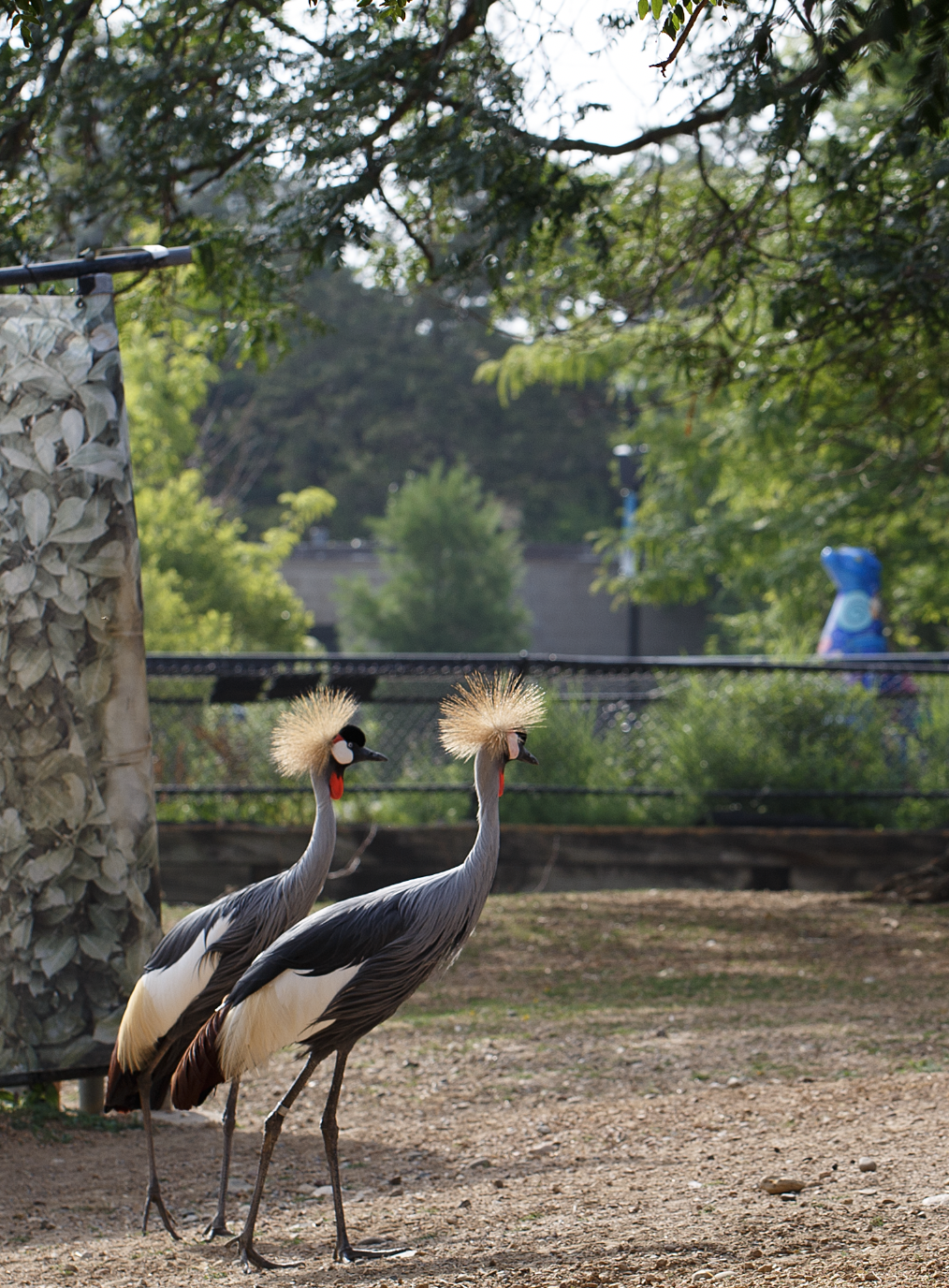
Houdini and Mutambi
Species: African Gray crowned craneHoudini, 13, and Mutambi, 5, are part of a species survival plan breeding recommendation for the gray crowned crane, the national bird of Uganda. But so far, Houdini is only doing his courtship dance for his keepers. “Houdini hasn’t quite figured out that his girlfriend is awesome,” Erzar says. You might notice the cranes stamping their feet—a behavior that helps flush insects and other prey out of the grass.
To learn more about the new faces at Como Zoo, check out the Fall edition of the Como Friends Insider. Delivered free to Como Friends’ members, this quarterly newsletter features behind-the-scenes stories about the people, plants and animals that make Como Park Zoo & Conservatory Minnesota’s most visited cultural destination. Become a member today!
the Summer Flower Show is always free to visitors, thanks to your contributions to Como Friends
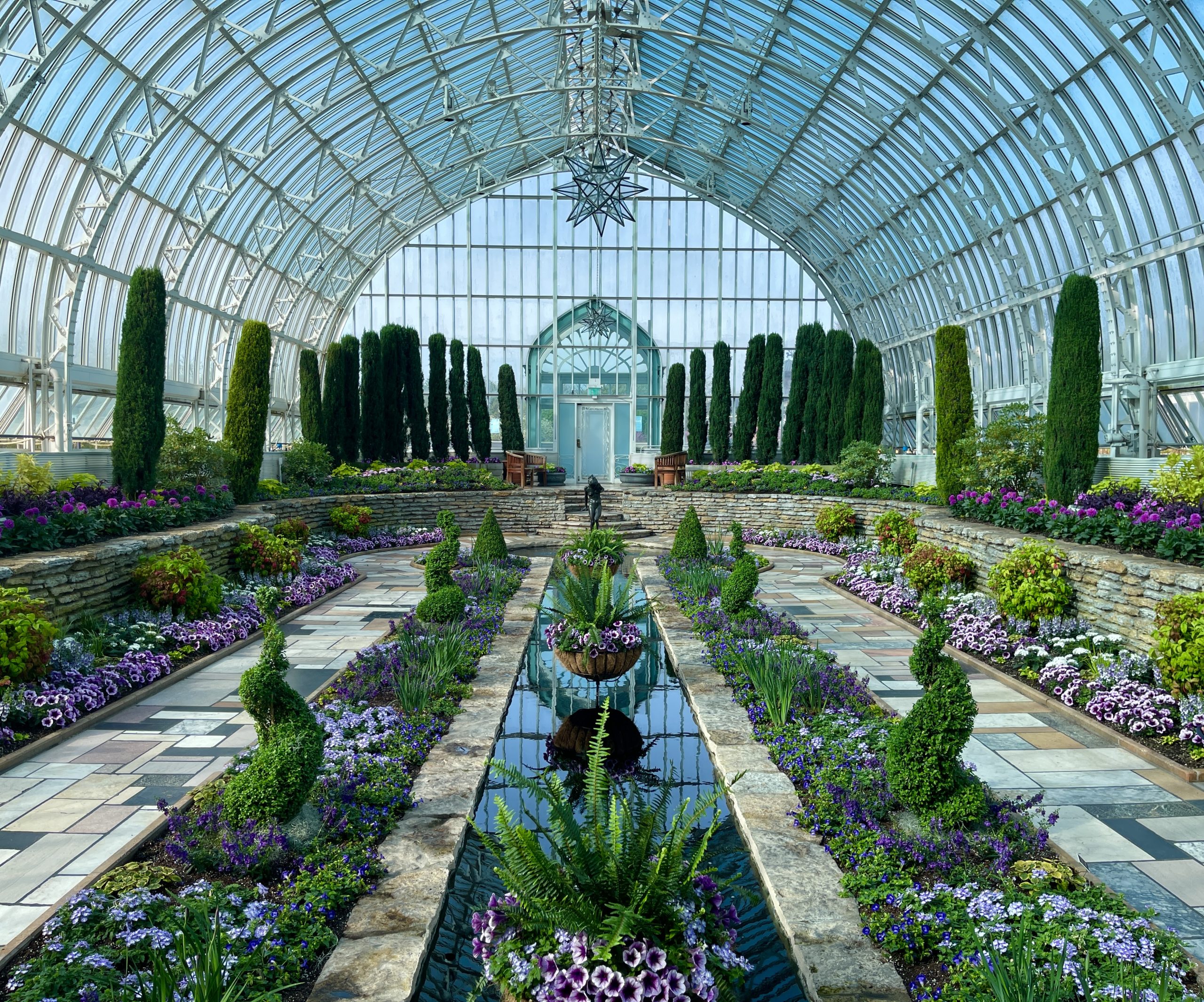
Summer starts early in the Sunken Garden, where the Marjorie McNeely Conservatory’s Summer Flower Show is already in bloom. Brimming with bright colors and new varietals, the year’s longest running flower show is a great place to find inspiration for your own backyard. Open from 10 a.m. to 6 p.m. every day, the Summer Flower Show is always free to visitors, thanks to your contributions to Como Friends.
